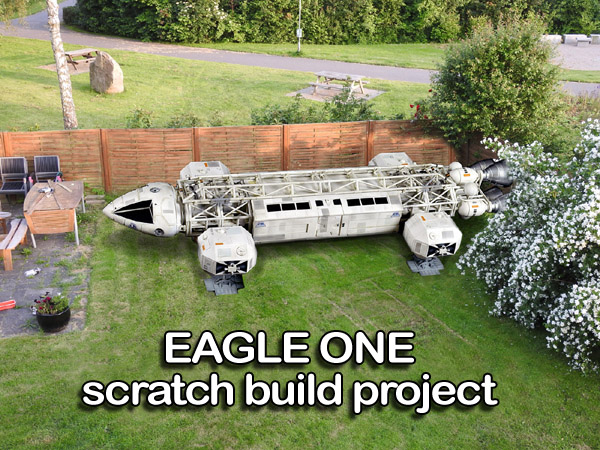
Latest update: July 7th - 2023
400 photos added
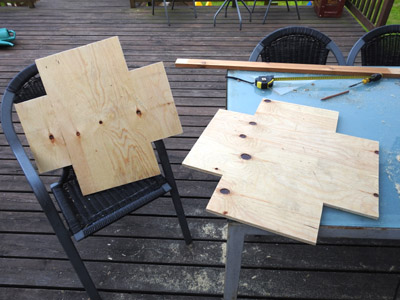 |
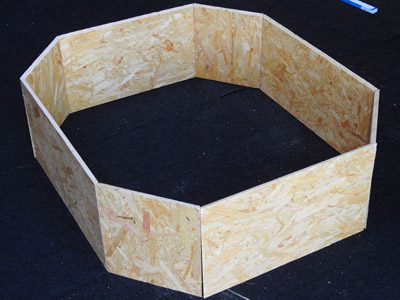 |
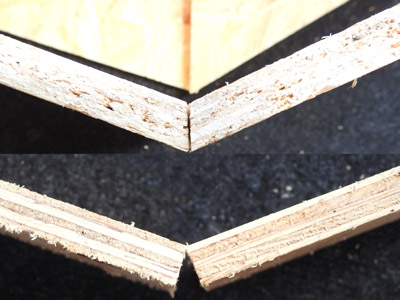 |
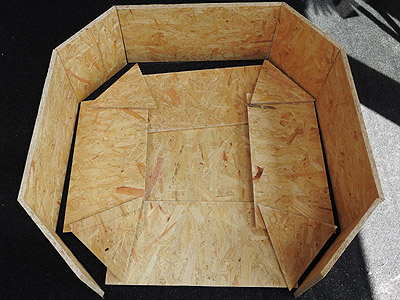 |
|
That's how it all started (July 3rd - 2019)
|
The vertical belt around a landing pod
|
Every cut has to be angled
|
More angled pieces
|
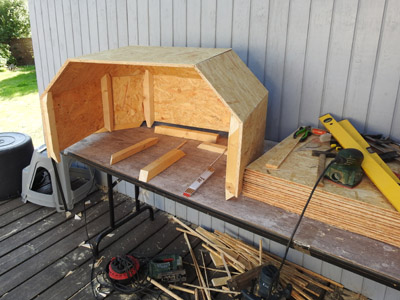 |
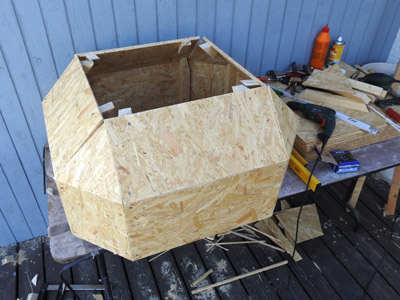 |
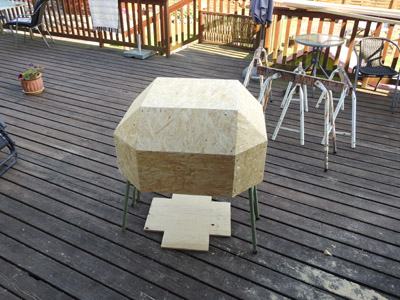 |
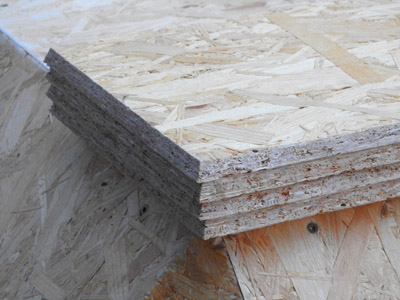 |
|
I REALLY could have used some more hands here...
|
The top of the pod is closing up
|
Top + middle belt of the pod
|
Angles
|
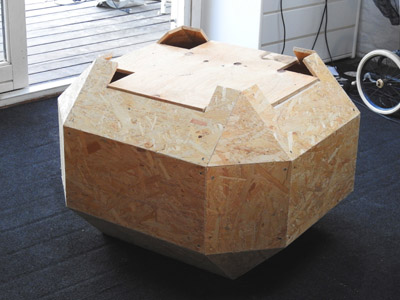 |
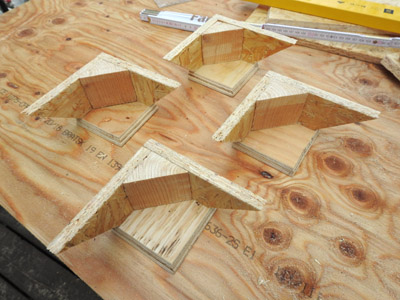 |
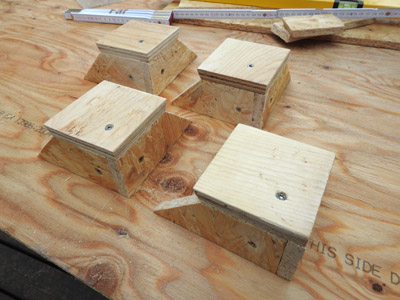 |
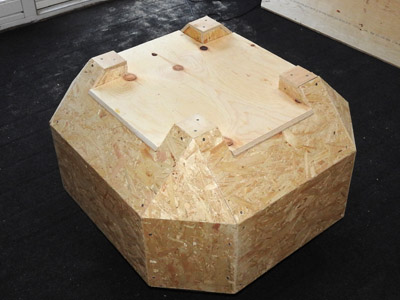 |
|
Down to the bottom of the case
|
Corner pieces...
|
...for the bottom finish
|
Like that... one basic pod done... three more to go
|
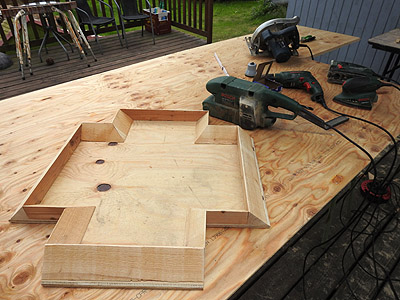 |
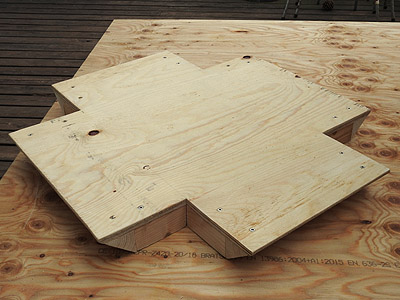 |
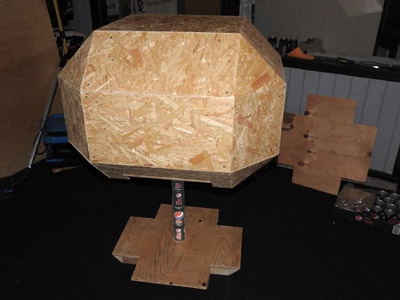 |
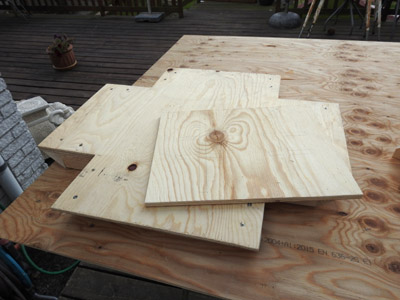 |
|
Thickness added for the landing foot
|
Even though it's hollow below, it looks as it should
|
Balance
|
Now to the top of the foot
|
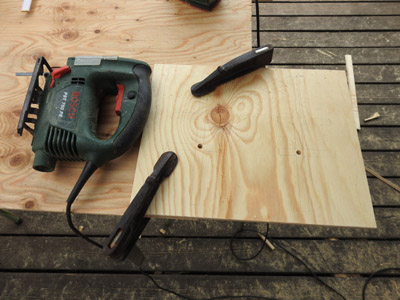 |
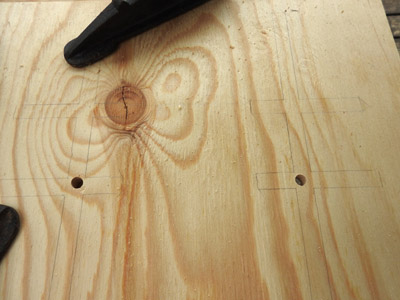 |
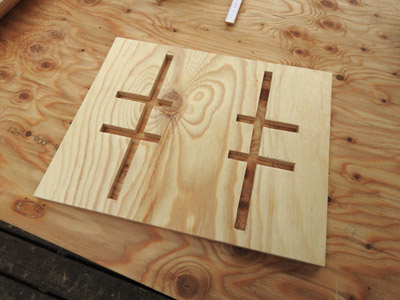 |
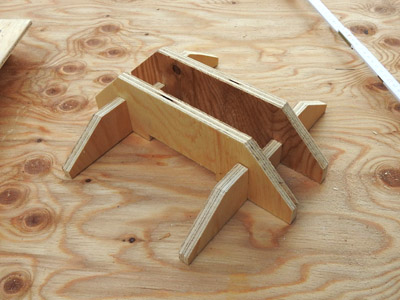 |
|
I do not have access to a cnc machine...
|
...so everything is done by hand
|
Strange patterns... cut with jigsaw
|
to fit this strange thing
|
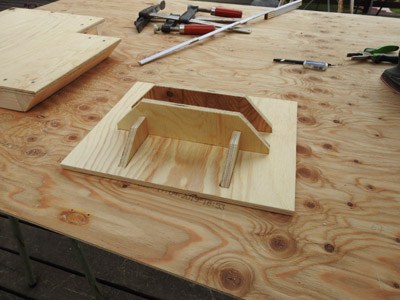 |
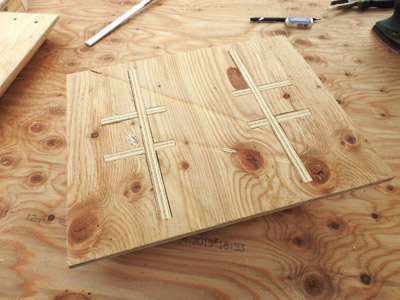 |
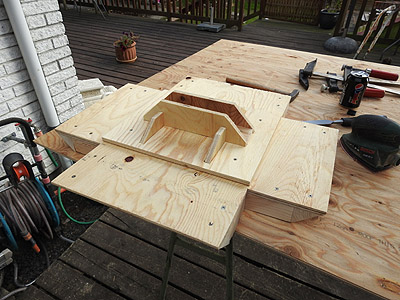 |
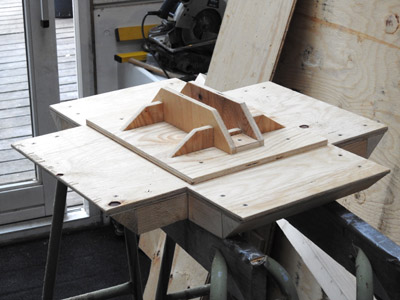 |
|
Fits (almost) like a glove
|
Bottom view
|
Mounted on top of the foot...
|
...it begins to look recognizable
|
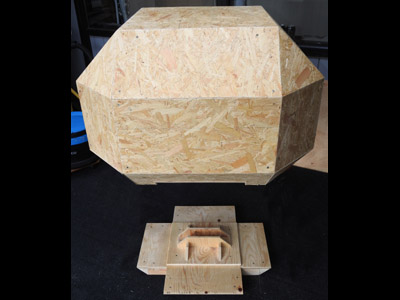 |
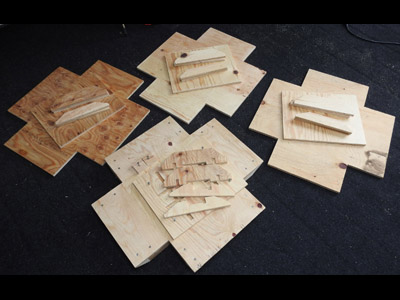 |
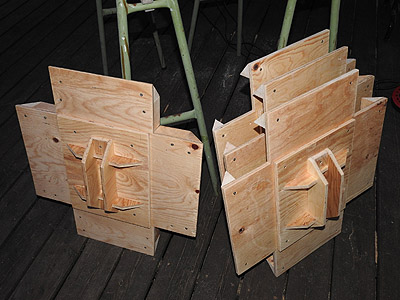 |
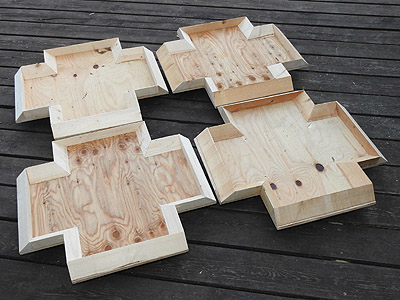 |
|
It's a kind of magic
|
On to the next three feet
|
Half done with the underside, and the lights went
out
|
All four feet now soled
|
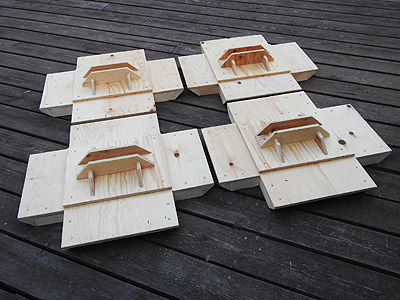 |
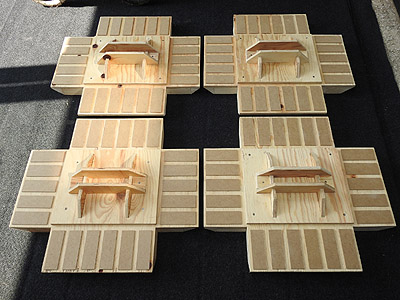 |
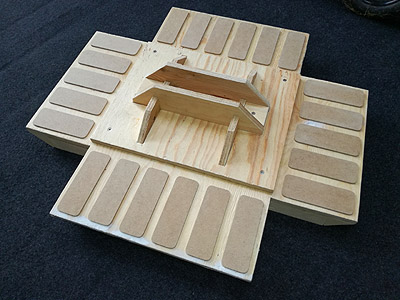 |
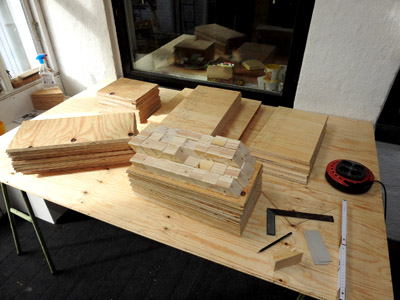 |
|
Looks better from above
|
88 'toes' measuered, cut and placed loosely
|
88 toes x 4 = 352 rounded corners... phew
|
Parts for the three remaining pods
|
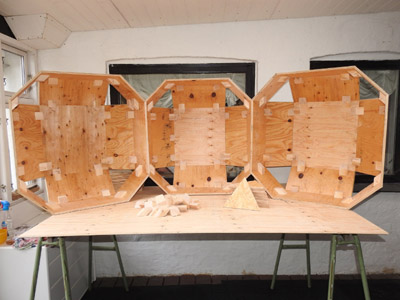 |
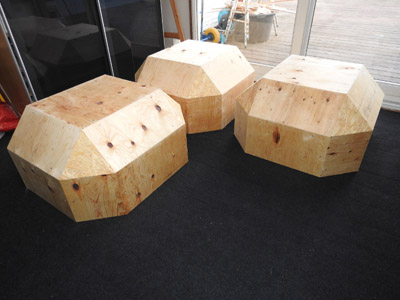 |
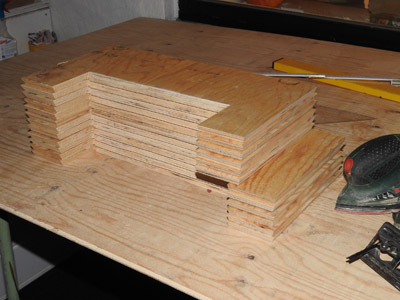 |
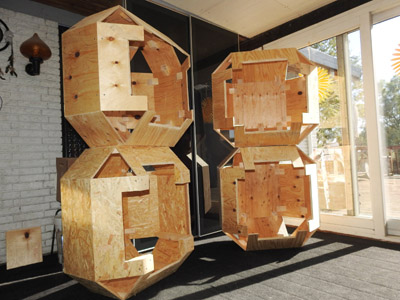 |
|
Just like that... a bit refined construction
|
The top finished
|
Cut aways for the lower part sides
|
Fitted
|
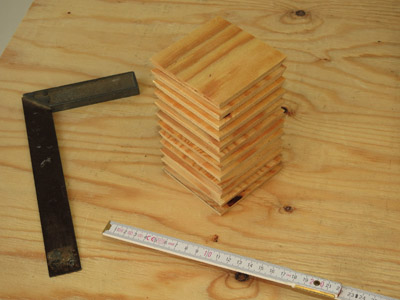 |
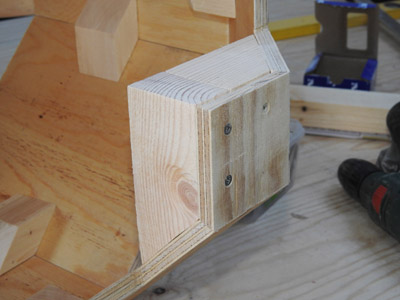 |
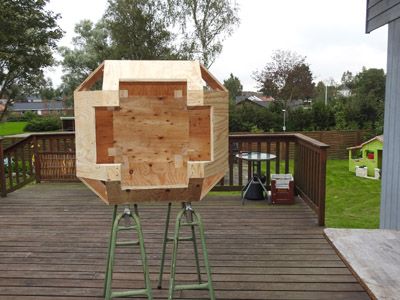 |
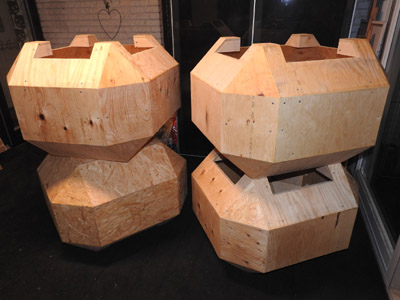 |
|
Now the lower finishing parts... more feet
|
...with supporting sides
|
...done
|
All corner pieces and side panels now glued together
|
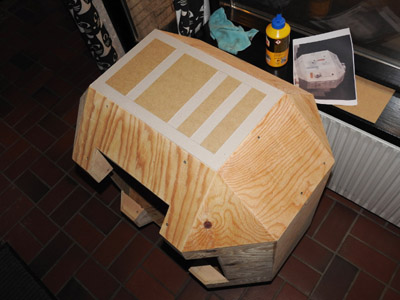 |
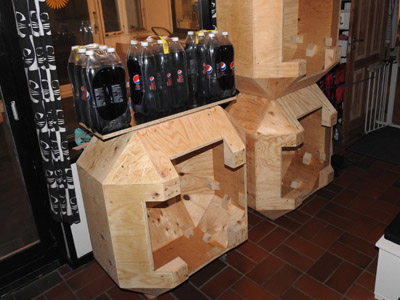 |
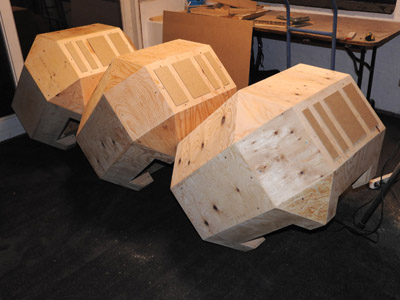 |
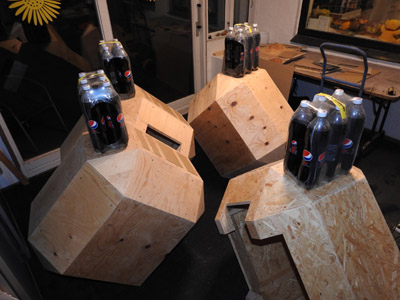 |
|
Details cut for the vertical sides. Placed with template
|
MAX pressure for max glue effect
|
Three on line
|
More pressure delivered by Max
|
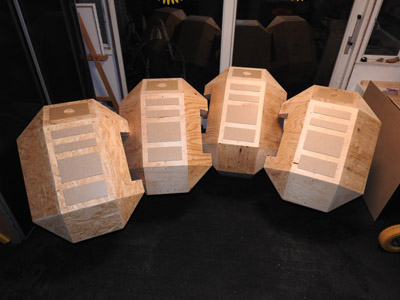 |
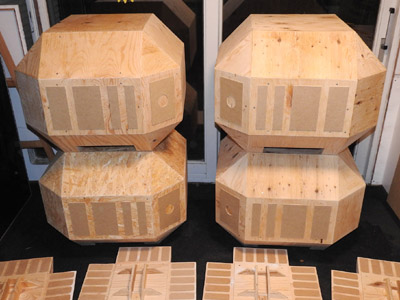 |
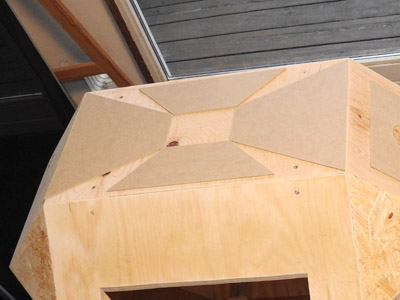 |
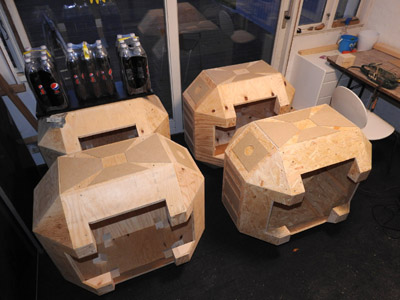 |
|
Start of decoration. The pod details. One side...
|
...the other two sides. Top sides next...
|
Trapez
|
Trapez x 16
|
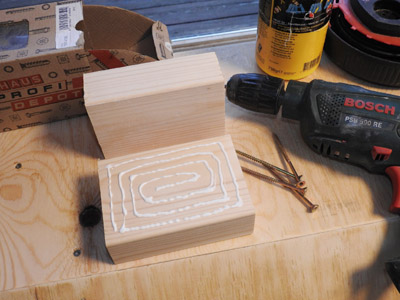 |
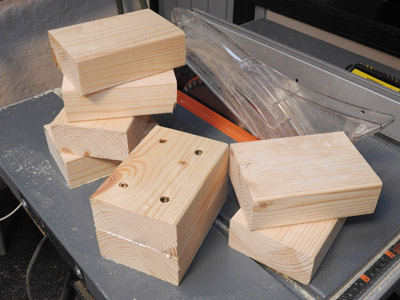 |
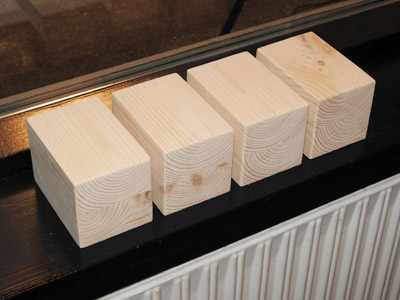 |
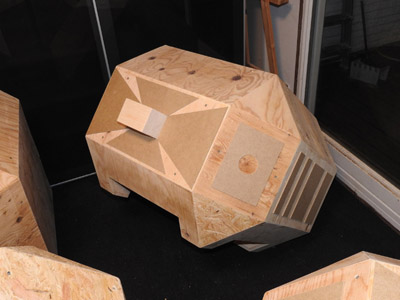 |
|
I did not have wood that thick...
|
...so glue and screw...
|
...made nice blocks
|
Nose...!?!
|
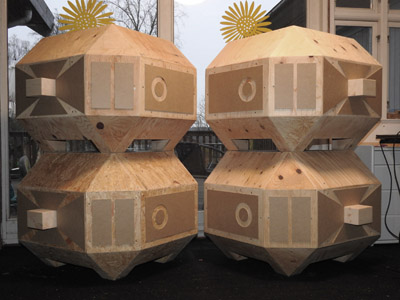 |
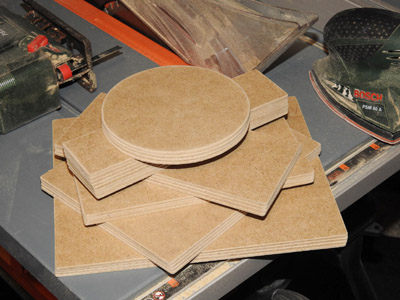 |
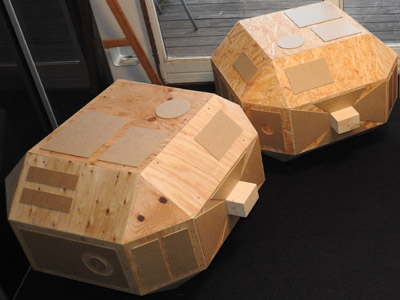 |
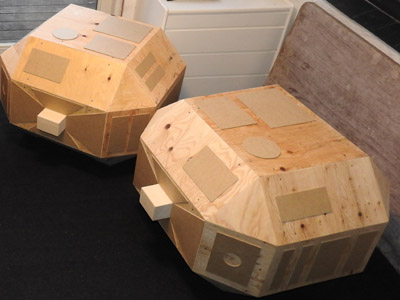 |
|
4 noses
|
Details cut with jigsaw for the top part.
|
Glued on... left wing...
|
...and right wing
|
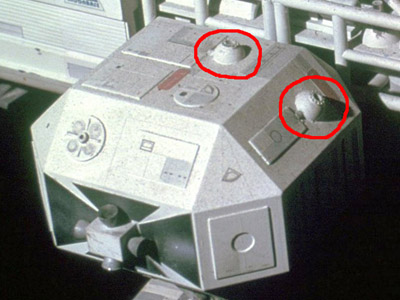 |
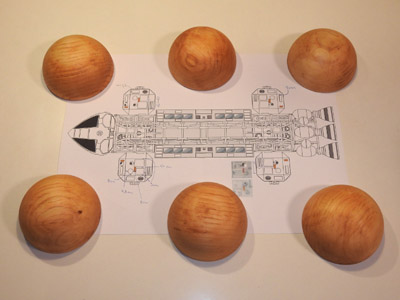 |
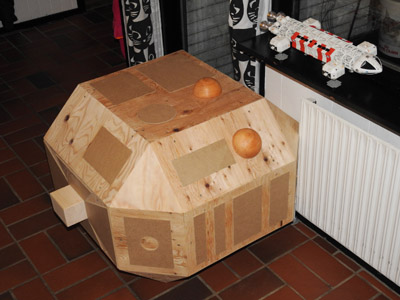 |
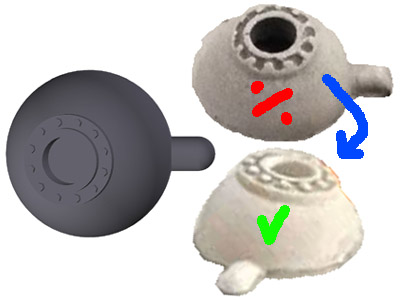 |
|
Now to these little fellas... the Gemini parts
|
I had six half spheres hand made (not by myself)
|
Maybe slightly too big, but I think it is okay.
|
Daniel Prud'Homme helped me with the details
|
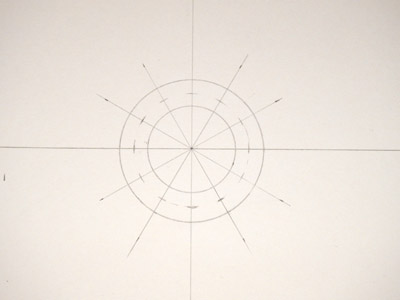 |
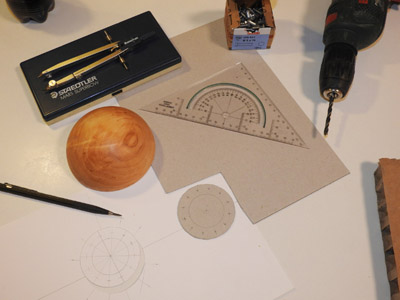 |
 |
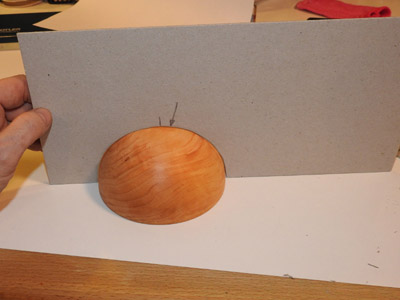 |
|
Good old technical drawing
|
Calculating and measuring...
|
Template... made... for the 12 holes for the bolts.
|
One more template for the off-center placement.
|
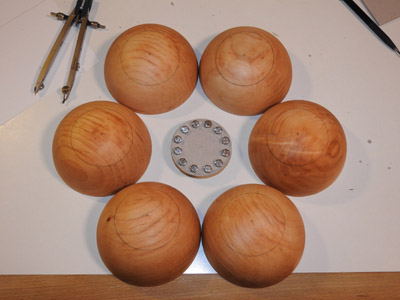 |
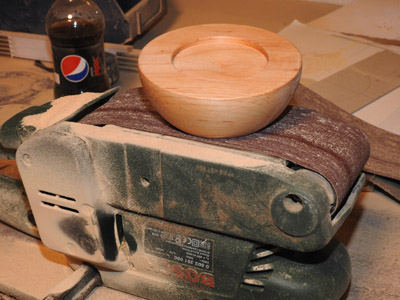 |
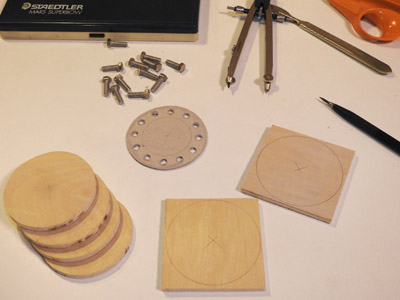 |
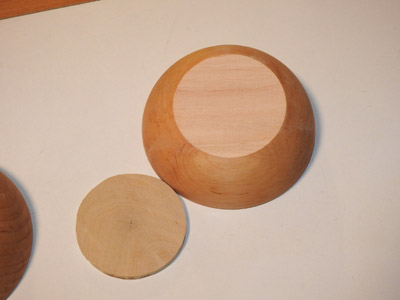 |
|
The six half spheres got marked...
|
...and on with the band grinder.
|
6 discs measured and cut.
|
One ready to mount.
|
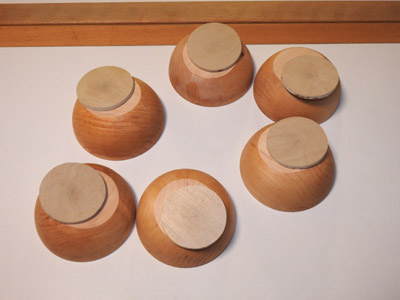 |
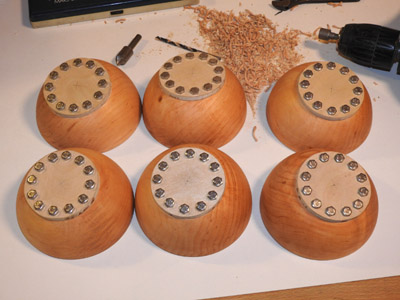 |
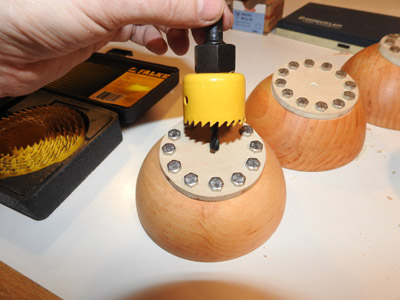 |
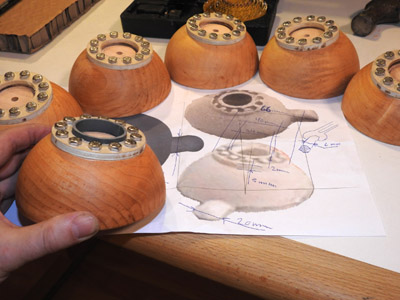 |
|
...and 5 more
|
72 holes drilled and 72 bolts mounted
|
Large center hole drilled.
|
Not the correct tube yet... but we're getting there.
|
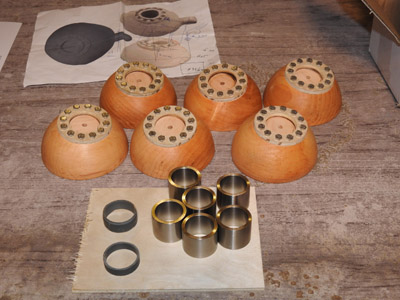 |
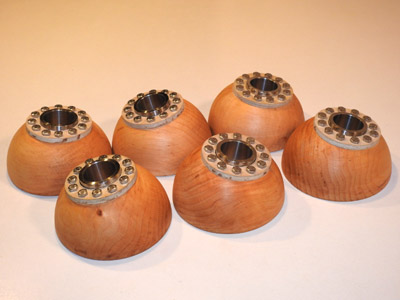 |
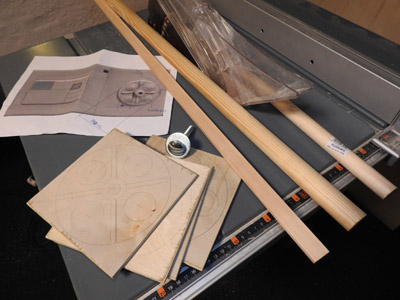 |
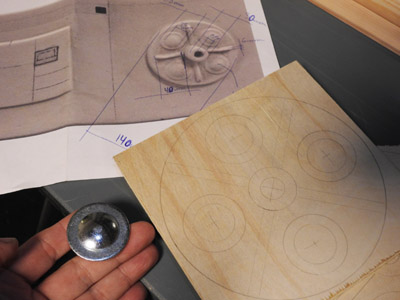 |
|
Stainless steel tube for the centre
|
Inserted
|
Now for the Saturn V part
|
It took some thinking... to think the design out
|
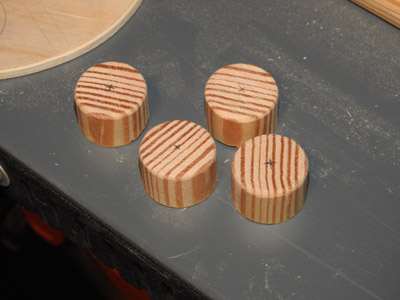 |
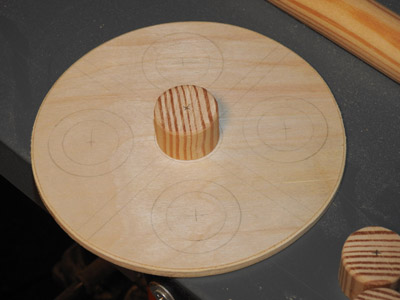 |
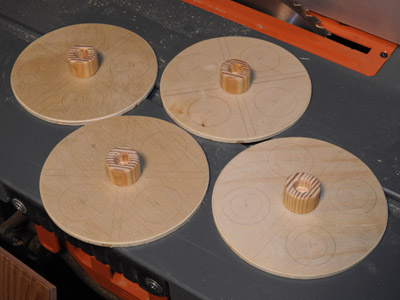 |
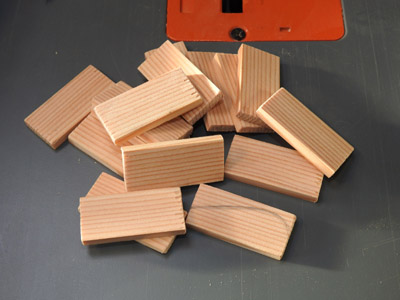 |
|
Small cylinders cut from a stick
|
for another nose
|
Noses with holes
|
Rough wings
|
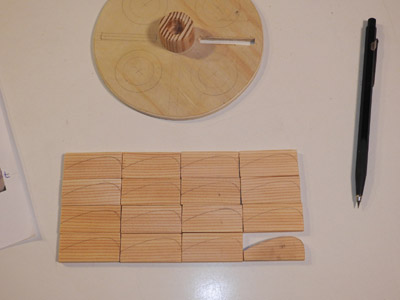 |
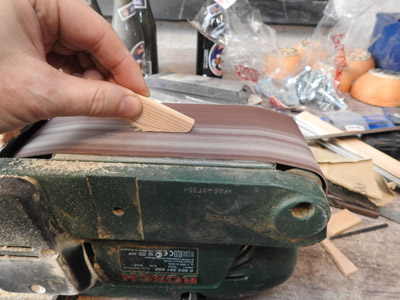 |
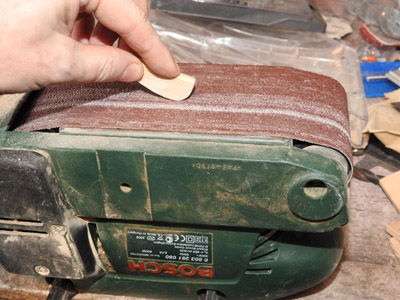 |
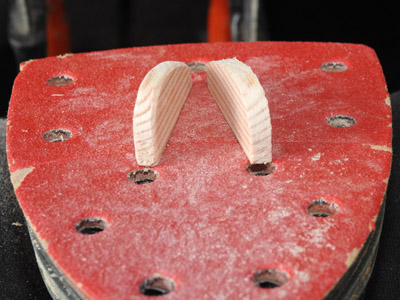 |
|
A model was created
|
gonna watch my fingertips
|
All survived
|
Then a little grinding with the grinding mouse
|
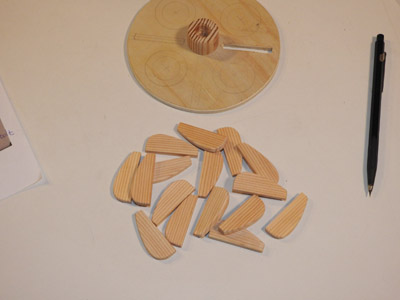 |
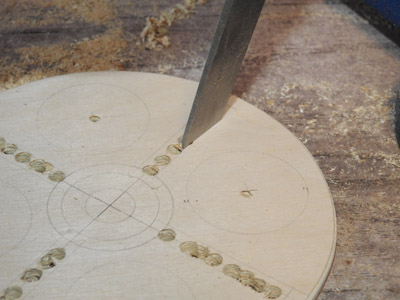 |
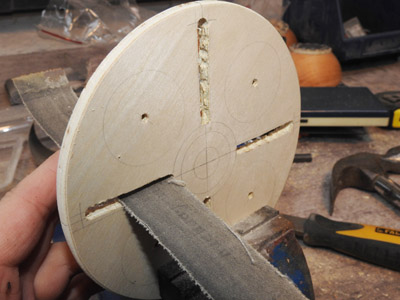 |
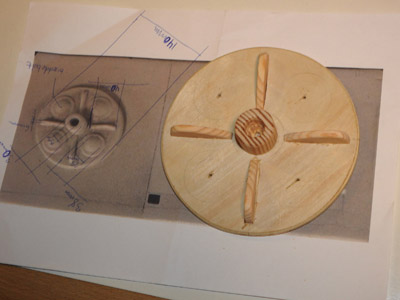 |
|
16 small wings
|
Now make some place for them
|
Handmade... takes time
|
But the time goes by - as time does
|
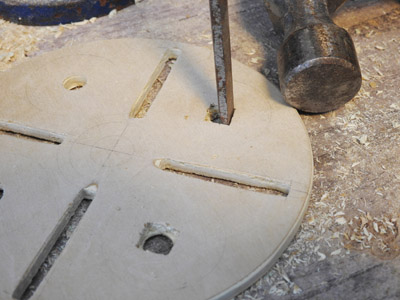 |
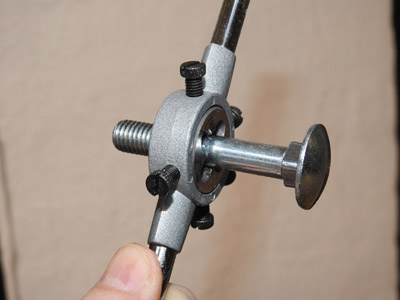 |
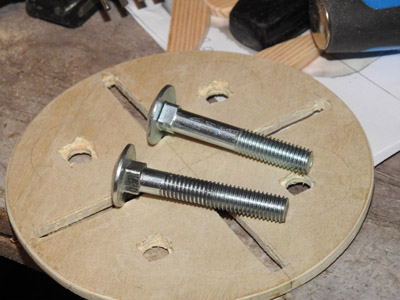 |
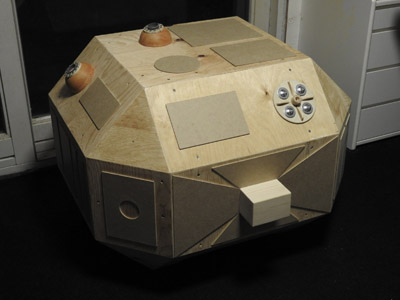 |
|
These holes wasn't as easy as I thought
|
Because the bolts had square shape beneath the head
|
And the thread wasn't cut all the way up either
|
But finally...!
|
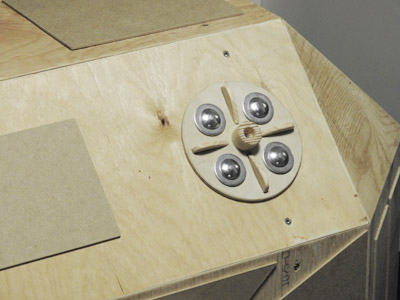 |
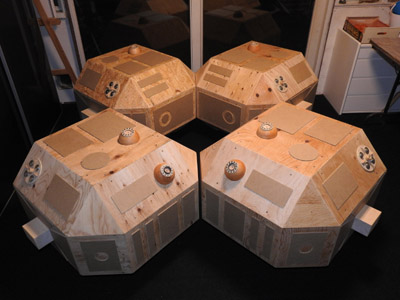 |
 |
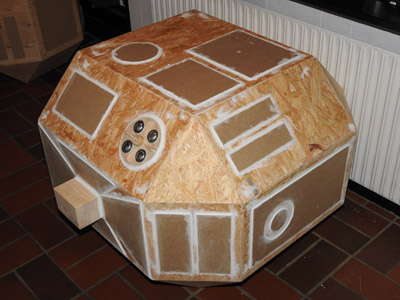 |
|
Looks as it should - I think
|
A status parade
|
All cracks, screwholes and sides...
|
...padded up (one pod only... for now)
|
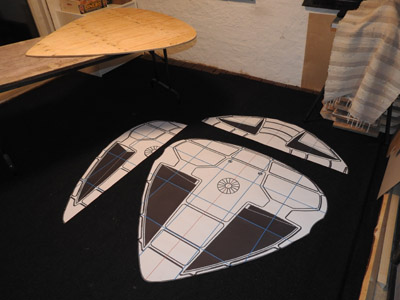 |
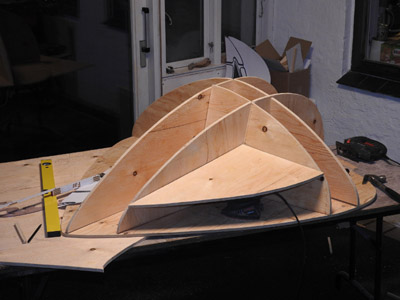 |
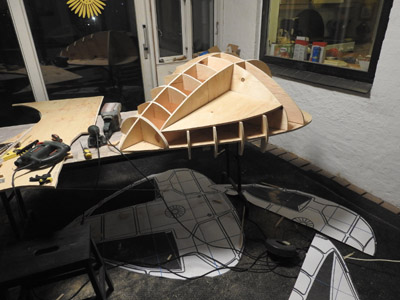 |
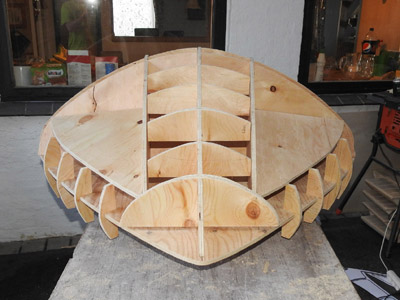 |
|
A3 prints taped together for the Command Module.
|
Measuring en masse...
|
Cutting...
|
Fitting...
|
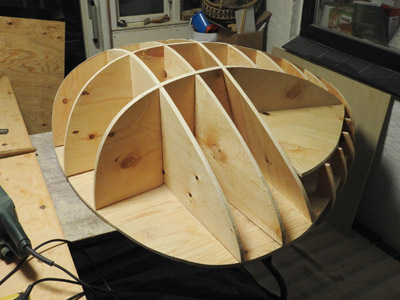 |
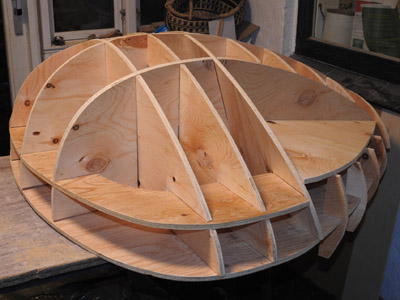 |
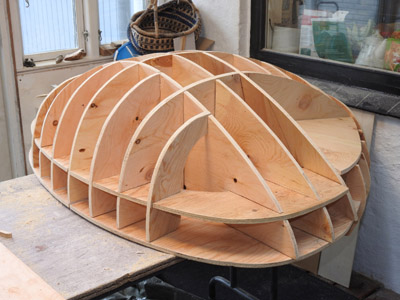 |
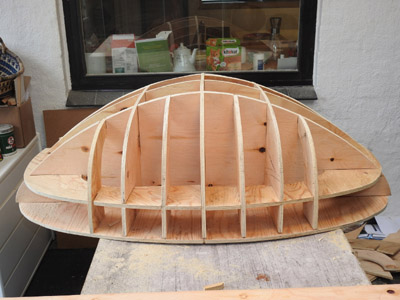 |
|
The back side of the CM
|
Horizontal ribs added...
|
...and vertical ribs added
|
Direct back view
|
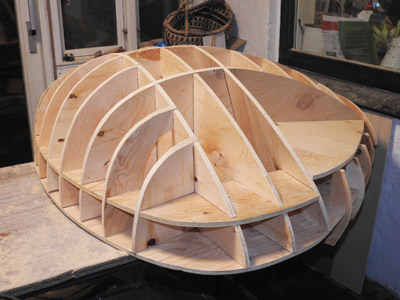 |
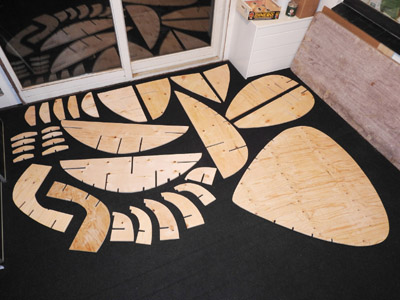 |
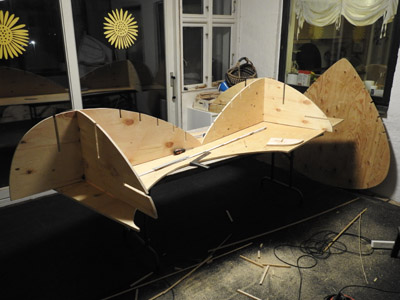 |
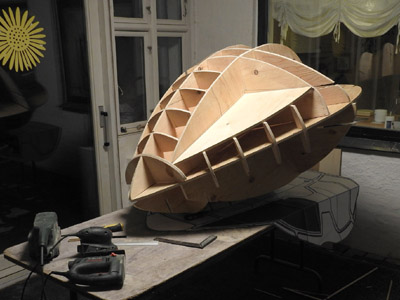 |
|
Two more vertical...
|
The puzzle pieces taken apart to double up...
|
...for the 'downunder' part
|
Status March 13th - 2020
|
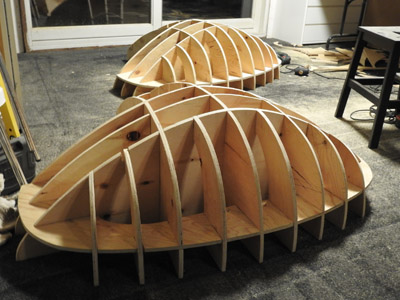 |
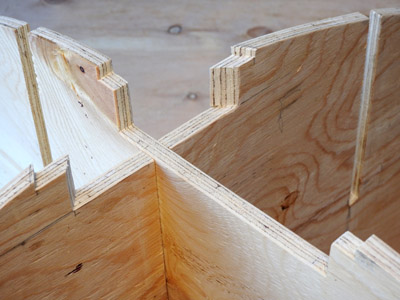 |
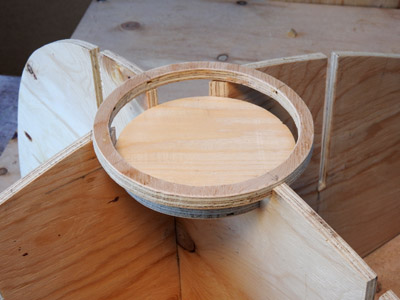 |
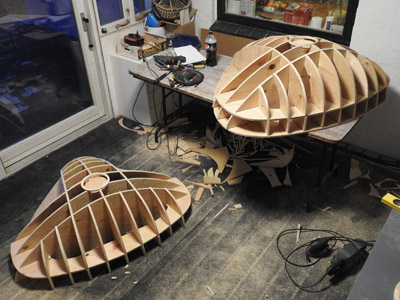 |
|
2 x back side ribs finished
|
Cutout for the top (or bottom) alu 'disc'
|
Support for the alu 'disc'
|
Both top and bottom 'disc-housing' done
|
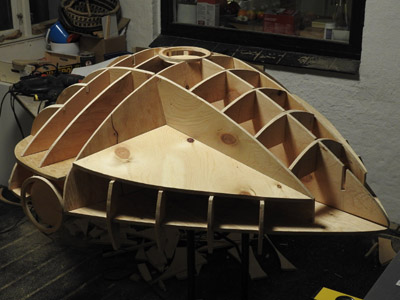 |
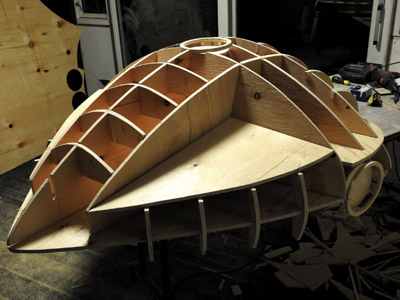 |
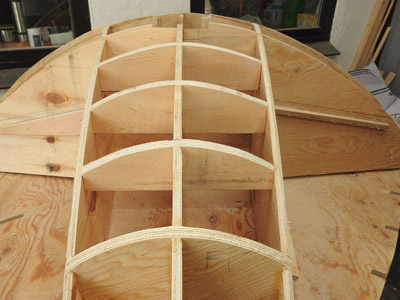 |
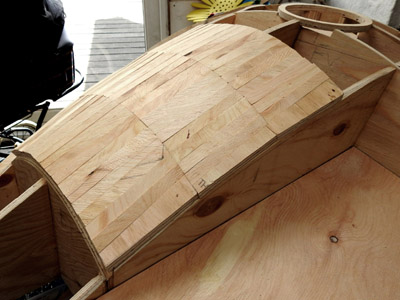 |
|
One side disc (housing) done...
|
...other side disc (housing) done
|
all panels are now glued together - and edges sanded...
|
...sanded to make a smooth surface for... sticks!
|
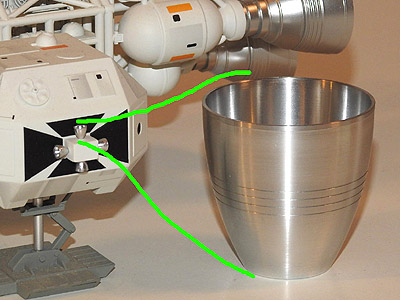 |
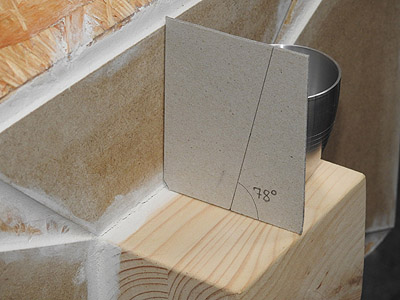 |
 |
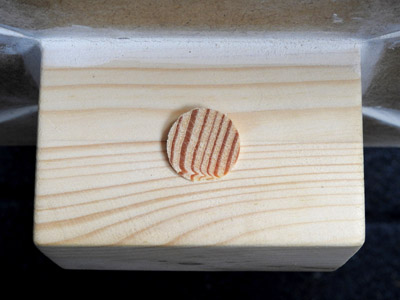 |
|
I have tried to copy these as close as possible
|
The boosters on the 44" studio Eagle 1 are angled
|
78 degrees.... circa
|
A thin wooden disc, very fragile to cut, do the trick
|
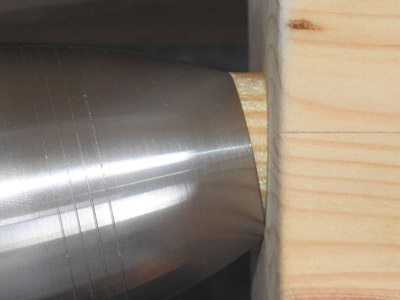 |
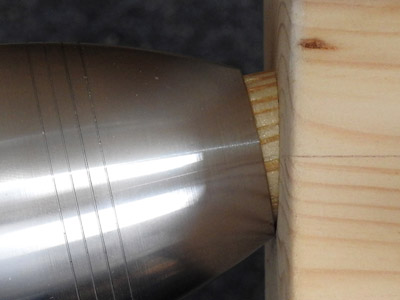 |
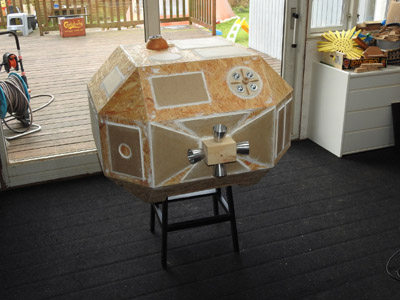 |
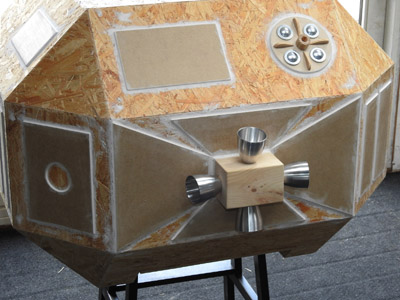 |
|
It do matter how the discs are placed.
|
90 degrees flat on the block... or on the bell...
like this
|
These really looks nice on the pod
|
deserves a closer look
|
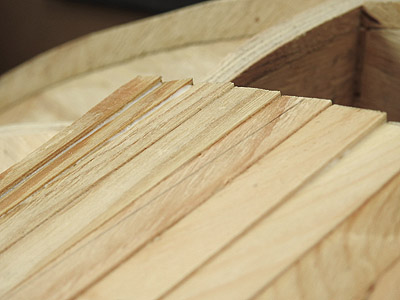 |
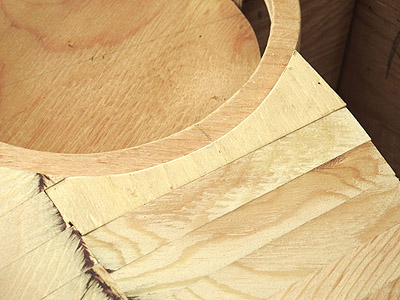 |
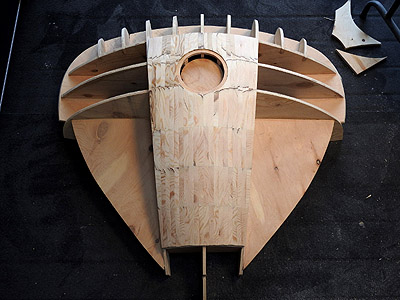 |
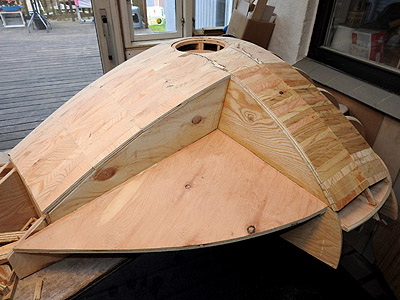 |
|
Back to the sticks... lots of sticks... looking rough...
|
...until sanded down. No sticks are the same shape.
|
Top view... middle section of sticks sanded down.
|
One flank of sticks glued on... not yet sanded.
|
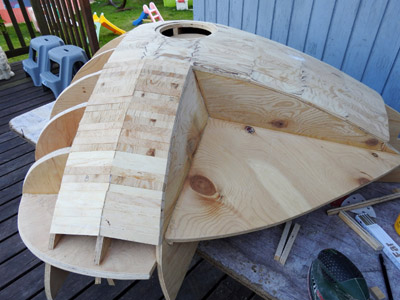 |
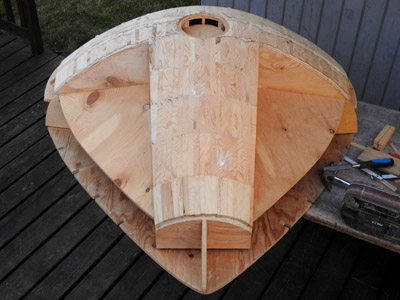 |
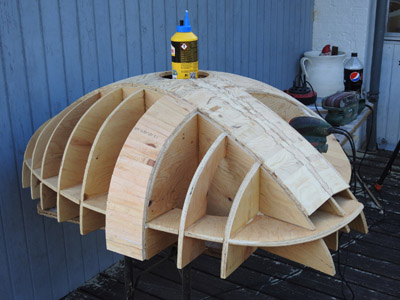 |
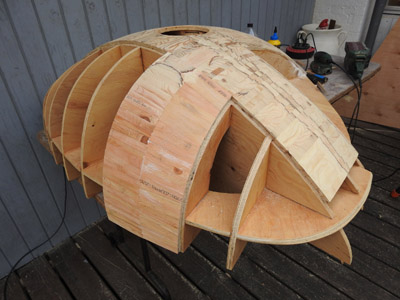 |
|
Opposite side flank... not yet sanded.
|
A front row of sticks added.
|
And now to the back side of the Command Module.
|
Two columns.
|
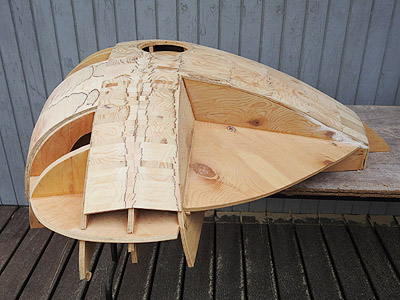 |
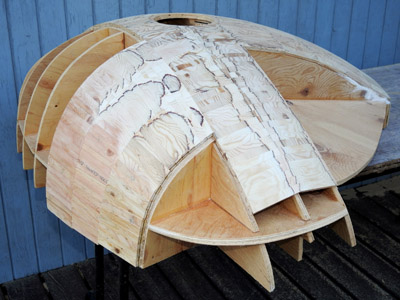 |
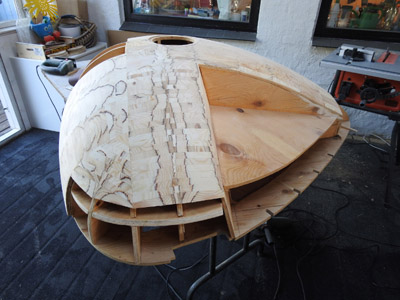 |
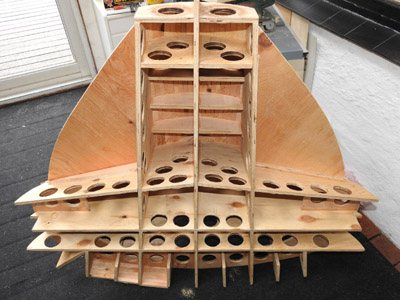 |
|
Right flank sanded
|
Three columns.
|
Corner part and sanding.
|
Necessary weight reduction.... for my back!
|
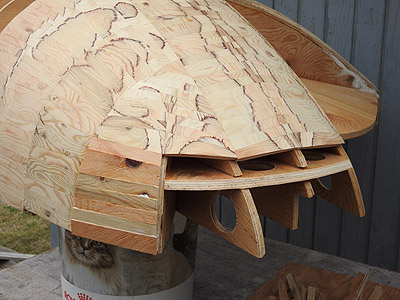 |
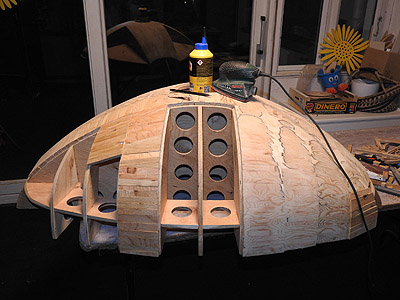 |
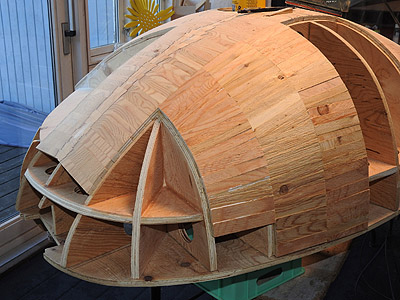 |
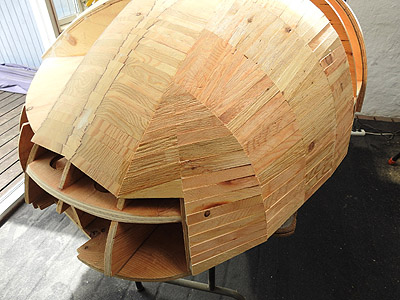 |
|
More sticks... to the right...
|
...to the left
|
Left corner...
|
...closing up.
|
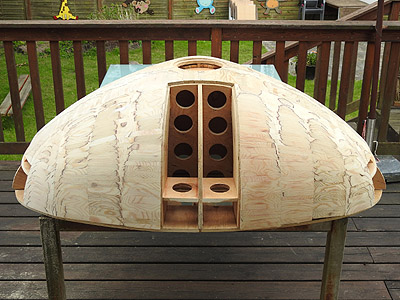 |
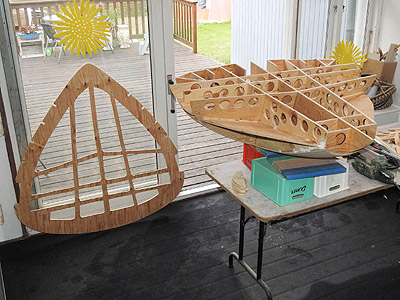 |
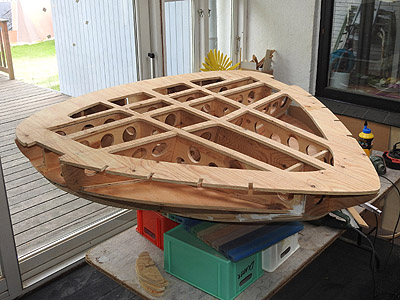 |
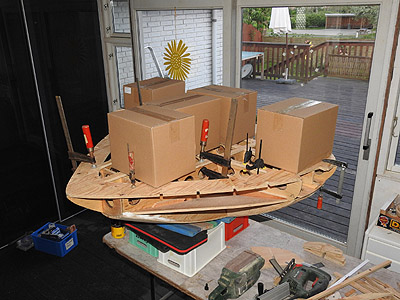 |
|
Left and right back side sanded smooth.
|
The middle section panel also weight lightened.
|
Placed... and glued on.
|
Pressure to secure tight fit.
|
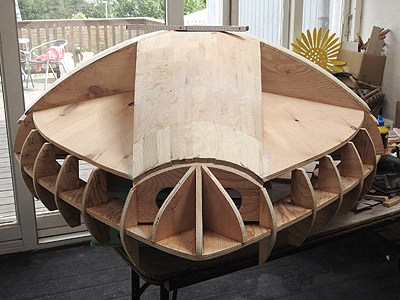 |
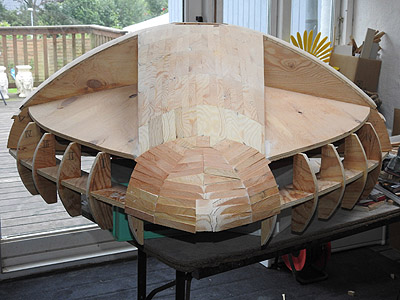 |
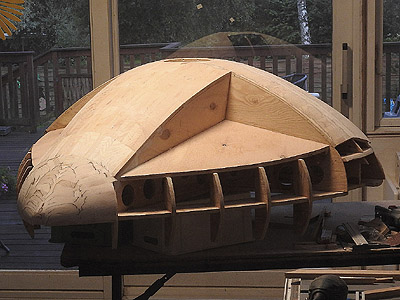 |
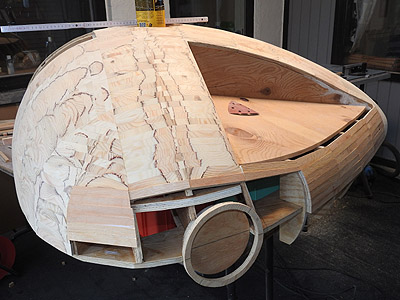 |
|
Side ribs in place and glued on. Additional nose panels.
|
Nose tip sticks... rough...
|
...and sanded down.
|
Right side... under window section sticks.
|
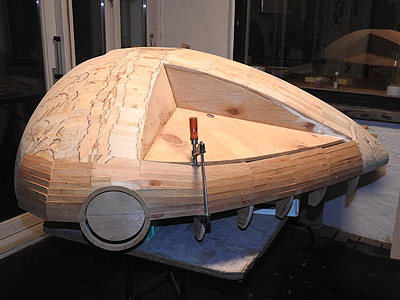 |
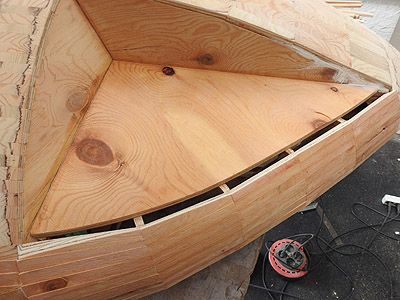 |
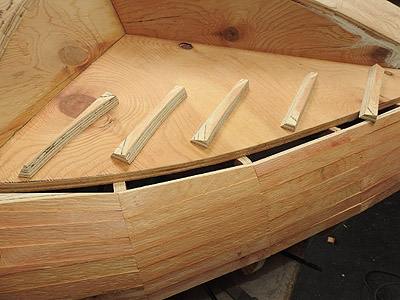 |
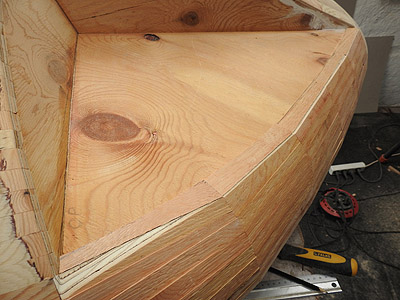 |
|
Right side sticks completed.
|
Crack at window...
|
...every stick shaped independently.
|
Smooth fit.
|
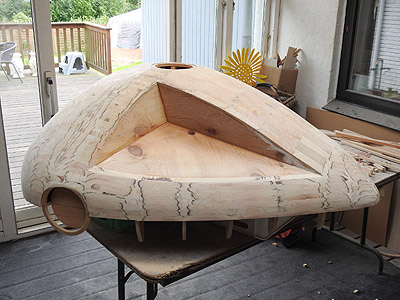 |
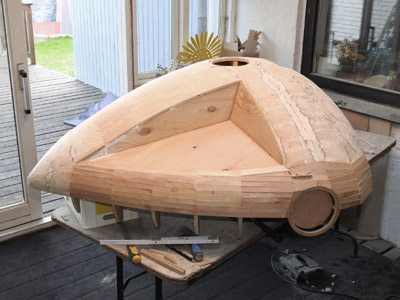 |
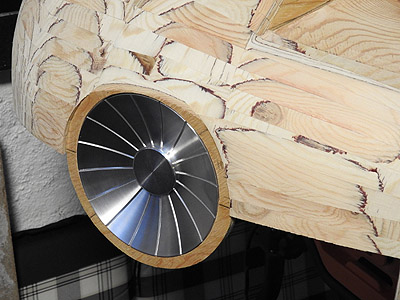 |
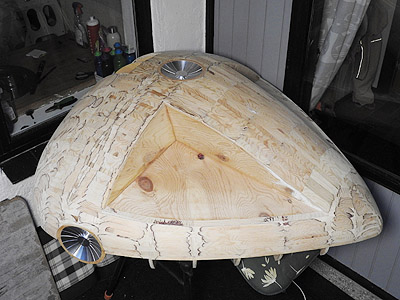 |
|
Right side sticks sanded.
|
Left side sticks before sanding.
|
Suddenly some 'bling-bling' arrived for the CM.
|
They really decorates beautifully!
|
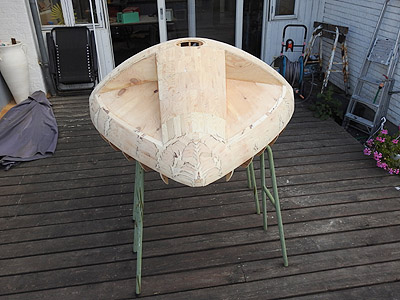 |
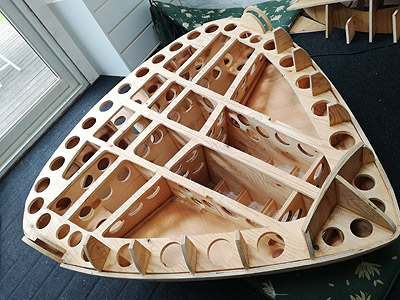 |
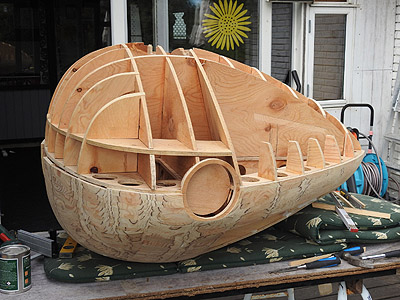 |
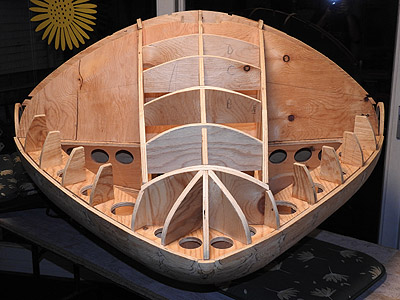 |
|
Top side done for now.
|
More weight reduction.
|
Opposite side panels in place.
|
Nose tip panels... ready for sticks.
|
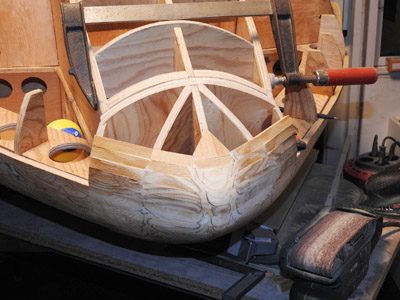 |
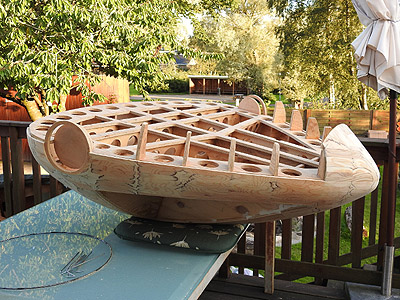 |
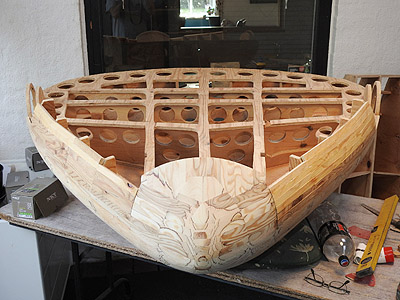 |
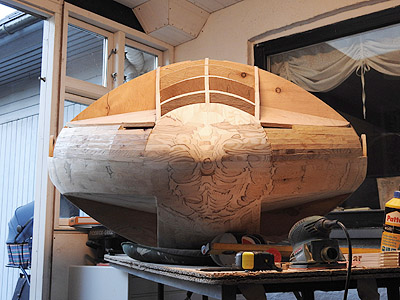 |
|
Small special shaped sticks.
|
2 x 57 = 114 sticks used for the nose tip.
|
Left and right flank of oblong sticks.
|
The horizontal belt are too thick. Gotta adjust, but
how?
|
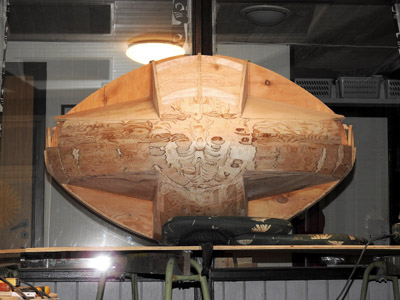 |
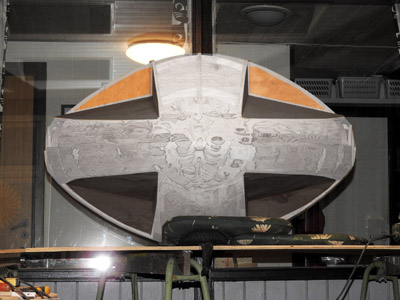 |
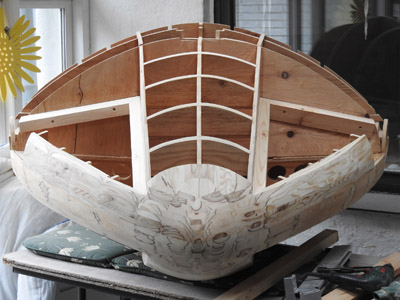 |
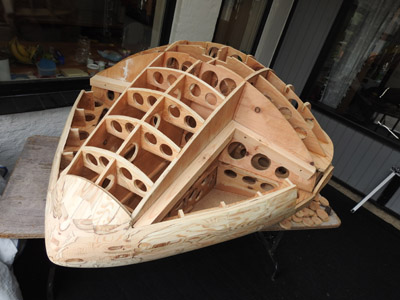 |
|
Some heavy sanding helped... but was it enough!?
|
A little colour added (in Photoshop).
|
Batten supports for the removable downside triangles.
|
Lots of holes drilled for weight reduce.
|
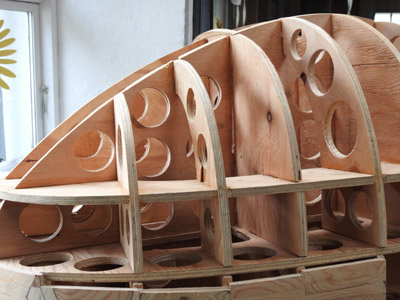 |
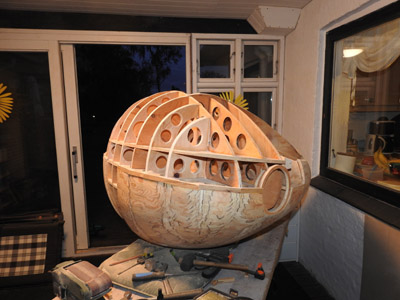 |
|
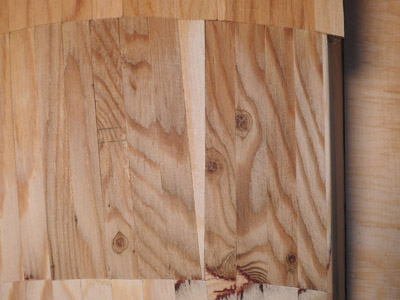 |
|
Also at the back.
|
Ready for sticks adding...
|
Going.
|
All different shapes.
|
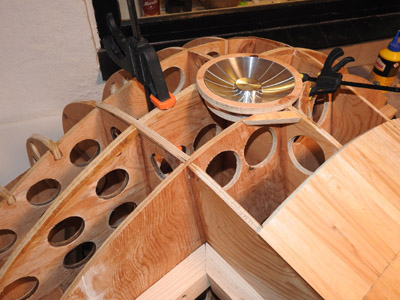 |
 |
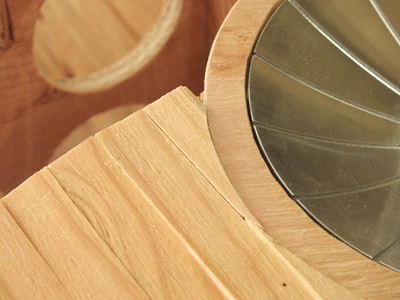 |
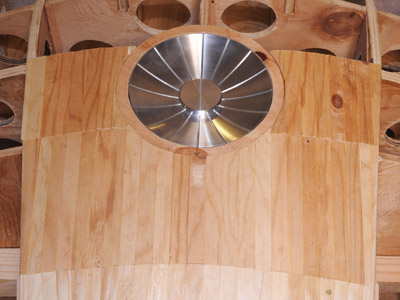 |
|
Extra supports added for the round 'thingy'.
|
And more special shaped sticks.
|
It fits nicely.
|
It's a puzzle.
|
 |
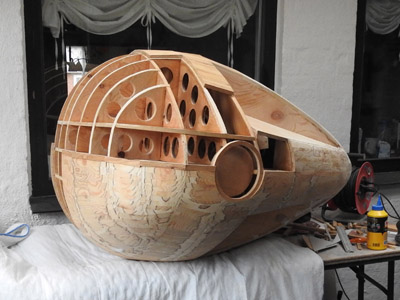 |
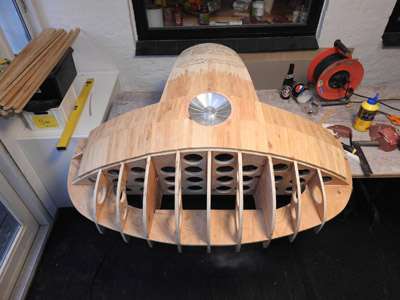 |
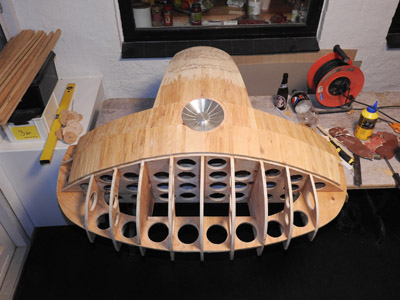 |
|
Maybe a bit boring (for some) with all those sticks.
|
But progres shows.... slowly.
|
Both flanks now 'sticked'... but I see something is
missing.
|
Weight reduce holes... drilled.
|
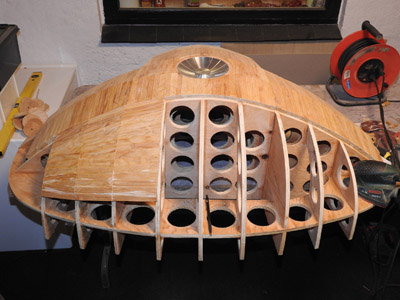 |
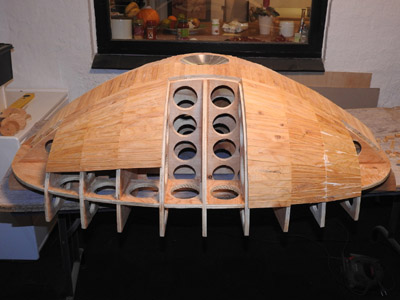 |
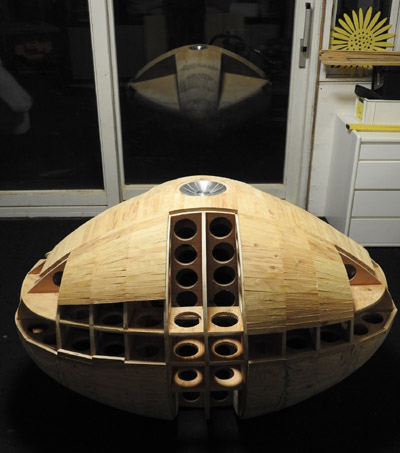 |
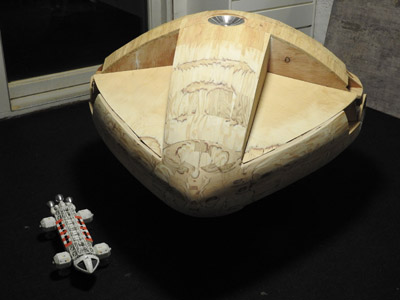 |
|
Left back side getting sticked.
|
And right back side.
|
The upper and lower halves put together...
|
...for a show beside a 22" model.
|
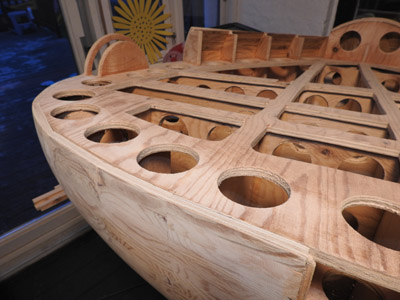 |
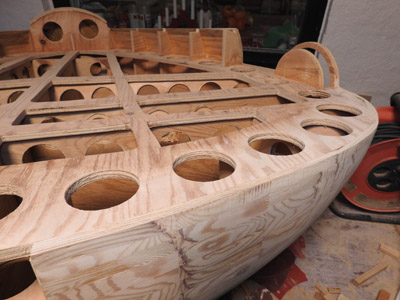 |
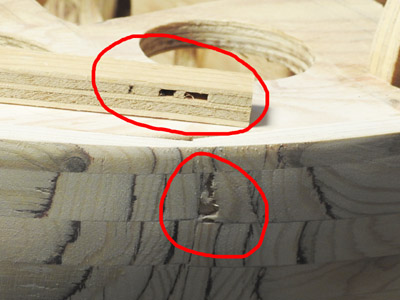 |
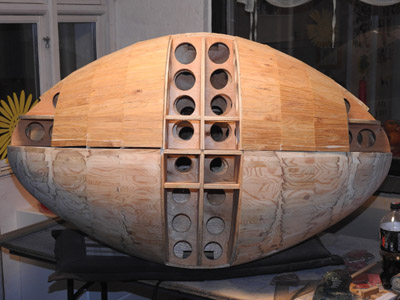 |
|
Back side edges grinded smooth... left...
|
...and right.
|
Fail hollows in the wood appears later when sanding.
|
Status december 13th 2020.
|
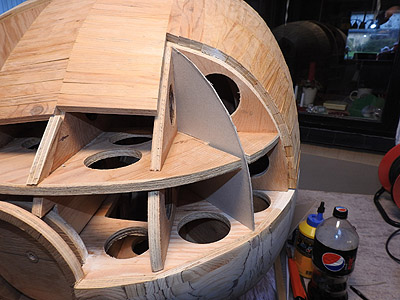 |
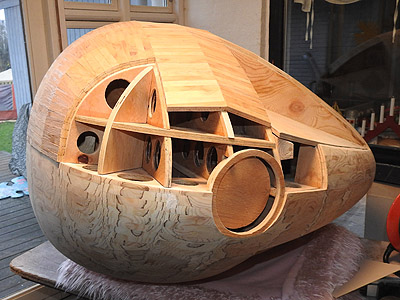 |
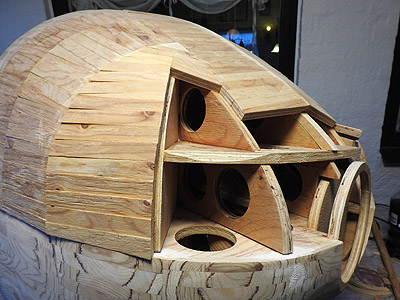 |
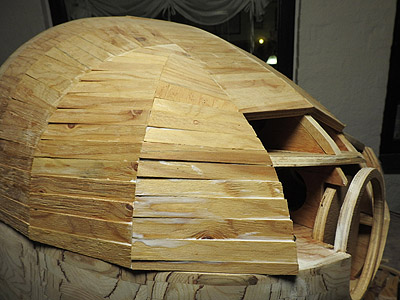 |
|
Additional template for the corner.
|
Finished corner panel (other side).
|
Sticking the corner... left column.
|
Sticking the corner... right column.
|
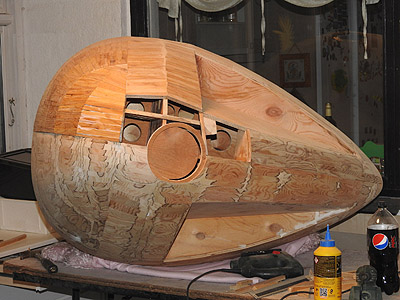 |
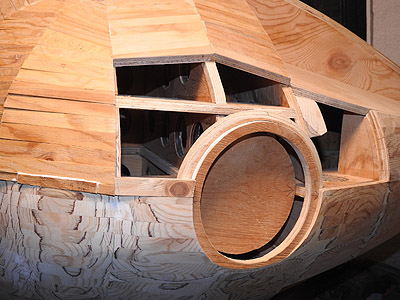 |
 |
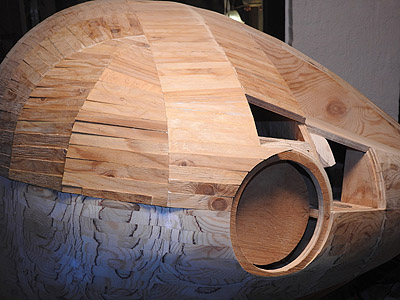 |
|
Both corners now closed up, leaves the difficult gap.
|
An additional half ring made for separation purpose..
|
Building up sticks around the 'disc holder'.
|
First column.
|
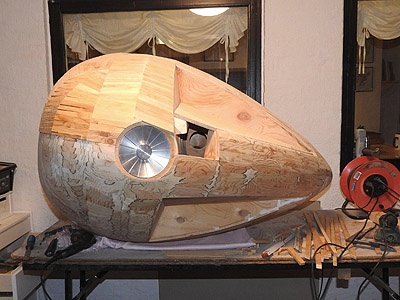 |
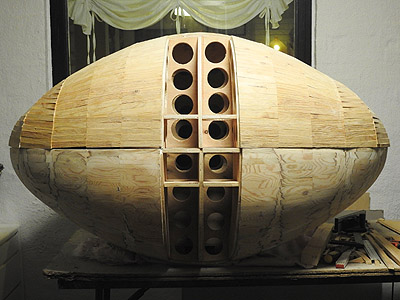 |
 |
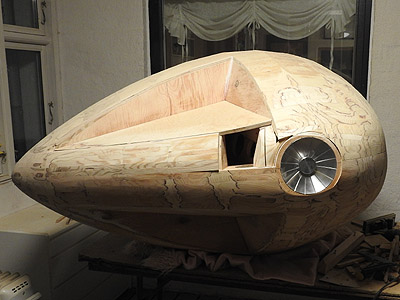 |
|
Second column closed up. The third will have to wait.
|
Back view all cornered up.
|
The opposite side also closed up around the ring.
|
The special wooden block is cut into two for a reason.
|
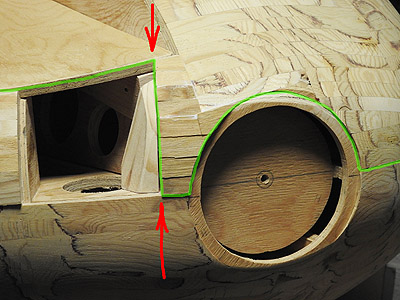 |
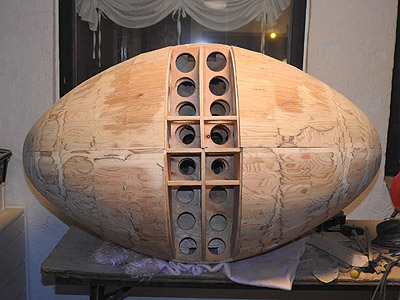 |
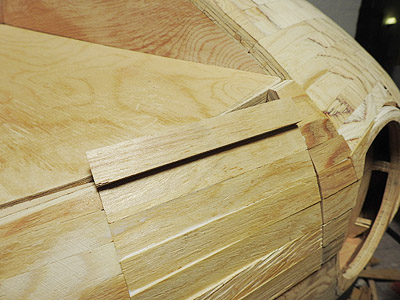 |
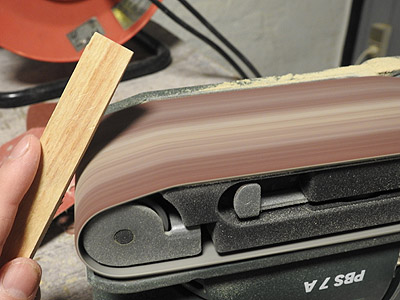 |
|
This is where the two halves are going to separate.
|
Back view all sanded smooth.
|
Final gap closing up. Top sticks needs special attention.
|
Customization by hand (and band grinder) as usual.
|
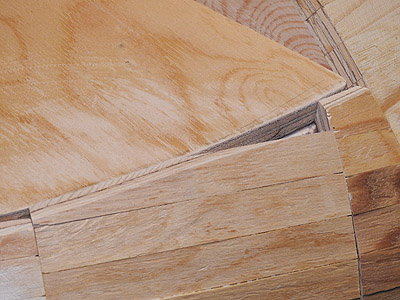 |
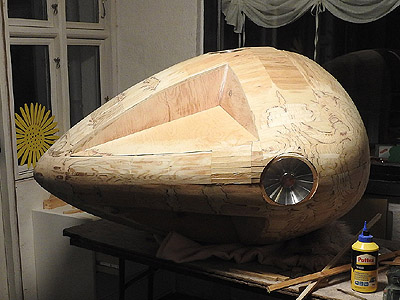 |
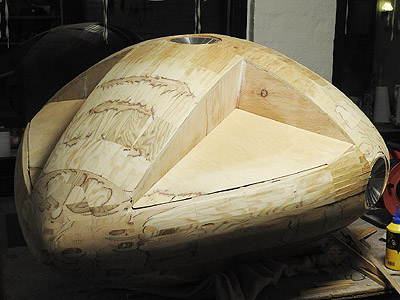 |
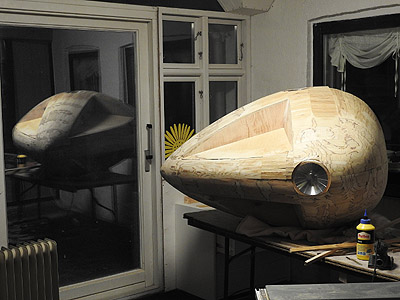 |
|
Very slowly grinding progress makes perfect fit.
|
Finally! ...eh for one side.
|
Looking more and more complete.
|
See you in the mirror.
|
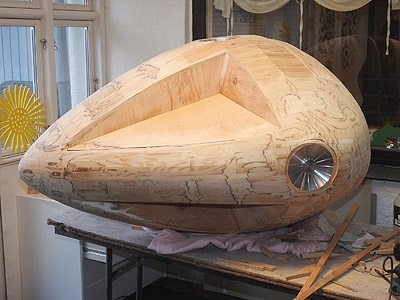 |
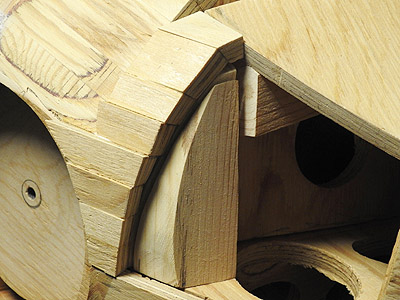 |
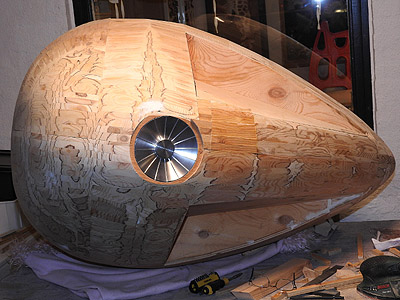 |
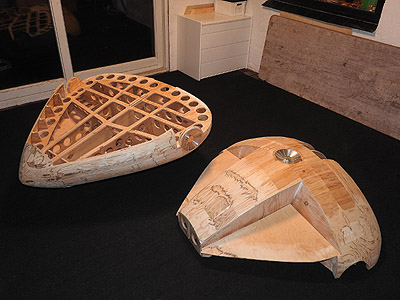 |
|
All sanded nice and smooth.
|
Now for the other side... the final gap.
|
Both sides now completely closed up.
|
And luckily the two halves still did separate!
|
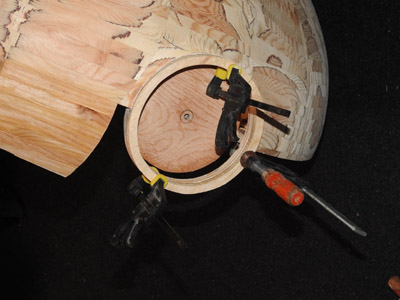 |
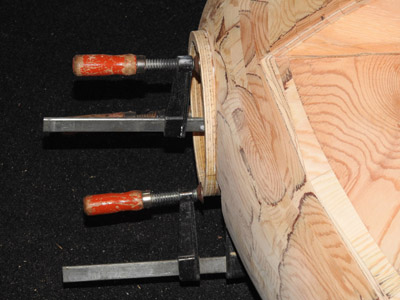 |
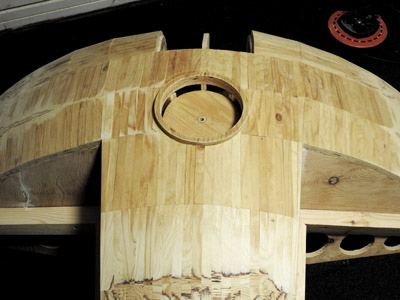 |
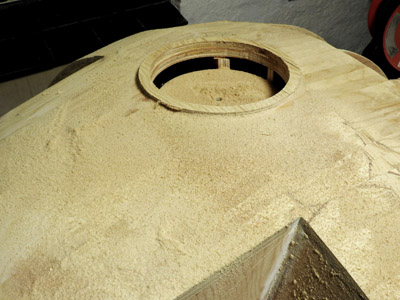 |
|
An extra ring sawed and glued on to reach level.
|
Other side.
|
Also for the top and bottom.
|
And then... sanding...
|
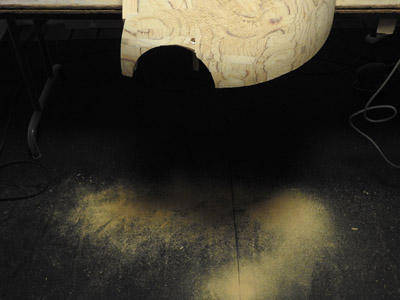 |
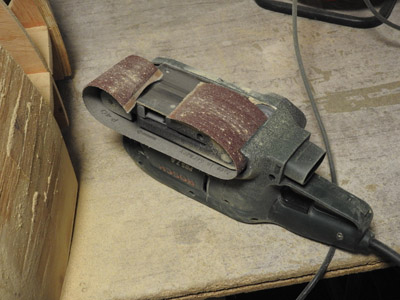 |
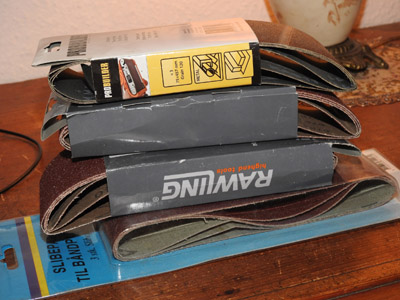 |
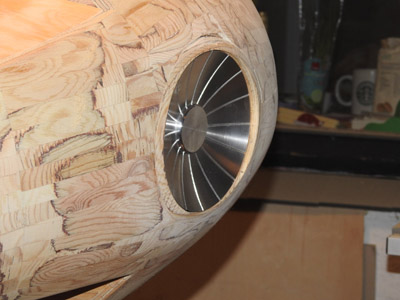 |
|
And dirting...
|
...until I ran out of sanding paper.
|
Had to order new supplies.
|
And then on to finish.
|
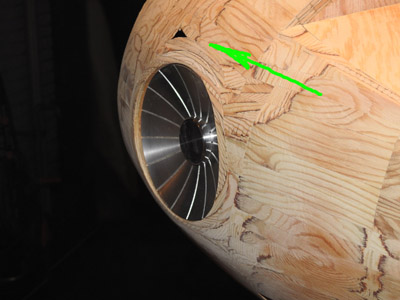 |
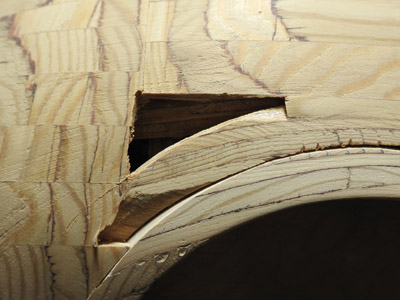 |
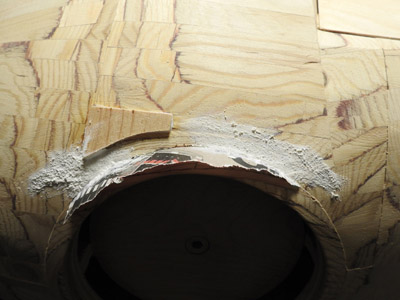 |
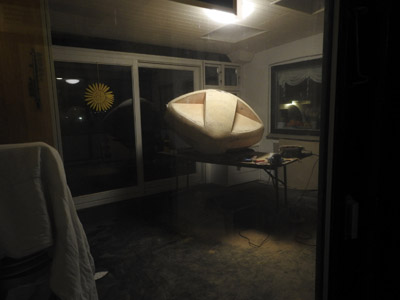 |
|
Unforseen bad luck struck...
|
A hole appeared in my experimental structure.
|
Additional wood stick and filler.
|
Ready for the next chapter.
|
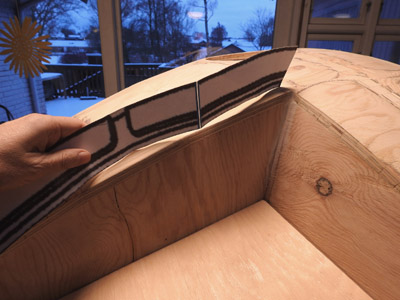 |
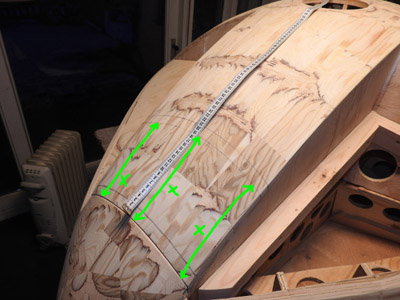 |
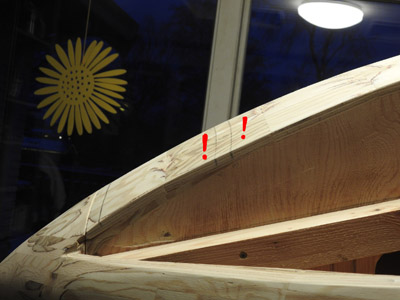 |
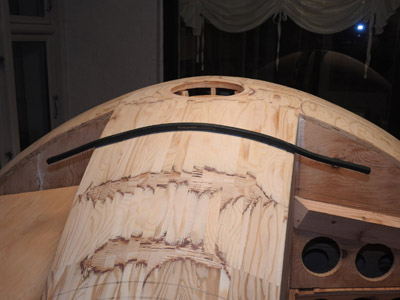 |
|
Now for the exalted details. I changed my mind...
...and decided to cut down instead of add more weight. |
I thought this was straight forward measuring... but
no.
|
These lines shall be straight to look at... but weren't.
|
A new method needed.
My old Flexicurve from school came in handy. |
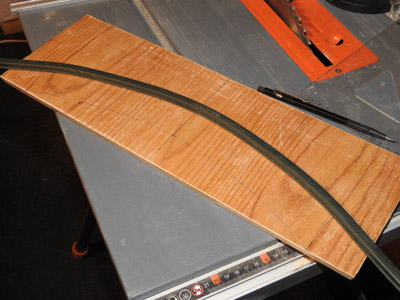 |
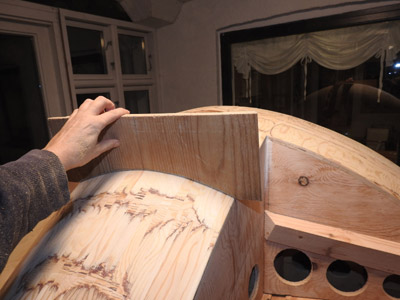 |
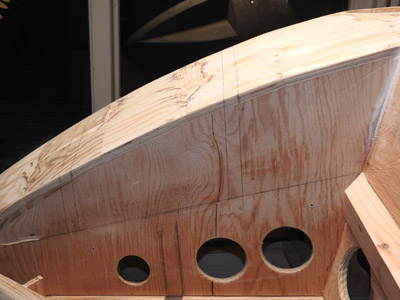 |
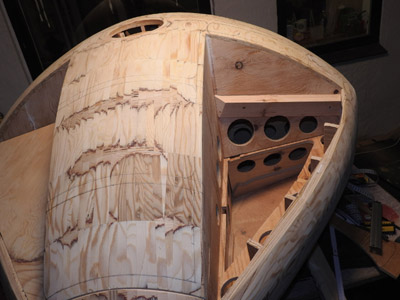 |
|
And helped me make a template.
|
Now the lines has to be straight!
|
I had to adjust the template for each line.
|
Because of the rounding change along the 'nose back.'
|
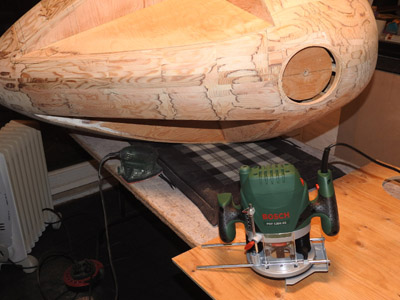 |
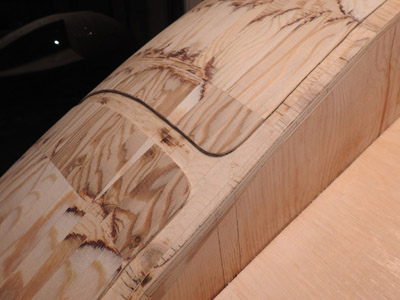 |
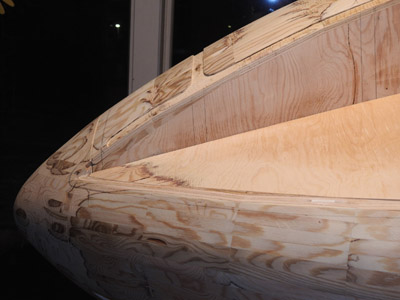 |
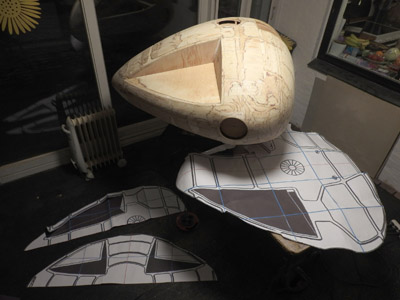 |
|
I present a new toy... a router... this should be
fun
|
This maybe look easy, but believe me...
|
...handling the router in free hand made me sweat!!
|
Now to some lines on the rest of the module.
|
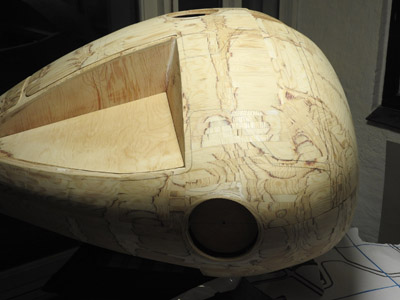 |
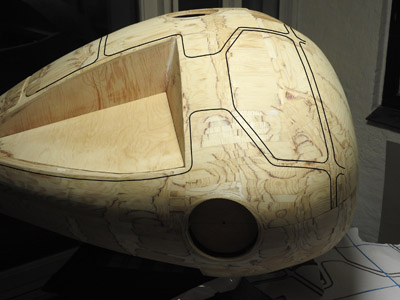 |
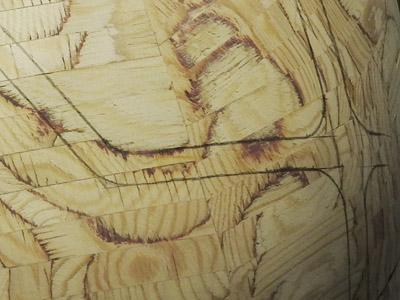 |
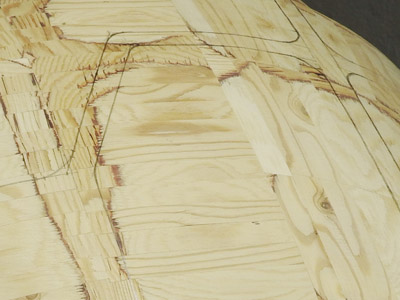 |
|
Quite a lot of measuring. Checking photos and drawings.
|
Here I have sharpened the pencil up in Photoshop.
|
Close up pencil lines.
|
This is what I love and are my actual education.
|
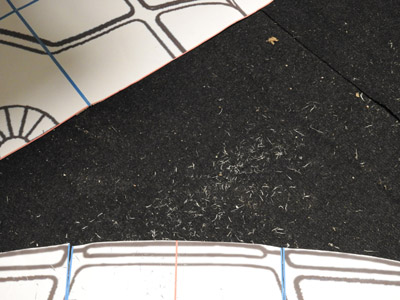 |
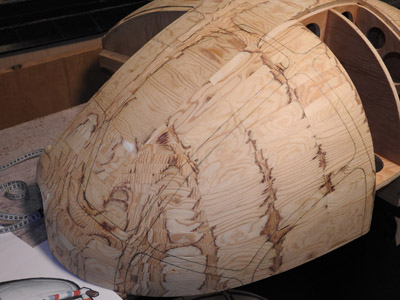 |
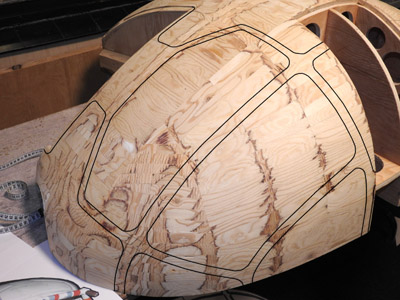 |
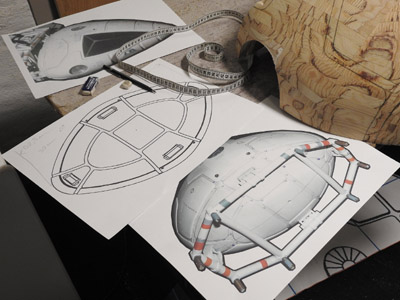 |
|
But nevertheless... LOTS of rubber shavings on the
floor.
|
Pencil lines on the back of the module.
|
Photoshop.
|
Double checking drawings and photos from the web.
|
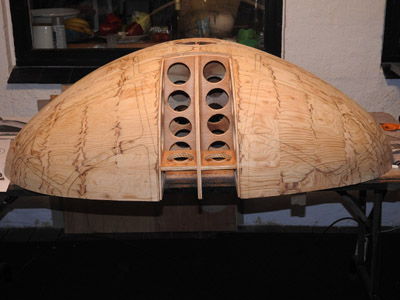 |
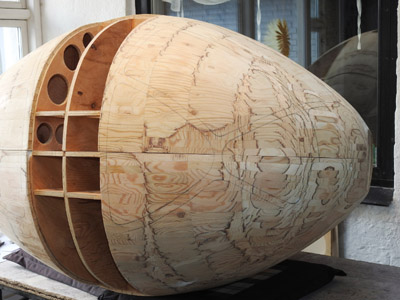 |
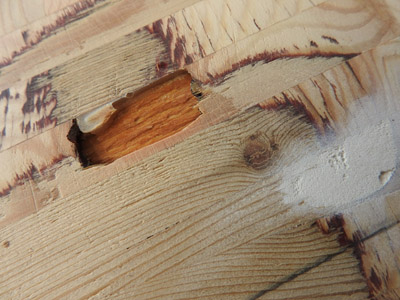 |
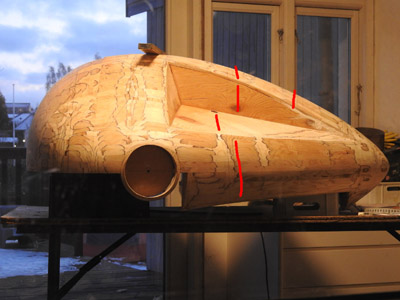 |
|
Both side drawn.
|
Top and bottom ready for the router.
|
More surprise hollows appeared on my way.
|
Again... lining up the side were a pain to get correct.
|
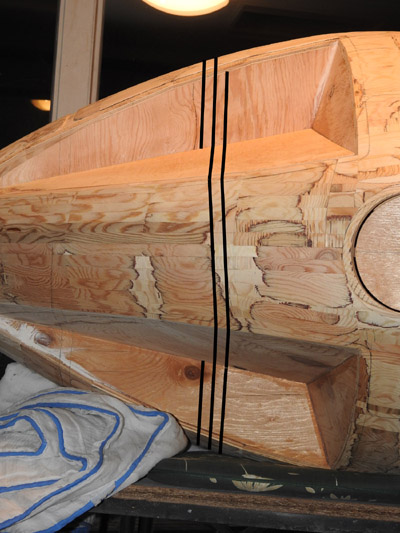 |
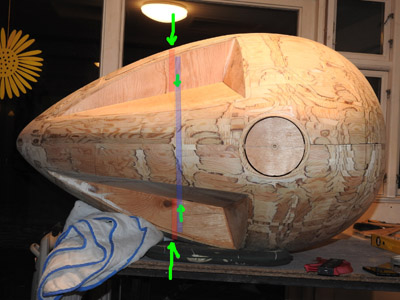 |
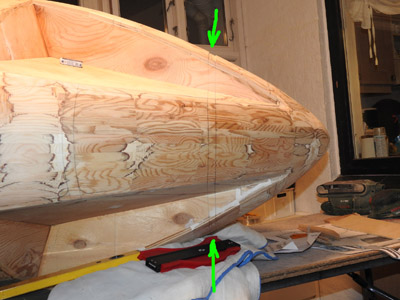 |
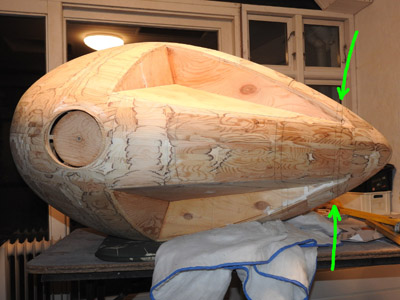 |
|
It was quite frustrating.
|
Afterwards I came to think of a laser liner.
|
That would have been real handy.
|
But after lots of rubbering they finally looked right.
|
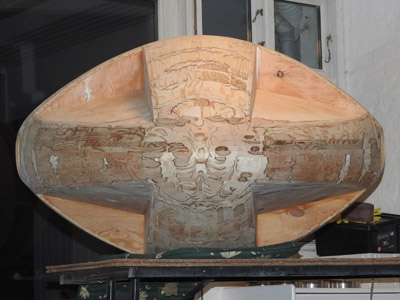 |
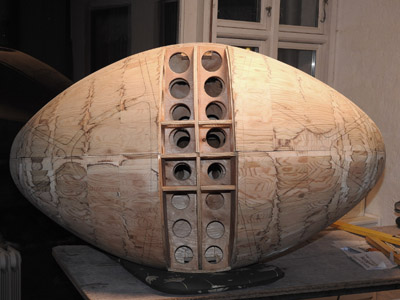 |
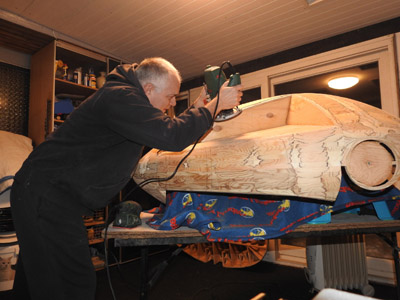 |
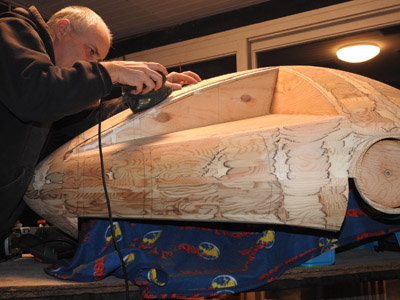 |
|
Complete lines - front.
|
Complete lines - back.
|
Now on with the router. Concentration.
|
Softening with the grinding mouse.
|
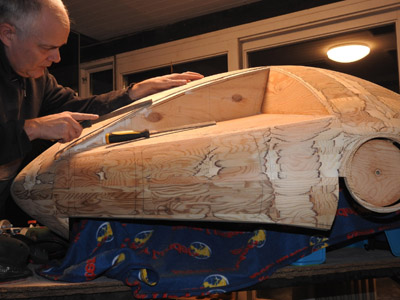 |
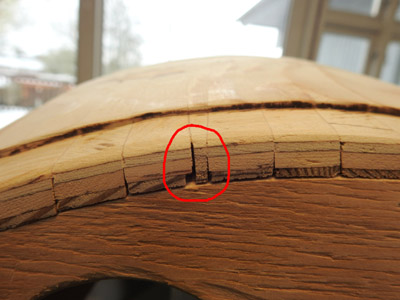 |
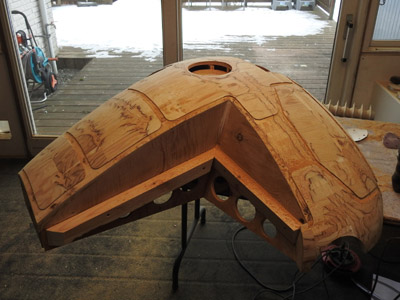 |
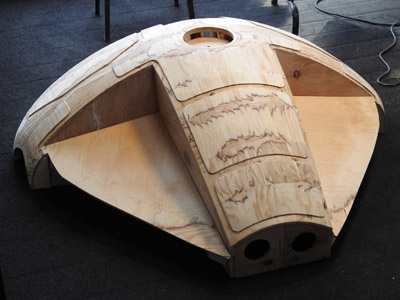 |
|
And correcting with the file.
|
Here's why all the sticks had to be trapez shaped.
|
Here's my second work with the router
|
Better lighting. Looks quite okay I think.
|
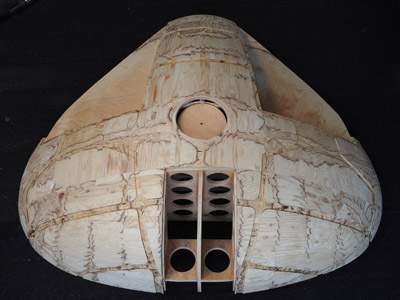 |
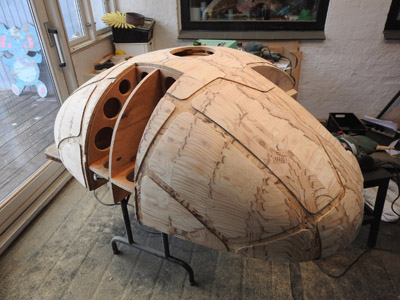 |
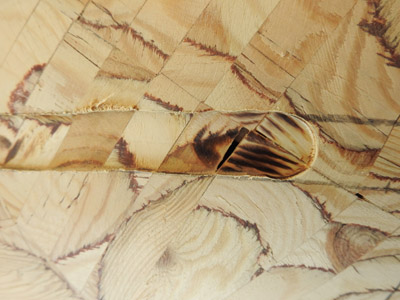 |
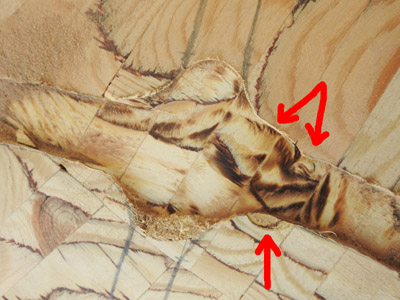 |
|
And the back side left and right.
|
I should have timestamped the photos.
|
Here it is clear how easily the router went off track.
|
And here... which needed following attention.
|
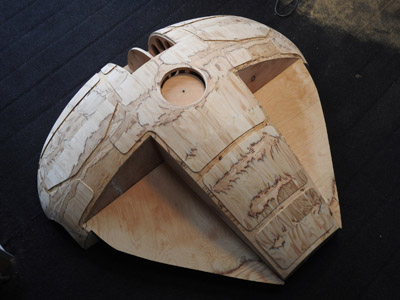 |
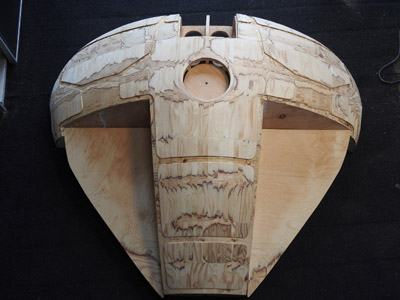 |
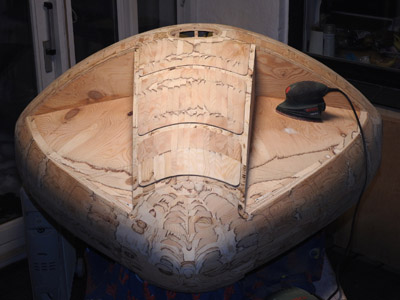 |
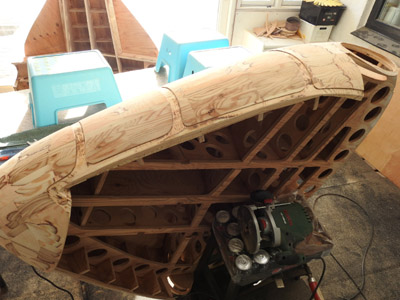 |
|
But it is just a matter of time.
|
At last...!
|
Oh.... I forgot... there's another half side.
|
With those 'exciting' sides.
|
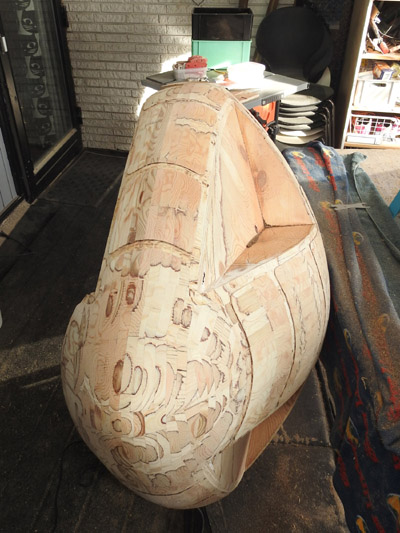 |
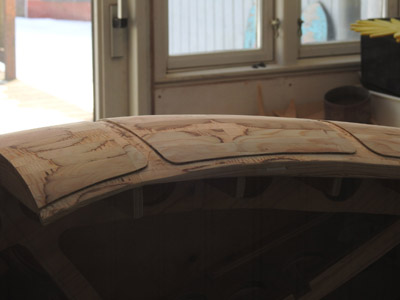 |
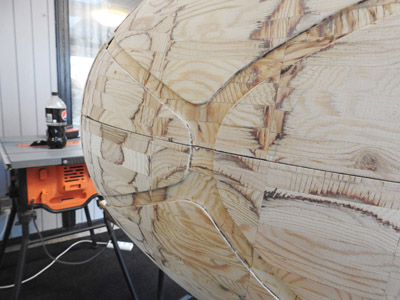 |
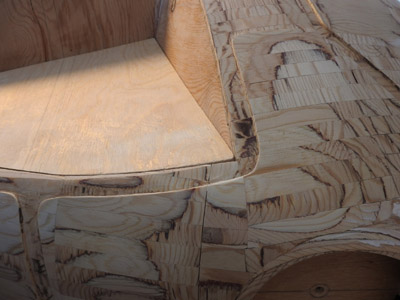 |
|
I did a lot of 'hold my breath' while routing.
|
But it paid off.
|
Closeup...
|
...details.
|
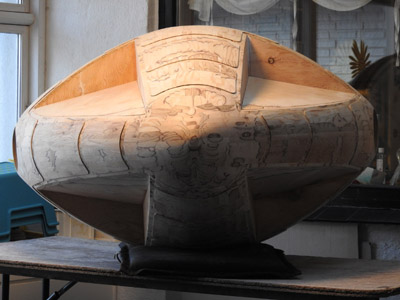 |
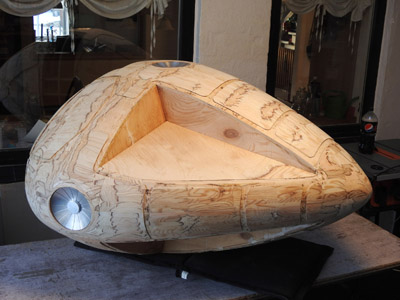 |
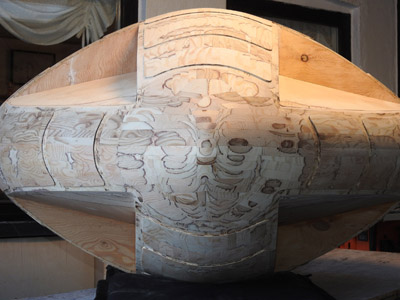 |
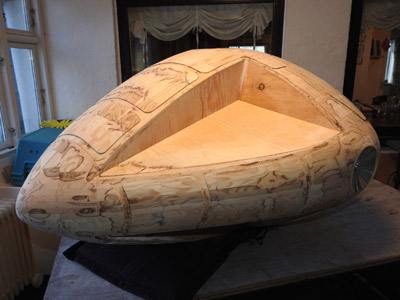 |
|
Now it really look right.
|
I'll let the photos...
|
...speak for themselves.
|
Next thing coming up....
|
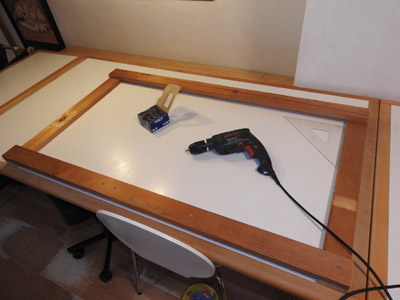 |
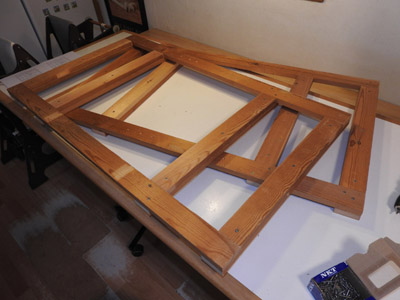 |
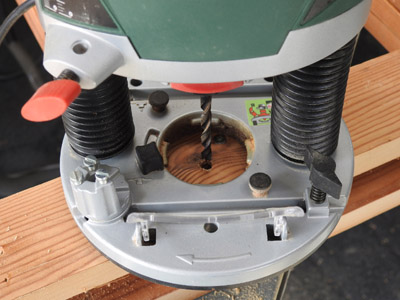 |
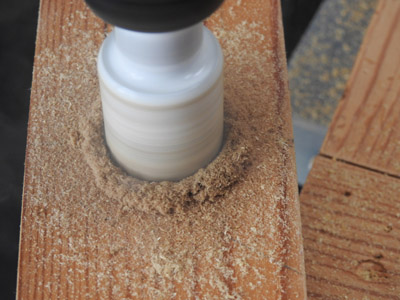 |
|
A bit wood work still needed before the tubes.
|
Two frames completed to keep tubes fixated.
|
Alternative tower drilling machine.
|
And then cup drill.
|
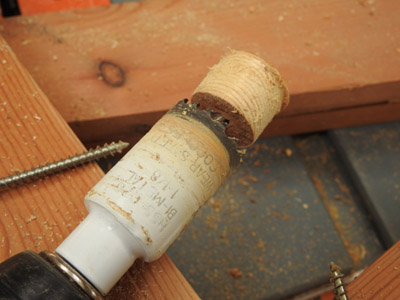 |
 |
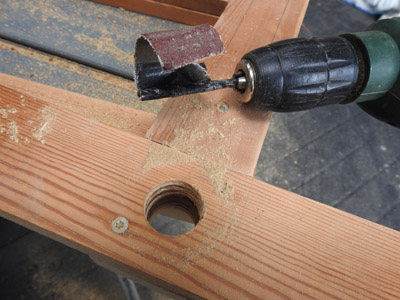 |
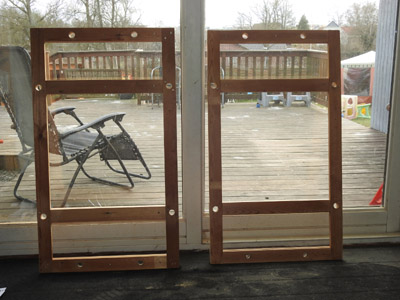 |
|
Those corks got stuck inside each and single time.
|
Finally. After intense measuring and drilling.
|
A little oldfashioned finish.
|
The wooden parts ready.
|
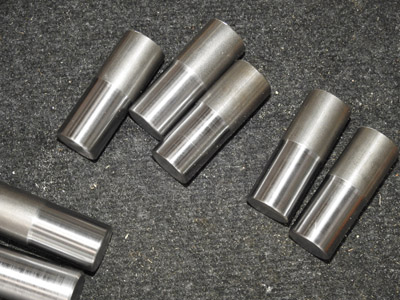 |
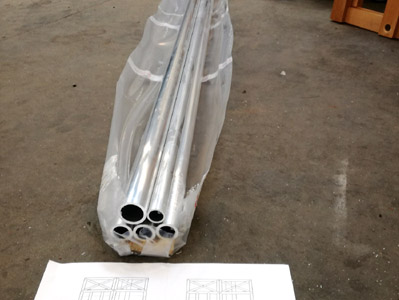 |
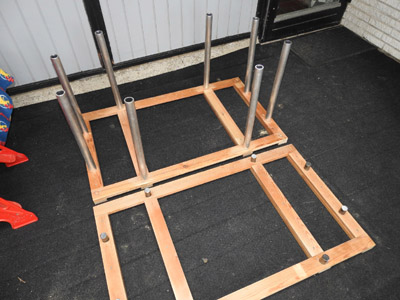 |
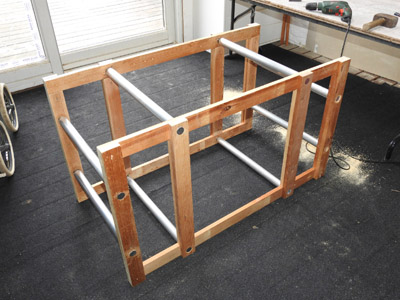 |
|
16 special tabs made to support the tubes.
|
Finally unpacking. I need 8 x 540mm straight cut.
|
Fitting the Ø40mm tubes.
|
Then kept fixed between the two frames.
|
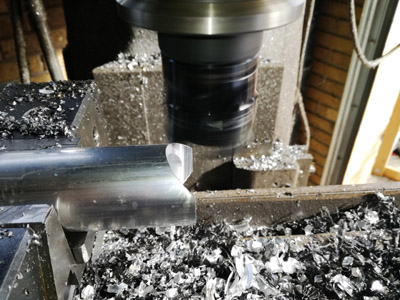 |
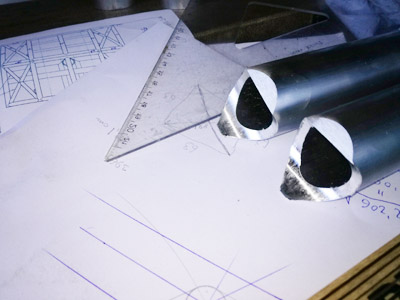 |
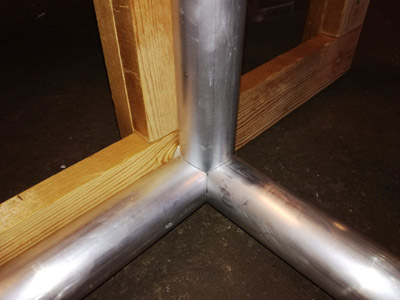 |
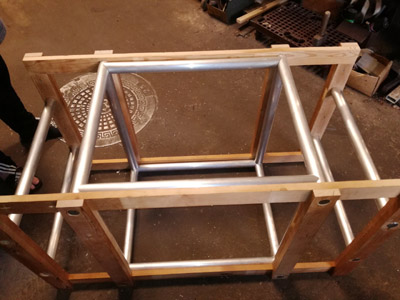 |
|
Milling cutting...
|
...makes those 'fish mouths'...
|
...for perfect fit.
|
Status March 21st 2021.
|
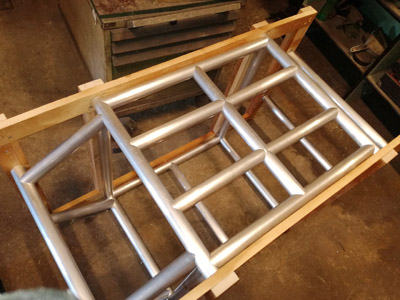 |
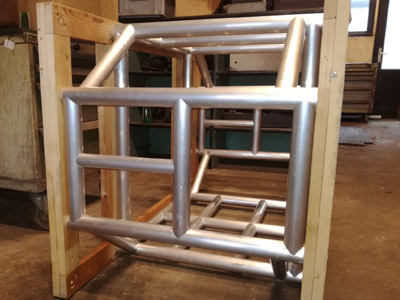 |
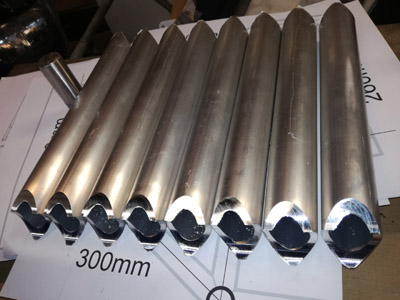 |
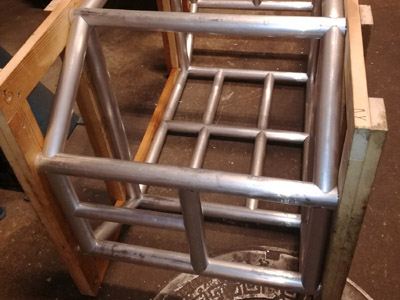 |
|
Obligue tubes mounted temporarely.
|
And the short side tubes. The thinner horizontal.
|
More fish mouths...
|
...so those obligue tubes can be pushed in place.
|
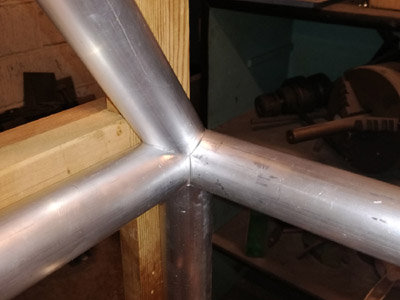 |
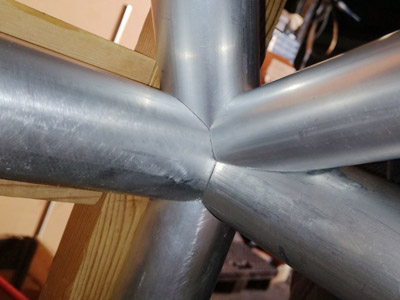 |
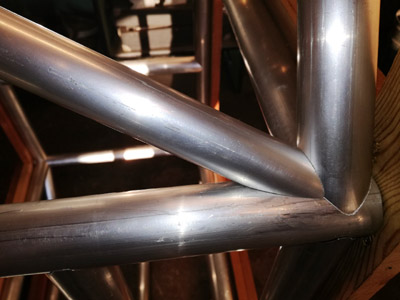 |
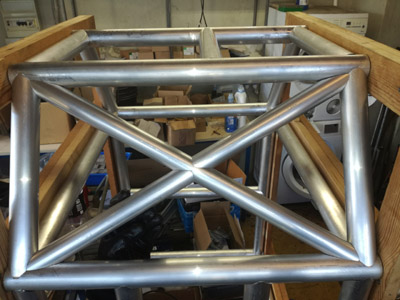 |
|
Four tubes meets
|
Five tubes!
|
The first diagonal...
|
...and the first cross done!!
|
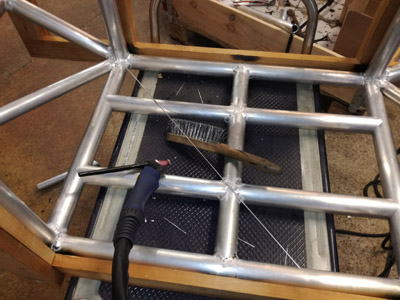 |
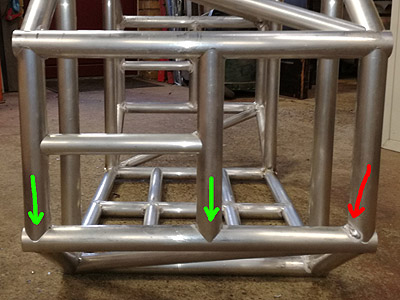 |
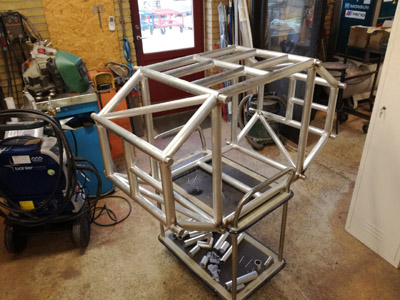 |
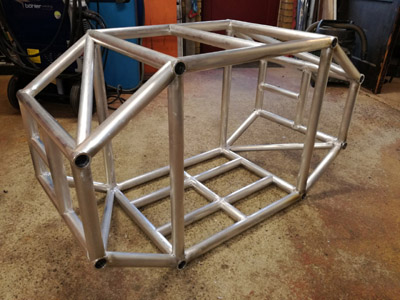 |
|
Some time went by before I was able to weld...
|
...early in progress I decided to weld inside of the
cage only. It looked too ugly no matter how nice a weld I made.
|
Apart from the two small tube to finish the X...
first cage now done. |
And without it's supporting taps.
|
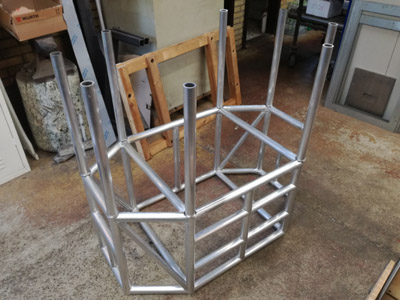 |
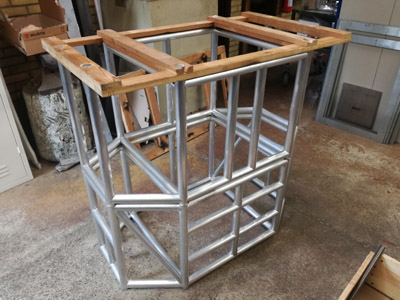 |
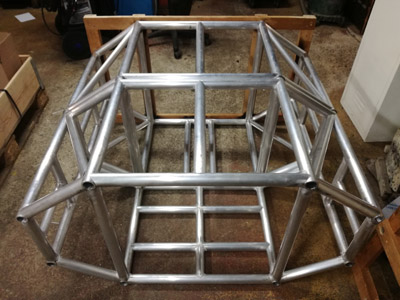 |
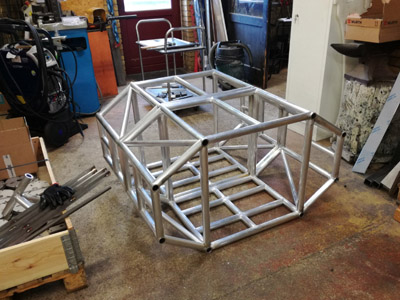 |
|
Eight new special taps with a diving collar was made.
|
To build the next cage on top of the first.
|
To have them perfectly match up.
|
And freed from supporting frame.
|
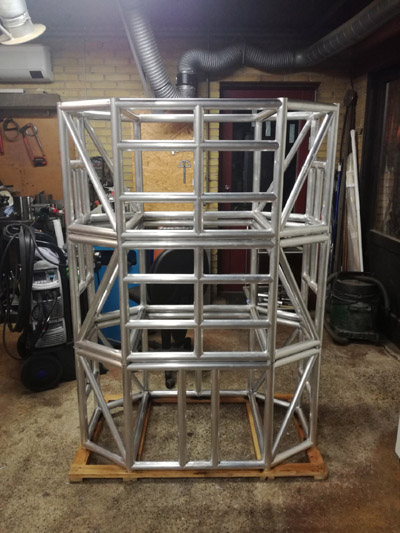 |
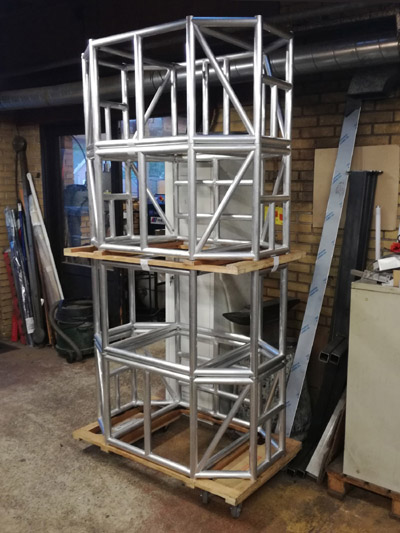 |
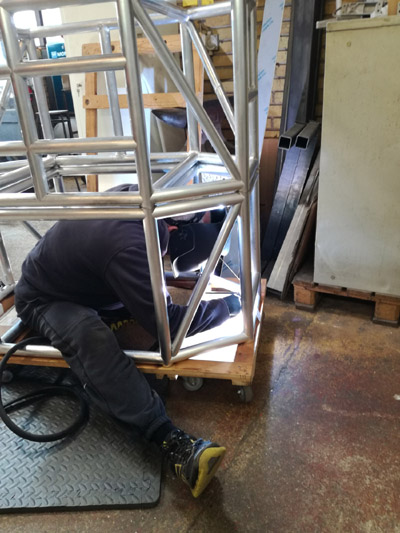 |
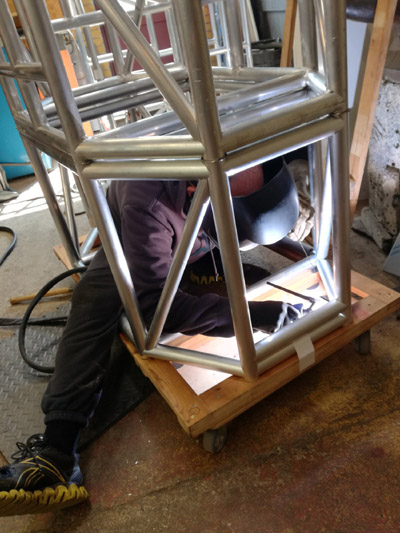 |
|
Suddenly three cages were done...
|
...and ready for the fourth.
|
Me in action.
|
Al the tubes became very HOT while welding.
|
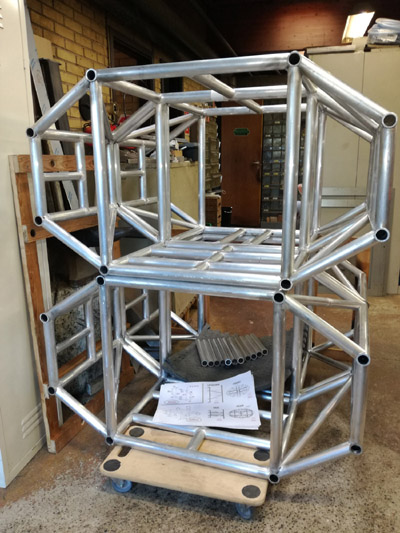 |
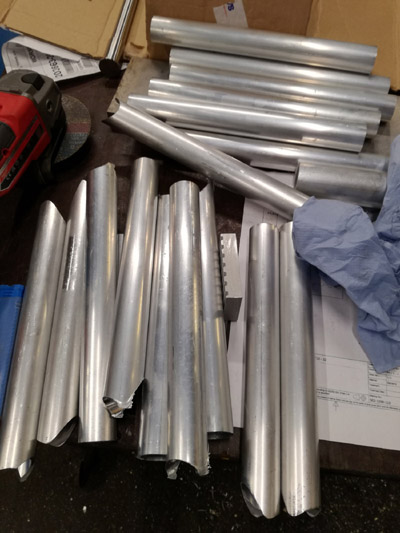 |
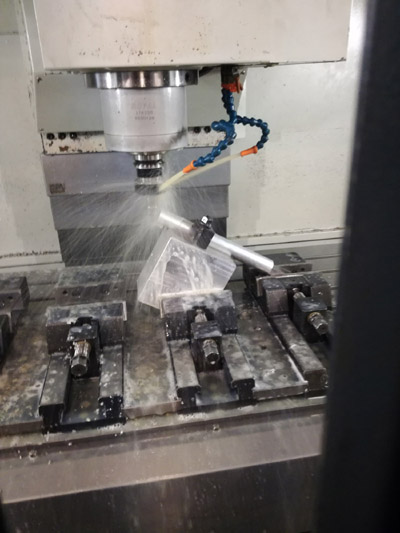 |
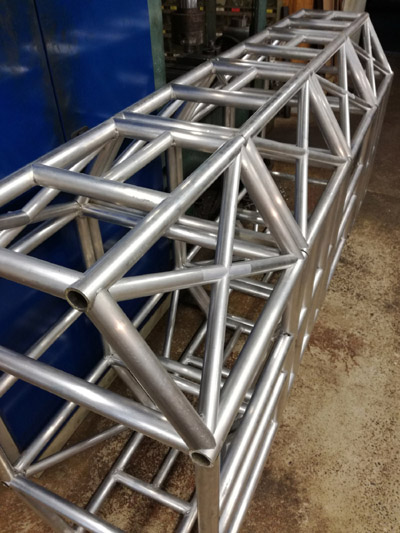 |
|
Two pair of cages.
|
And now to the last two pieces to complete the X.
|
With this I got CNC help from my brother in law.
|
These were tricky... but after some time, they did
fit.
|
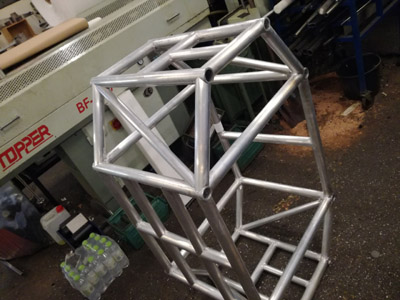 |
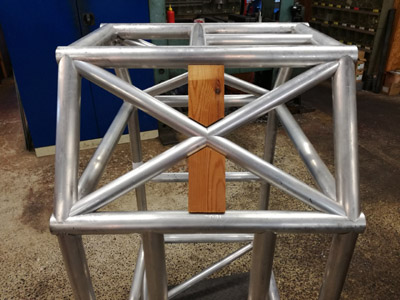 |
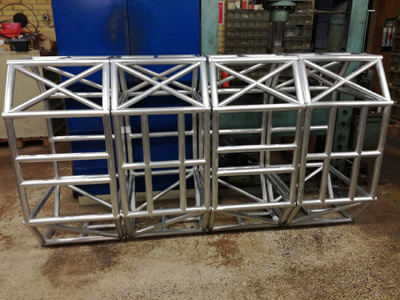 |
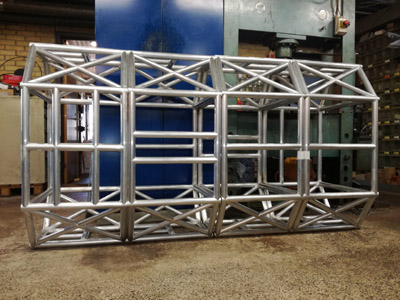 |
|
Here's an illusion photo... before the X was actual
made.
|
Primitve, but effective tool I made to keep the pieces
fixed.
|
Top (one side) X's done.
|
And the other side. Four cages completed.
|
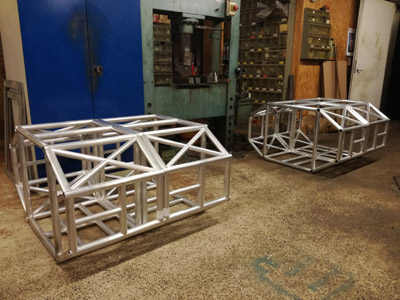 |
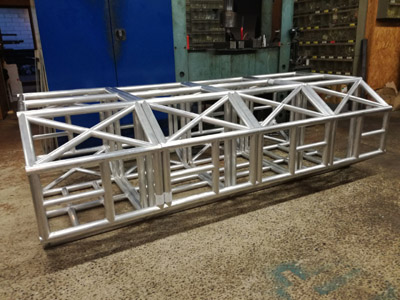 |
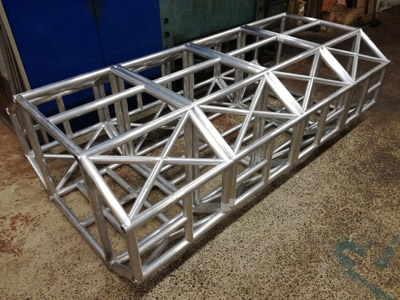 |
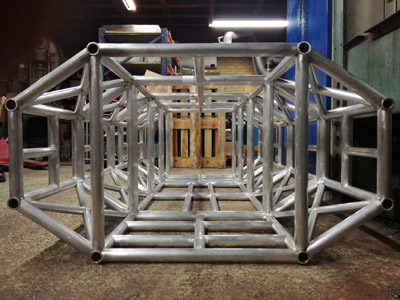 |
|
Laid down and pulled apart.
|
But back together again to spare floor room.
|
But it looks nice.
|
Tunnel view....
|
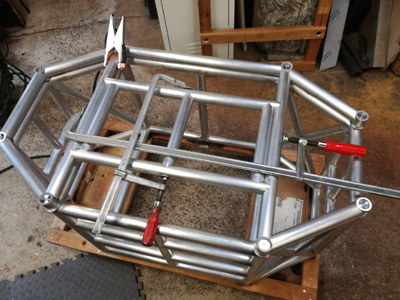 |
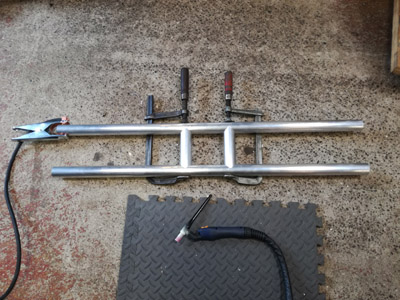 |
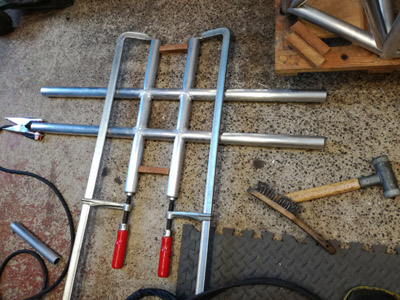 |
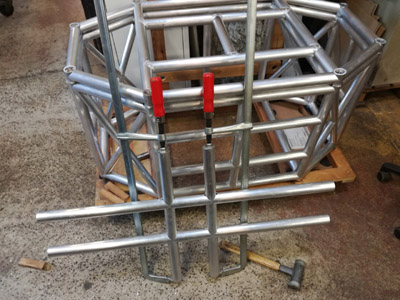 |
|
Now to the rear enginge section.
|
I needed more hands...
|
...but large clamps helped me.
|
Now what....
|
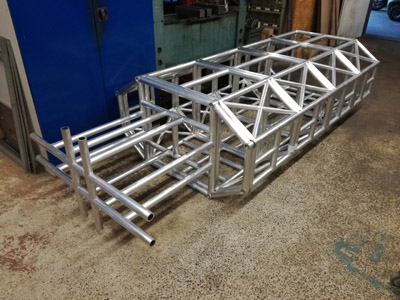 |
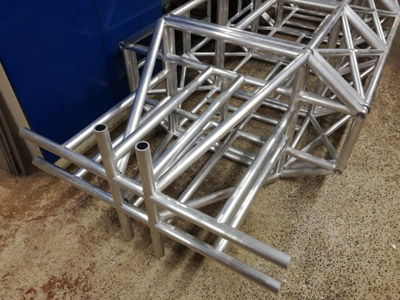 |
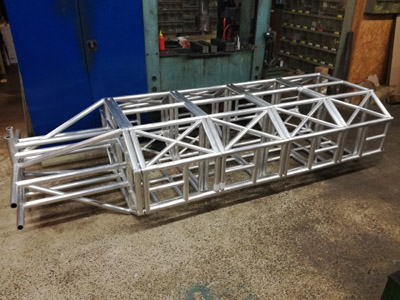 |
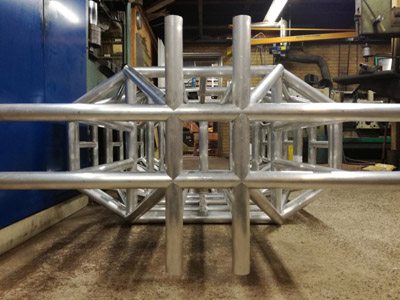 |
|
Eight longitudinal tubes added. I lacked hands again.
|
And again, but Kurt gave a helping hand holding tubes.
|
Rear section done - except for the four rings...
|
...for the engine bells.
|
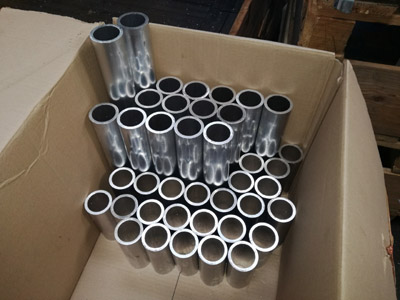 |
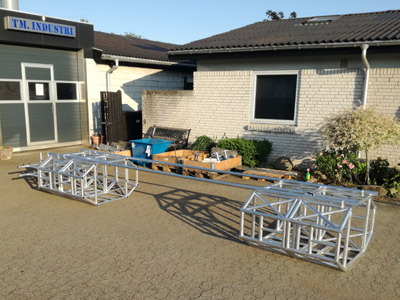 |
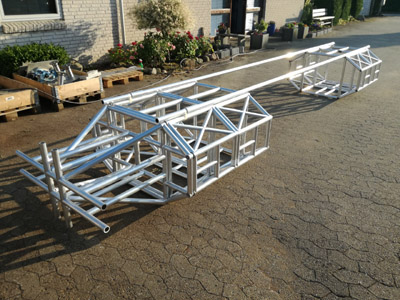 |
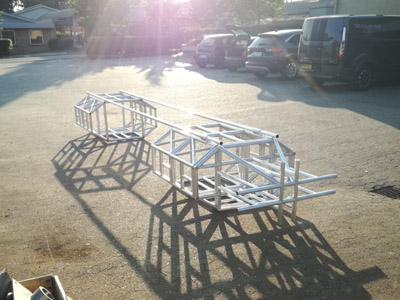 |
|
Now on to the...... spine!!! And the Ø 50mm
tubes.
|
I cut the longest tubes for the spine (Ø 40mm).
|
And couldn't help myself dragging it all outside.
|
Into the bright evening daylight, casting long shadows.
|
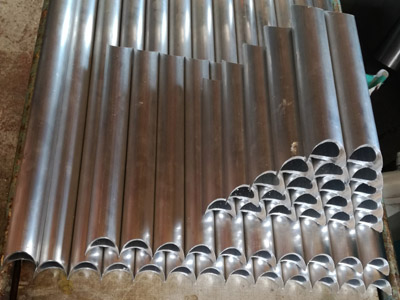 |
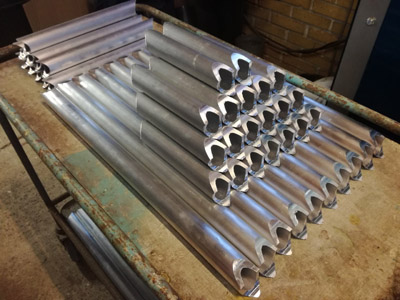 |
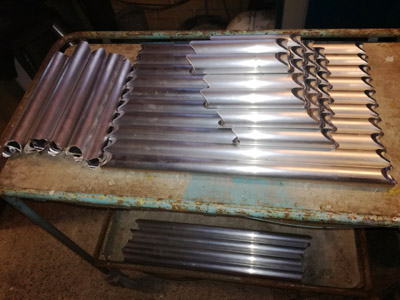 |
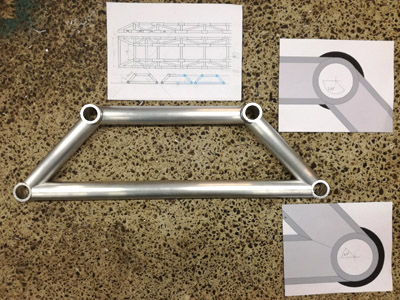 |
|
First cut... in both ends Ø 40mm.
|
Second... milling for the 47 degree angels.
|
Dejavue.
|
Loosely setup - all Ø 40mm
|
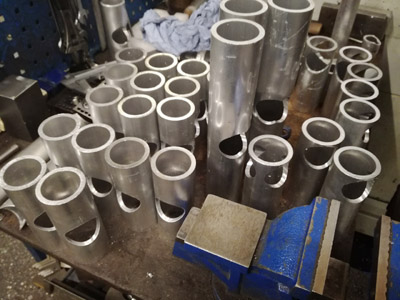 |
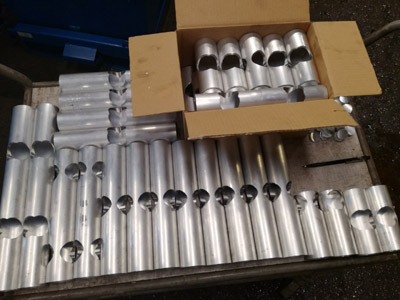 |
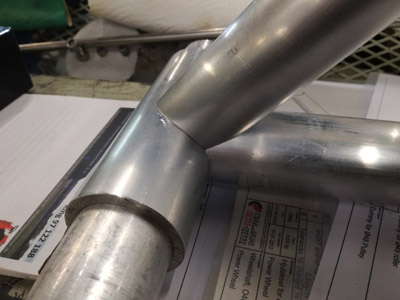 |
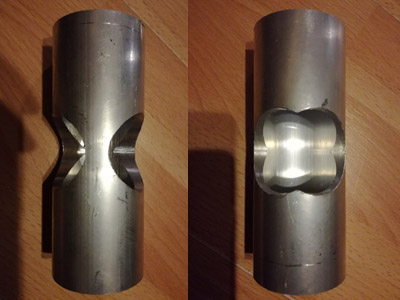 |
|
Herd of Minions - Ø 50mm.
|
Ø 50mm packed in box
|
Ø 50mm wrapped around three meeting Ø
40mm.
|
Left 133 degree - right 47 degree.
|
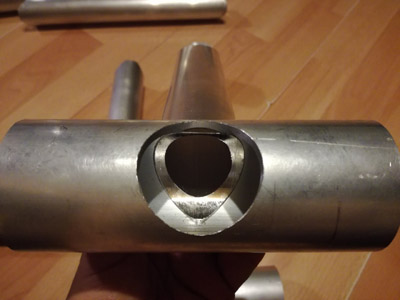 |
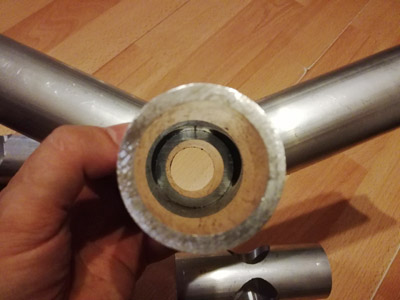 |
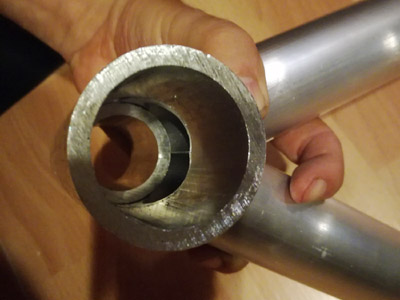 |
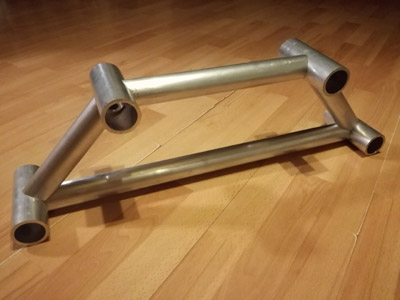 |
|
Inside look.
|
133 degree.
|
47 degree.
|
Assembled.
|
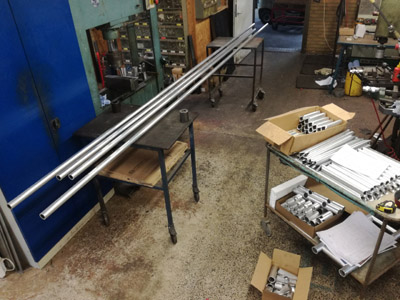 |
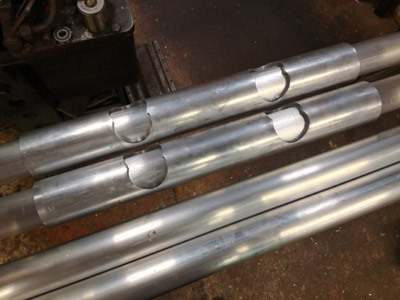 |
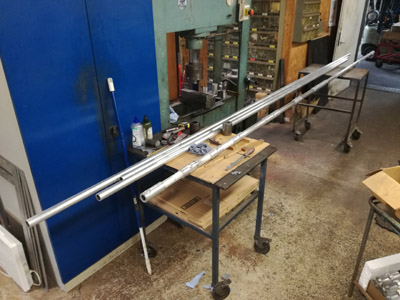 |
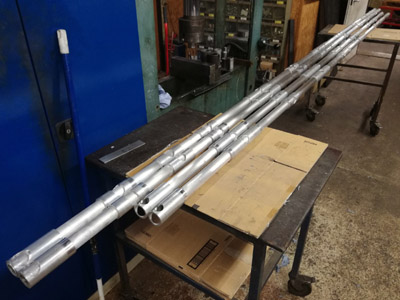 |
|
Now for the longitude tubes.
|
Can't explain HOW difficult these two tubes
were to slide into the middle. So extreme tolerance. |
The shorter ones were a lot easier.
|
And suddenly... all four long tubes were fitted with
the thicker joint tubes.
|
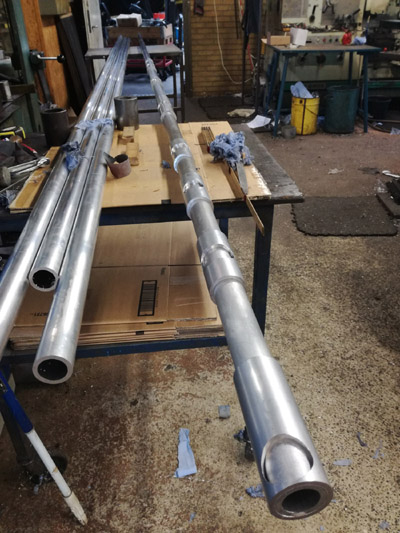 |
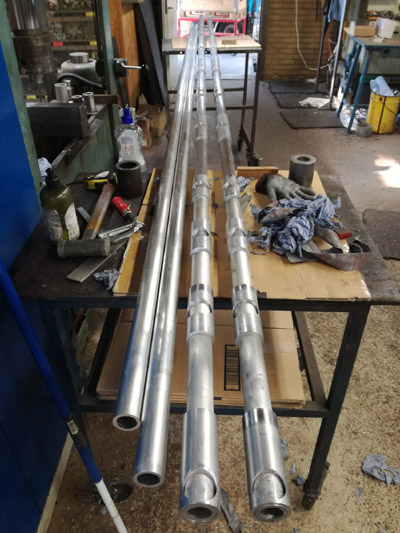 |
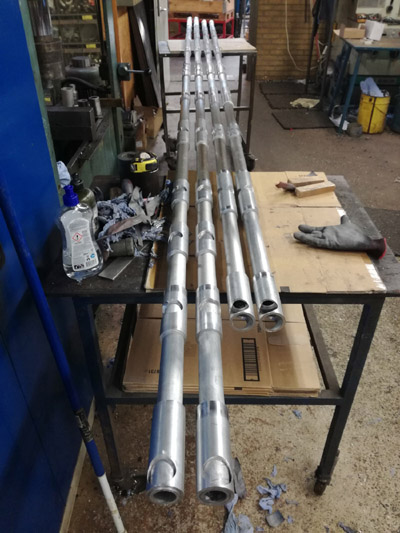 |
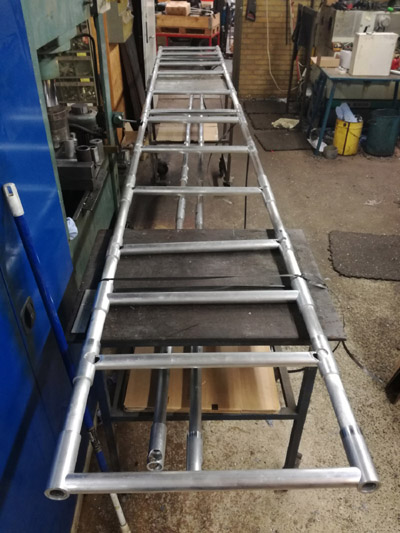 |
|
Close up... one
|
...two...
|
three... and four.
|
Then the transverse tubes.
|
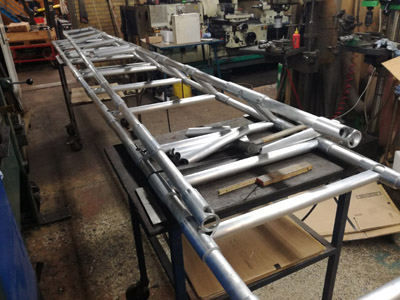 |
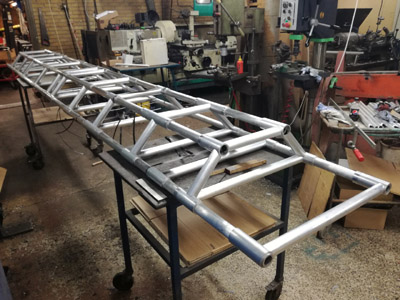 |
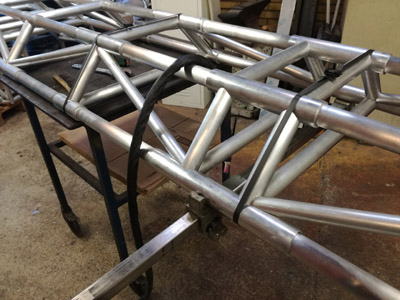 |
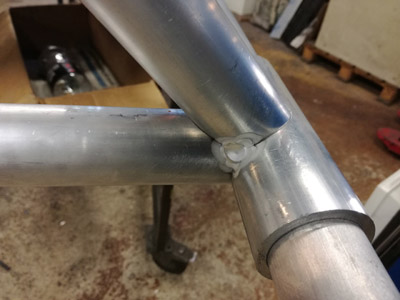 |
|
Building up the 'second floor' made me wanting to
be an octopussy. Tubes scrambled to the floor...
|
...but again... after a long battle, it was all in
place.
|
Strips around to avoid it to fall apart. And a heavy
duty dozer bar to force everything together while welding.
|
The very first spot weld to the spine.
|
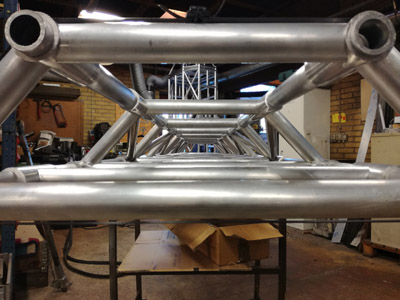 |
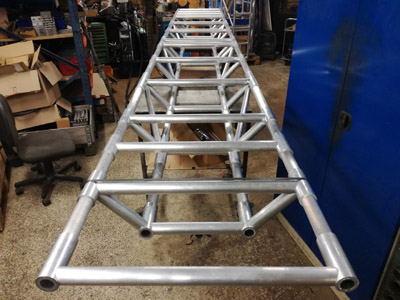 |
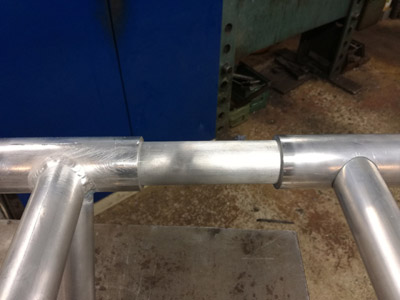 |
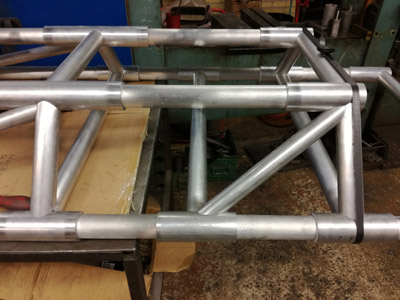 |
|
Here's a tunnel view.
|
Bottom up.. the downside of the spine.
|
Welded joint (left) and non welded joint (right).
|
First diagonal tube in place... the rest followed.
|
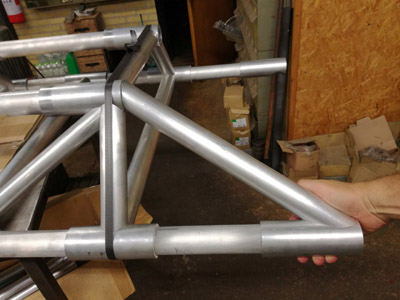 |
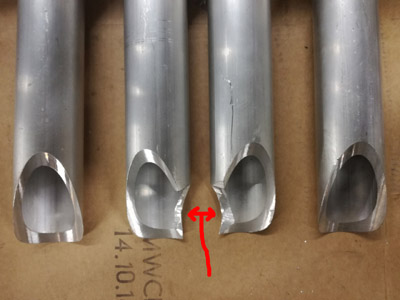 |
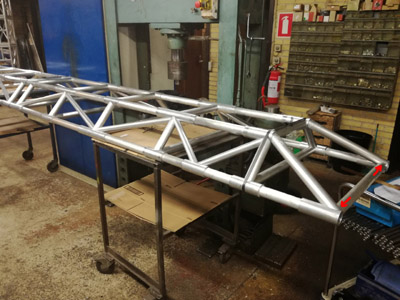 |
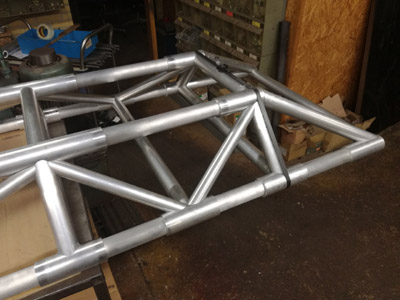 |
|
First corner tube in place, but I forgot the transverse
tube.
|
So a special cut (for the first two) were made manually
to fit the transverse tube. |
As shown here.
|
Two corner tubes in place.
|
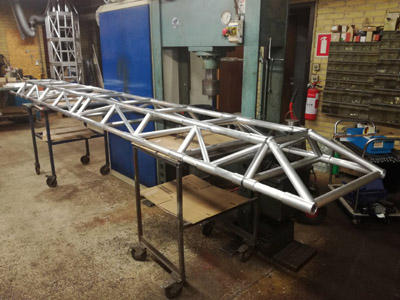 |
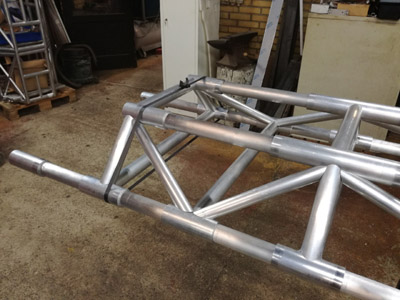 |
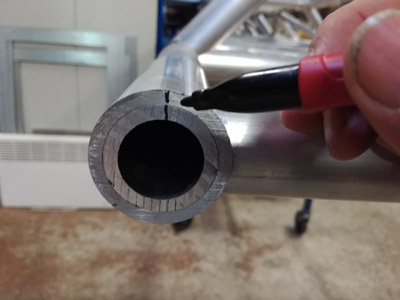 |
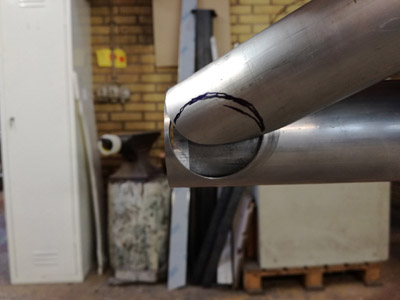 |
|
Almost done...
|
...only the last two corner tubes missing
along with the last tranverse tube. |
Old fashioned marking... with a marker.
|
This is not calculating.
|
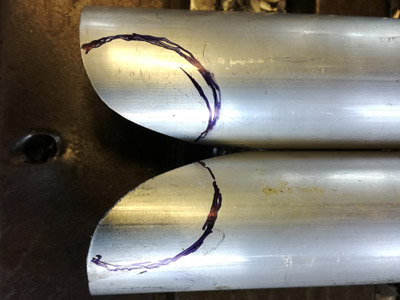 |
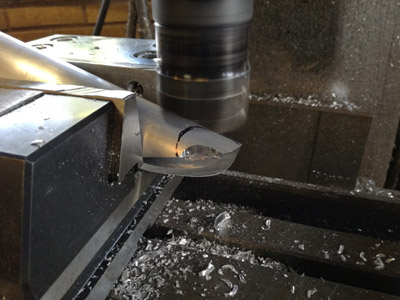 |
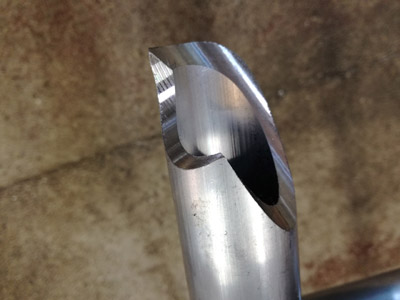 |
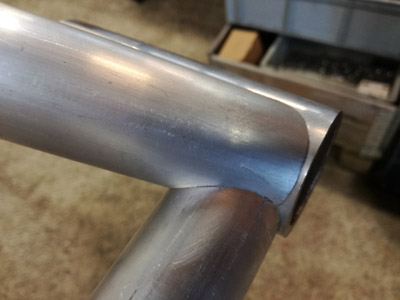 |
|
I cross my fingers that it will work.
|
Then into the milling machine.
|
Kind of art.
|
A bit of luck made it a perfect fit.
|
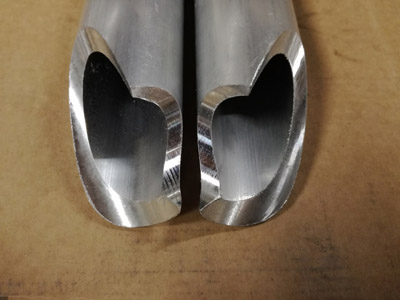 |
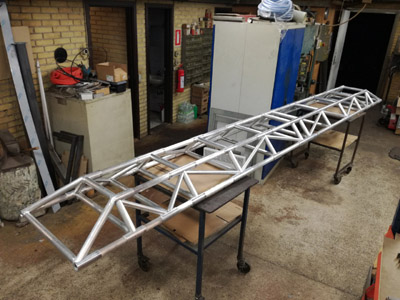 |
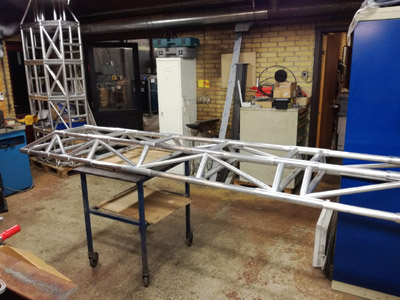 |
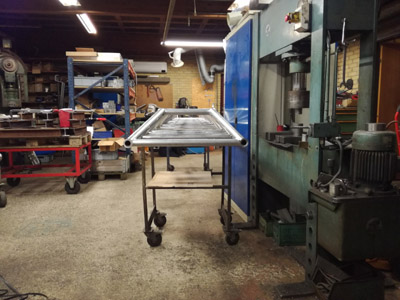 |
|
Two tubes milled and ready to fit...
|
...along with the transverse tube.
|
Spine is now ready to weld...
but only on the down- and inside |
End view.
|
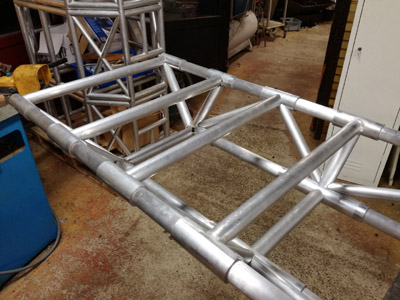 |
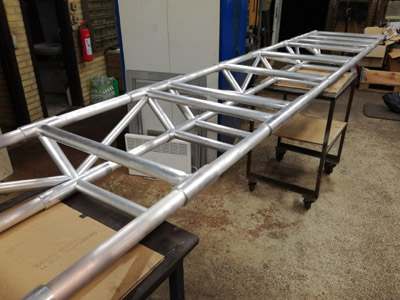 |
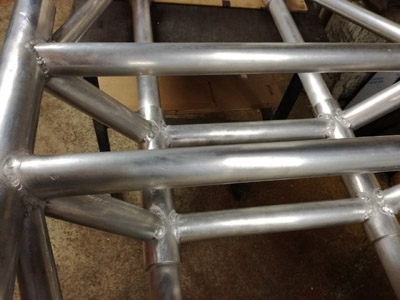 |
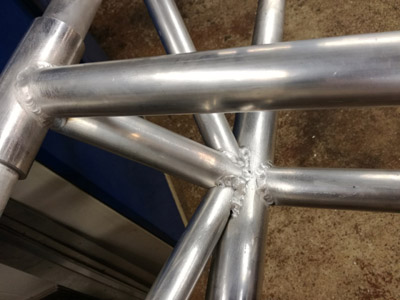 |
|
The spine got turned upside down again...
|
...to access the joints that shall be welded.
|
And here we go...
|
It is strong, but it will look too ugly on the visible
outside.
|
I wondered how sturdy the spine construction would be.
How much would it bend downwards if I took a walk on it,
only resting on the most outer joints.
Have a look below.....:
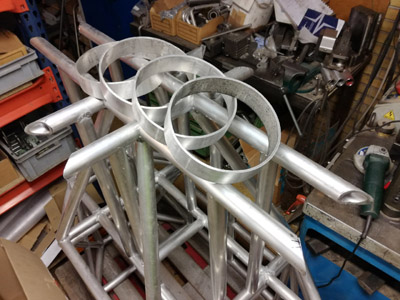 |
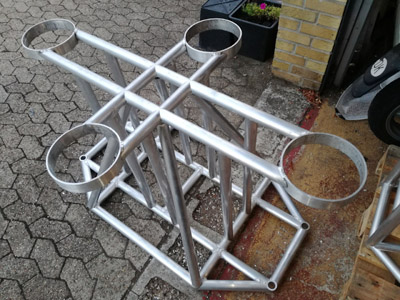 |
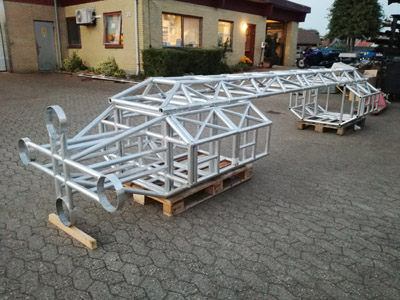 |
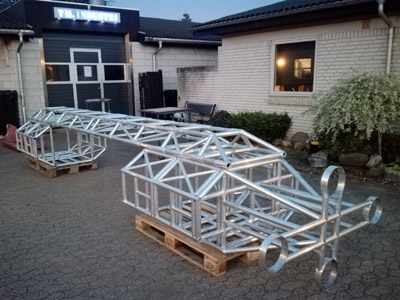 |
|
These four rings I did not make myself,
but I did get the tube endings grinded to fit them. |
And I did also weld them onto the rear section.
|
Time for an assemble.
|
No... there's not two... just from the other side.
|
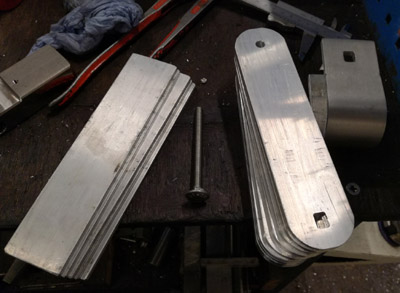 |
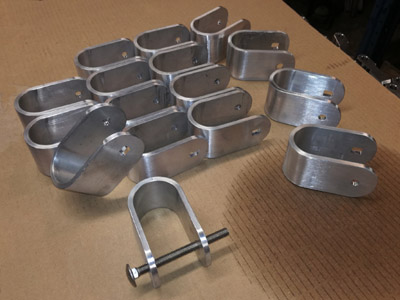 |
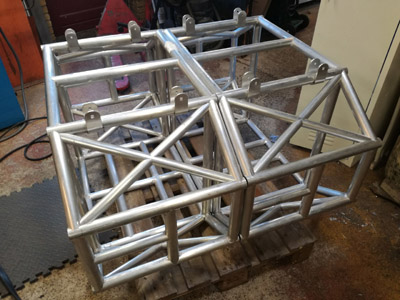 |
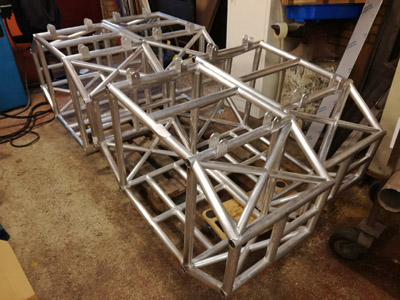 |
|
Now on to the 16 brackets
that shall hold the spine firm to the cages. |
Plates... some milling and drilling... and last bending.
|
The original filming model had 'L' shaped brackets.
But at this size I feel more confident with the 'U' shape. |
All 16 brackets welded onto the four cages.
|
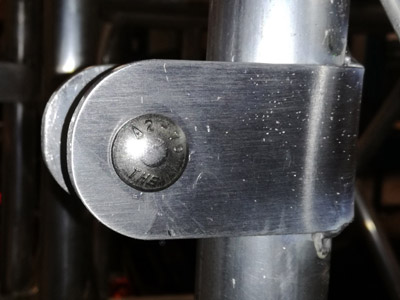 |
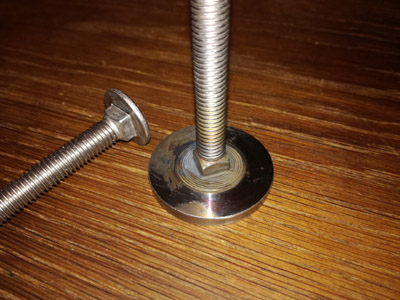 |
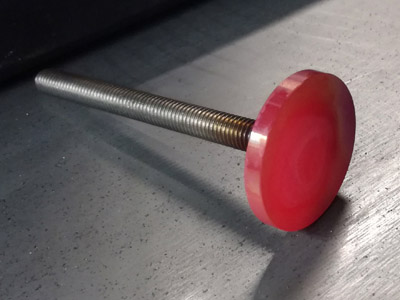 |
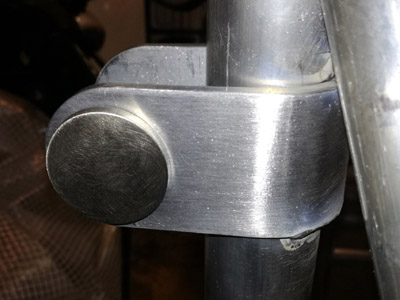 |
|
But that bolt's head doesn't look right.
|
Special discs were made, and welded onto the head.
|
And painted red... or... yes it is lava hot!!!
|
Almost perfect! The bracket should have been a little
longer or a bit more narrow, but I wont redo it.
|
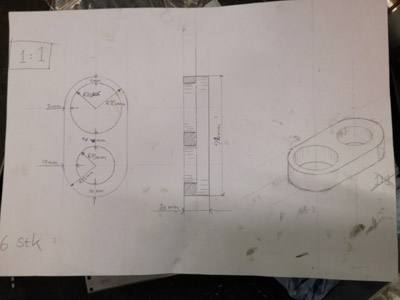 |
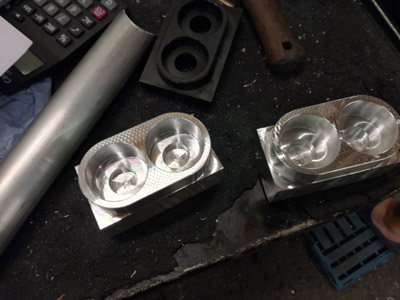 |
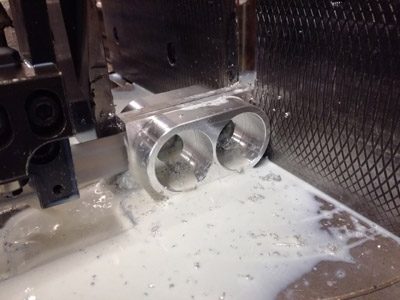 |
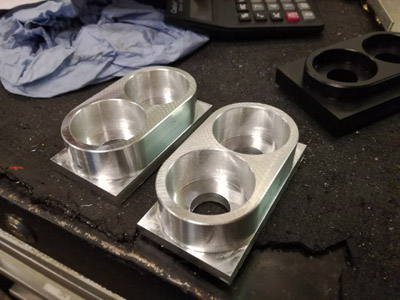 |
|
My first drwing of the six flanges for the front frame.
|
CNC milled. Two pieces from a block of aluminium.
|
Cut in...
|
...two.
|
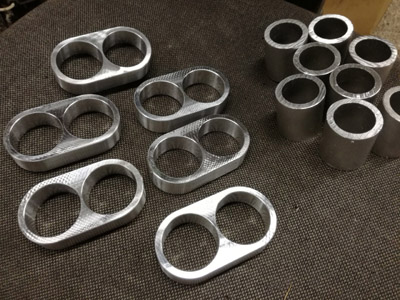 |
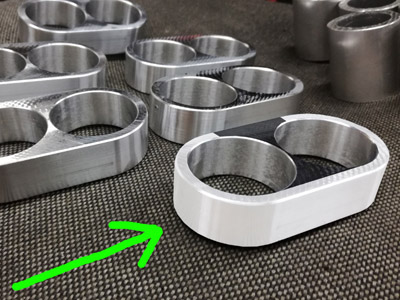 |
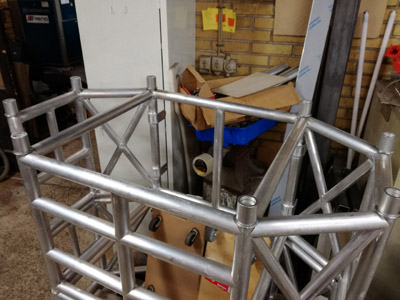 |
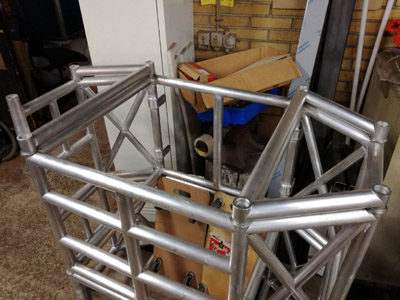 |
|
And then Milled again on both sides.
|
My paint plan, to make it look as on the original
44" Eagle.
|
Front frame can now be build up.
|
Now only missing the four tubes for the flanges.
|
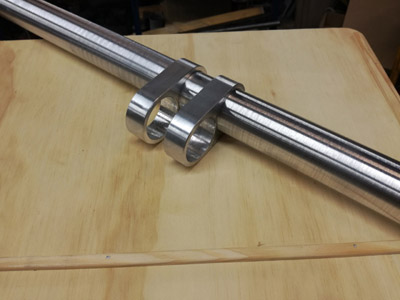 |
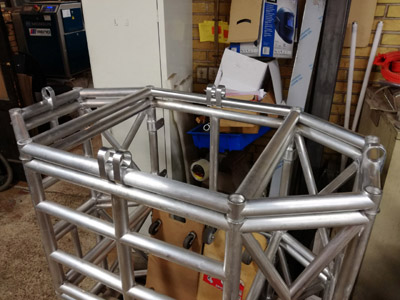 |
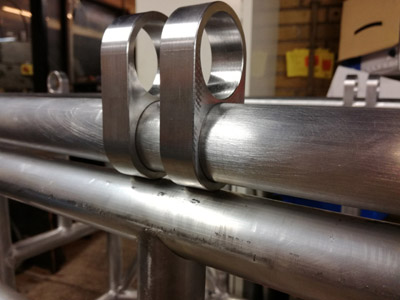 |
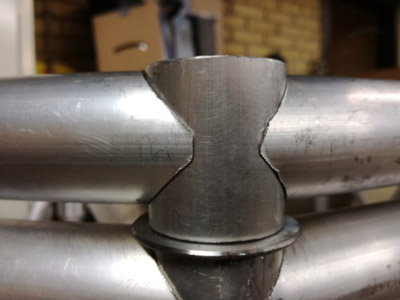 |
|
Top (or bottom) flange pair sled on.
|
Front frame complete with all flanges.
|
The space needed between front frame and cage...
|
...are created by extending these short tubes.
|
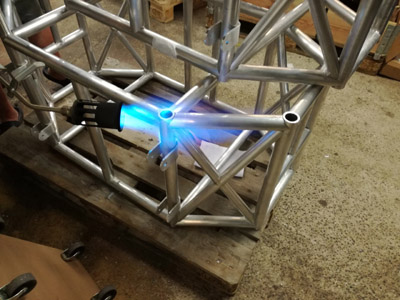 |
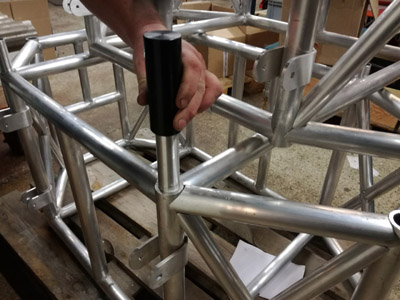 |
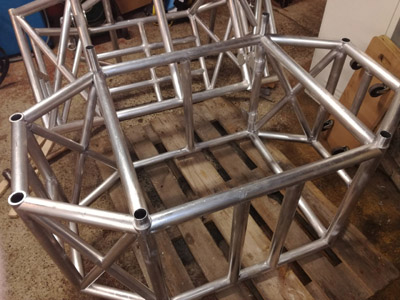 |
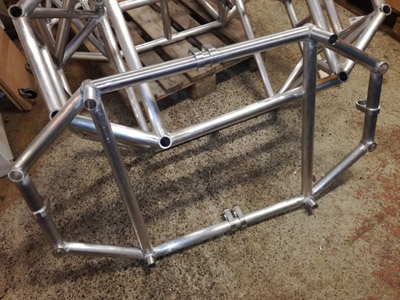 |
|
Now the cages guiding taps. First some heat...
|
...then it taps firmly in.
|
Upper taps longer than lower taps.
|
The front frame fitted with taps also.
|
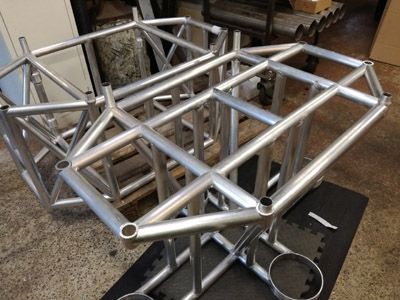 |
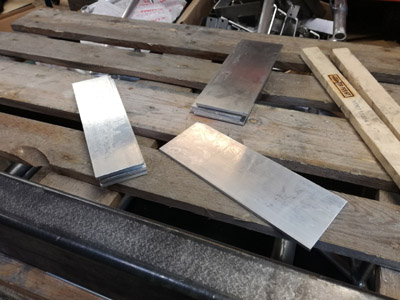 |
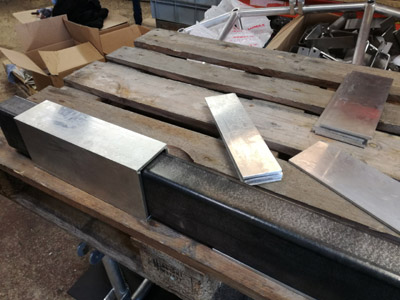 |
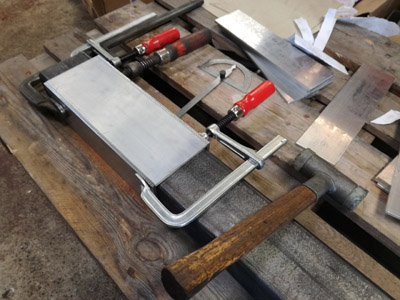 |
|
And the rear engine cage section also.
|
Now for the bearing construstion in the cages.
|
Guide boxes are made of aluminum plates...
|
...welded together to form a box.
|
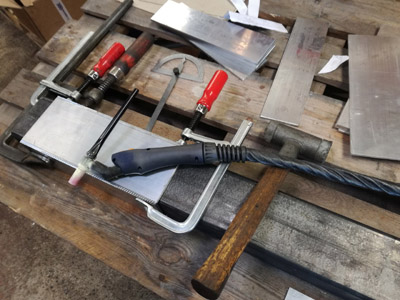 |
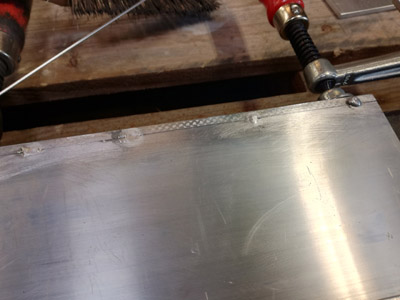 |
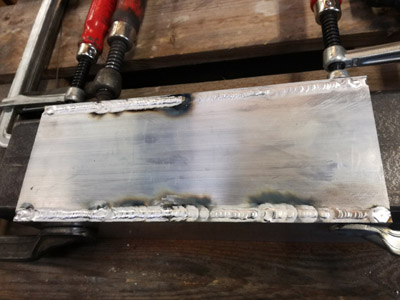 |
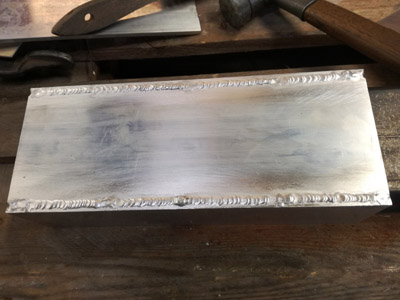 |
|
Ready to go...
|
First some spots.
|
I ran out of argon, shown by the black spots.
|
But after a refill, it could be all cleaned up.
|
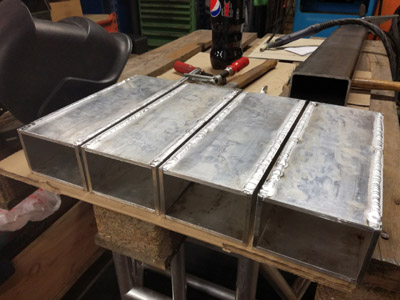 |
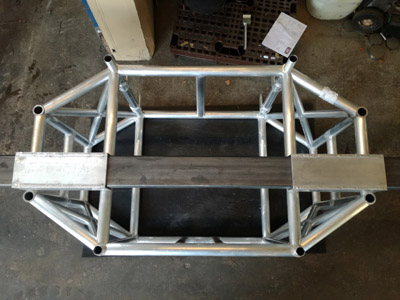 |
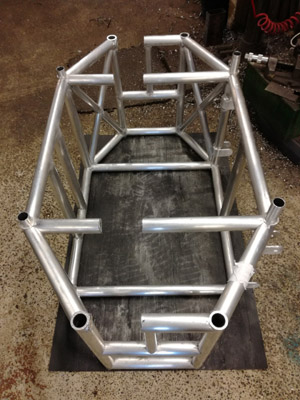 |
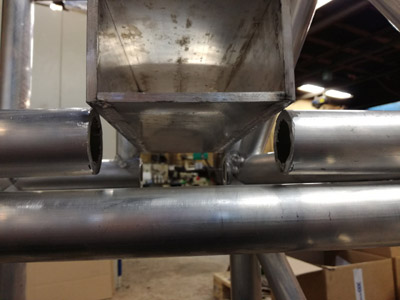 |
|
All four boxes ready.
|
Sled onto the bearing bar and laid on the cage...
|
...marked up - and then a strange feeling while cutting
in the beautiful cages. But it had to be done. |
Gap a bit too small.
|
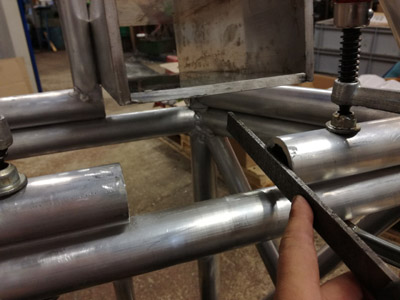 |
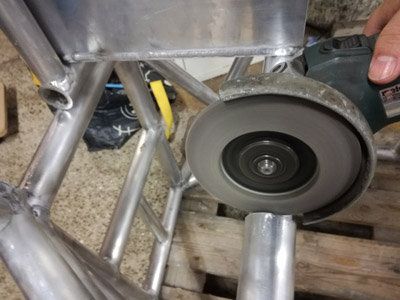 |
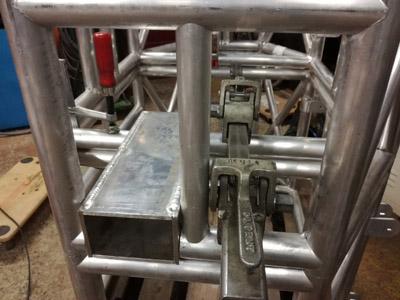 |
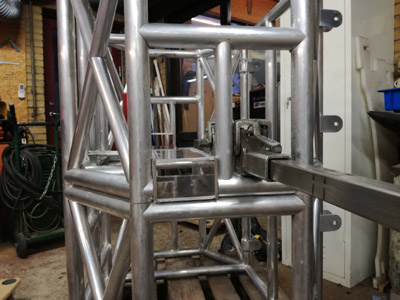 |
|
Adjusted with a file... but that took too long.
|
So I got help from an angle grinder.
|
The boxes in place in cage.
|
A dozer bar helps keeping the tubes in place.
|
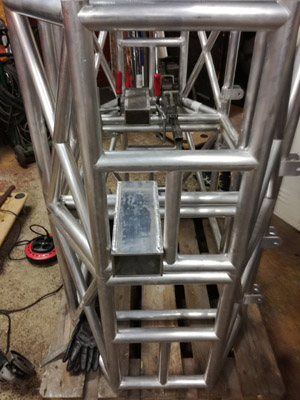 |
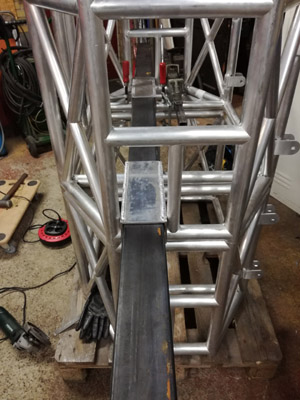 |
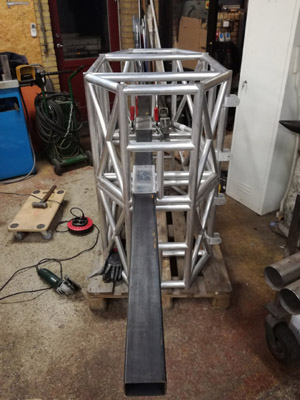 |
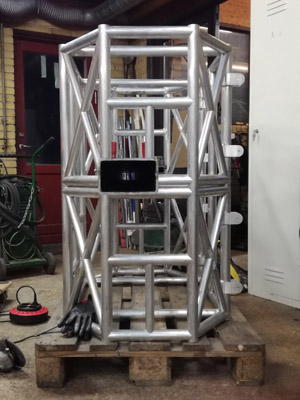 |
|
Ready to see if the bar fit.
|
It did - and after some small adjustment...
|
...there were enough free space around.
|
Tunnel view.
|
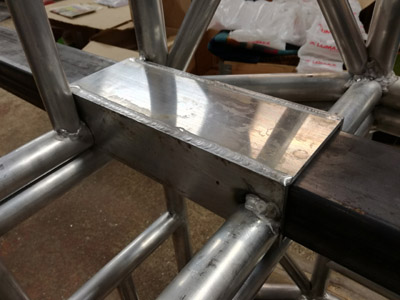 |
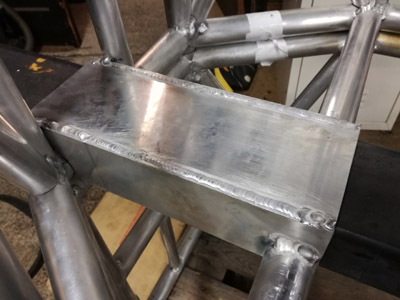 |
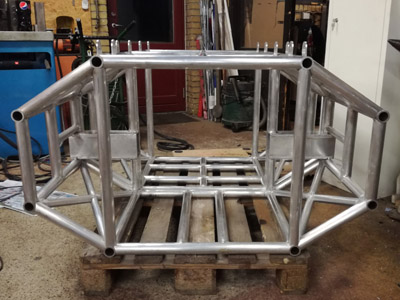 |
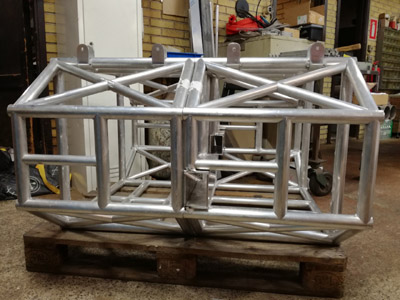 |
|
The boxes welded in place.
|
Cleaned up.
|
Until a test it looks like the idea will work.
|
This bearing construction differs from the original
Eagle.
|
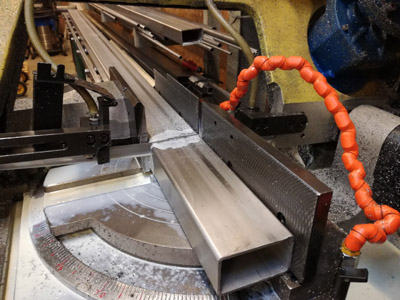 |
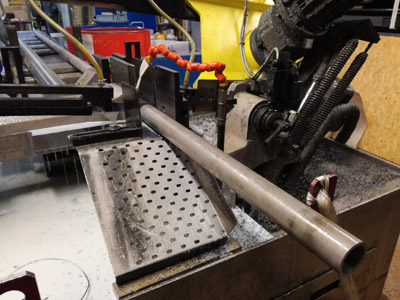 |
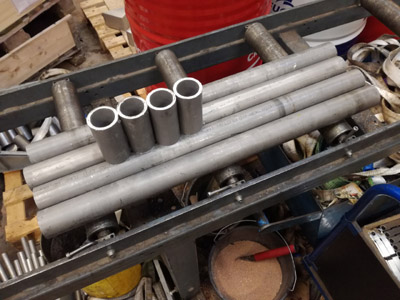 |
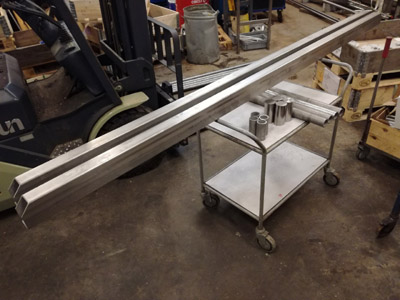 |
|
The black steel bars were exchanged for stainless
ones.
|
Also stainless steel for the legs. Cutting tube.
|
Four legs and four tubes to be integrated with the
bars.
|
The two transverse bars.
|
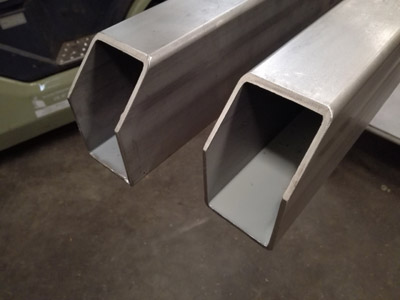 |
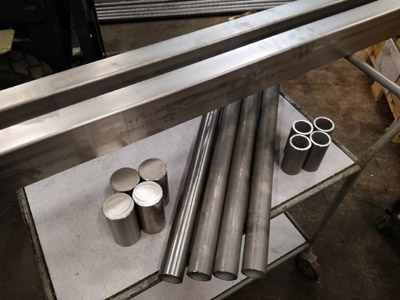 |
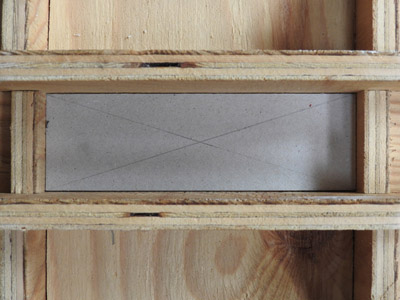 |
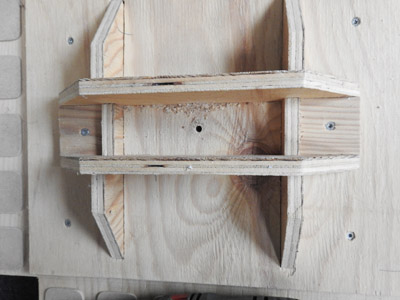 |
|
An angled cut to fit inside the shoulder pods.
|
Package so far. Back to the wooden parts.
|
Finding the center of the foot..
|
Hole drilled through.
|
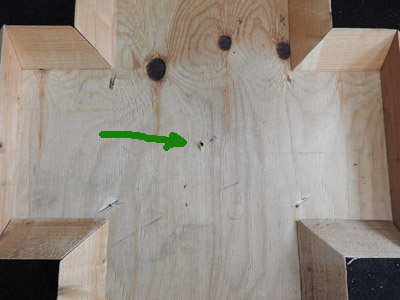 |
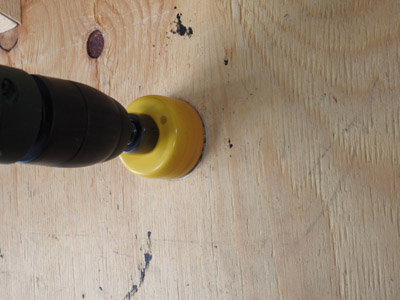 |
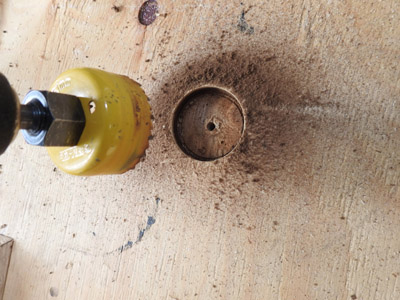 |
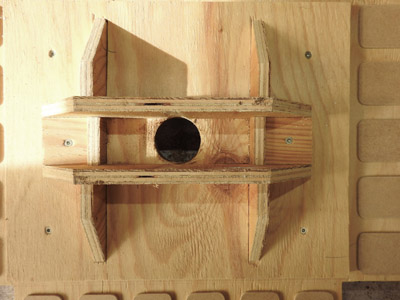 |
|
To locate center from beneath.
|
Then drilled larger...
|
...through two layers of plywood.
|
And the hole for the stainless leg are done.
|
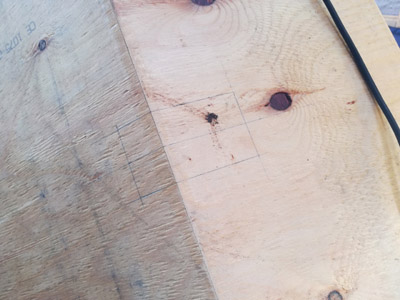 |
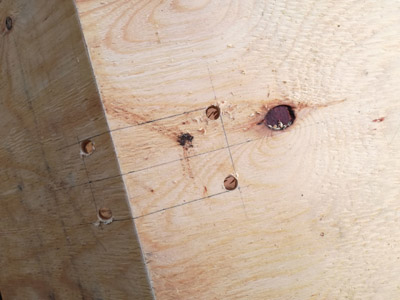 |
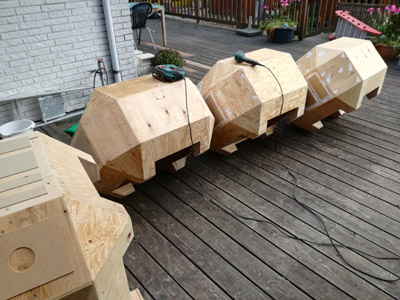 |
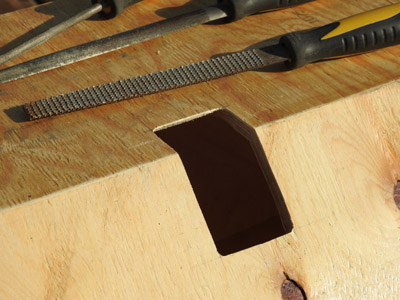 |
|
The shoulder pods also need some drilling.
|
Four corner holes.
|
And then the jigsaw.
|
And last some filing.
|
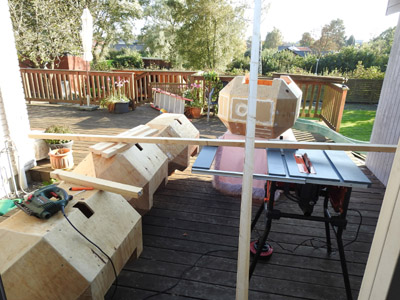 |
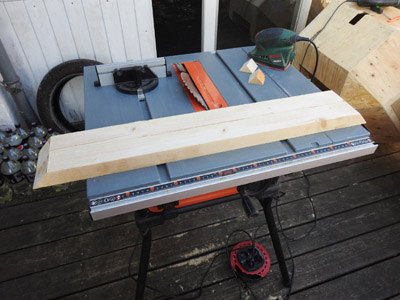 |
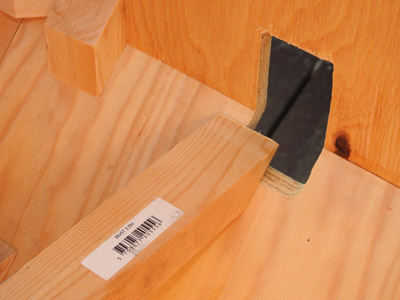 |
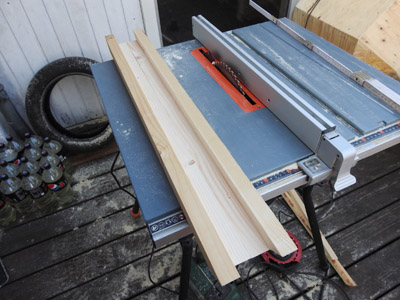 |
|
Ready for the inside bar-rest-guide.
|
45 degree ends.
|
checking...
|
Cut-outs.
|
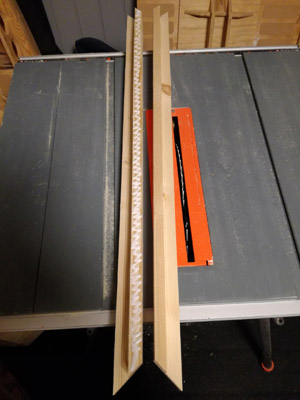 |
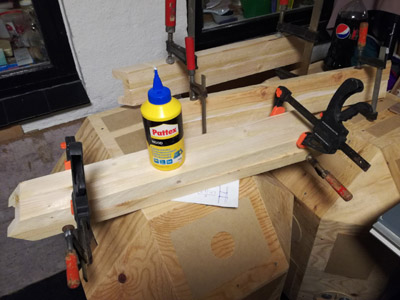 |
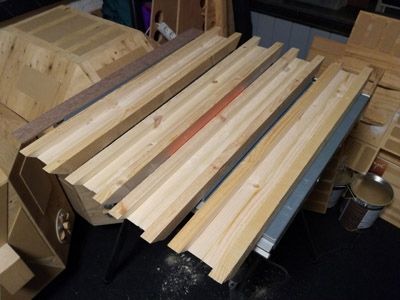 |
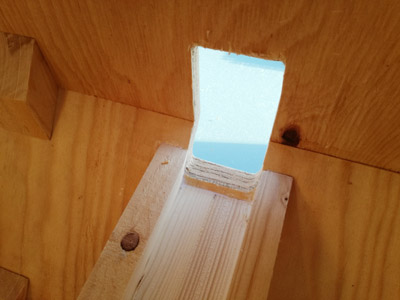 |
|
Glue.
|
Pressure.
|
Four guide-shoes ready to be inserted.
|
A little step up, make room for...
|
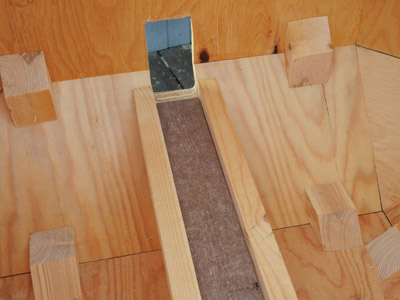 |
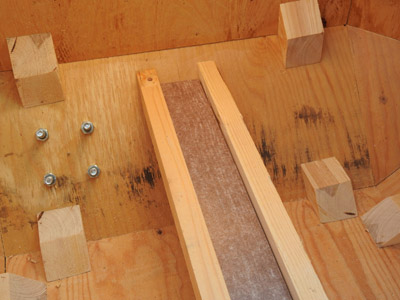 |
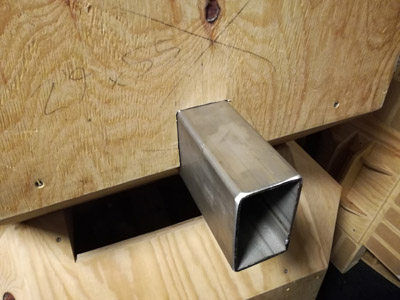 |
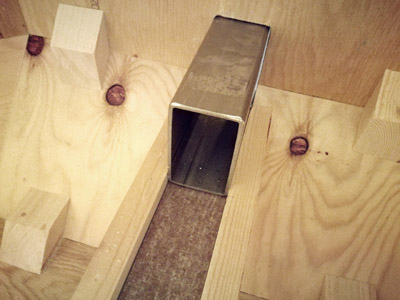 |
|
...a layer of smooth click-floor that I had already.
|
Outer end (the four bolts are the Saturn V part).
|
And then checking with a leftover bit of bar.
|
Fits nice on the inside too.
|
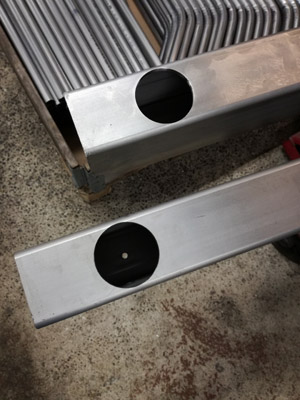 |
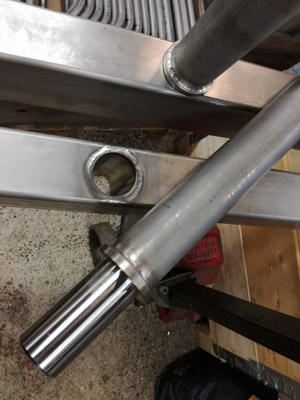 |
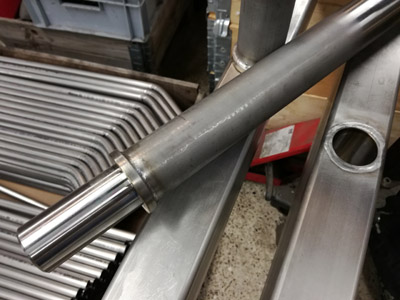 |
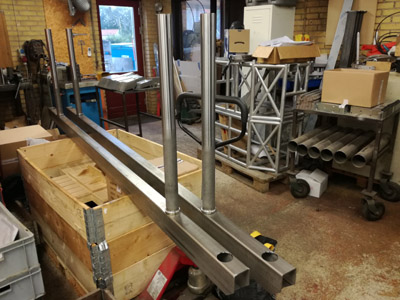 |
|
Back in the machinery, holes were drilled.
These are for attachment inside the shoulder pod. |
A special tap welded in one end of the legs.
|
To fit into the bushing welded into the transverse
bar.
|
The stainless steel bearing parts assembled.
|
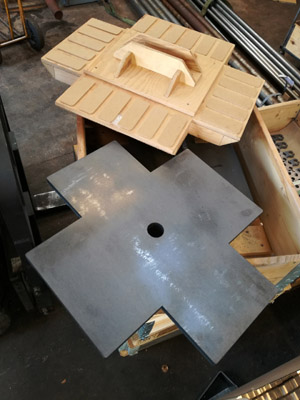 |
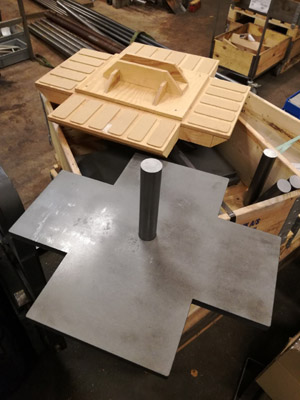 |
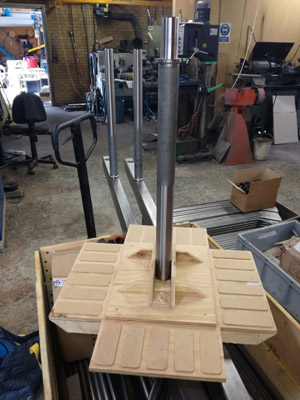 |
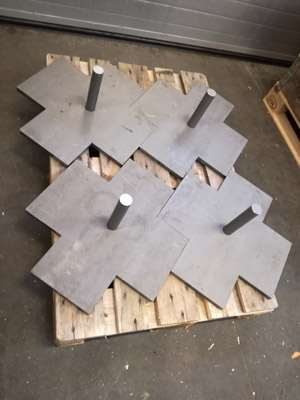 |
|
Four 'bearing' feet laser cut. Weighing 35kg each.
|
A rod welded tight to greet the open end of the leg.
|
And then having the wooden foot slided down over.
|
140kg feet on a Euro pallet.
|
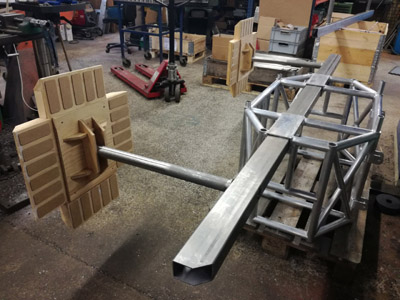 |
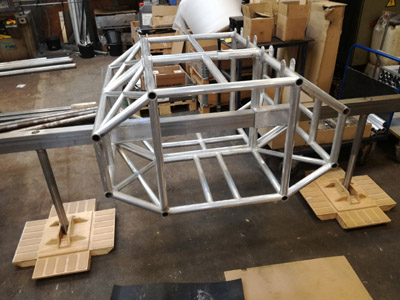 |
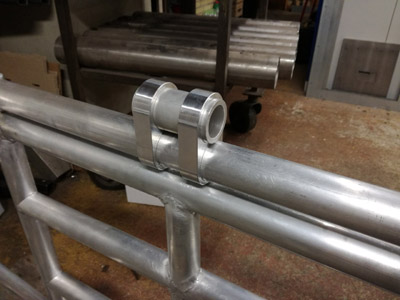 |
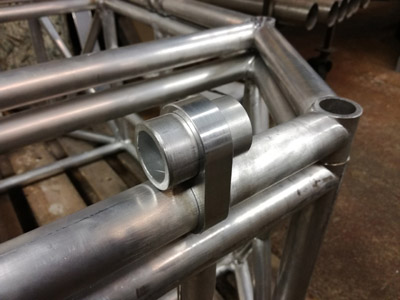 |
|
First try on raising half of the construction.
|
Once tipped up and it stood solid.
Mission completed... for now. |
Meanwhile I cut four short aluminium tubes for the
flanges that shall connect with the Command Module brackets. Top/bottom
shown above...
|
...and above here are shown the side flange with tube.
|
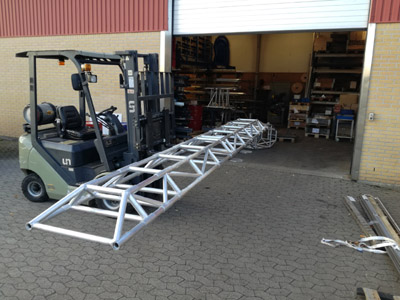 |
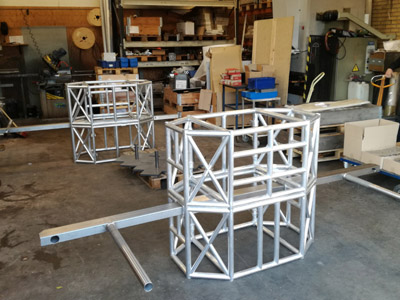 |
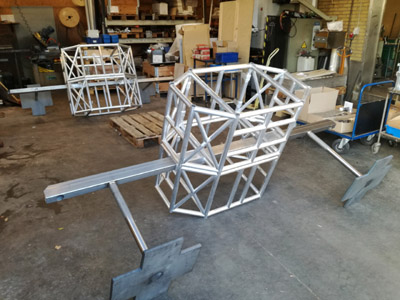 |
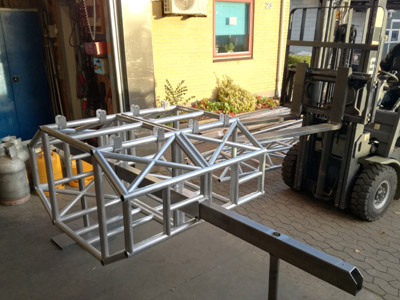 |
|
First try on raising the complete tube construction.
Spine laying ready on the fork lift. |
First the cages are assembled laying down.
|
The heavy feet mounted. The cages tip by the weight.
|
Then the cages easily raised up into position.
|
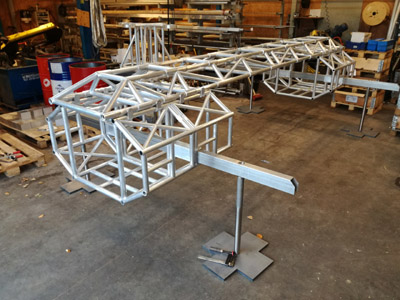 |
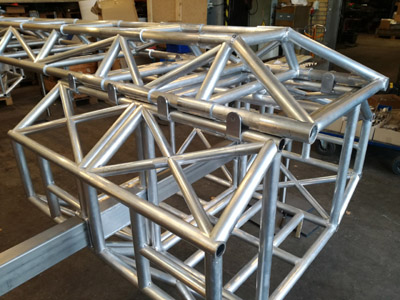 |
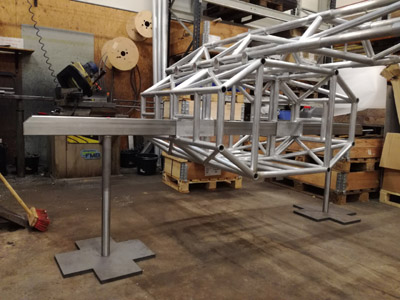 |
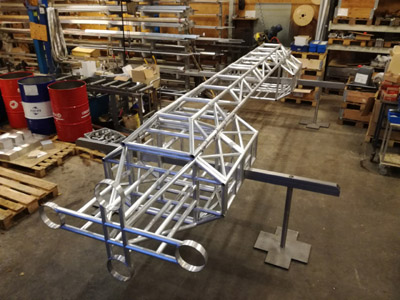 |
|
The spine is a two man job only. Weiging 70-80kg.
|
It was gripped nice by the U-shaped brackets.
|
Holes were drilled into the spine...
|
...and the special made bolts inserted and tightened.
|
The below two videos... one of the special bolts mounted and then another video of a second 'bridge-walk'.
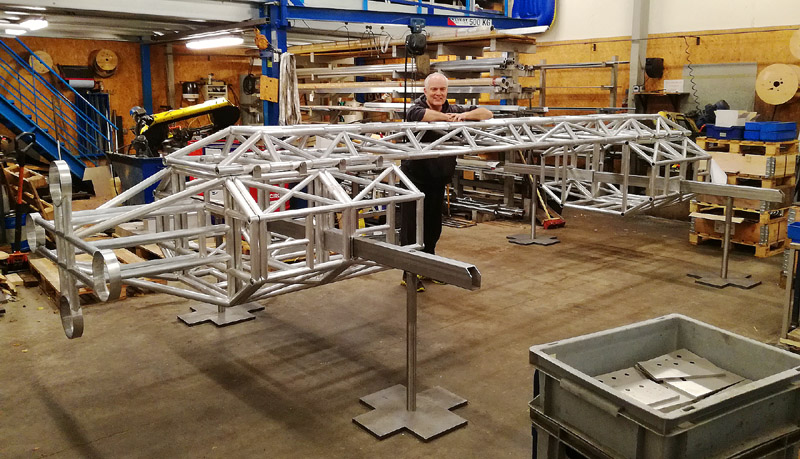 |
|
For scale comparison I added... ...me!
The structure still short of engine bells and command module, which is about 2 extra meters. Speaking of... check below... |
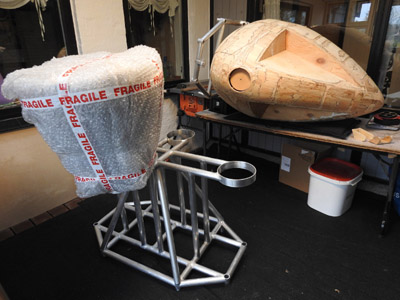 |
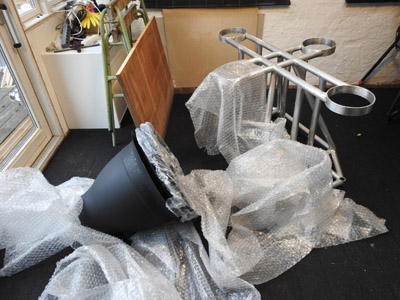 |
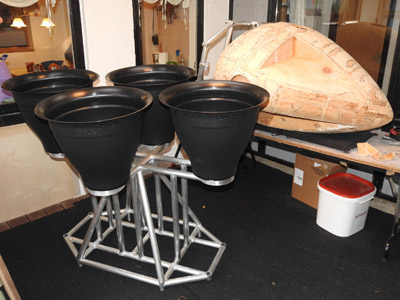 |
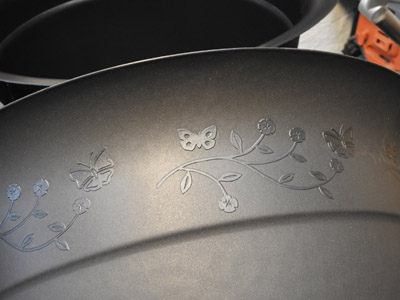 |
|
A large package I've had for awhile now... time to
open!
|
Content: 4 large plant pots... say what!?!?
|
Look at those trumpet endings... no no no.
|
And sweet flowers and butterflies.
|
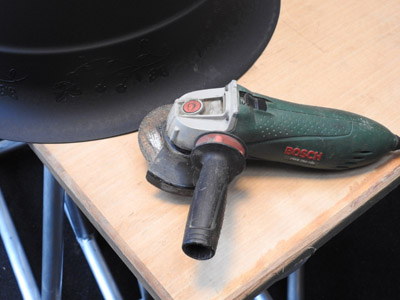 |
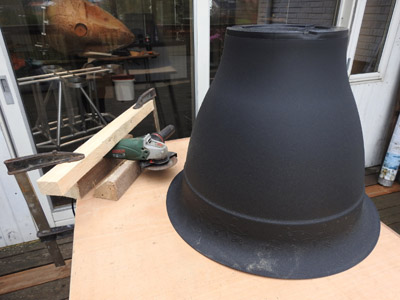 |
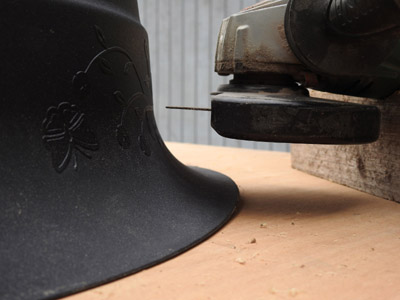 |
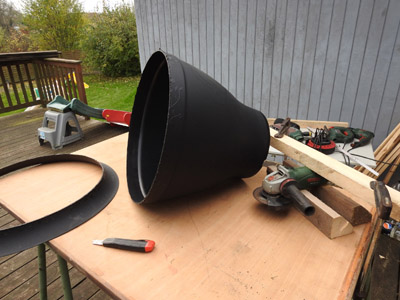 |
|
Forward with the anglegrinder.
|
Grinder fixated to the working table.
|
Set height.
|
Off goes the trumpet edge.
|
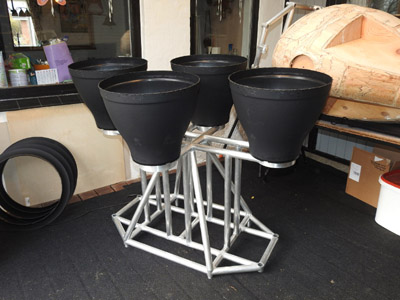 |
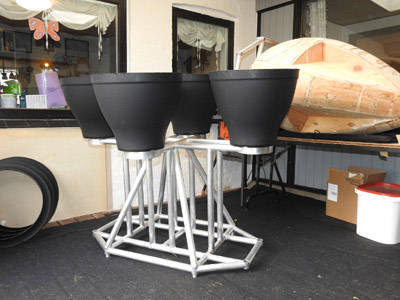 |
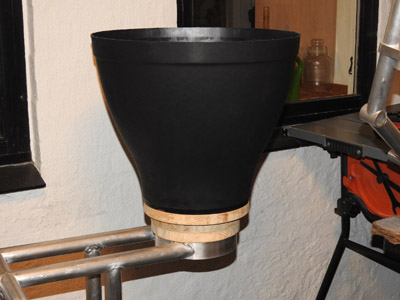 |
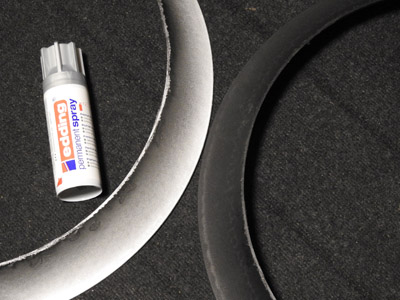 |
|
Now that's better!
|
But I need to make an adapter form to connect the
engine bells to the rear engine section frame. |
It's not 100% acurate, but I think this will do.
|
Paint test... Edding silver spray... to pass as aluminum.
|
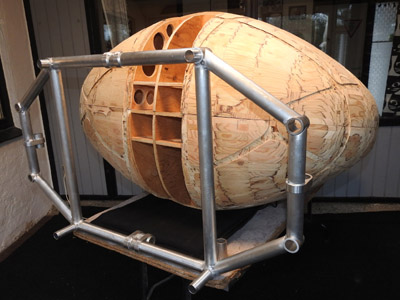 |
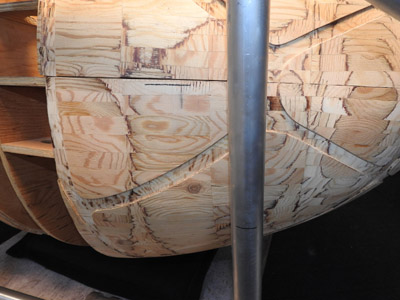 |
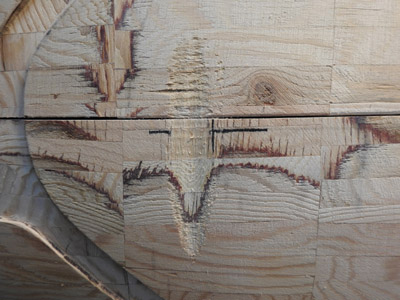 |
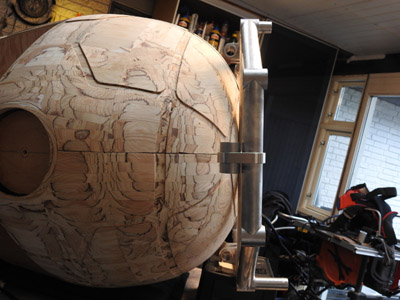 |
|
Geting ready for the Command Module brackets.
|
Measuering and lining up...
|
Had to file a bit in the CM to make the front frame
fit.
|
Perfect fit left / right.
|
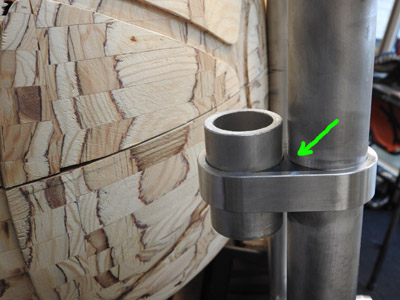 |
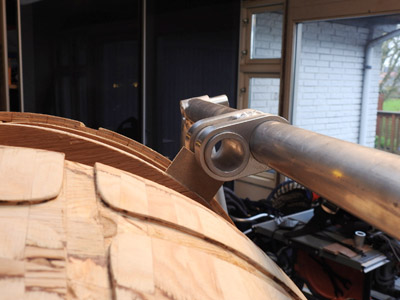 |
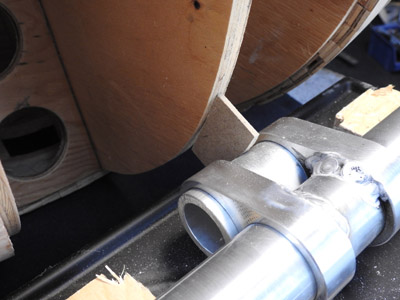 |
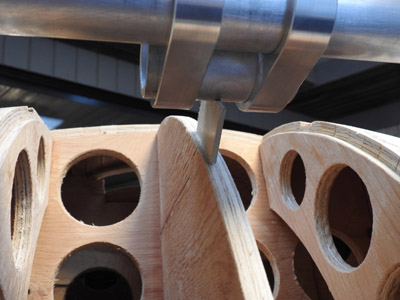 |
|
My paint plan to make these solid flanges look as
on
the filming model. |
A small brick...
|
To even out the distance at bottom...
|
...and top.
|
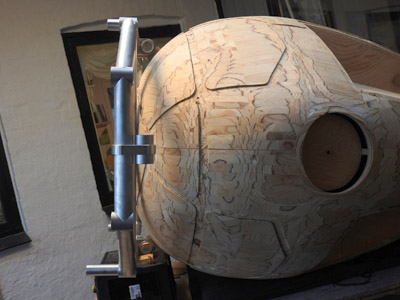 |
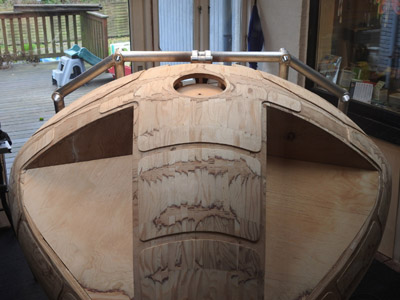 |
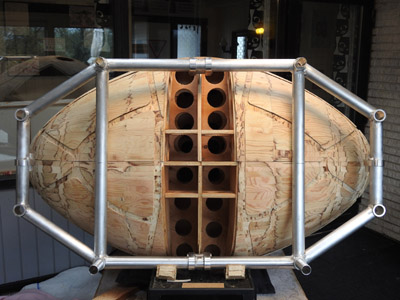 |
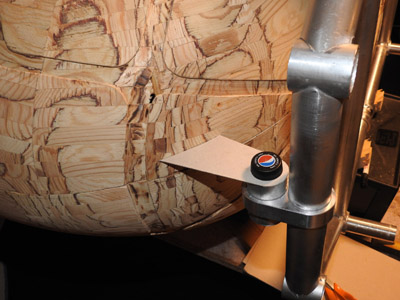 |
|
Perfect fit top / bottom.
|
front view.
|
Back view.
|
Cardboard template for side bracket.
|
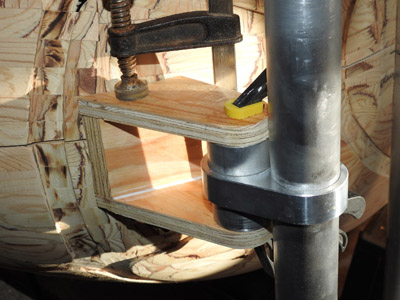 |
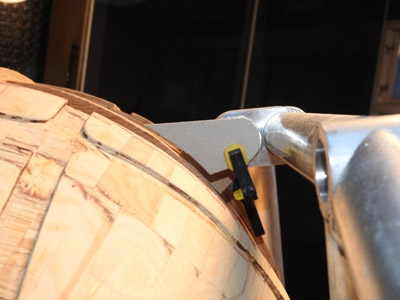 |
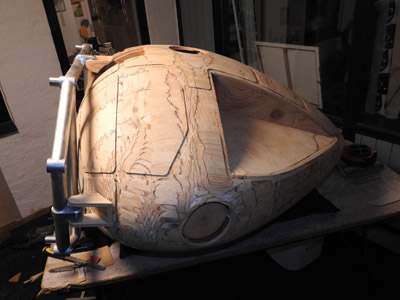 |
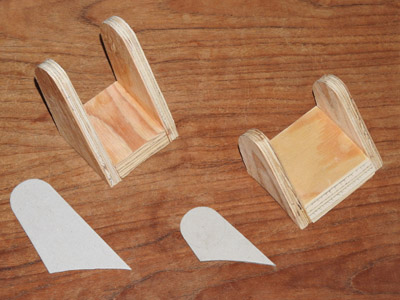 |
|
Then another template of wood is made.
|
Cardboard template for top bracket.
|
The wooden templates seems to fit well.
|
Both wooden templates ready to be made in aluminum.
|
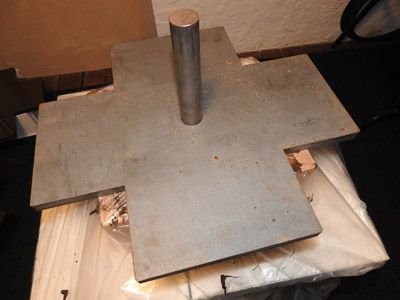 |
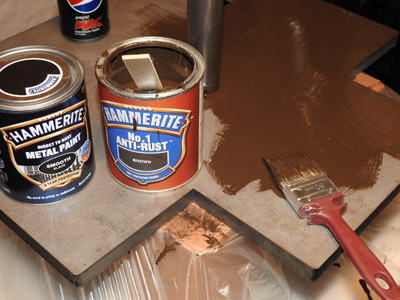 |
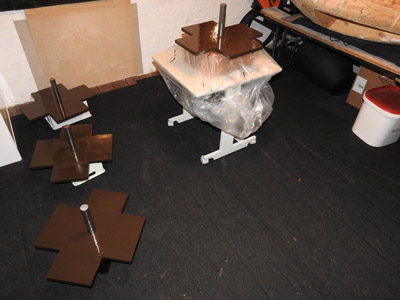 |
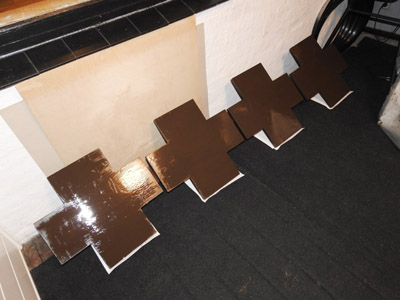 |
|
Small spots of rust have appeared on the feet.
|
So on with some Nutella - and then som Hammerite.
|
Four feet painted on top...
|
...and four feet painted beneath.
|
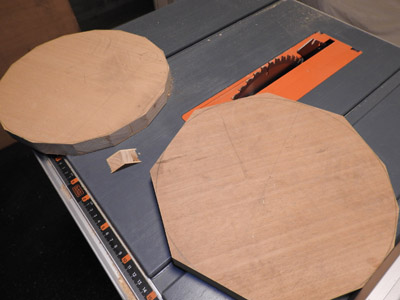 |
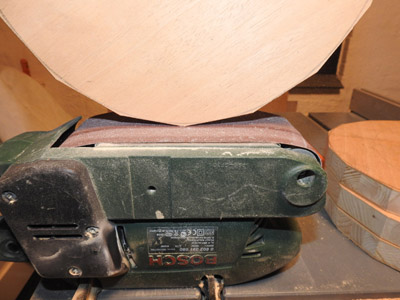 |
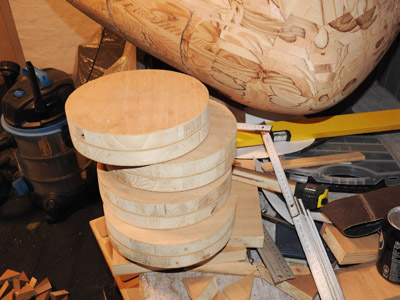 |
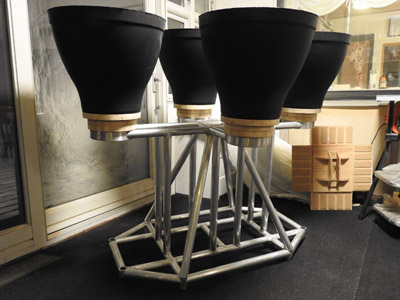 |
|
More discs made for the remaining three thrusters.
First four cuts to make an rectangle, then four 45 degree cuts to make an octagon, then last eight 22.5 degree cuts. |
The rest of the edges are grinded down
to make a circular disc. |
The smaller ones screwed together as pairs
to make thicker discs. |
And the larger ones connects to the thruster.
All four now done. However the even smaller ones for the inside of the aluminum rings are yet to be made. |
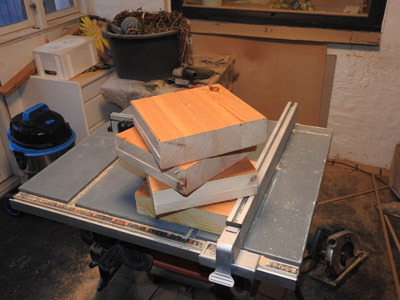 |
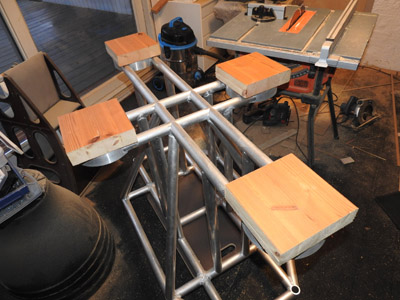 |
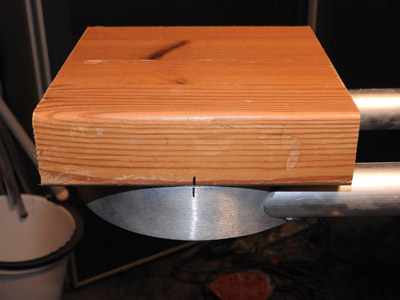 |
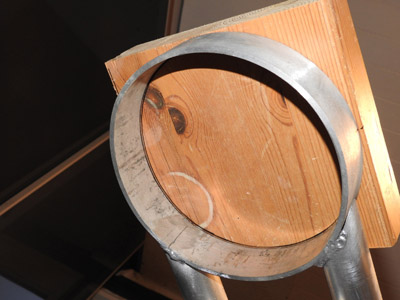 |
|
Four blocks sawed from an old wooden table.
|
Served on the four rings.
|
'Rotation' marked for later use.
|
Also ring marked beneath.
|
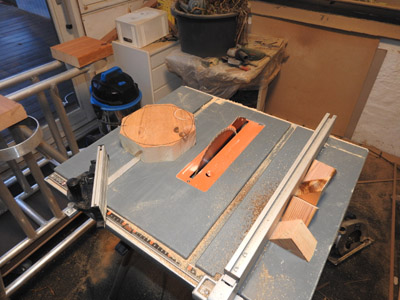 |
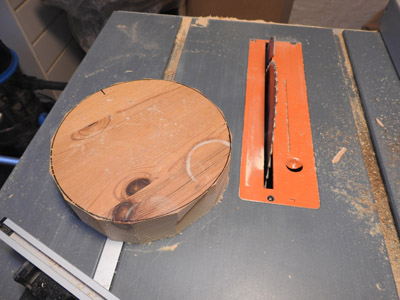 |
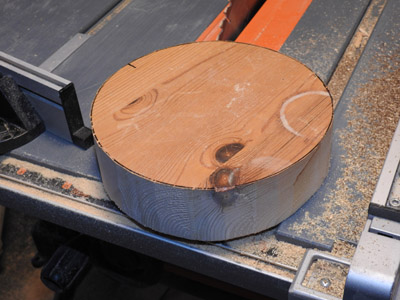 |
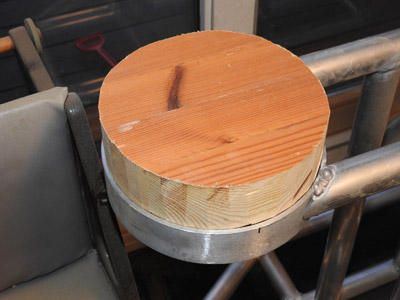 |
|
Same procedure as the other end parts.
|
Sawed slowly in to the circle mark.
|
That's as close that I get with the table saw.
|
Just a little too big now. The rest will the band
grinder do.
|
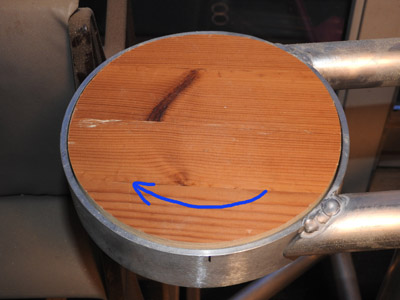 |
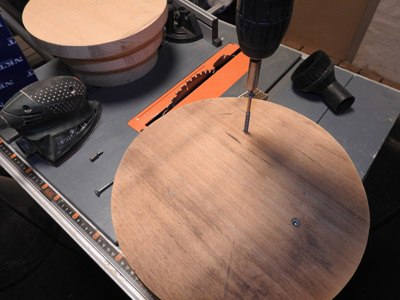 |
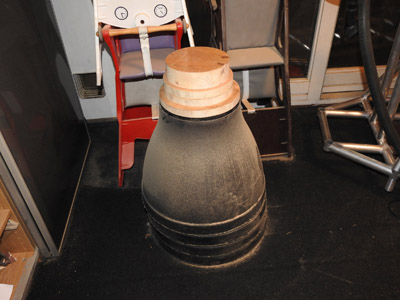 |
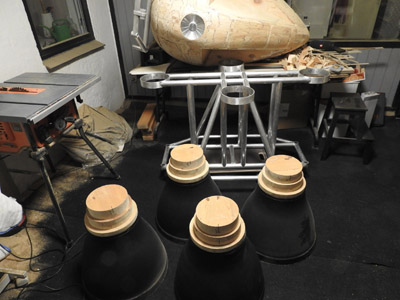 |
|
There! It sinks nicely down into the ring.
Because the rings aren't 100% circular, the wooden disc will lock tight into the ring when turned. That's exactly the idea. |
Now all the discs can be screwed together,
on top of eachother. |
One engine bell (stacked on top of the other three).
|
All four engine bells now ready to be inserted
into their each own dedicated ring on the rear frame. |
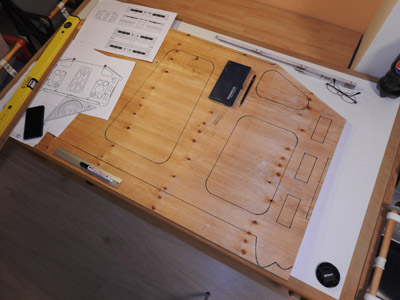 |
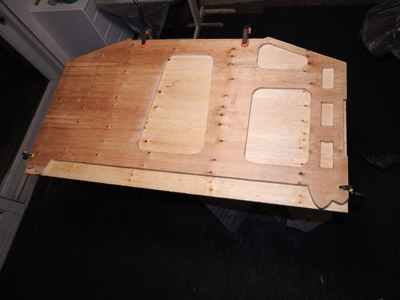 |
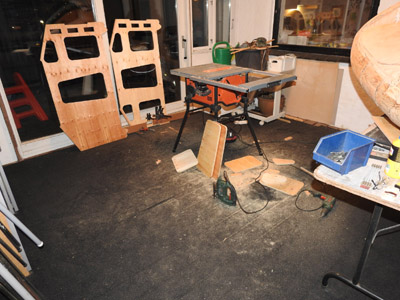 |
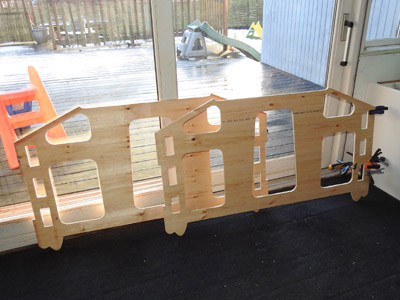 |
|
Next big step.... the Passenger Pod.
Lines measured and drawn |
Sawed and copyed to next board.
|
A mess on the floor.
|
Both gables sawed... and floor cleaned up.
|
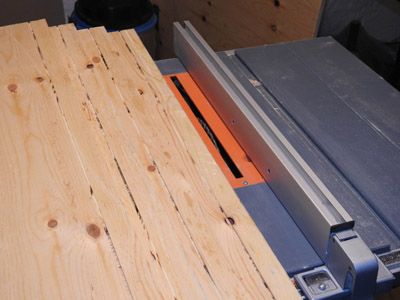 |
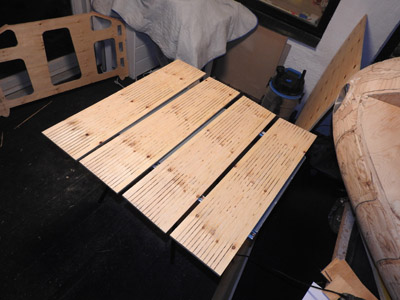 |
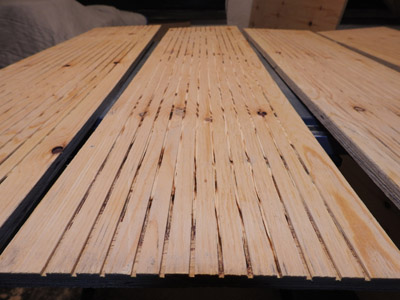 |
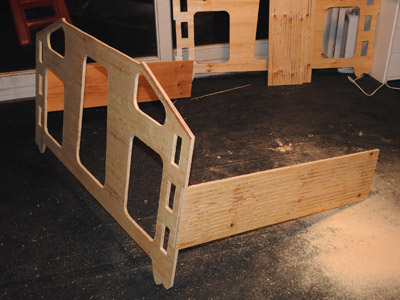 |
|
Tiny tracks cut on the table saw.
|
Four sectiones with tracks.
|
Not bad.
|
They fit here.
|
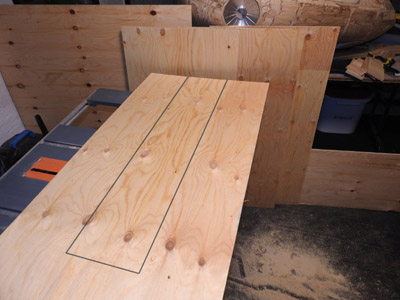 |
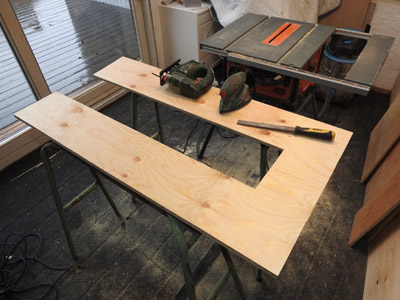 |
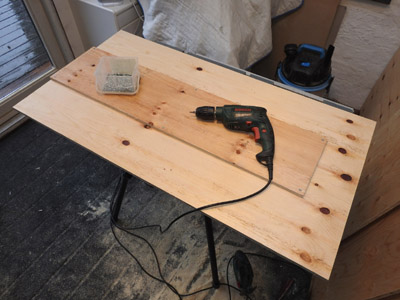 |
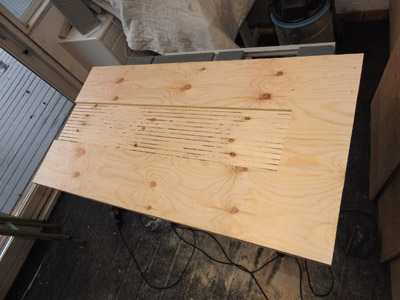 |
|
Surrounding board lined up.
|
And cut.
|
Track section screwed onto the back.
|
The result.
|
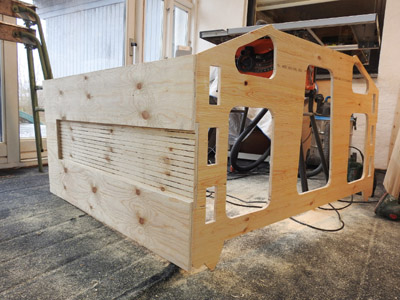 |
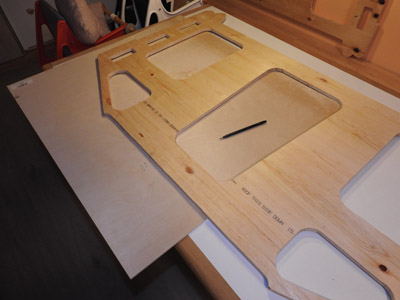 |
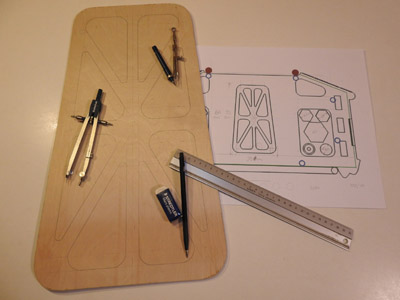 |
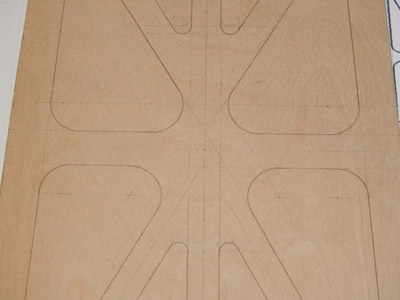 |
|
Looks good.
|
Even though the gables are not vivible when the pod
is mounted to the Eagle, I have to do the details.
No cheating here. |
This is actually wrong line up, but was corrected
before cutting. |
Technical lines.
|
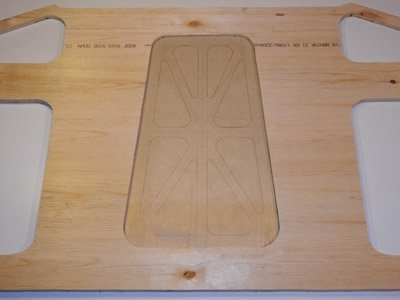 |
|
|
|
|
Here's the lines corrected.
|
Ready to drill the corners.
|
And the longsides is cut with the jigsaw.
|
Voila.
|
|
|
|
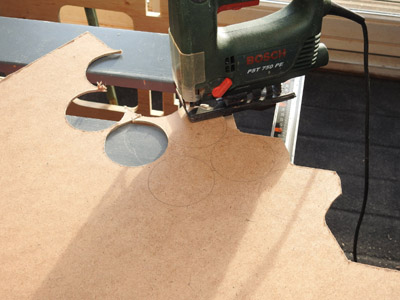 |
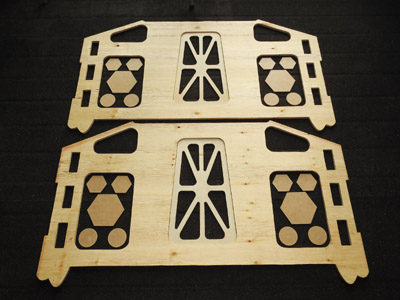 |
|
Voila x 2.
|
Placed in place.
|
The rest of the details are cut out from a cheaper
board.
|
Completed.
|
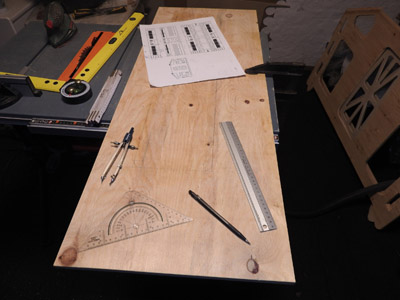 |
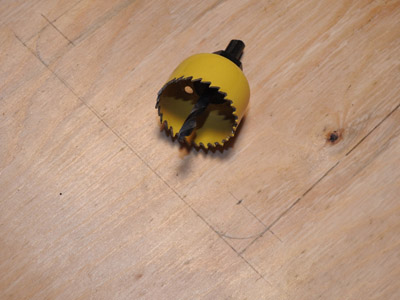 |
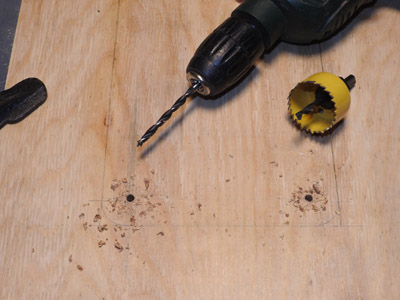 |
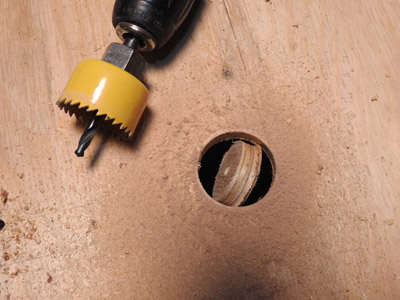 |
|
Next... the window sections.
|
Again... measuring... line drawing.
|
Pre-drilling the corners.
|
First corner.
|
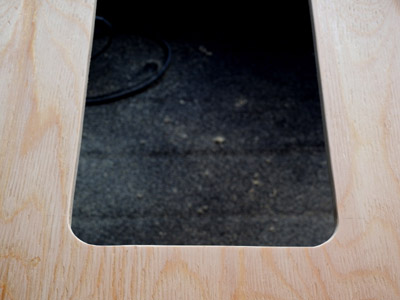 |
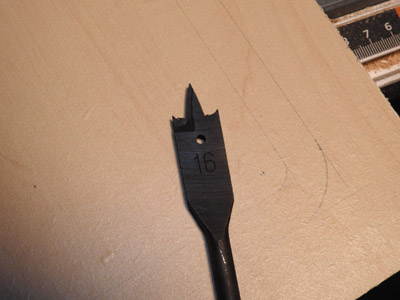 |
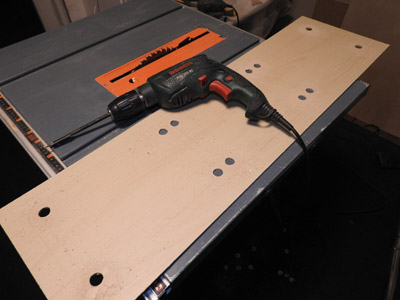 |
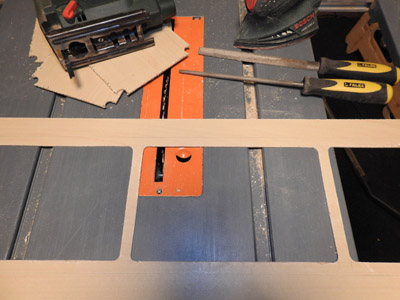 |
|
And a lot of corners and longsides after.
|
The thinner window separation section.
|
Lots of cornes drilled with a spade drill.
|
And the jigsaw did the rest.
|
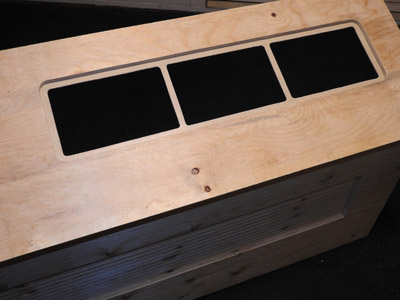 |
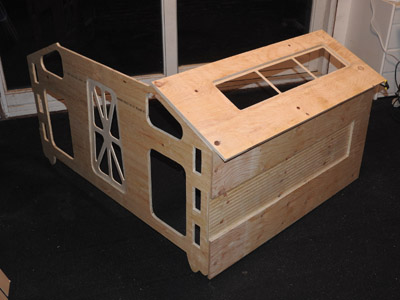 |
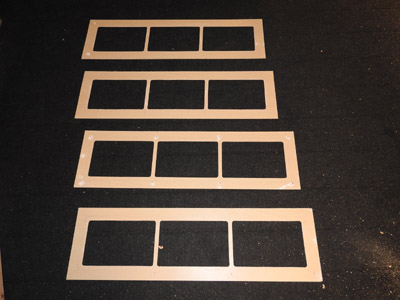 |
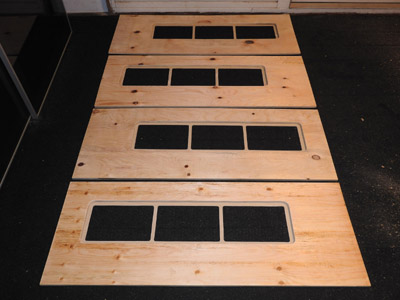 |
|
One window section...
|
...fitted to one gable and one side.
|
Then there's a lot of repeating work to be done.
|
But as times goes by... finally all four done.
|
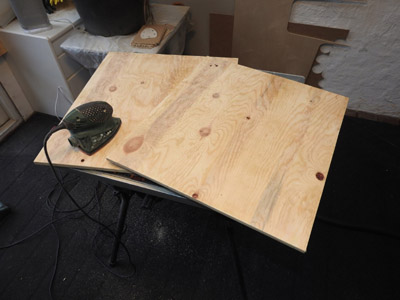 |
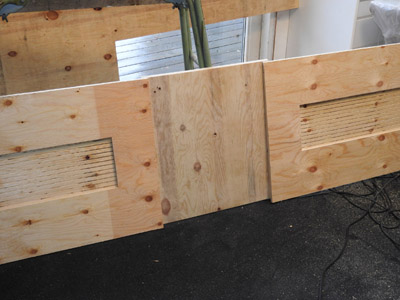 |
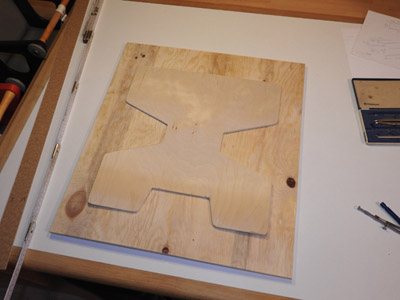 |
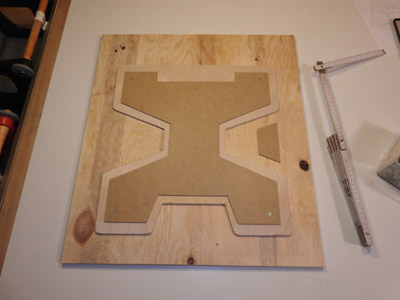 |
|
Next - the middle section...
|
....of the sides.
|
Side door detail 1.
|
Side door detail 2.
|
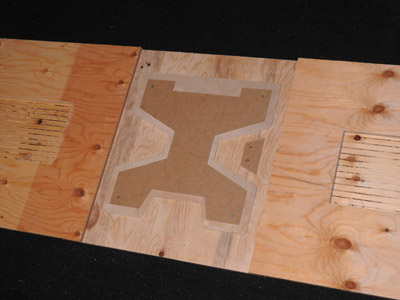 |
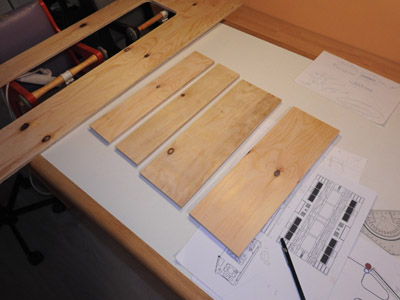 |
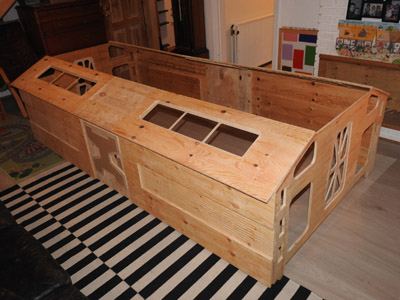 |
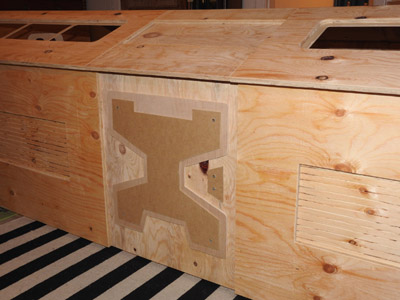 |
|
fitted between two side sections.
|
Additional boards above the door.
|
All assembled.
|
Closer look at the door section.
|
 |
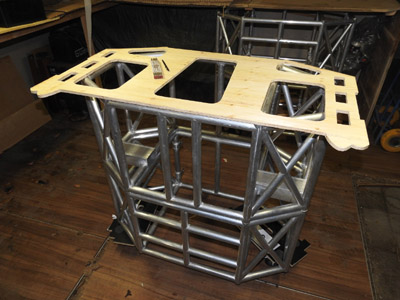 |
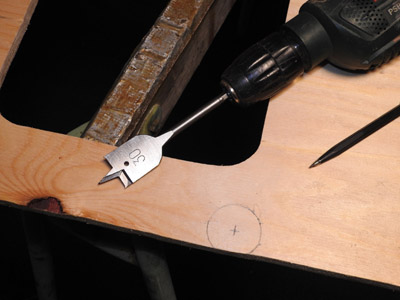 |
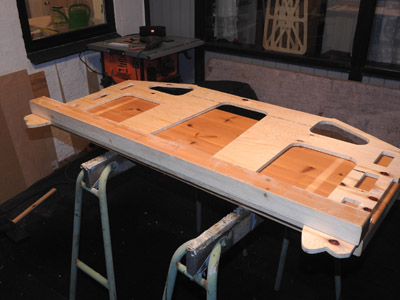 |
|
Everyhting taken apart.
|
Now time to gables fit the cages.
I draw two circles. |
And drill holes.
|
A loadbearing batten is mounted.
|
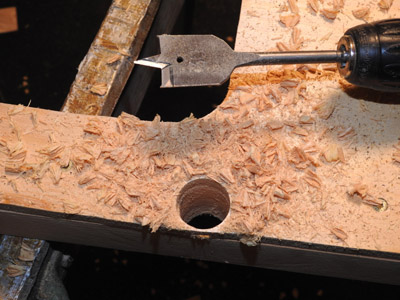 |
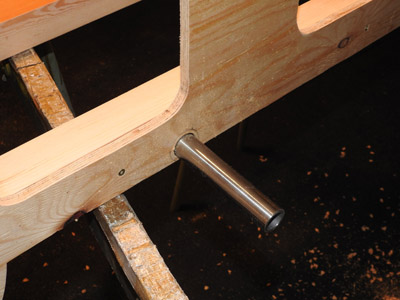 |
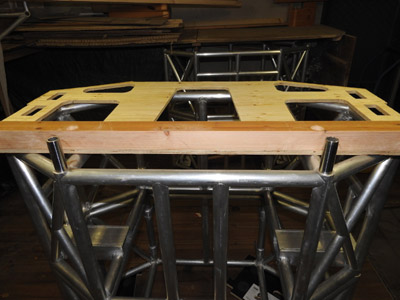 |
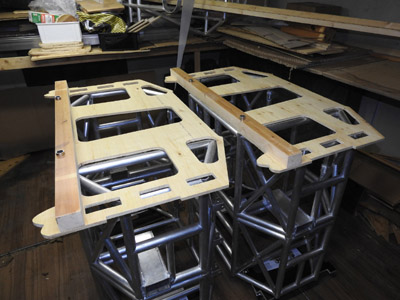 |
|
And some deaper drilling.
|
Kurt made these bearing taps.
|
Two pieces for each gable.
|
Complete.
|
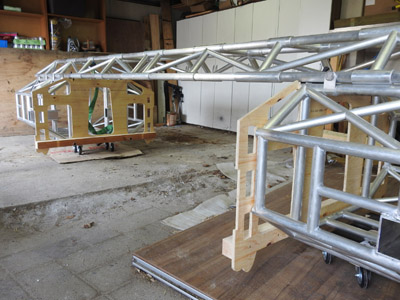 |
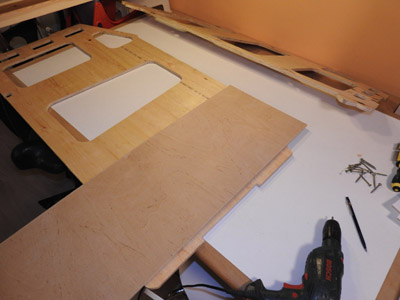 |
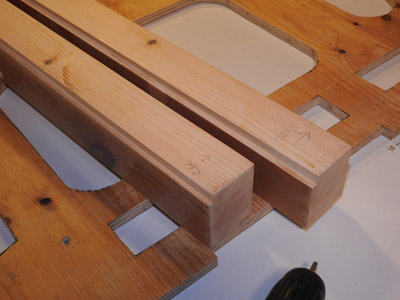 |
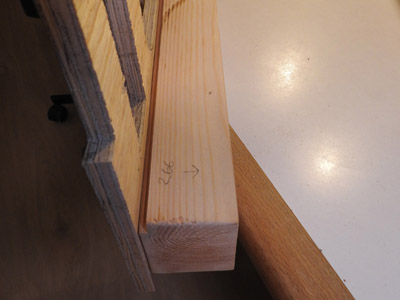 |
|
The I had to assemble the cages with the spine.
To get the exact meaure between the gables. |
Inbetween I made the backboard
for the details on the gables. |
A track cut to support the back board at the bottom.
|
Like this.
|
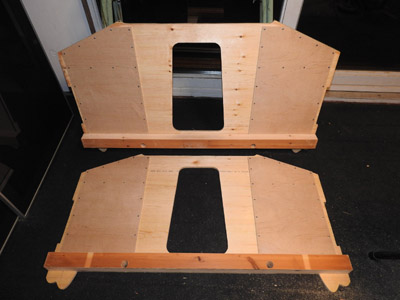 |
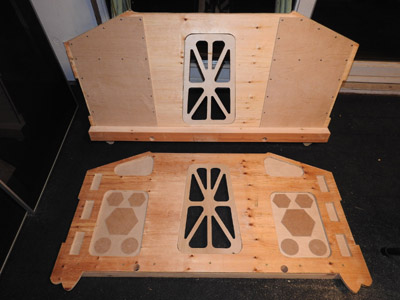 |
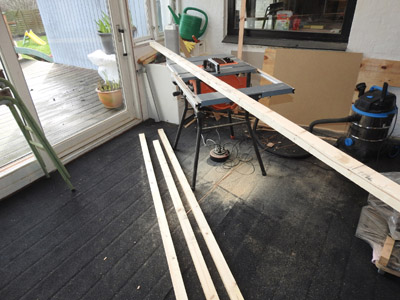 |
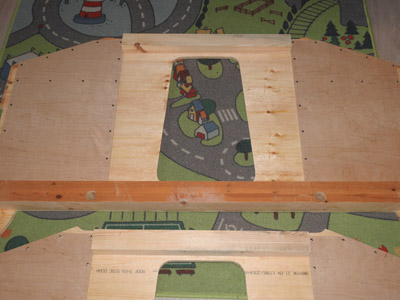 |
|
The rest of the back board are screwed on.
And later glue will be added. |
Details placed.
|
Next. The lenght of the pod.
Battens cut. |
Two small battens for the top of the gables.
|
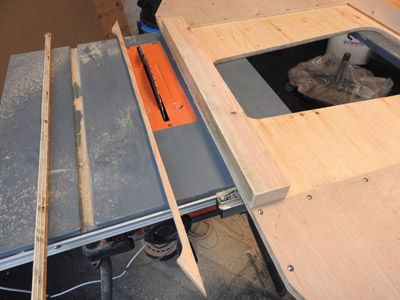 |
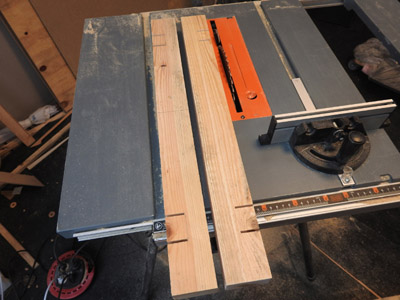 |
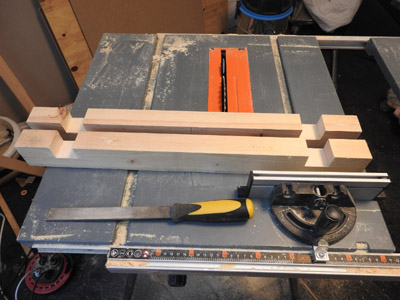 |
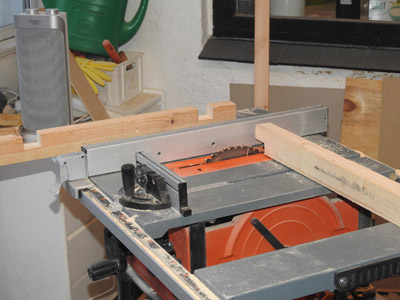 |
|
A change of my design. I thought it would be better
having the roof board reaching over the gables. |
The short supporting battens.
|
Sawed multiple times made a wide track.
|
And the same method to the ends of the long battens.
|
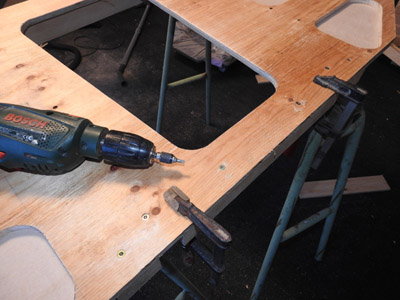 |
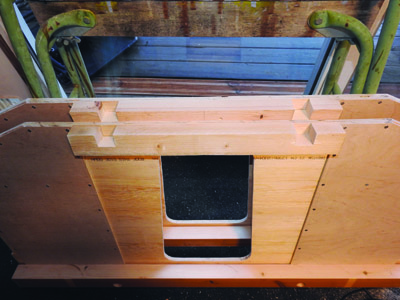 |
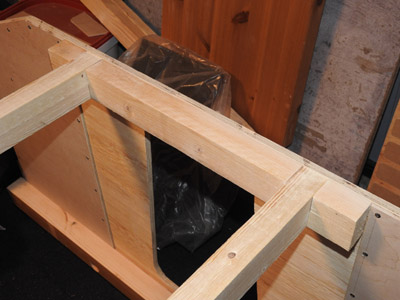 |
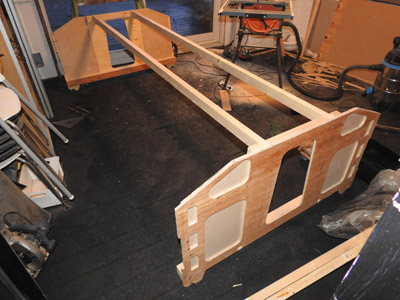 |
|
The short battens screwed onto the gables.
|
Ready to greet the long battens.
|
Like this. Looks simply,
but it took som adjusting before I was satisfied. |
There's the length of the passenger pod.
2 meter and 70 centimeter. |
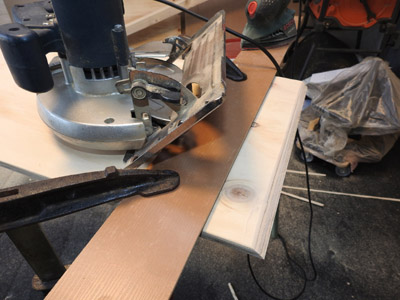 |
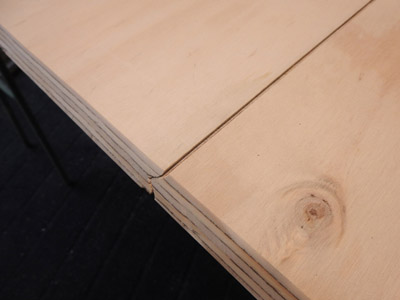 |
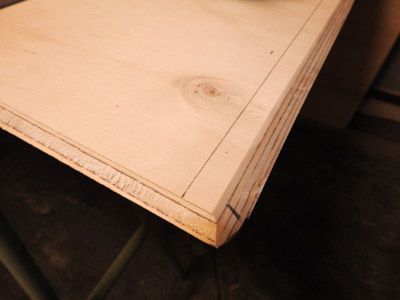 |
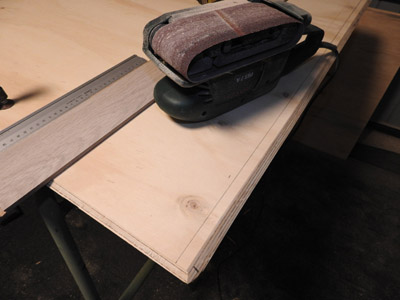 |
|
On to the roof. Will be in three sections.
|
an oblique cut on the full length sides.
|
But an even smaller angle are needed.
|
Which is done with the band grinder.
|
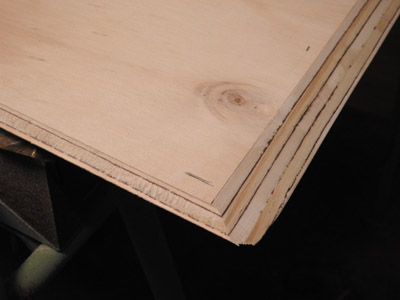 |
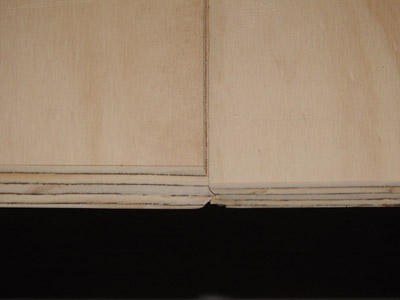 |
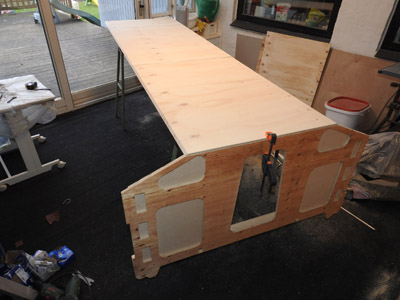 |
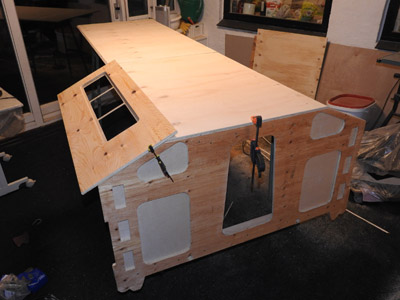 |
|
First board done.
|
Angle comparison.
|
Roof on top.
|
Test fitting of a window section. It fits.
|
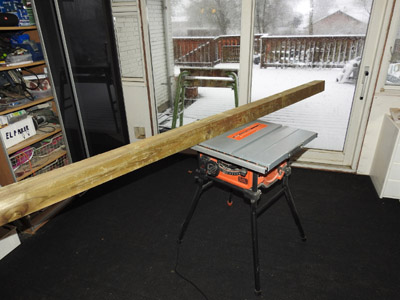 |
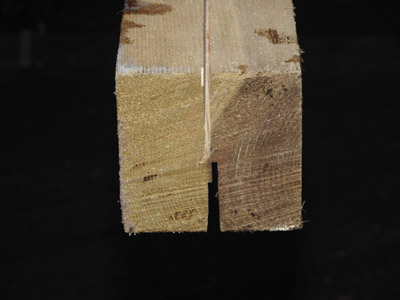 |
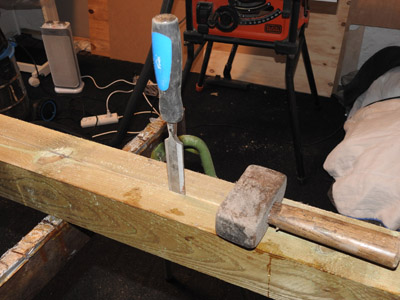 |
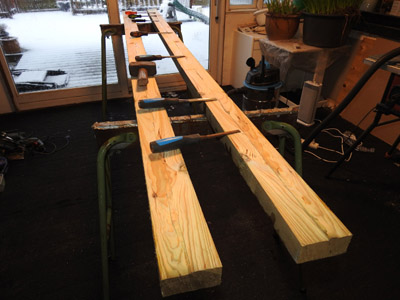 |
|
Now onto the gutter battens. Made of one heavy pole.
|
Fuses blew. I had to cut from both sides of the pole.
|
And finally - cast irons to split it apart.
|
Work only half done. They need to be cut through again.
|
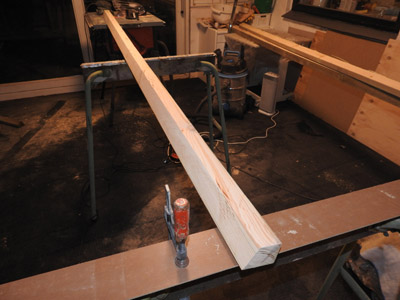 |
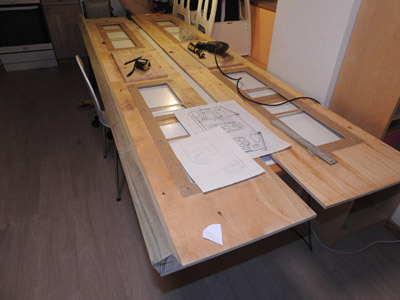 |
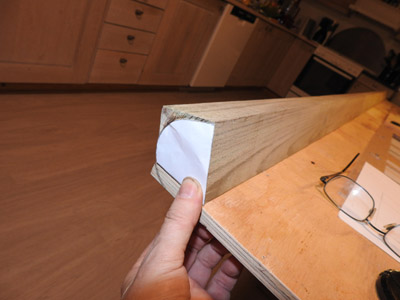 |
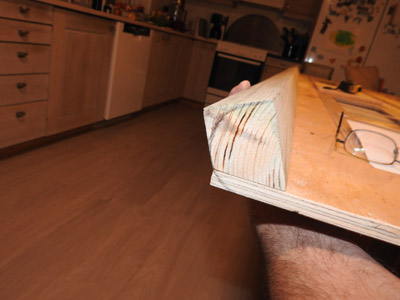 |
|
Now we're getting there.
|
Laid on the windows section.
|
A premade template.
|
Curved line drawn in pencil.
|
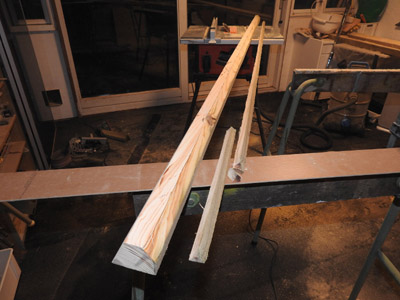 |
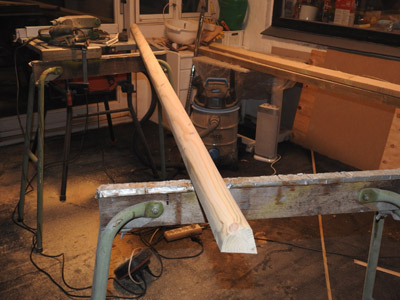 |
 |
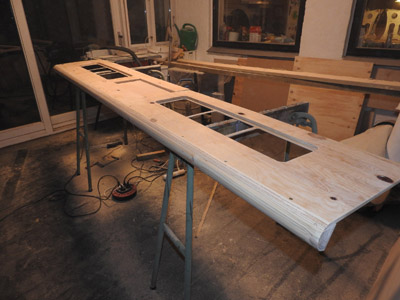 |
|
Back to the table saw.
|
And then band grinder to make it all smooth rounded.
|
Screwed onto the windows section... more grinding.
|
Until the section completes the round shape.
|
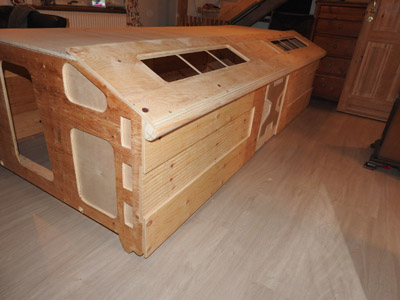 |
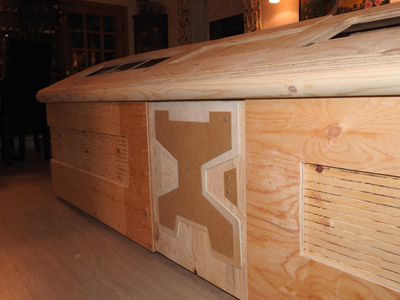 |
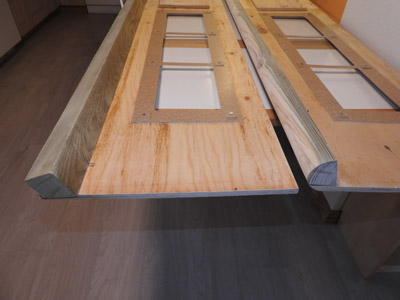 |
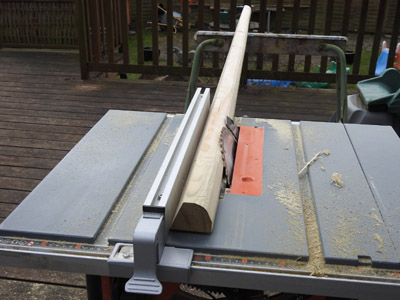 |
|
Looks good - part I
|
Looks good - part II
|
Second batten
|
Moved outside, but same procedure
|
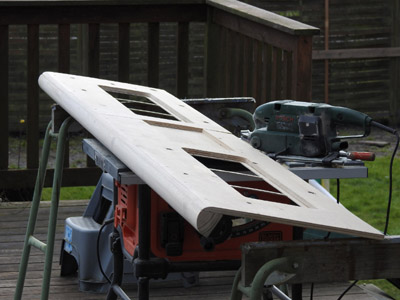 |
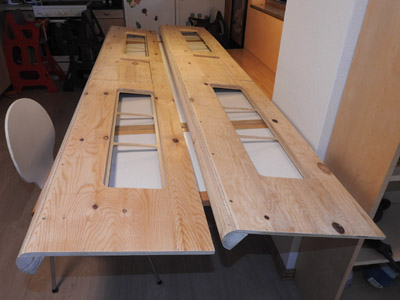 |
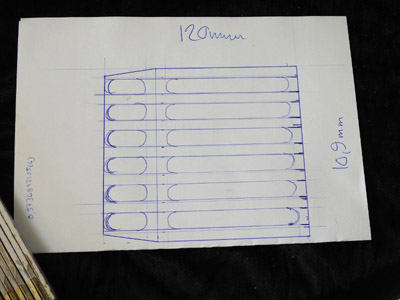 |
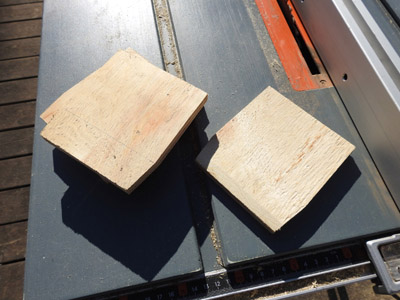 |
|
Grinding outside makes less mess inside.
|
Both windows sections completed.
|
Next: The Gemini #29 (and #28) part.
|
Small boards cut into shape.
|
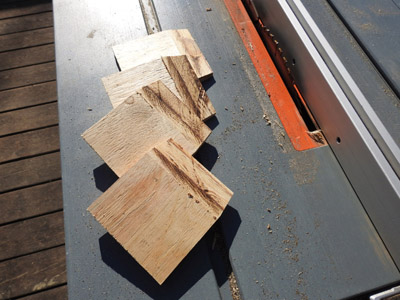 |
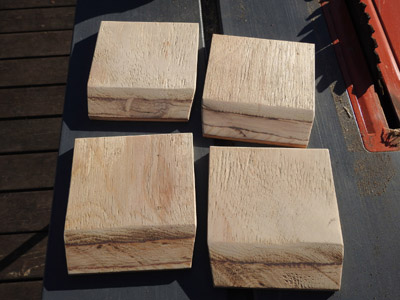 |
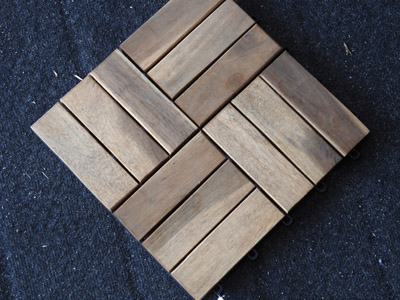 |
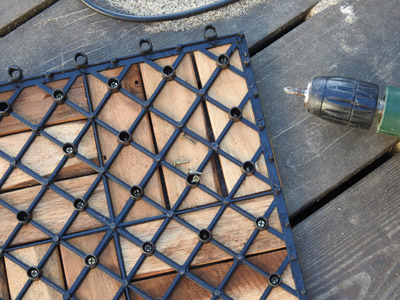 |
|
Sloped tip sawed.
|
Fine grinding
|
Couldn't find correct diameter round sticks...
|
...so I bought this wooden tile instead.
|
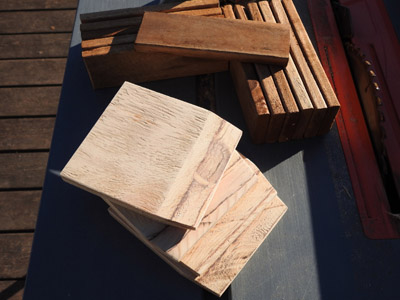 |
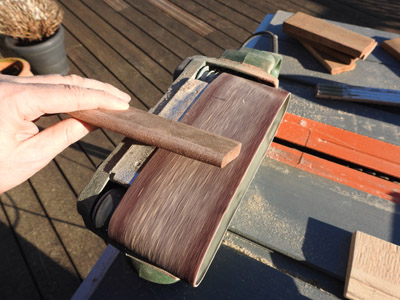 |
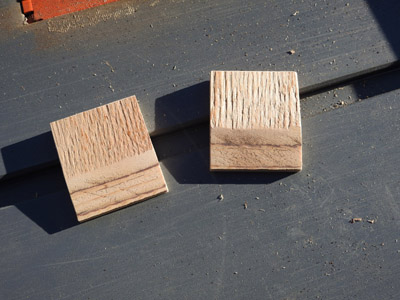 |
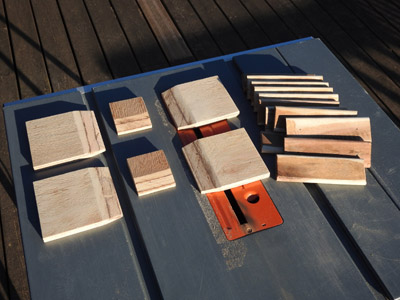 |
|
Only to use the wooden bricks on it.
|
I round grinded the longitude edges.
|
Inbetween I made the #28 Gemini bricks.
|
Line up with the side rounded bricks.
|
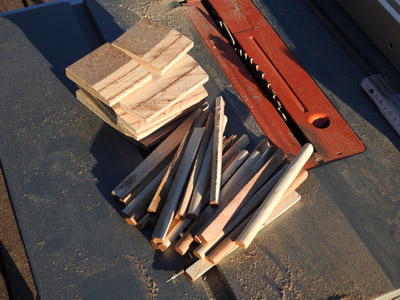 |
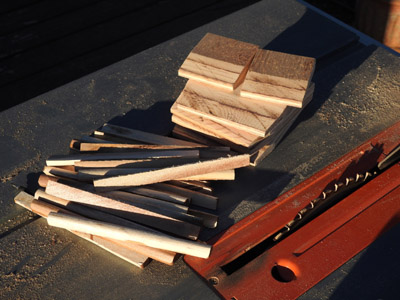 |
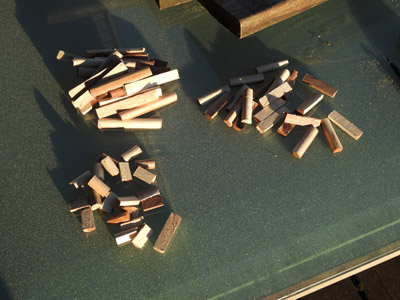 |
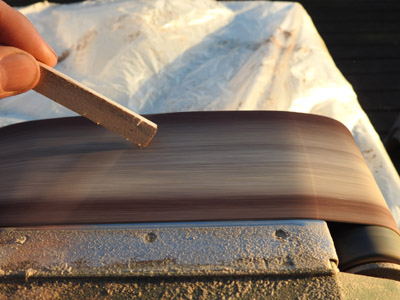 |
|
I cut off all the rounded sides...
|
...I only need the round part of the bricks.
|
Then the small rounded sticks are cut into shorter
ones.
|
All the ends needed to be rounded too.
|
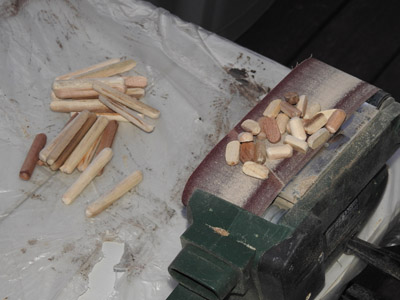 |
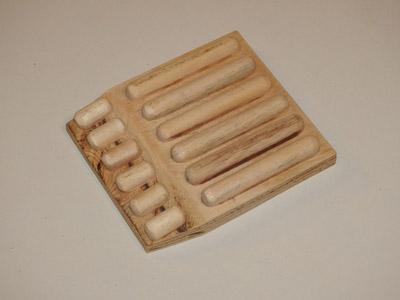 |
 |
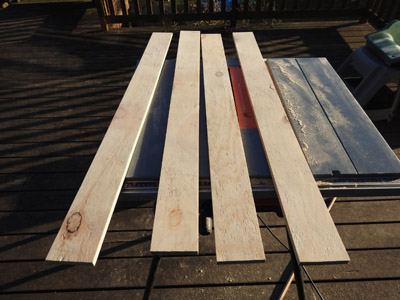 |
|
A considerable time after... (even the sun had set).
|
But all put together it was worth the work.
|
Parts in place.
|
Now to the sloped boards...
|
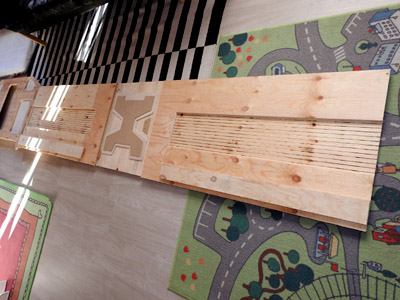 |
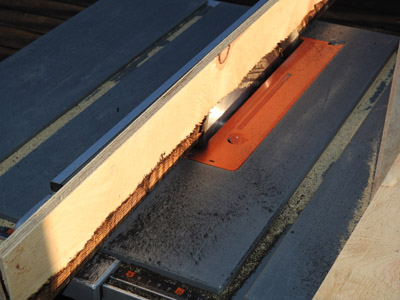 |
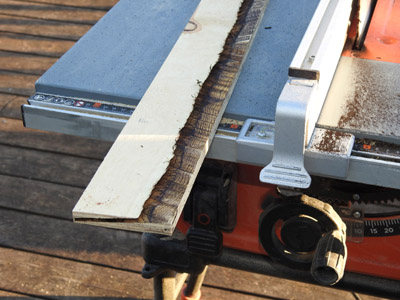 |
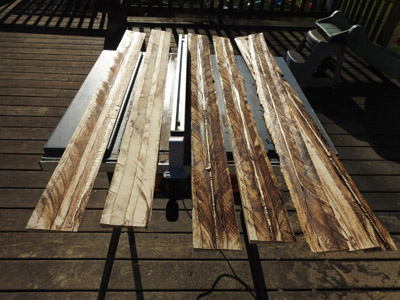 |
|
...at the bottom of the sides.
|
My table saw complained.
|
Burned wood.
|
But I succeeded.
|
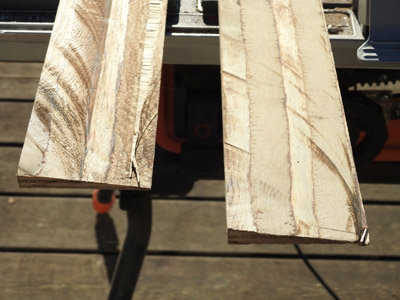 |
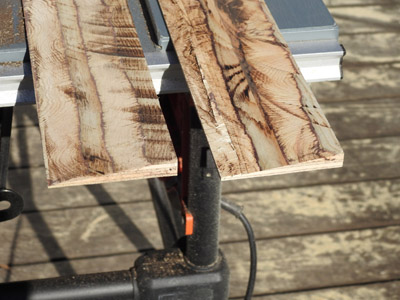 |
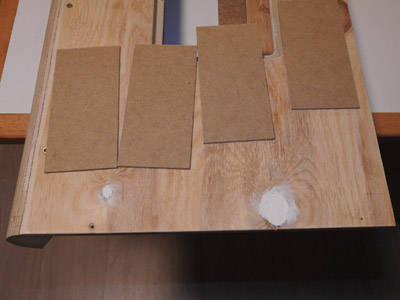 |
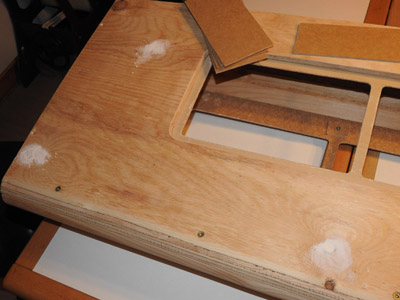 |
|
A lot of tiles cut for the two sloped window sections.
|
But first som padding here and there.
|
||
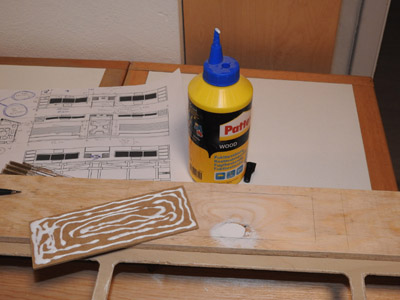 |
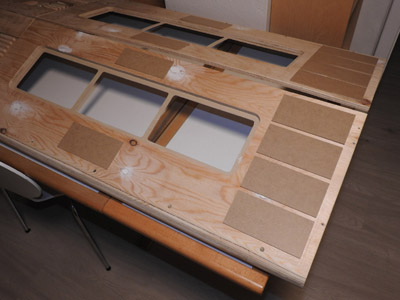 |
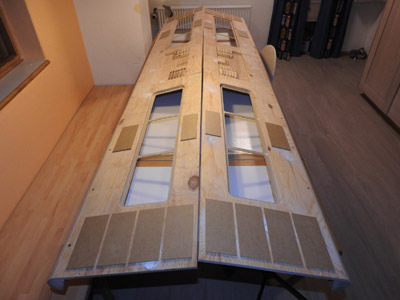 |
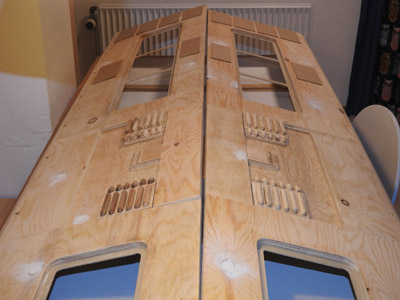 |
|
This is only a test glue for one of the tiles.
|
The rst are laying loose until further notice.
|
||
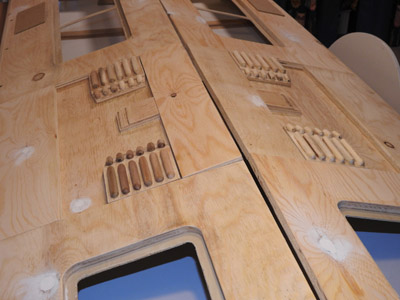 |
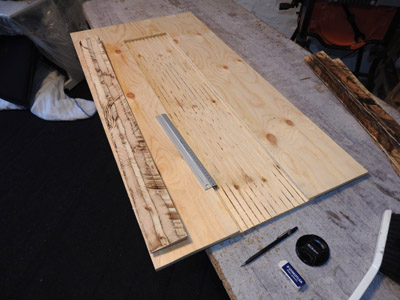 |
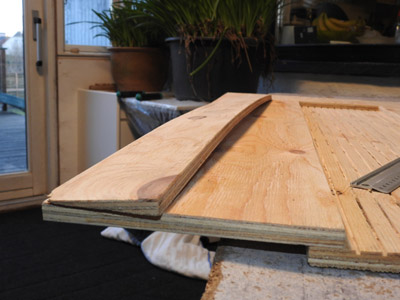 |
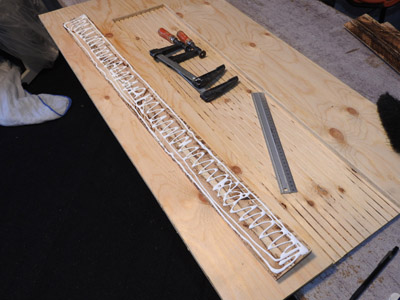 |
|
Back to the sloped lower panels.
|
The wood have bend itself.
|
So... lots of glue...
|
|
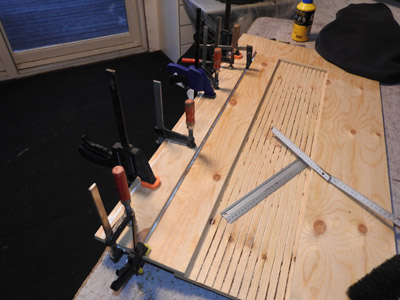 |
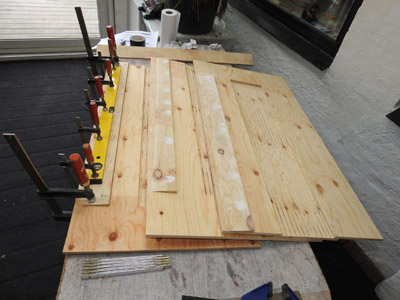 |
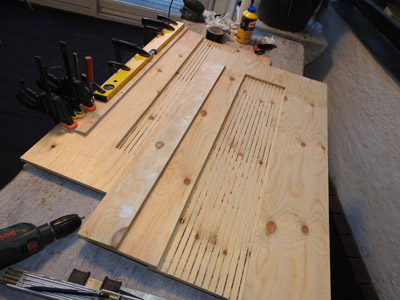 |
 |
|
And clamps.
|
Revised clamping.
|
two...
|
three...
|
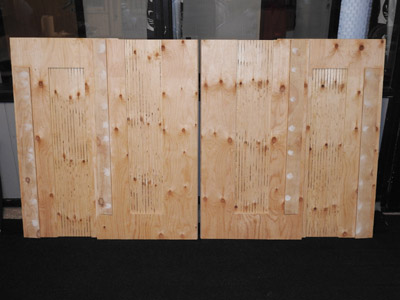 |
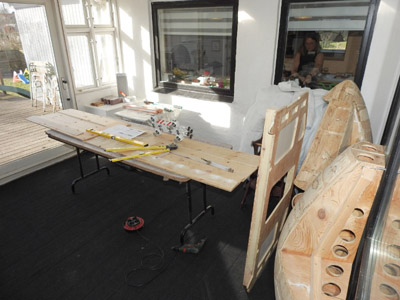 |
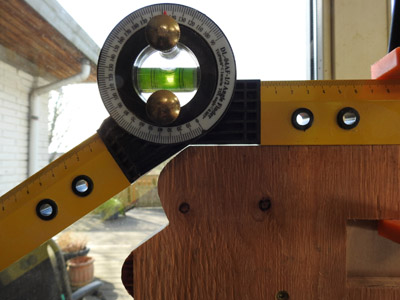 |
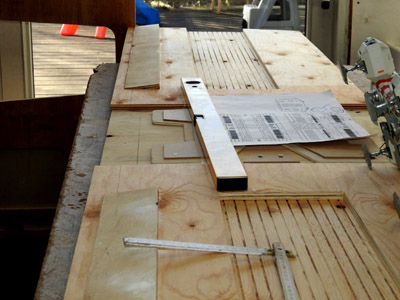 |
|
And all four done.
|
Now further down below.
|
Angle measuring.
|
|
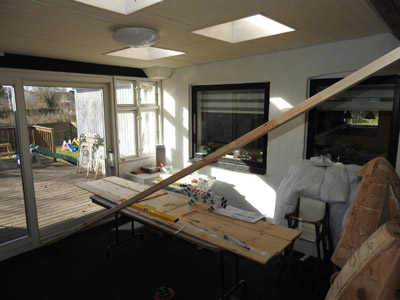 |
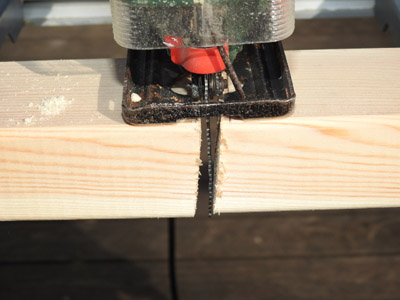 |
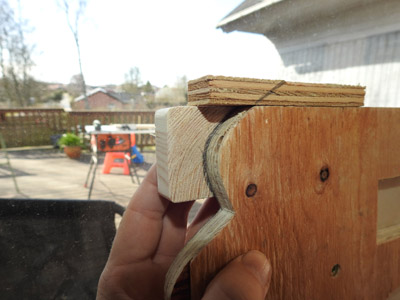 |
 |
|
A long batten.
|
Sawed into two. My ridiculous jigsaw.
|
Template making.
|
The template brick.
|
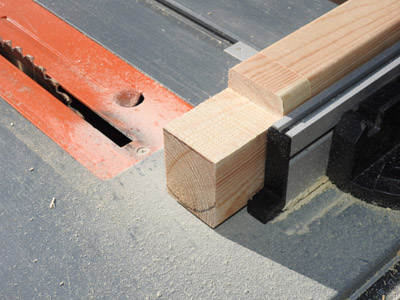 |
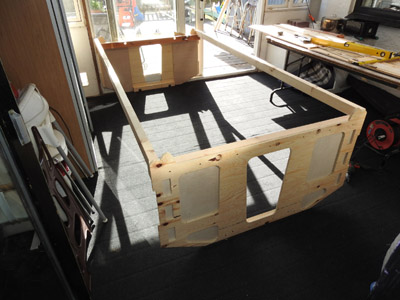 |
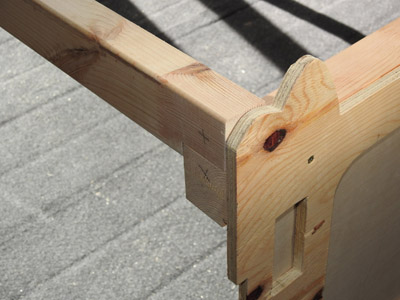 |
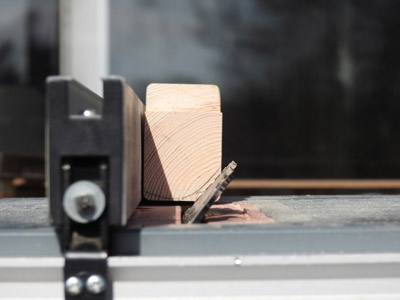 |
|
Sawing a joint cut.
|
To make it fit...
|
...against the gable batten.
|
And some oblique cutting on the table saw.
|
 |
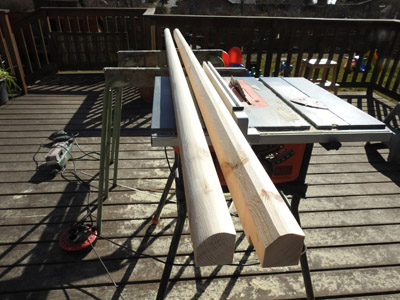 |
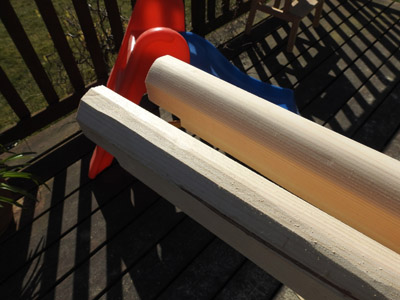 |
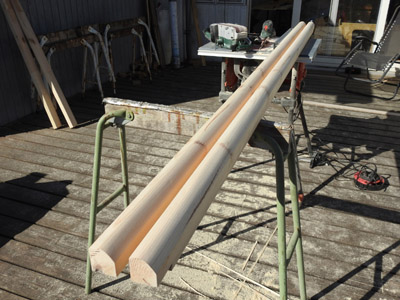 |
|
To spare on the band sander.
|
Nice and smooth.
|
Times two.
|
|
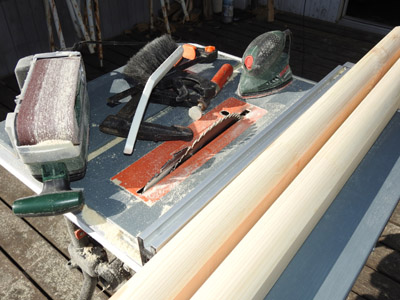 |
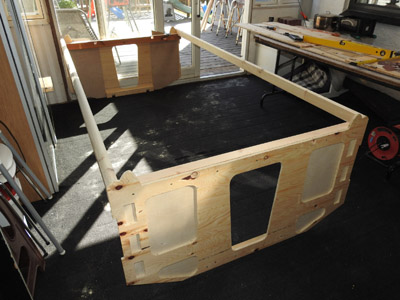 |
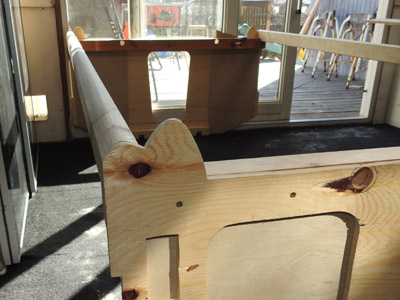 |
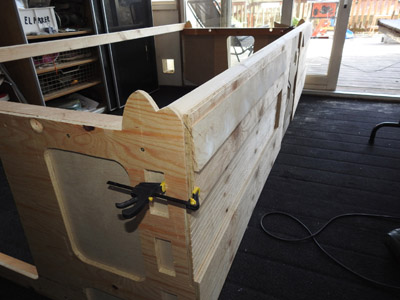 |
|
Mounted.
|
Marking the sides.
|
||
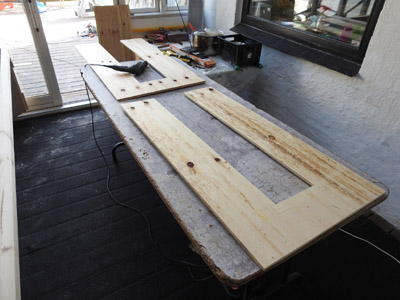 |
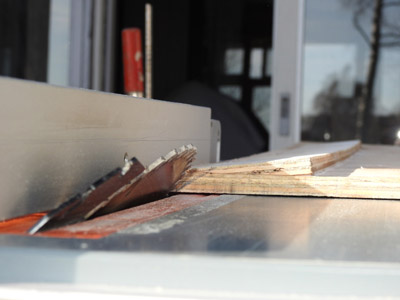 |
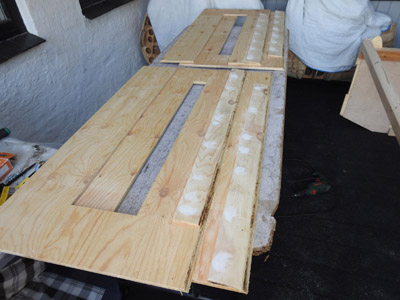 |
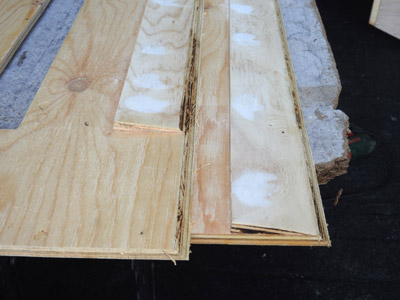 |
|
Dissasembling the sides.
|
To be able to cut.
|
||
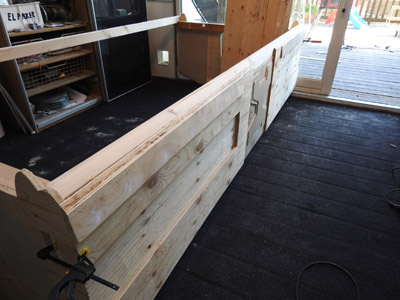 |
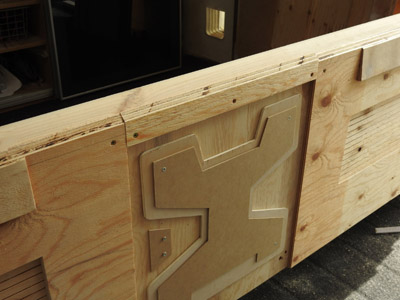 |
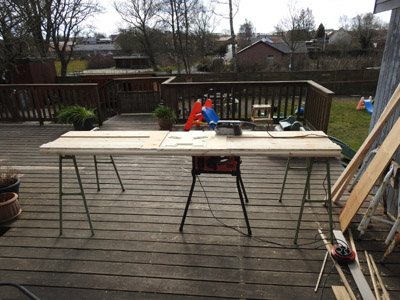 |
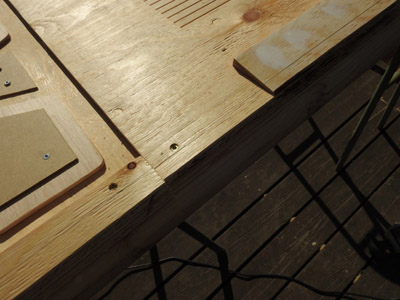 |
|
Back on - ready for grinding.
|
Almost forgot this short middle piece.
|
Sanding in open air.
|
Marking.
|
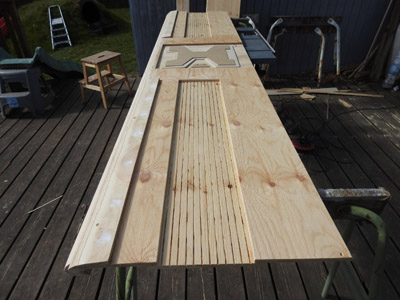 |
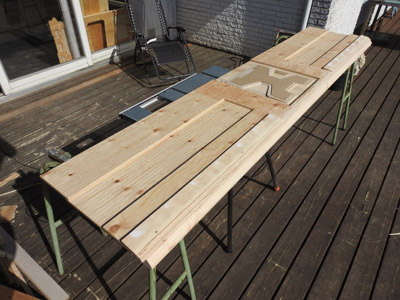 |
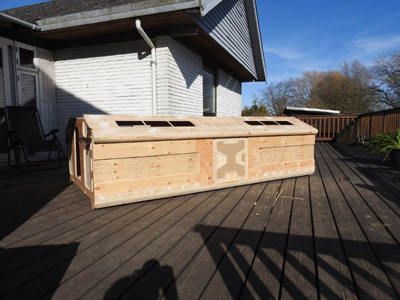 |
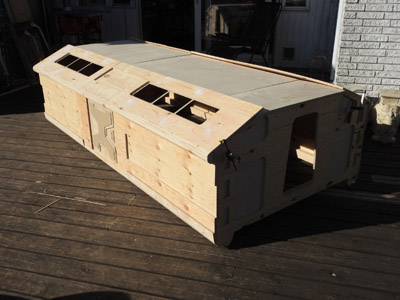 |
|
And then a test assemble of the whole passenger pod.
|
|||
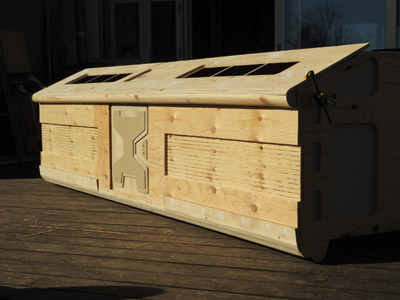 |
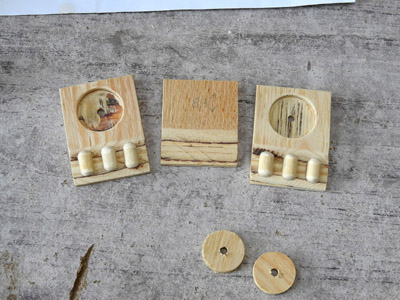 |
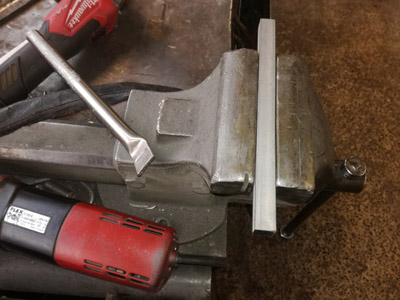 |
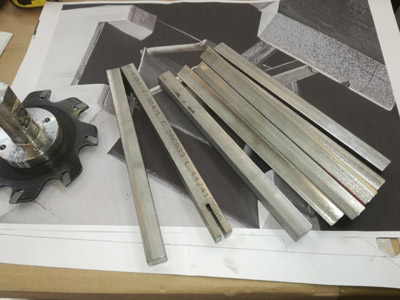 |
|
I had to redo these two Gemini parts due to wrong
measuring.
|
Now on to a whole other area.
The landing gear. |
Cutting sticks.
|
|
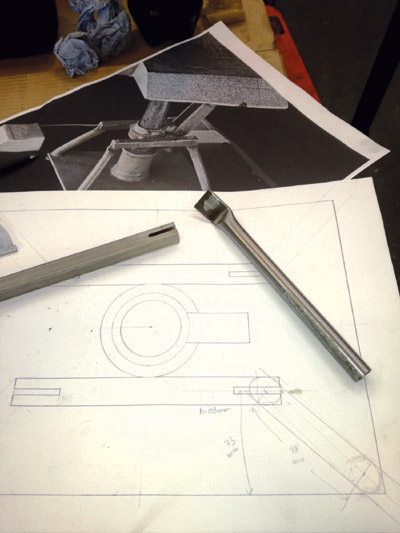 |
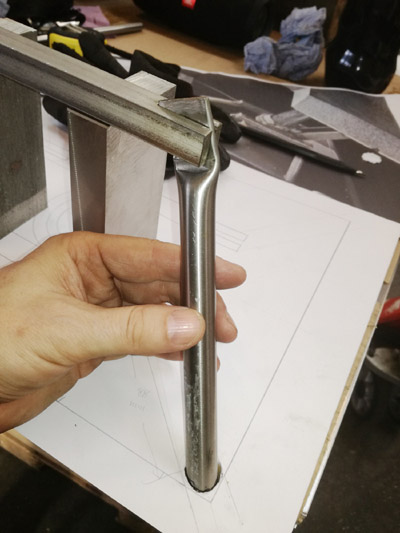 |
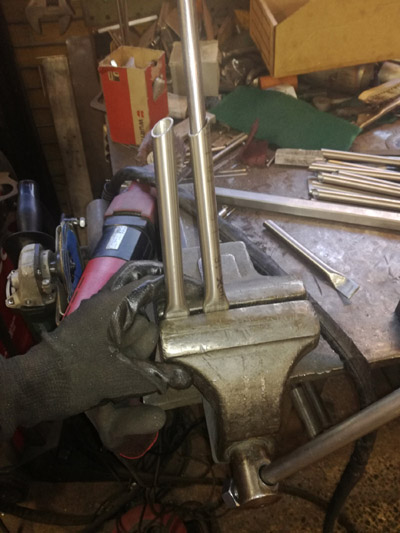 |
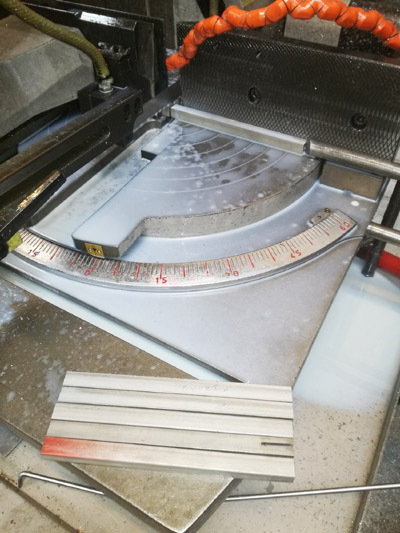 |
|
And tubes.
|
Cheating 'calculating' angle and length.
|
Bending and squeezing.
|
Here're the sticks being cut.
|
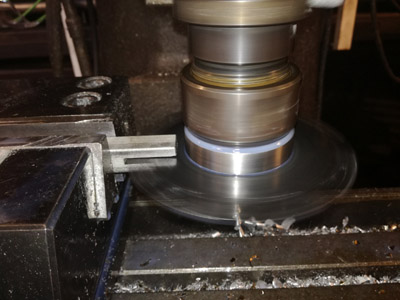 |
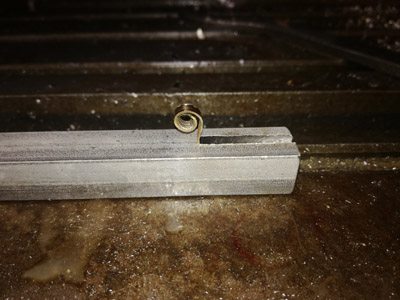 |
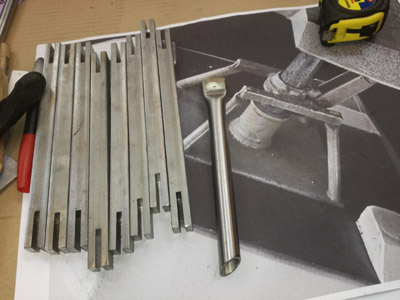 |
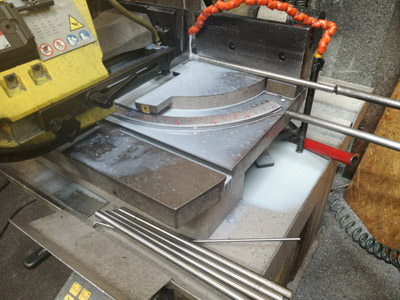 |
|
The opening in both ends are milled.
|
Sticks done.
|
Here are the tubes being cut.
|
|
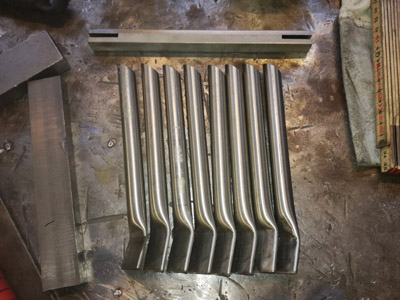 |
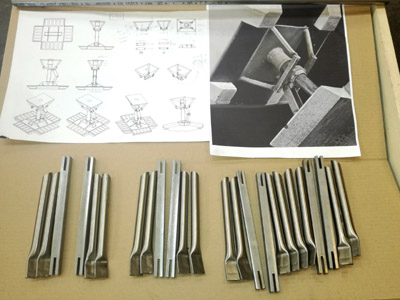 |
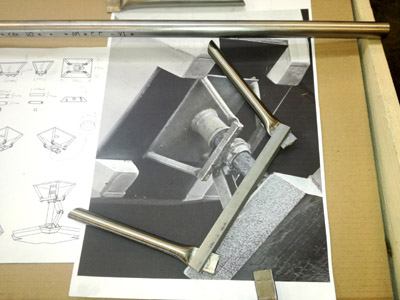 |
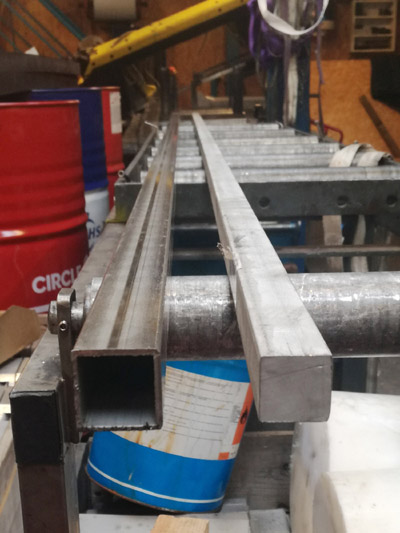 |
|
Tubes squeezed and bend in a 'special' angle.
|
Curtleri ready.
|
Comparing with a photo of the original 44" Eagle
1.
|
Now parts for the elbow joints.
|
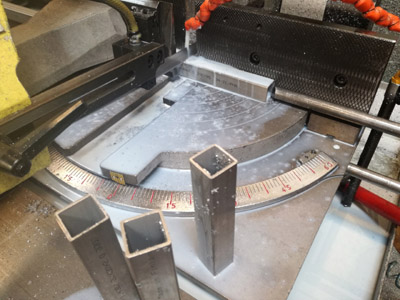 |
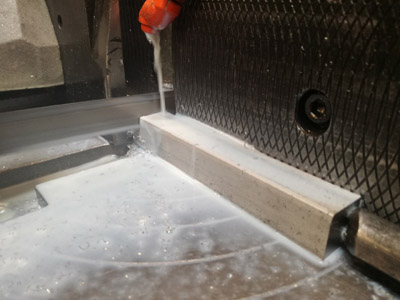 |
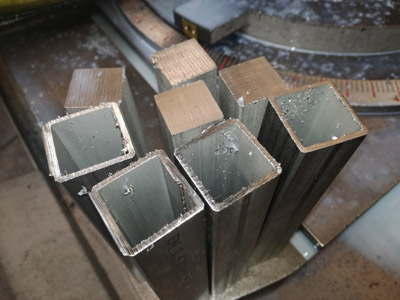 |
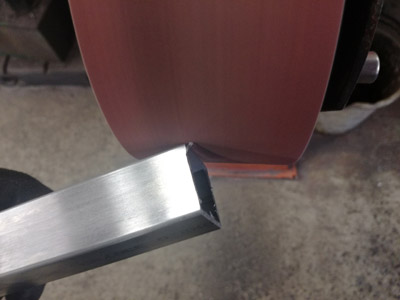 |
|
Square tubes.
|
and rods a being sawed.
|
removing the sharp edges.
|
|
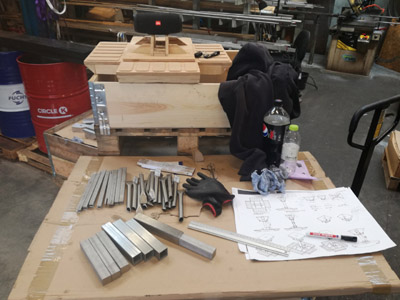 |
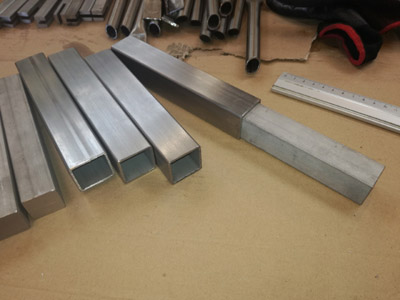 |
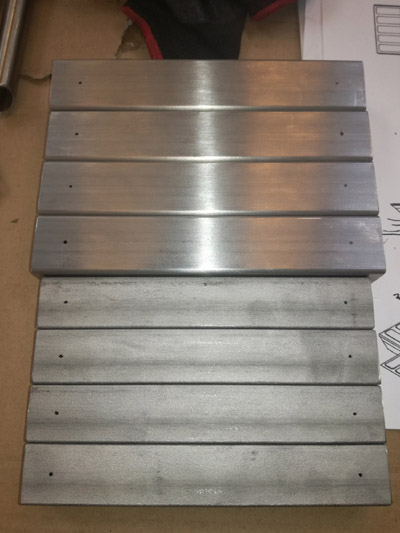 |
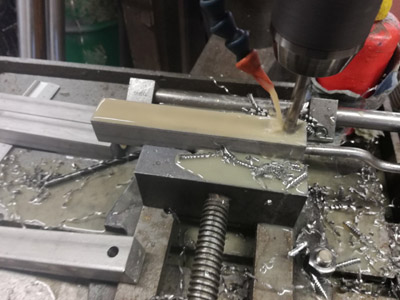 |
|
My work table.
|
Marking for drilling holes.
|
||
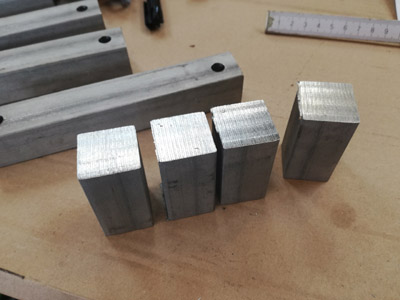 |
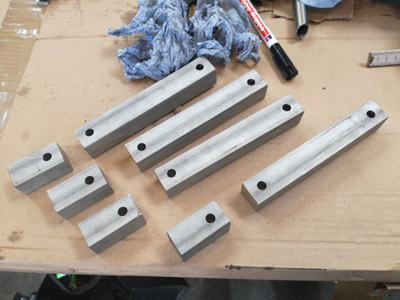 |
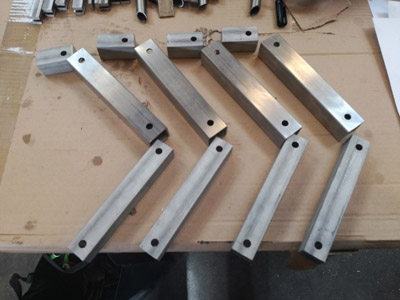 |
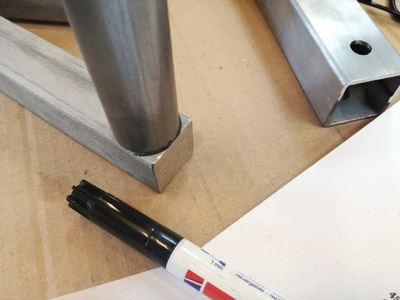 |
|
Almost forgot these short rods.
|
Holes done.
|
lining up.
|
Marking for rounded ends.
|
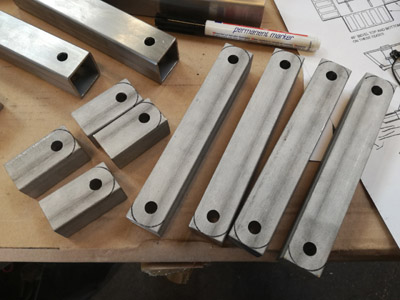 |
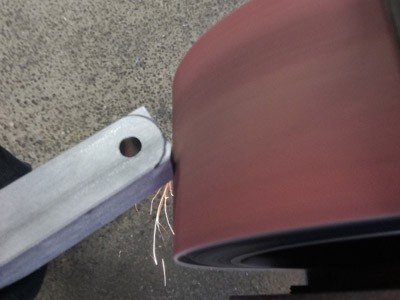 |
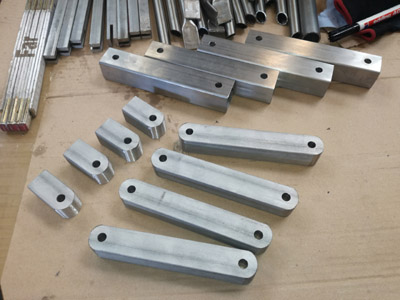 |
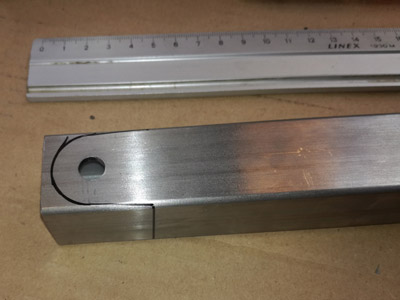 |
|
The band grinder in action.
|
The rods done.
|
Now to the square tubes.
|
|
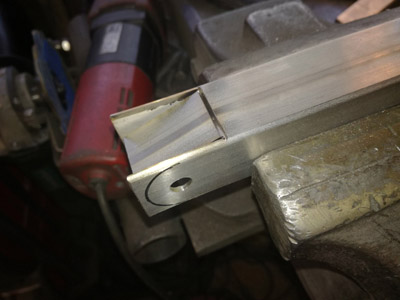 |
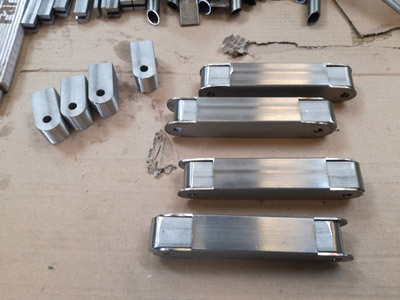 |
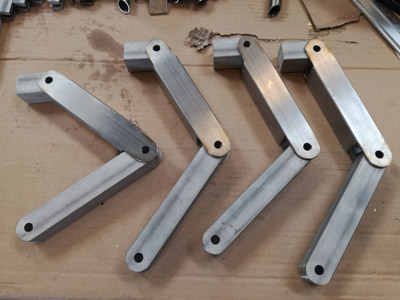 |
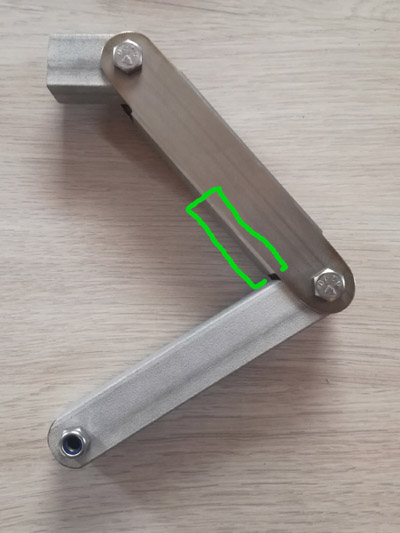 |
|
These are a little more tricky.
|
This area will be cut open to allow the arm to bend
more.
|
||
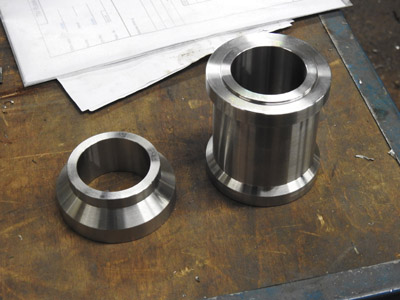 |
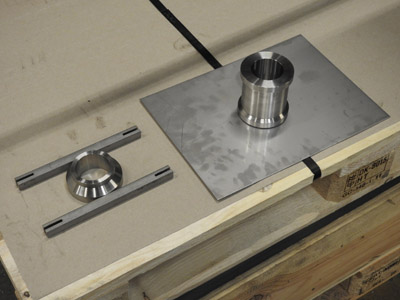 |
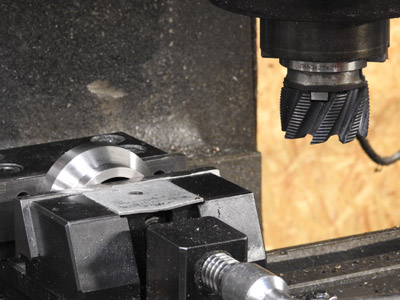 |
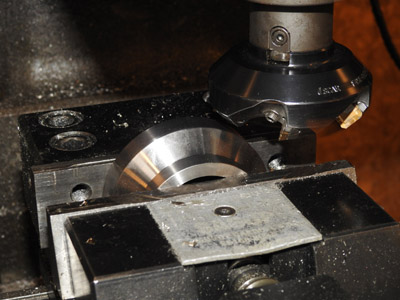 |
|
Moving on to another area of the landing gear.
|
Milling small flat areas on two sides of the flanges.
|
||
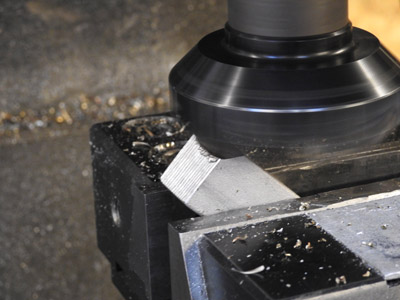 |
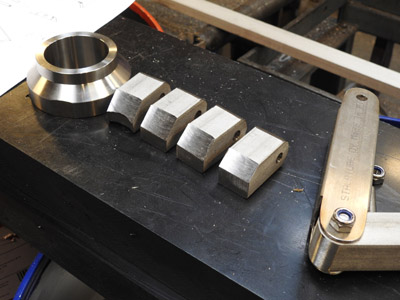 |
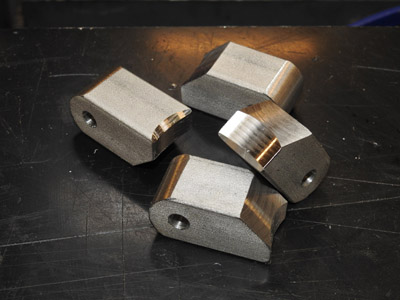 |
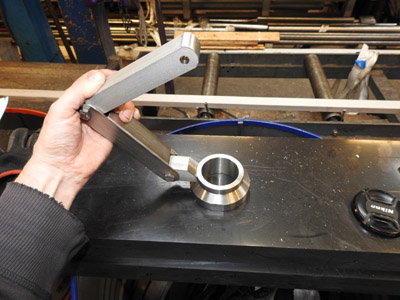 |
|
And also the short rods needs milling.
|
And further modelling.
|
To fit onto the ring flange.
|
|
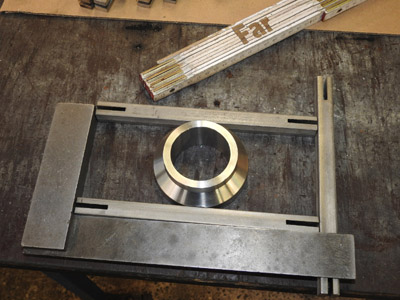 |
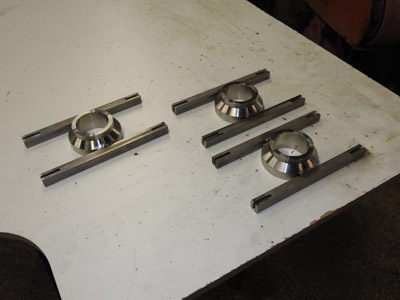 |
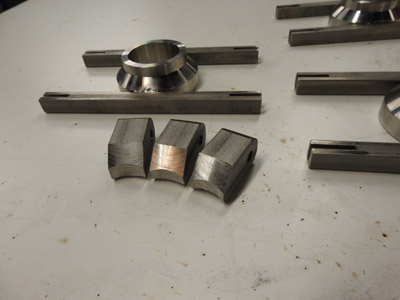 |
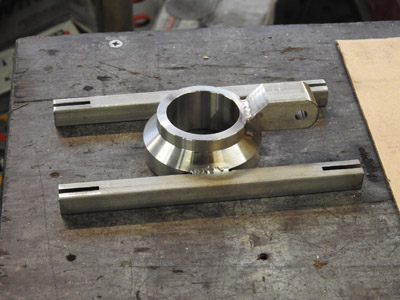 |
|
Ready for welding the long sticks onto the flange.
|
And then the short rods.
|
Aslo welded on.
|
|
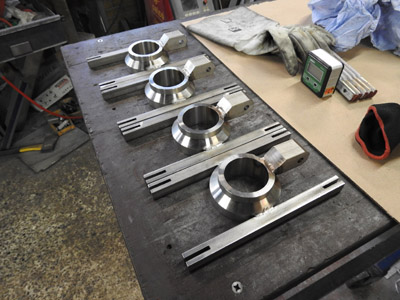 |
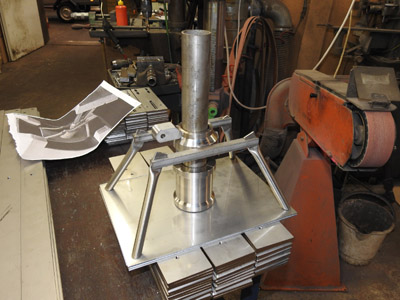 |
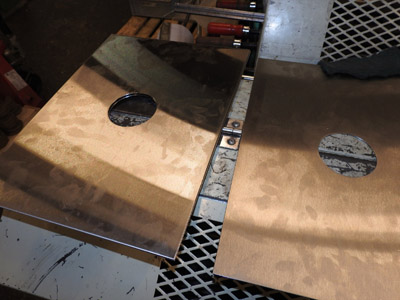 |
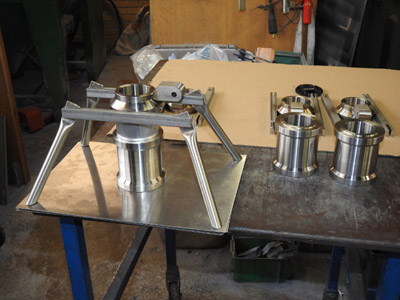 |
|
All four done.
|
And a quick loose assemble. Looking good.
|
Two top plates
|
|
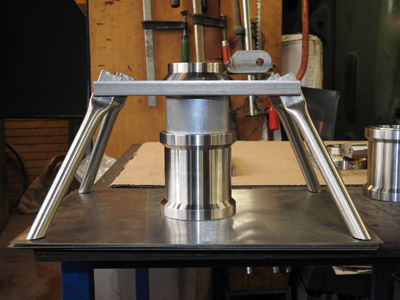 |
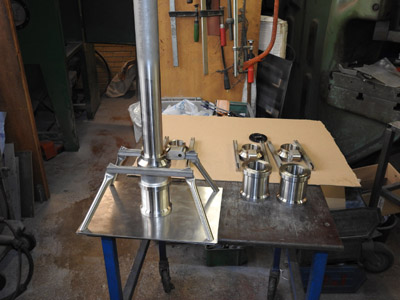 |
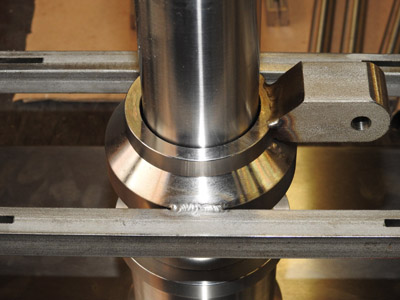 |
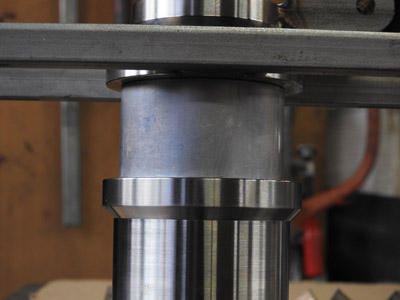 |
|
A distance piece of tube inserted temporary.
|
|||
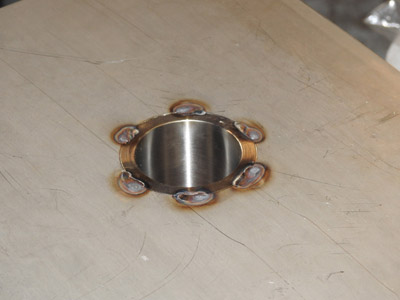 |
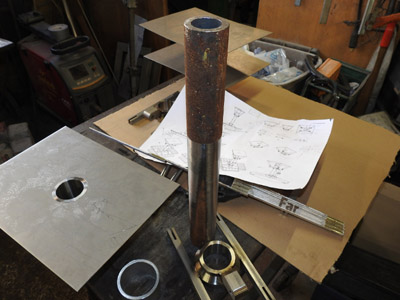 |
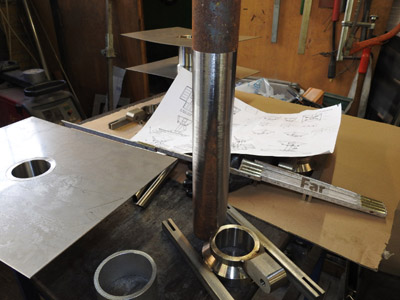 |
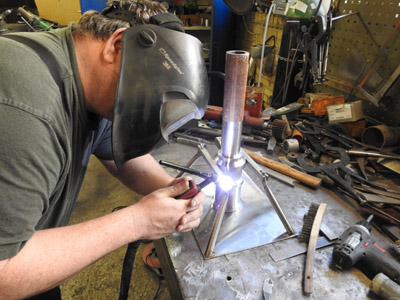 |
|
Kurt is doing the welding.
|
|||
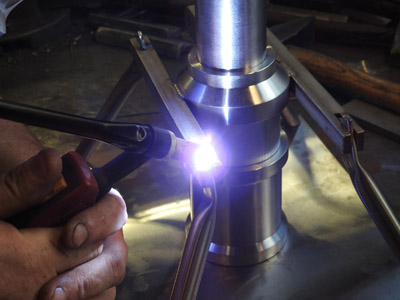 |
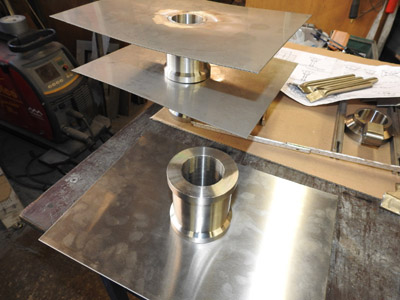 |
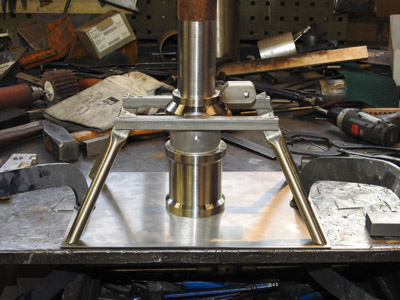 |
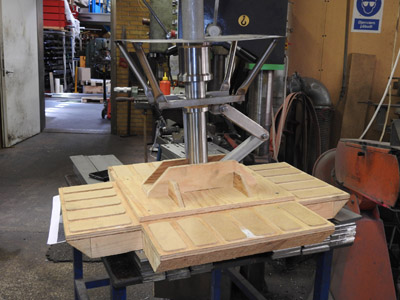 |
|
All welded.
|
And then another loose assembling.
|
||
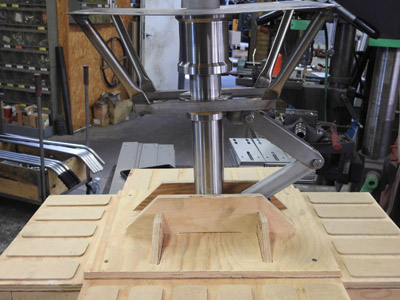 |
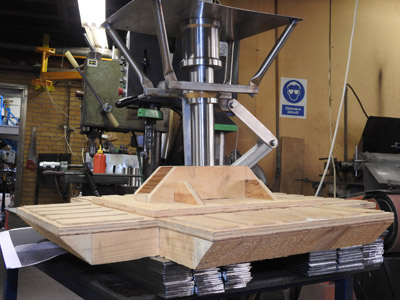 |
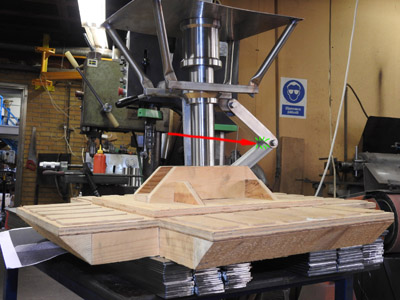 |
 |
|
To enjoy the sight.
|
The gear is held up alone by this area.
|
||
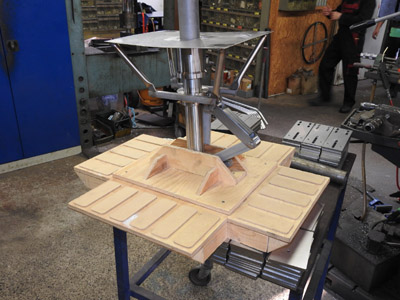 |
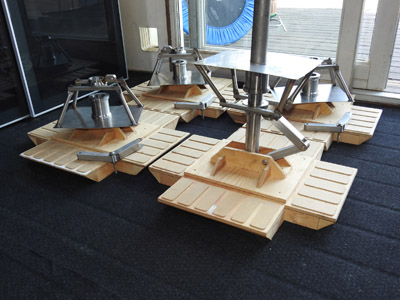 |
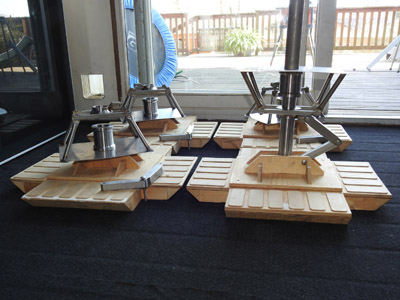 |
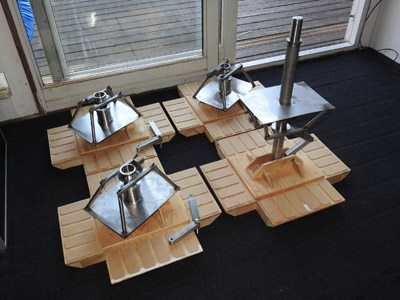 |
|
Back home from Kurt with all the landing gears.
|
|||
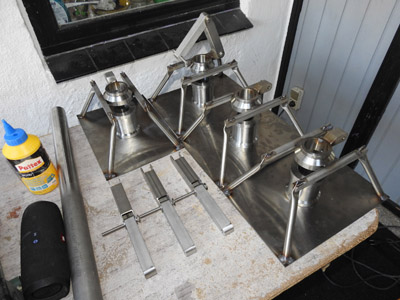 |
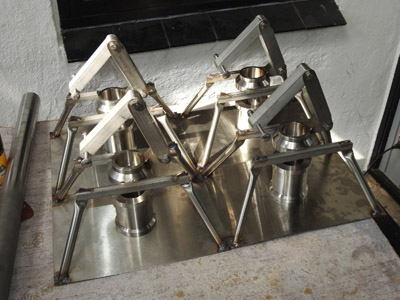 |
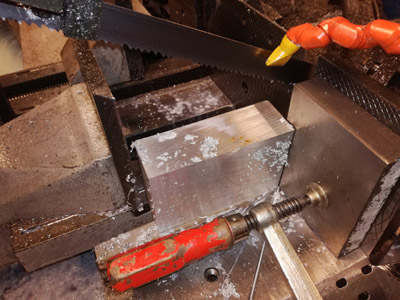 |
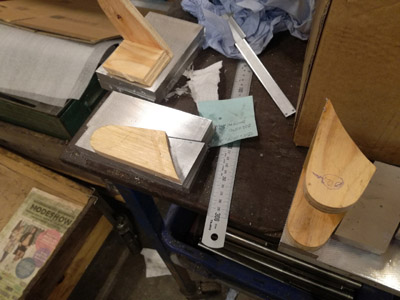 |
|
Now back to the brackets for the Command Module.
|
The wooden templates need to be made in aluminium.
|
||
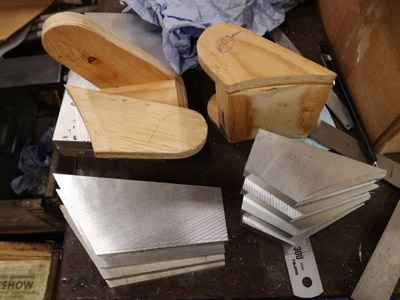 |
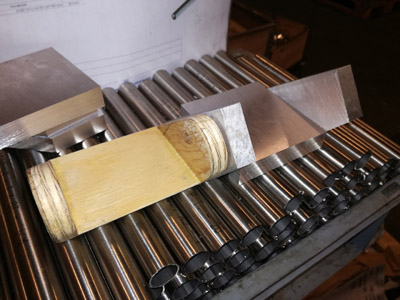 |
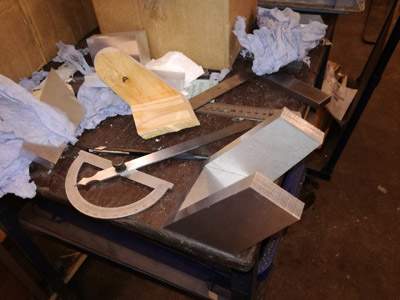 |
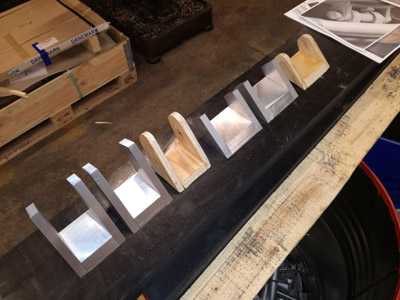 |
|
Cutting pieces from a solid block and then into shape.
|
Rough shape for a start.
|
Basic shape.
|
|
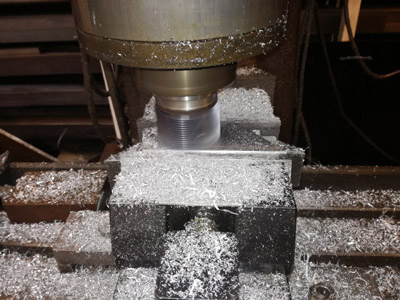 |
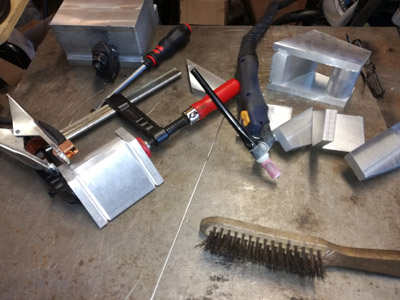 |
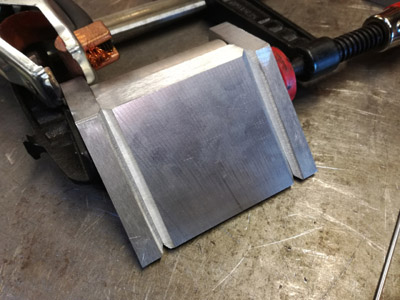 |
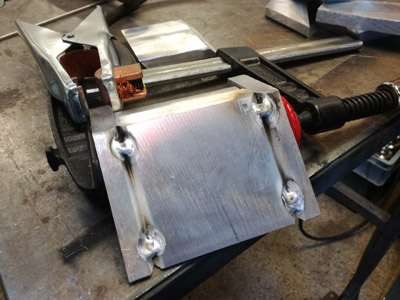 |
|
Ready for welding.
|
Tracks are made for deeper welding.
|
First spots...
|
|
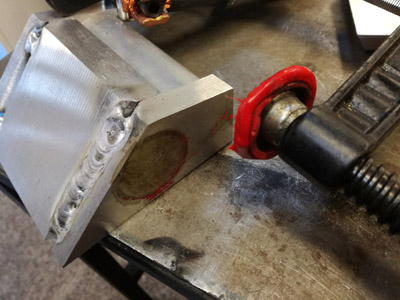 |
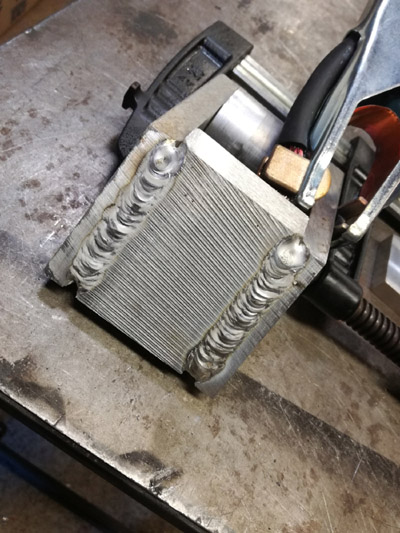 |
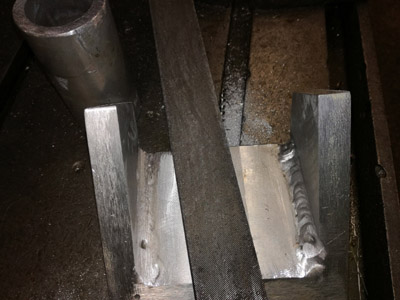 |
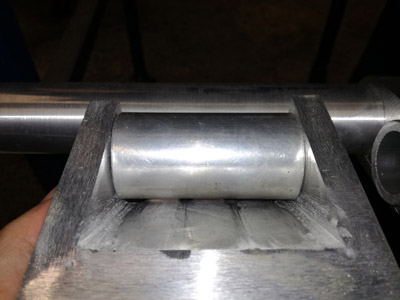 |
|
Aluminium gerts very hot when welded.
|
Done deep.
|
Some attention is needed.
|
There's not enough room...
|
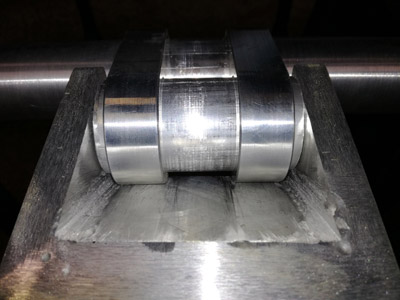 |
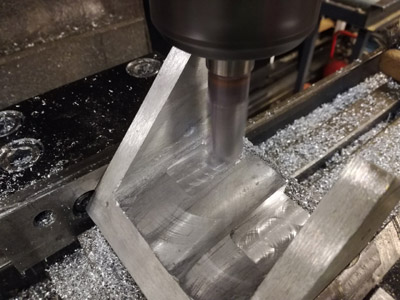 |
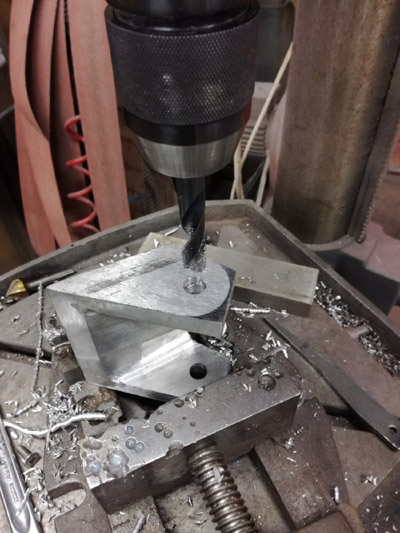 |
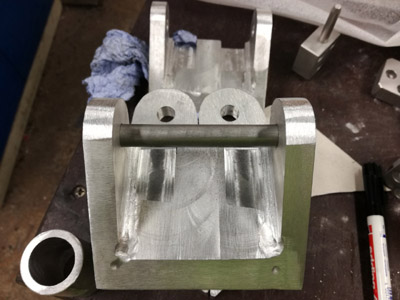 |
|
For the hinge flanges.
|
Solving this by milling two tracks in the bracket.
|
Drilling holes and marking up for rounding the ends.
|
Some time later.
|
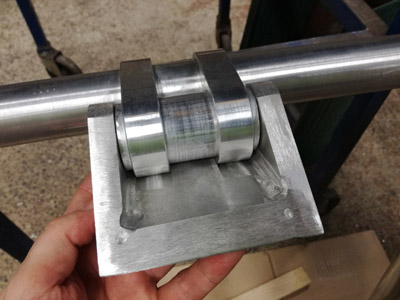 |
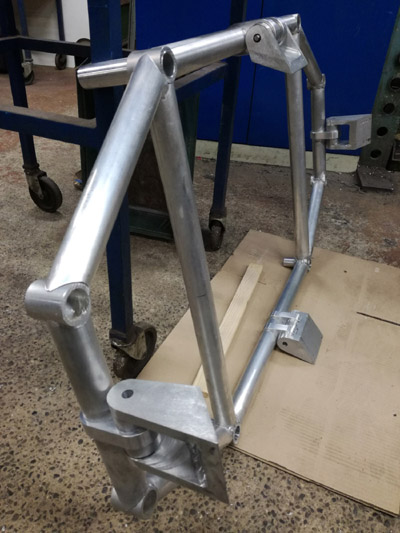 |
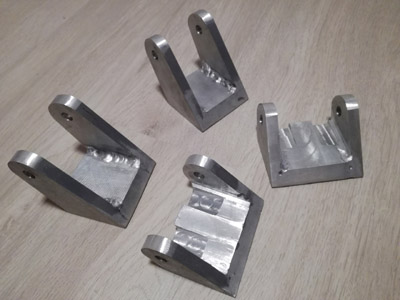 |
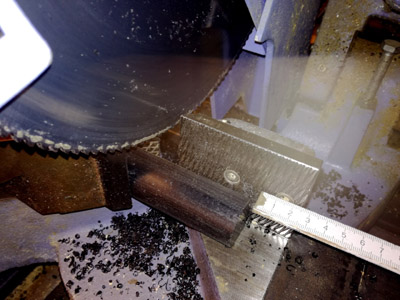 |
|
Now it fits.
|
Also on the front frame.
|
Four brackets for the CM.
|
Cutting some black vinyl.
|
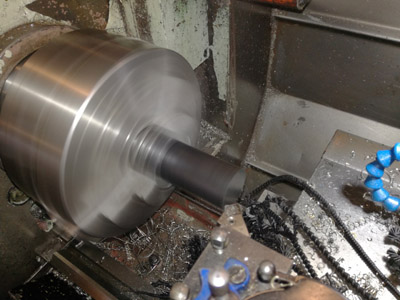 |
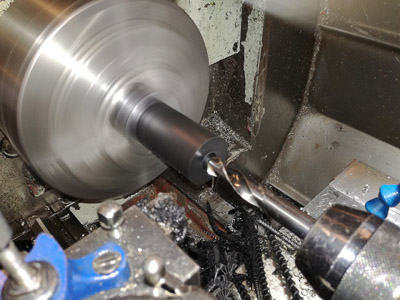 |
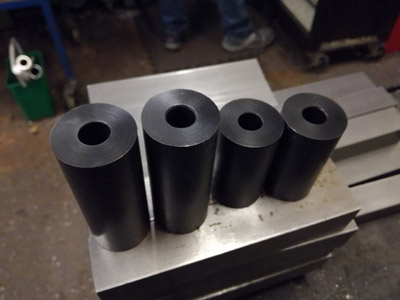 |
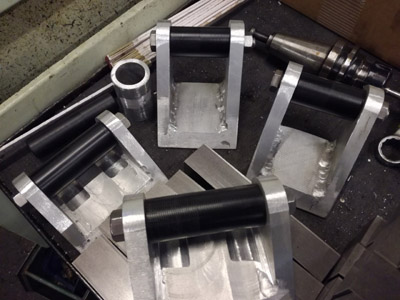 |
|
Turning.
|
Drilling.
|
And nice bushes for the brackets.
|
Fits!
|
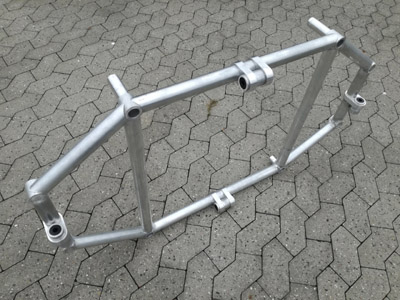 |
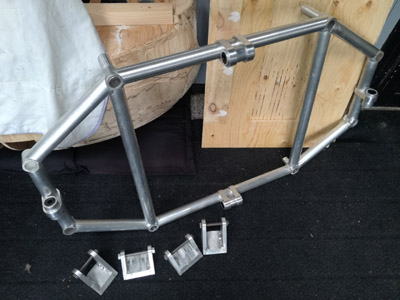 |
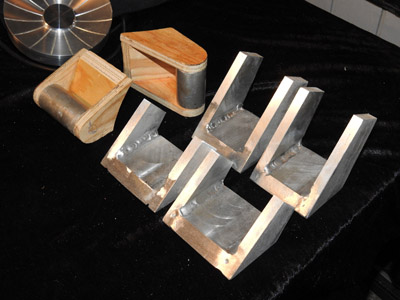 |
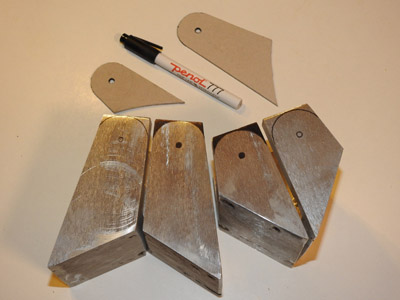 |
|
The front frame.
|
And the brackets.
|
Oops....
|
...two earlier photos.
|
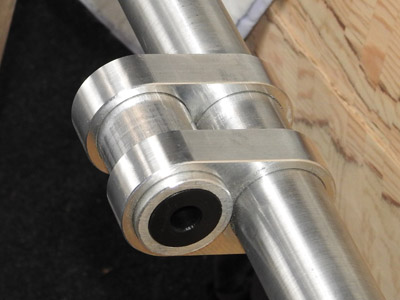 |
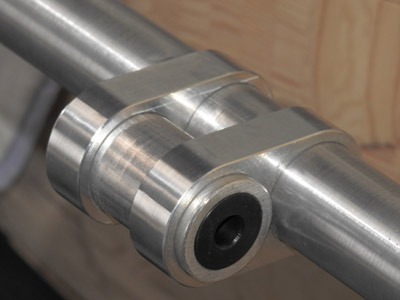 |
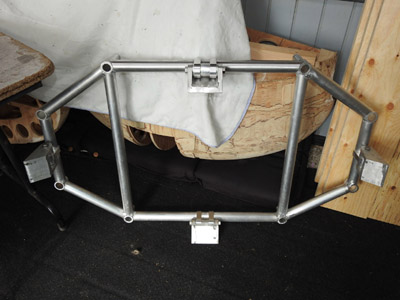 |
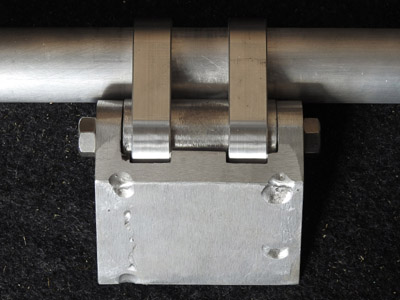 |
|
The vinyl bushing in place.
|
Looks professional right?!!
|
Complete front frame with hinges
|
A closer look at the two tracks milled to give room.
|
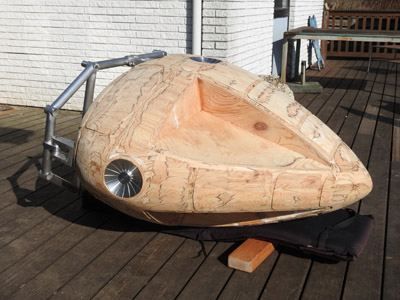 |
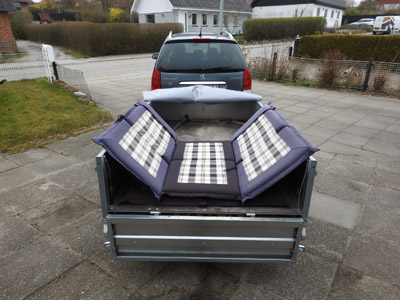 |
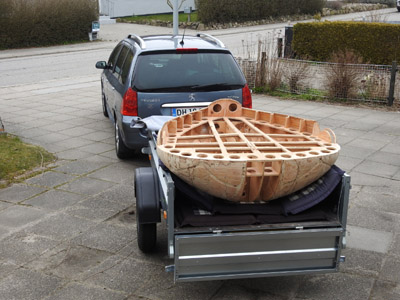 |
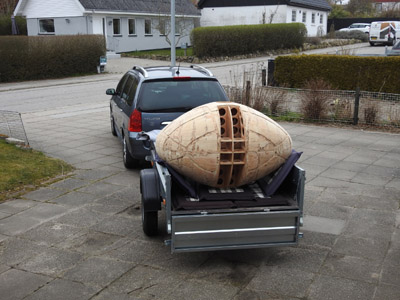 |
|
A test fit to the CM on our terrace.
|
Preparing transporting the CM.
|
First half.
|
and the second.
|
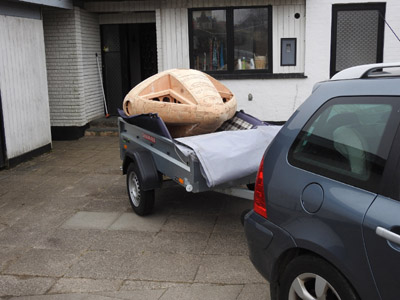 |
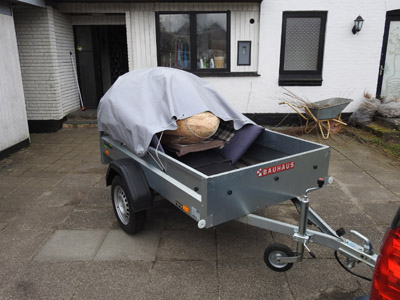 |
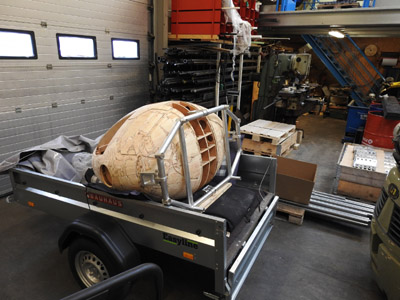 |
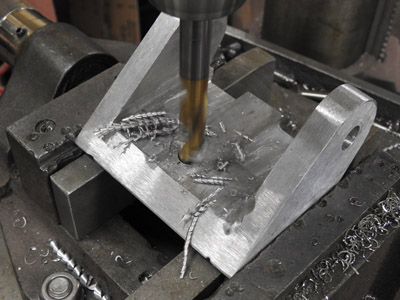 |
|
Cool.
|
IF it's gonna rain... better secure.
|
Arrived at Kurt's metal business.
|
Drilling holes in the brackets.
|
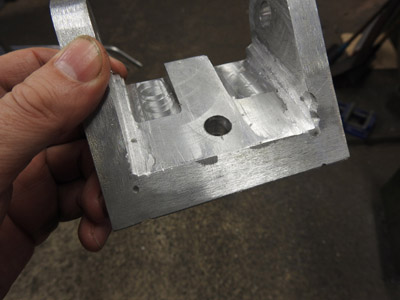 |
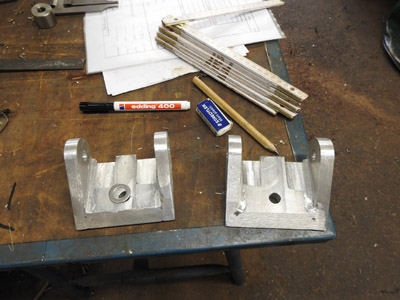 |
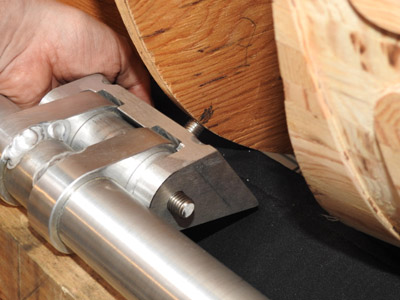 |
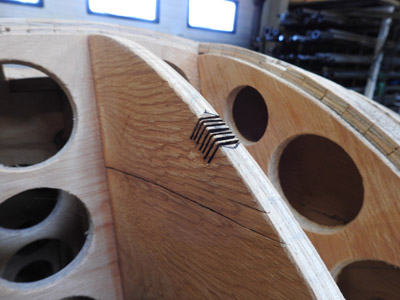 |
|
Marking on the CM where the bolt will go in.
|
Making room for it.
|
||
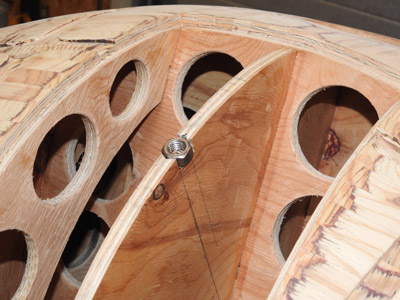 |
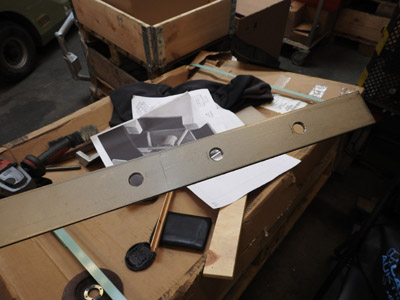 |
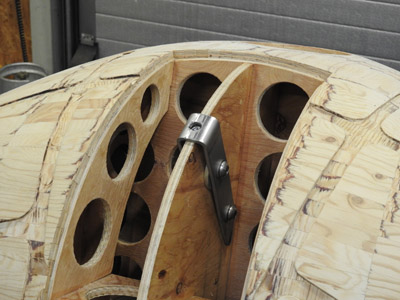 |
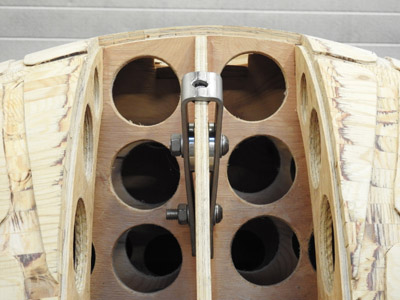 |
|
Placing the nut.
|
A long flat bracket
|
Bend aroung the nut in the plywood.
|
This mounting look piece of cake... but it wasn't.
|
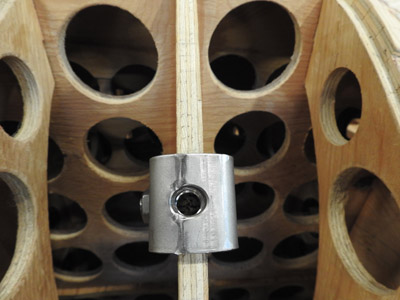 |
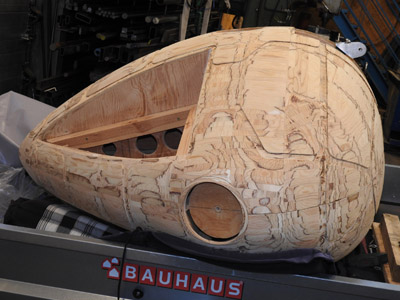 |
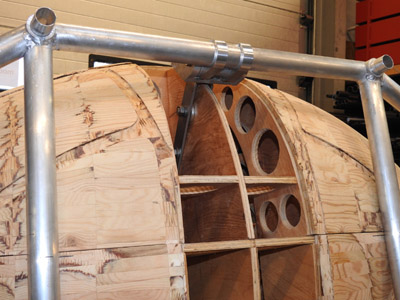 |
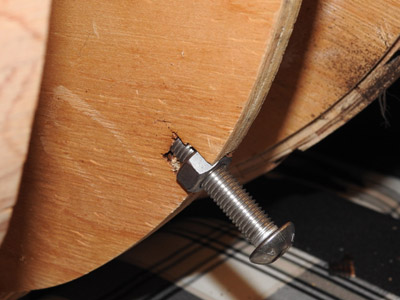 |
|
I hope it works.
|
Preparing.
|
Test fitting one bracket.
|
The lower bolt.
|
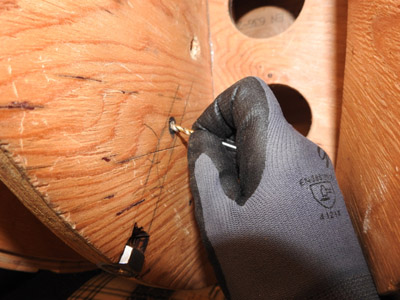 |
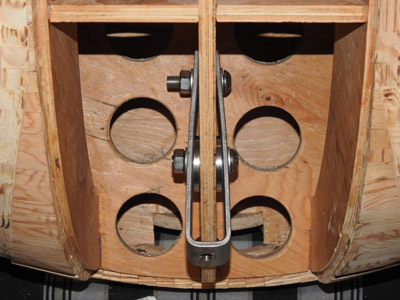 |
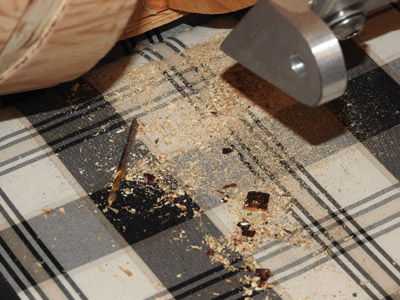 |
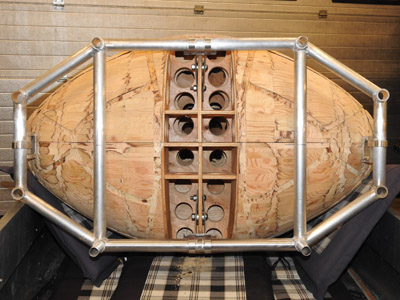 |
|
Here's why it wasn't a walk in the park.
Because of lack of room, I had to manual drill holes with my hands. |
But as many times before... time went by.
|
Sawdust.
|
Now the front frame fitted to the CM by the
top and bottom hinges. |
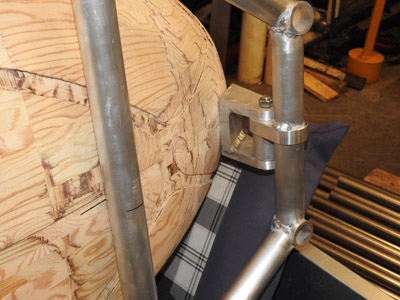 |
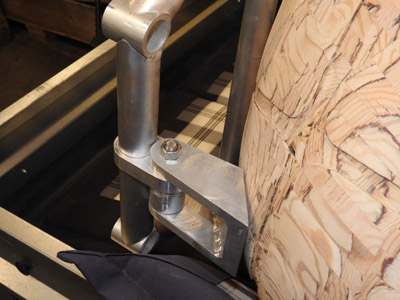 |
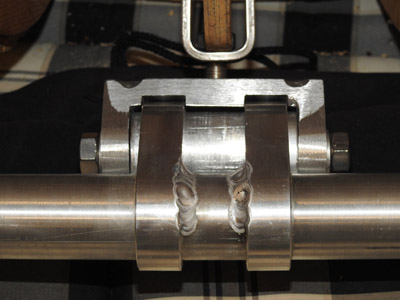 |
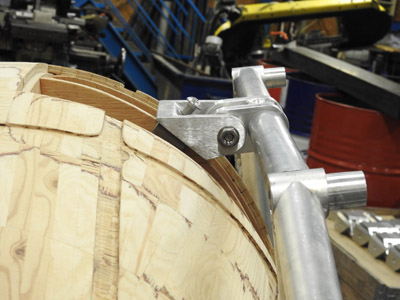 |
|
The side hinges will have to wait.
|
But it look like it will fit promissing.
|
||
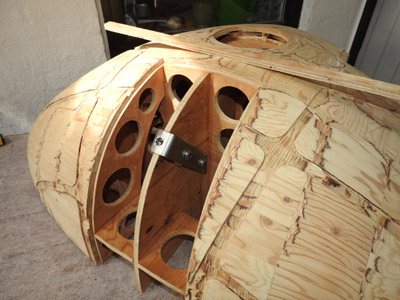 |
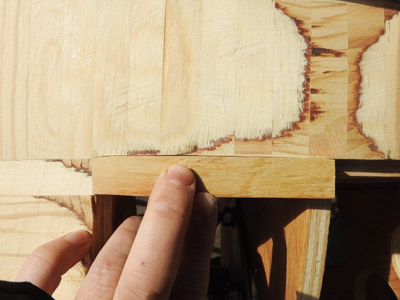 |
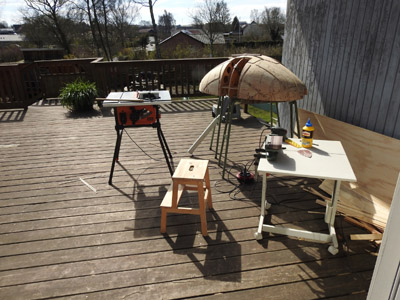 |
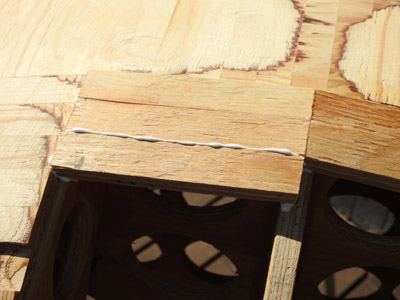 |
|
Now after a year of waiting, the CM finally is been
closed up to the back.
|
First stick made to fit... I now the drill....
|
Working area on the terrace.
|
Five sticks glued in place.
|
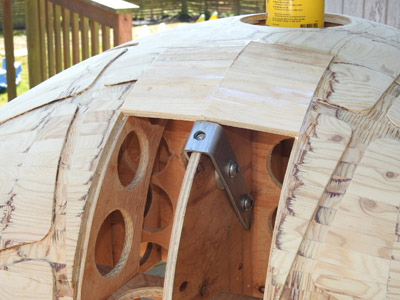 |
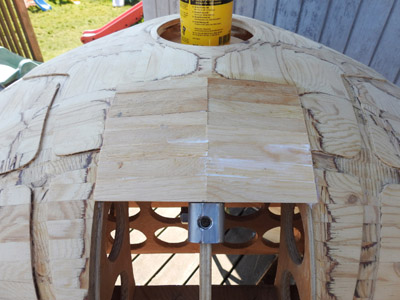 |
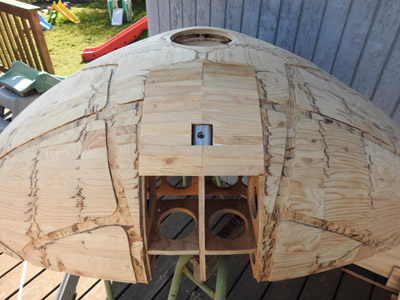 |
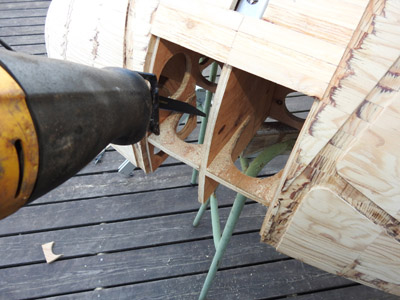 |
|
Down to the bracket.
|
And further down...
|
To gain access from the inside, I use the bajonet
saw.
|
|
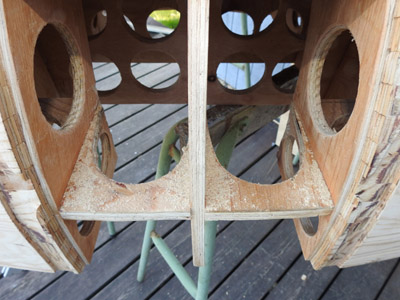 |
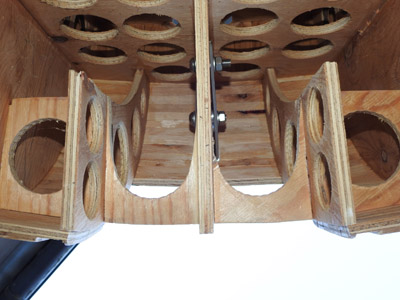 |
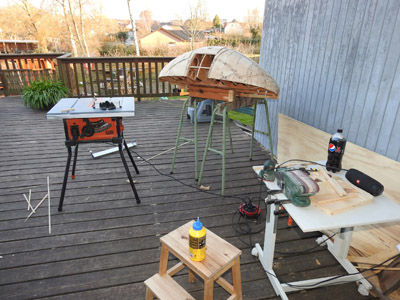 |
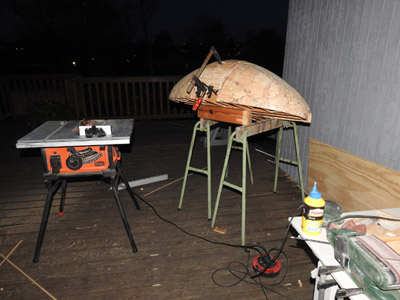 |
|
There.
|
If I need future access after closing the CM all up.
|
The day comes to an end.
|
|
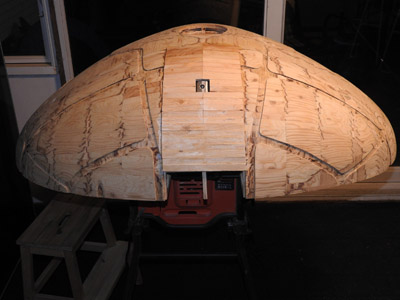 |
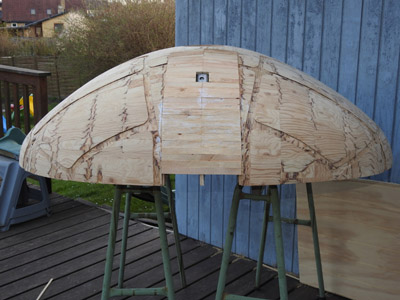 |
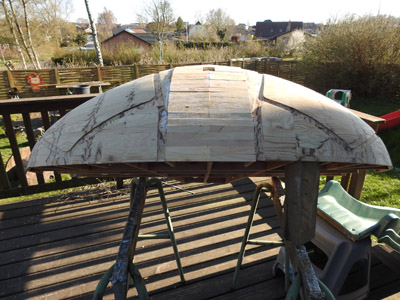 |
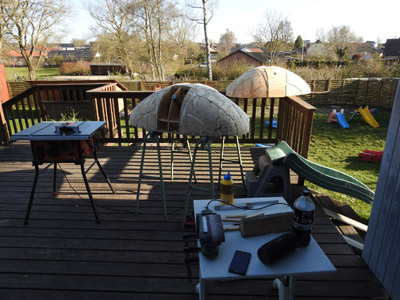 |
|
Continuing next day
|
Now.
|
All the way down...
|
...and I can start all over on the second half part.
|
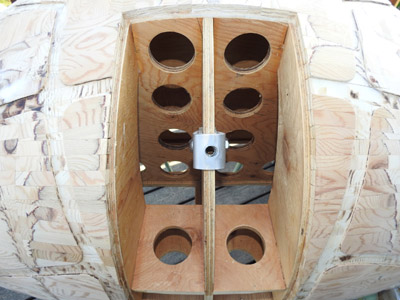 |
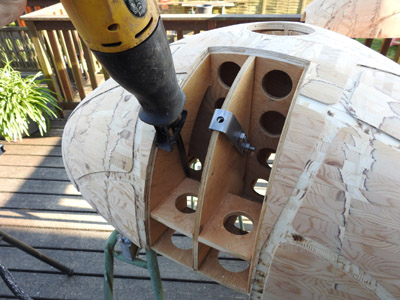 |
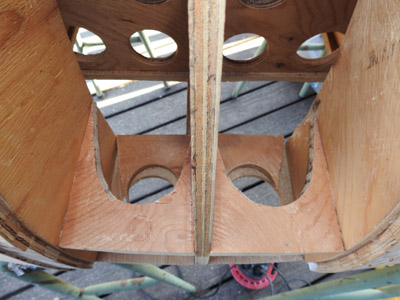 |
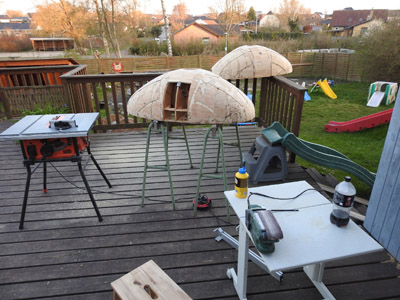 |
|
Same procedure.
|
Also making room with the bajonet saw.
|
Sticks reaches down to the bracket.
|
|
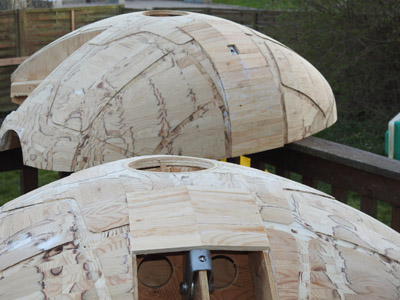 |
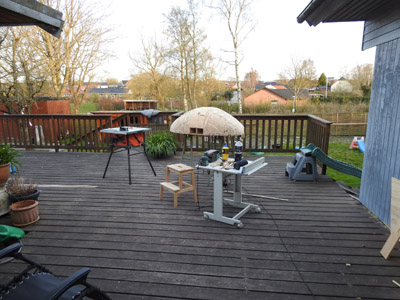 |
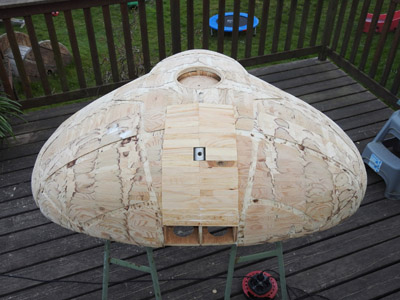 |
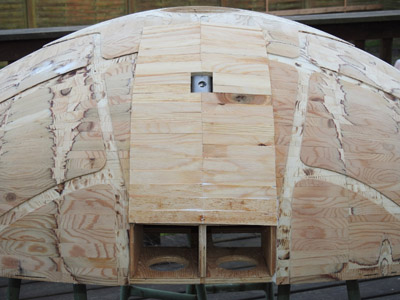 |
|
And further down
|
Bracket surrounded by sticks.
|
||
|
|
|
|
|
|
Test fitting of bracket.
|
Some grinding to make a flat area.
|
Both halves completely closed up.
|
And after some sanding.
|
|
|
|
|
|
|
Marking where to mill later on.
|
Bracket mounted.
|
Both halves sanded.
|
|
|
|
|
|
|
|
Both brackets mounted.
|
Enjoying the completed Command Module.
|
||
|
|
|
|
|
|
|
|
|
|
|
Front frame fitted
|
|||
|
|
|
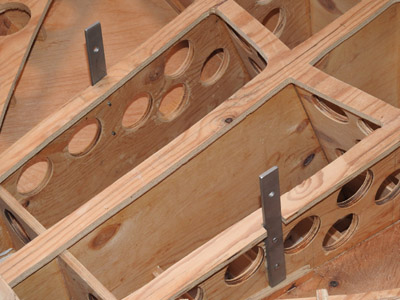 |
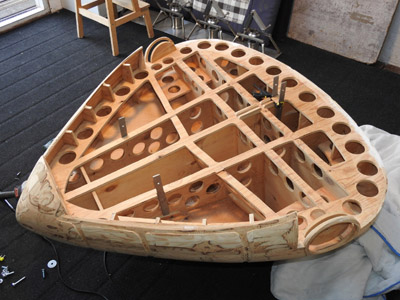 |
|
The side brackets needs to be grinded hollow to fit
CM.
|
Brackets to lock the two halves together.
|
Originally two in the back were planned.
|
|
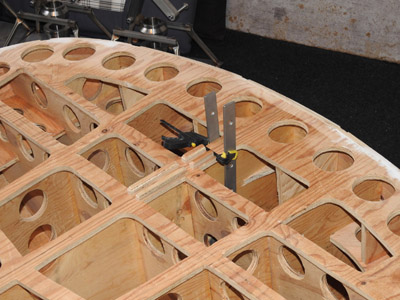 |
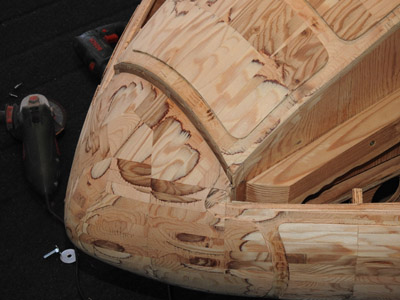 |
 |
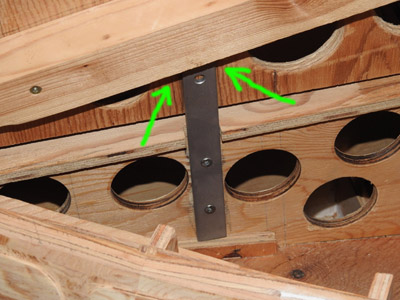 |
|
But without acces from the outside it is pointless.
|
Suddenly the two halves wouldn't come together...
|
...properly.
|
The flat bracket were too long.
|
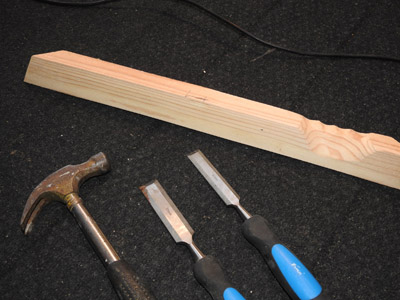 |
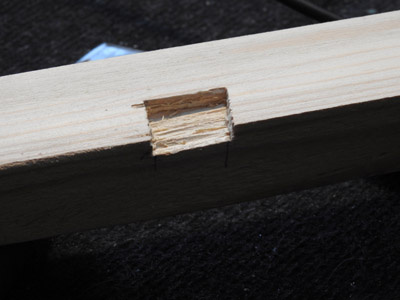 |
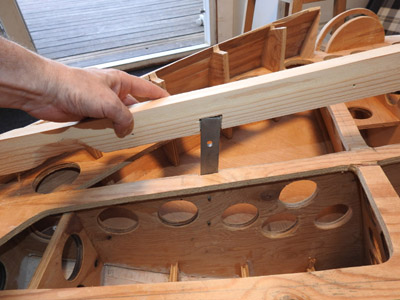 |
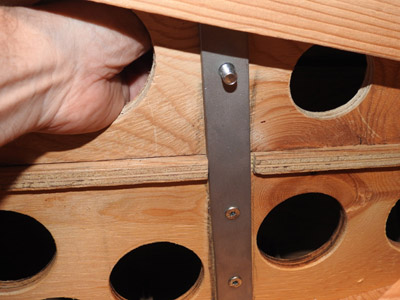 |
|
So I made room for them.
|
It would have been easier cutting the bracket.
|
But now it fits... and a bolt through.
|
|
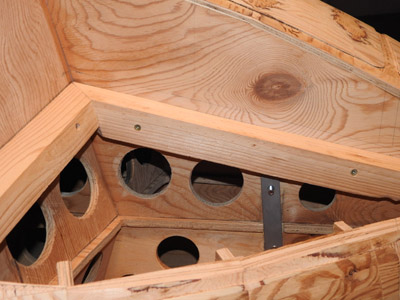 |
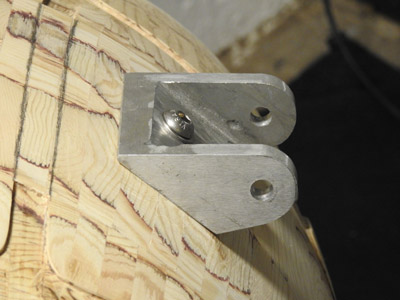 |
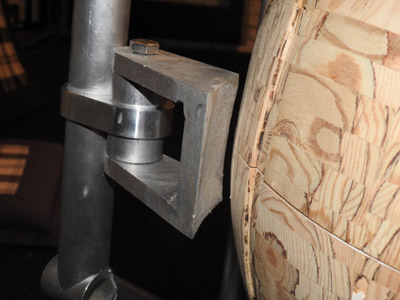 |
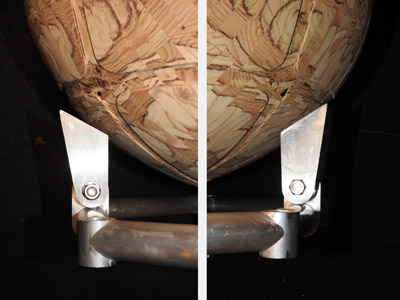 |
|
Grinding a little on the side bracket.
|
Comparing the two sides after a little grinding.
|
||
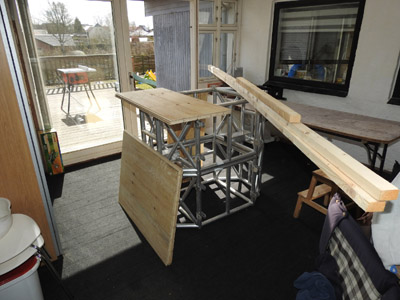 |
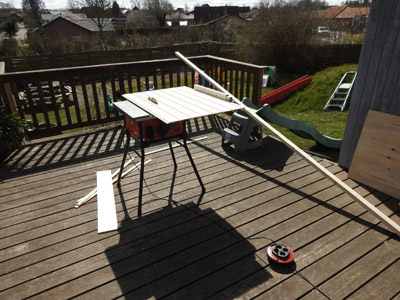 |
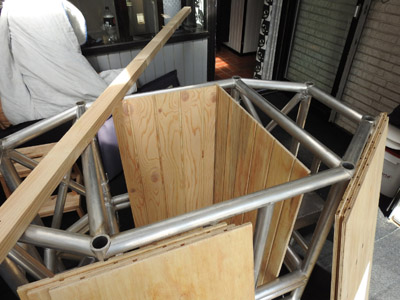 |
 |
|
Now to the boxes inside the cages.
|
Working outside when the weather allows it.
|
Sides sawed.
|
Loose test fit.
|
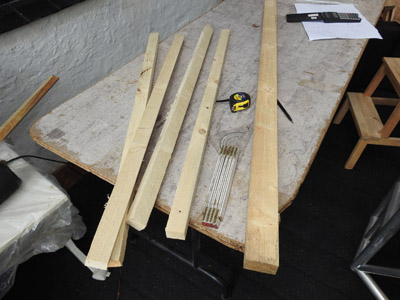 |
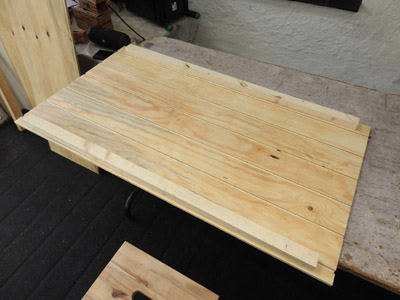 |
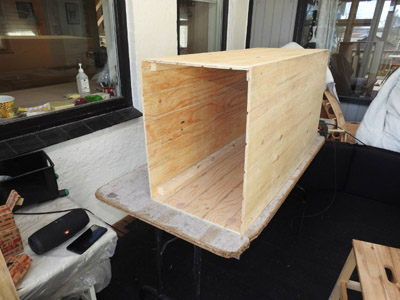 |
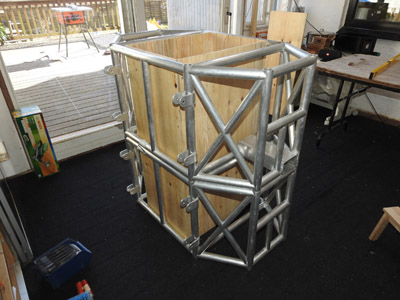 |
|
Battens split into thinner battens... to save wood.
|
Side with thin battens.
|
Box without ends.
|
Another test fit.
|
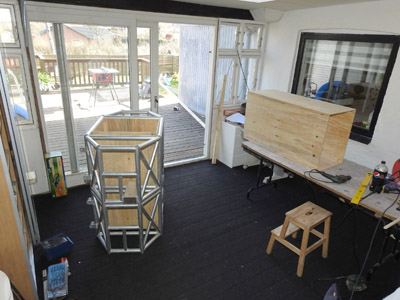 |
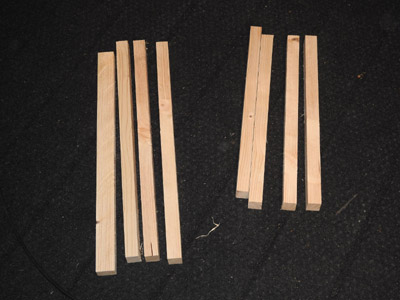 |
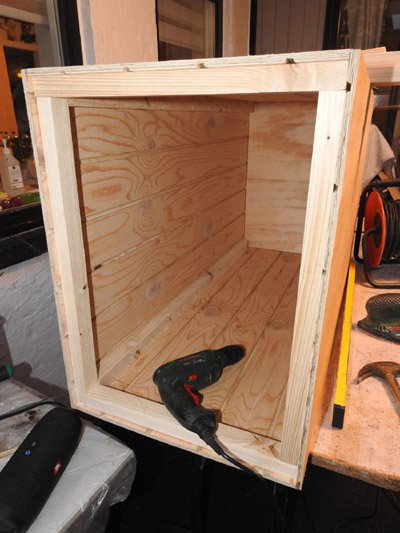 |
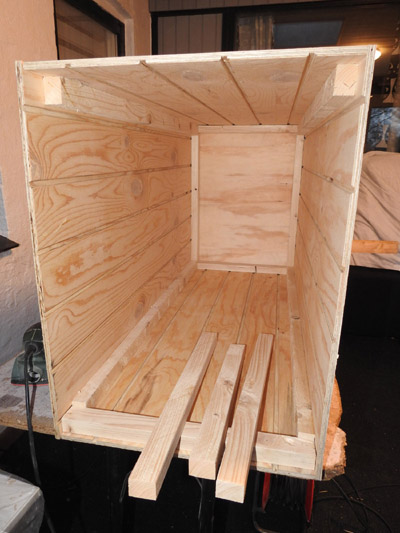 |
|
Work space indoor.
|
Bettens for the ends.
|
One end...
|
...and the other end.
|
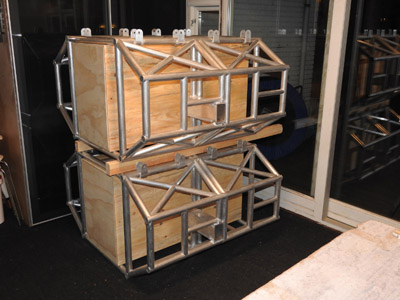 |
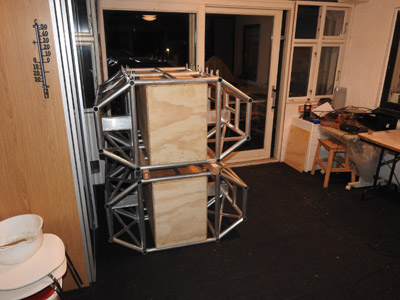 |
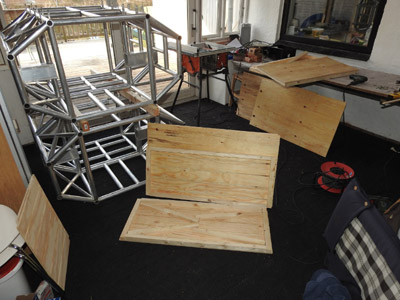 |
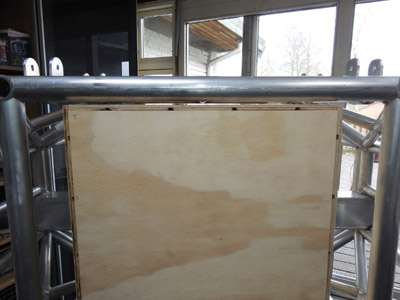 |
|
Test fit...
|
...a bit too tight it showed.
|
Disassembling to correct.
|
Now there's just a little space.
|
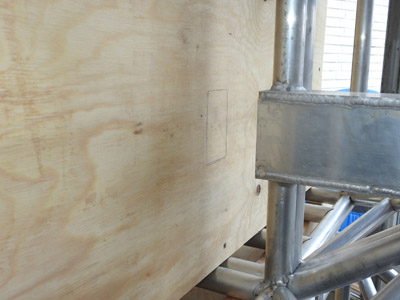 |
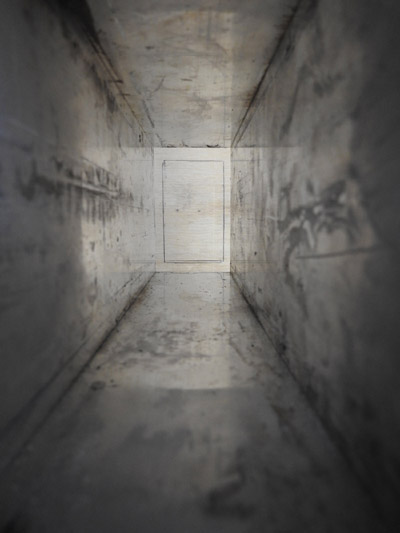 |
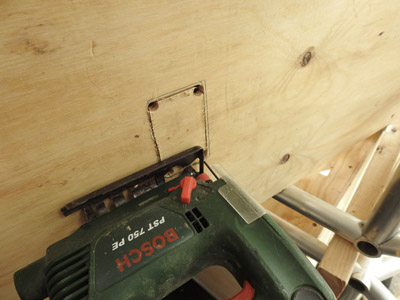 |
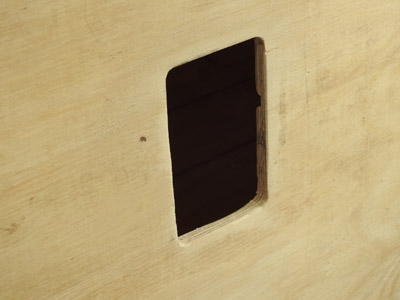 |
|
Marking the square holes for the
transverse loadbearing beam. |
That's about right.
|
Jigsaw.
|
Ready for a test fit.
|
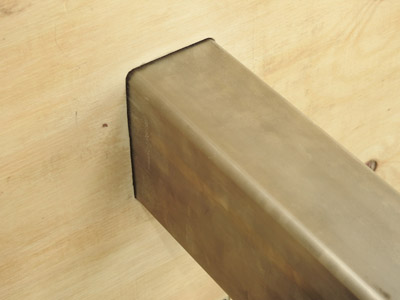 |
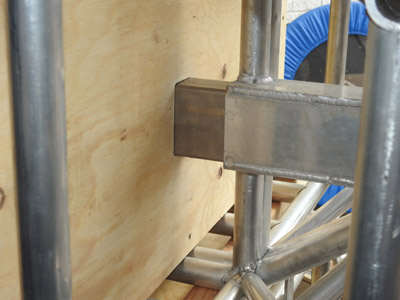 |
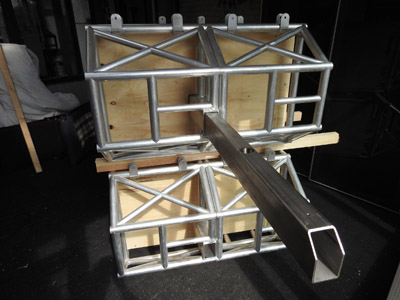 |
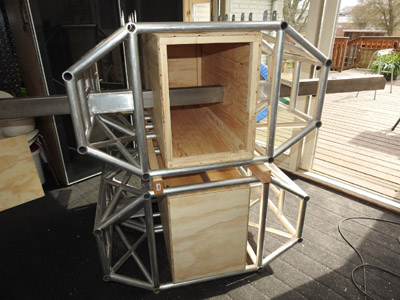 |
|
Perfect fit.
|
Now... piercing all the way through.
|
In place.
|
Maybe a magician could use this!?
|
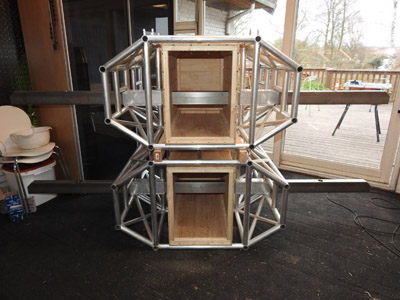 |
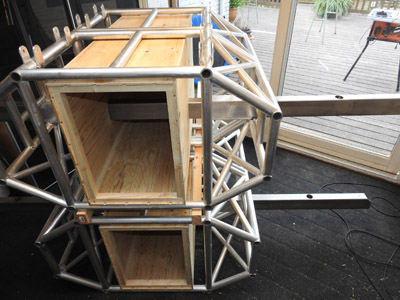 |
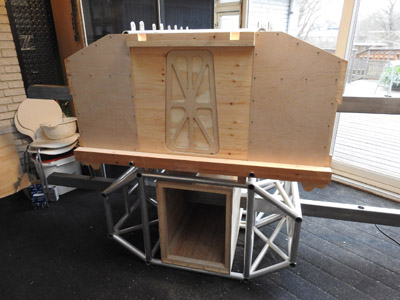 |
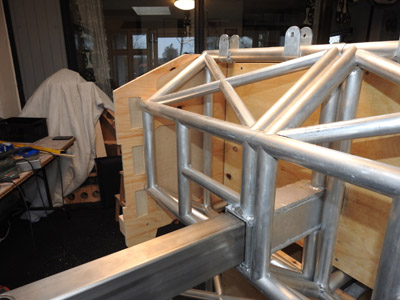 |
|
Both beams in place.
|
A lot of tubes makes a criss-cross pattern.
|
Test of one gable in place.
|
A look from the other side. Boxes done!!!
|
|
NOW... for the first time...! The
eagle shall be assembled in its full length of 7.50 meter or almost
25 feet.
|
|||
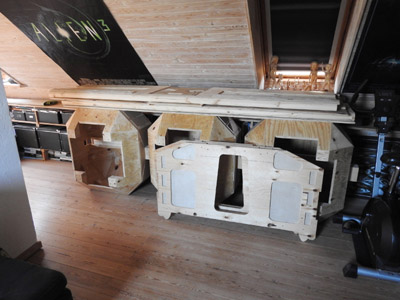 |
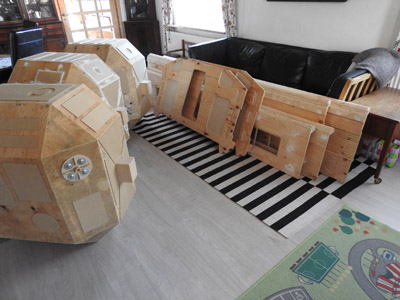 |
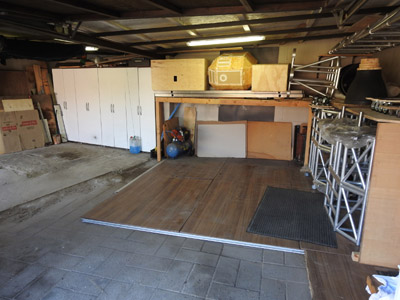 |
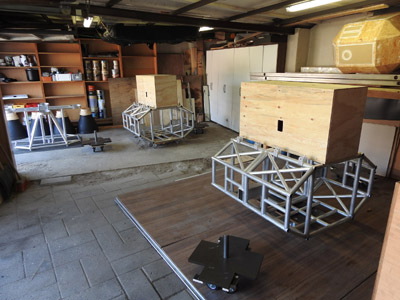 |
|
Collecting parts from all over our house.
|
Most are in the garage.
|
Two cages in place.
|
|
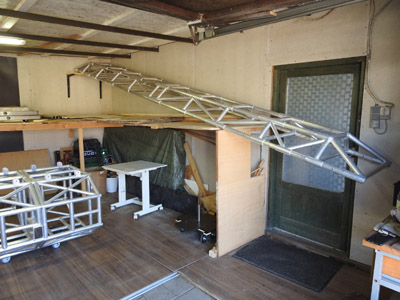 |
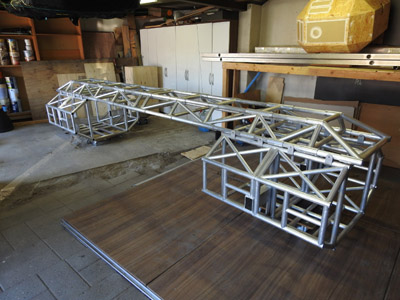 |
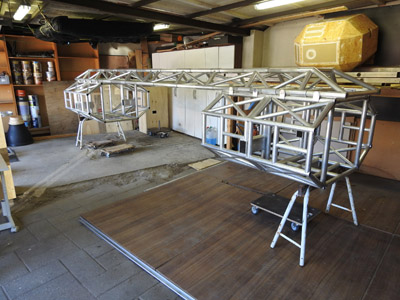 |
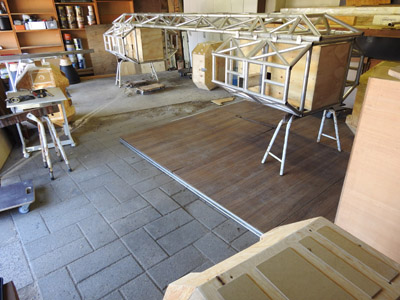 |
|
Spine coming down.
|
Laid on top of the two (four) cages.
|
It all raised up on saw horses.
|
Body boxes fitted.
|
 |
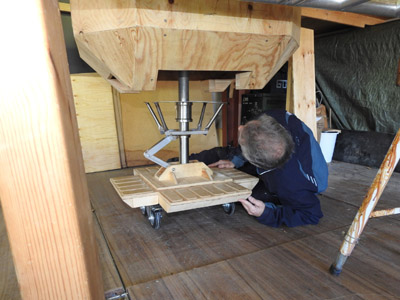 |
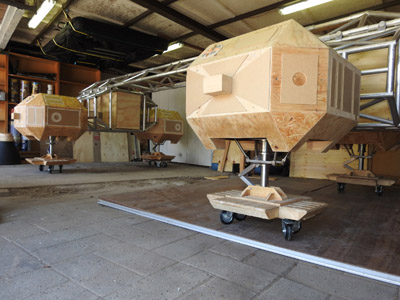 |
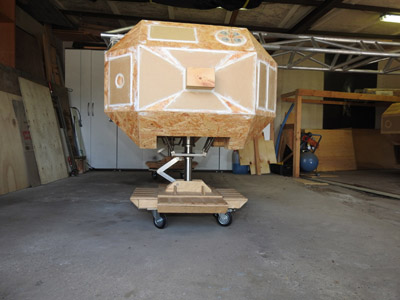 |
|
The two transverse beams fitted along with the pods.
|
Lars Skovmand are looking when it is gonna fit.
|
Two legs and feet in place.
|
and the final two.
|
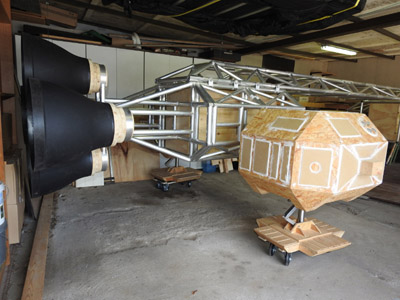 |
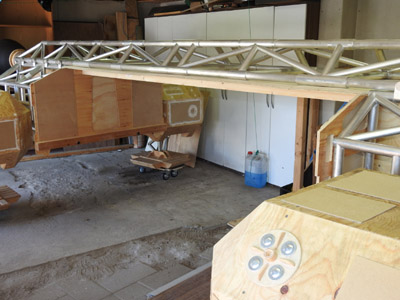 |
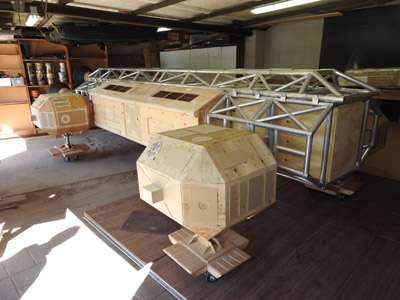 |
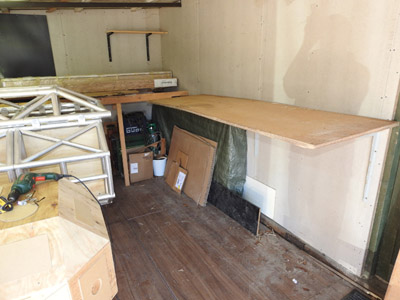 |
|
Boosters.
|
The roof of the passenger pod.
|
Passenger Pod done.
|
Gotta remove this shelf to make room for the CM.
|
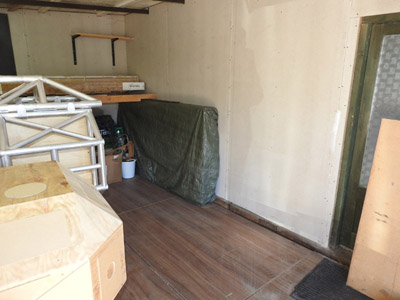 |
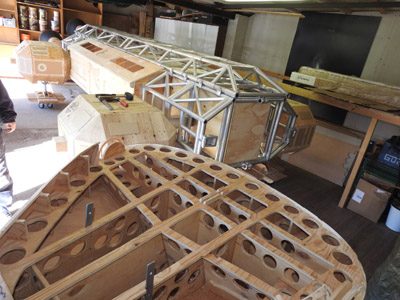 |
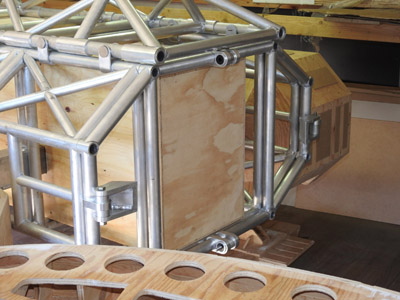 |
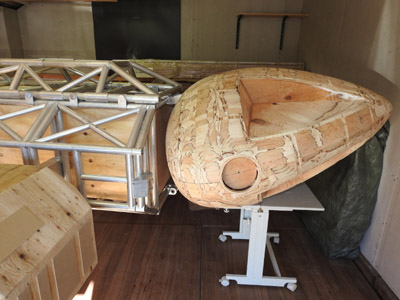 |
|
There!
|
Getting the CM ready.
|
And the front frame.... will it hold?
|
The CM hinged down
|
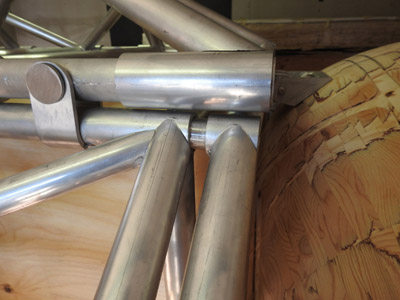 |
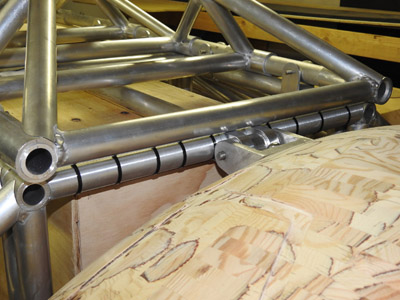 |
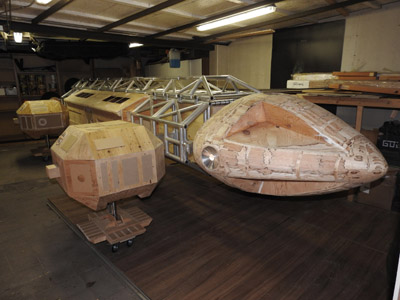 |
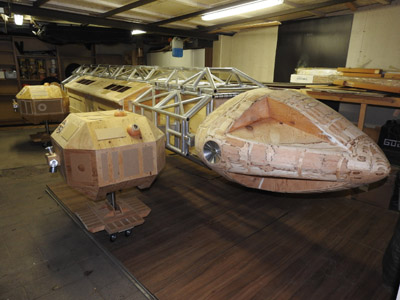 |
|
The 55 kg CM would like to pull out the front frame.
|
Temporary fixed with strips.
|
All done without direction boosters.
|
Direction boosters added!!!
|
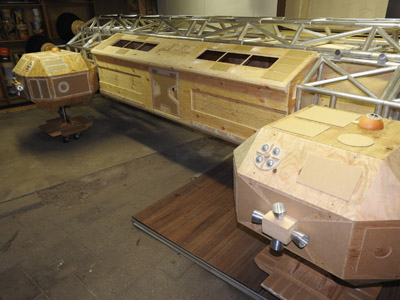 |
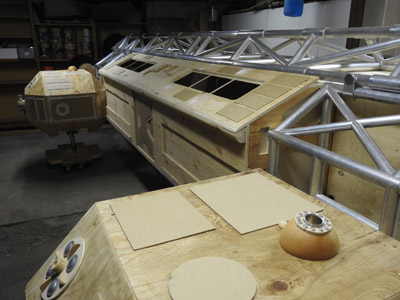 |
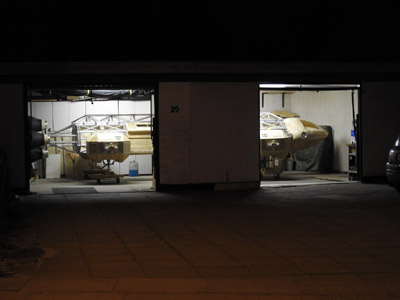 |
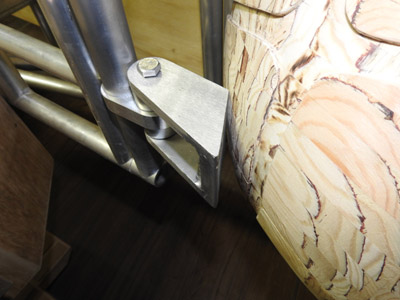 |
|
Mid section... the passenger pod.
|
A view from one shoulder pod to another.
|
A view from the road to our double garage.
|
Now hollowing up the side hinges.
|
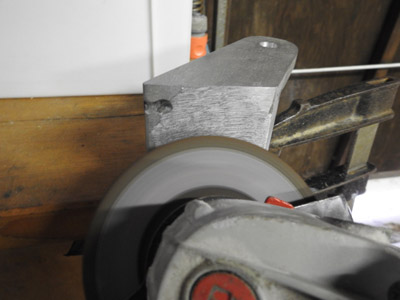 |
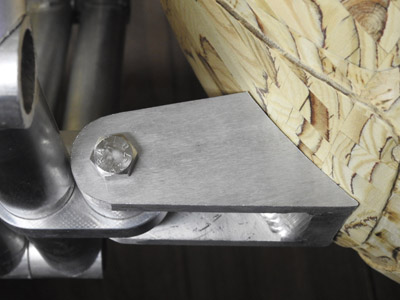 |
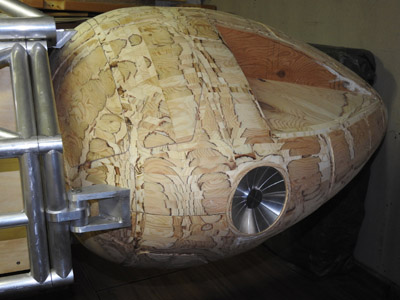 |
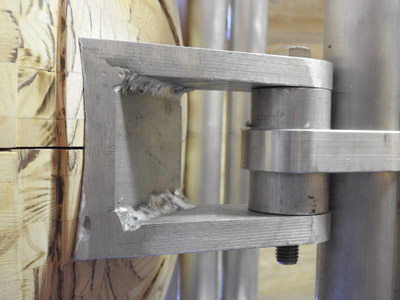 |
|
Step by step hollowing the surface with angle grinder...
|
...until it fits.
|
Looking good.
|
|
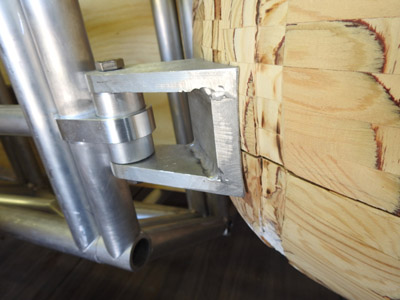 |
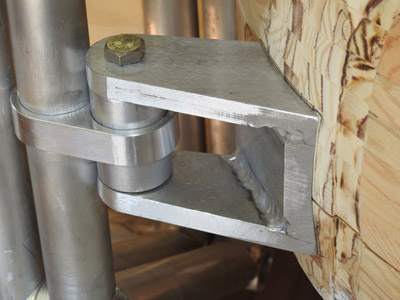 |
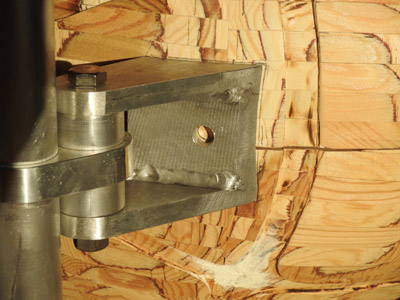 |
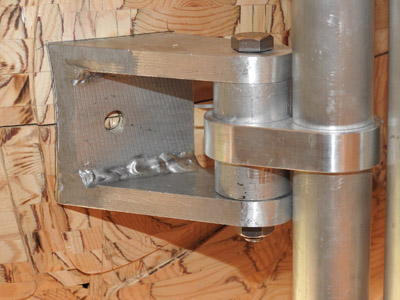 |
|
A hole drilled
|
in bith brackets of course
|
||
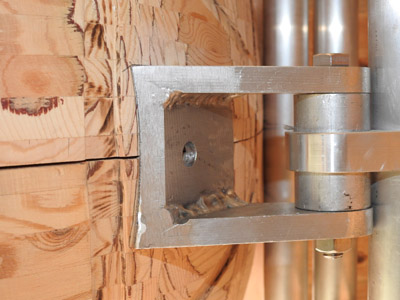 |
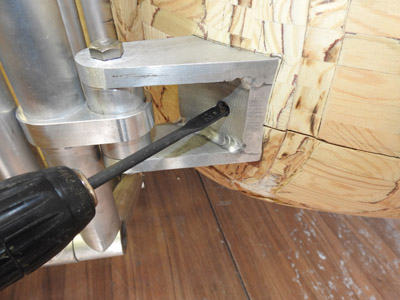 |
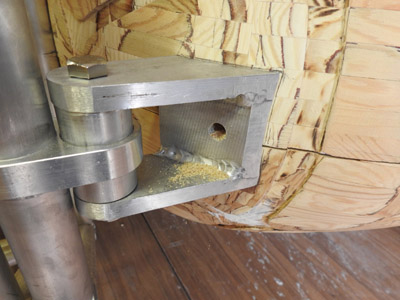 |
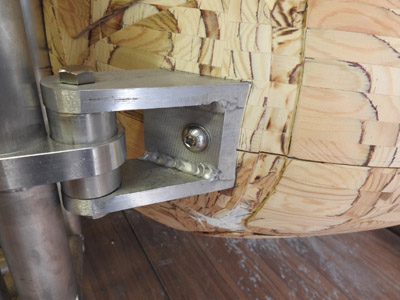 |
|
Now drilling into the CM for later use.
|
Fitting the bolt.
|
||
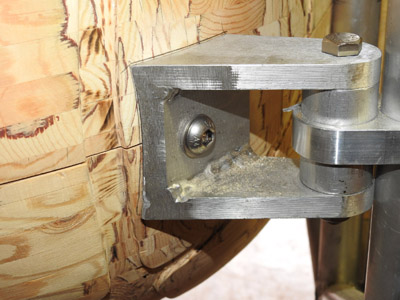 |
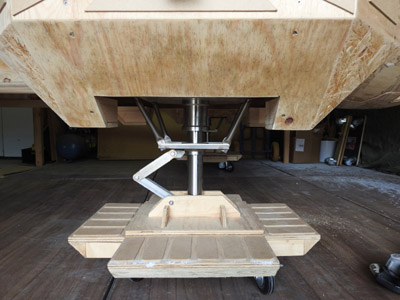 |
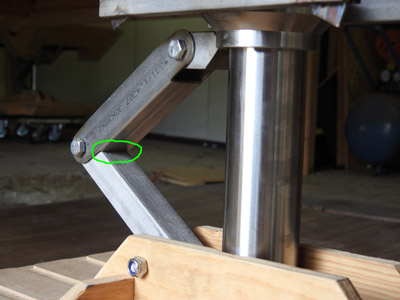 |
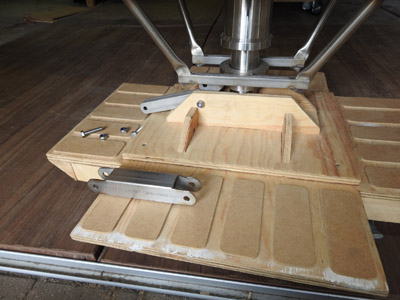 |
|
Check!
|
The landing gear need to come down a little
|
This area needs to be opened up.
|
Dissassembling the elbow/arm.
|
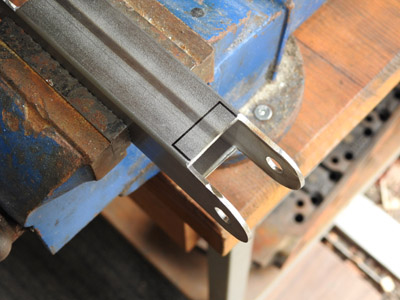 |
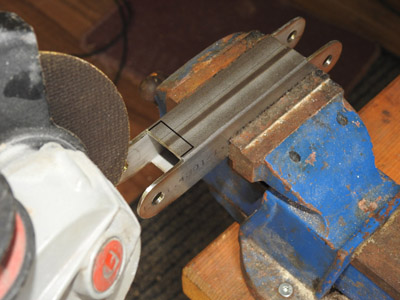 |
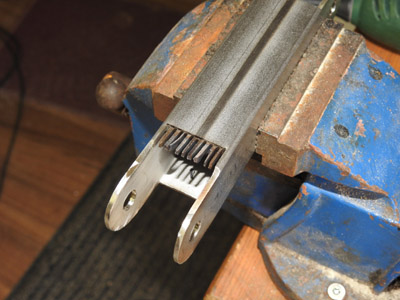 |
 |
|
Marking.
|
Grinding.
|
Removind the teeth.
|
|
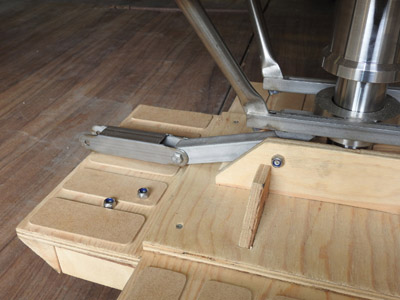 |
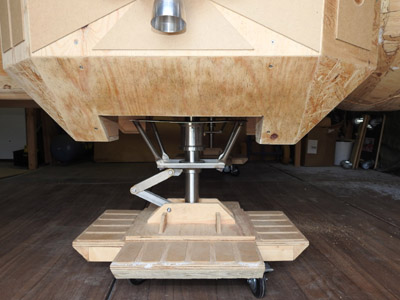 |
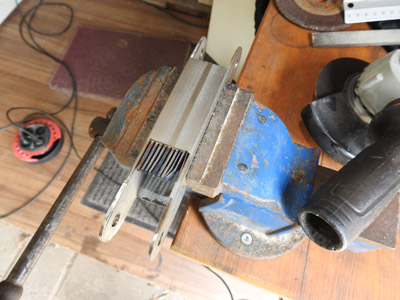 |
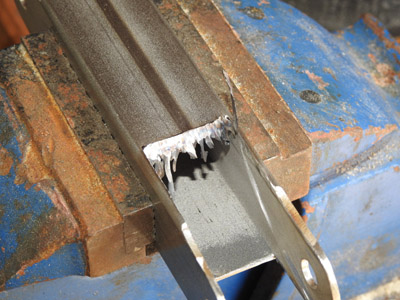 |
|
Need some more opening up.
|
Same method.
|
||
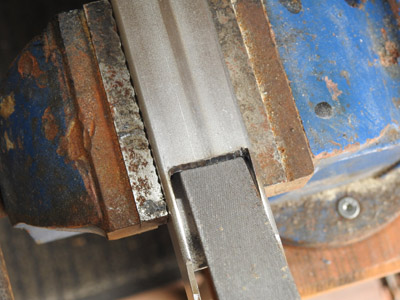 |
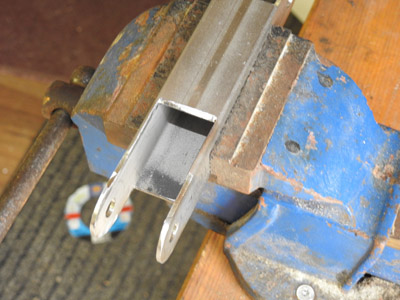 |
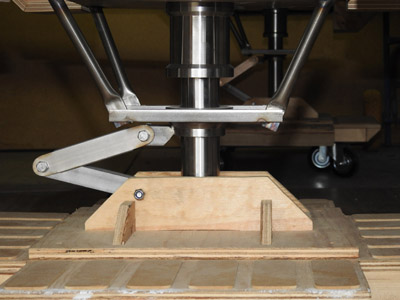 |
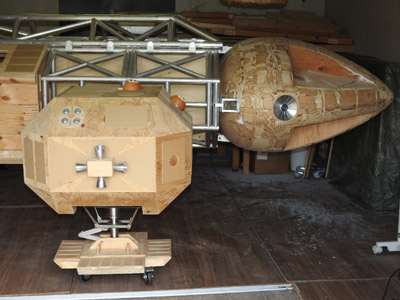 |
|
Too low now.... but it will come a bit up again.
|
To be continued.....!
|
||
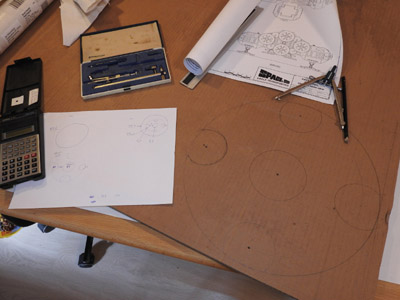 |
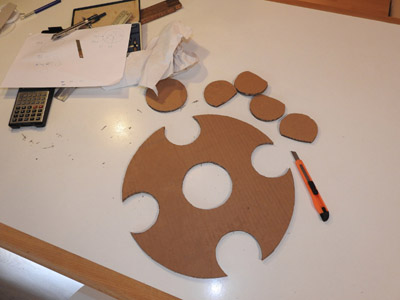 |
 |
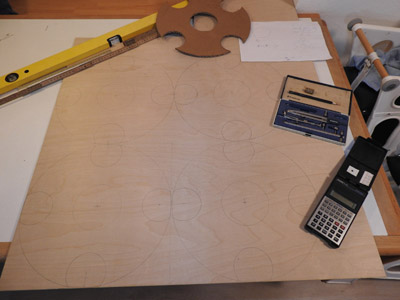 |
|
Template drawed for the inserts of the main boosters.
|
Template cut...
|
...and placed. A little bigger.
|
Now on to the 6mm plywood.
|
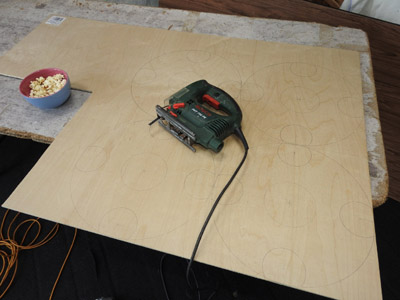 |
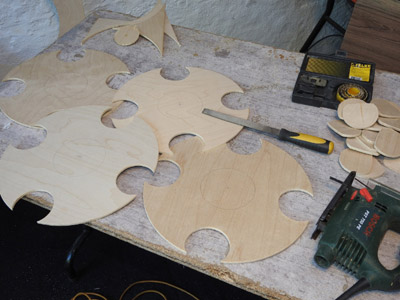 |
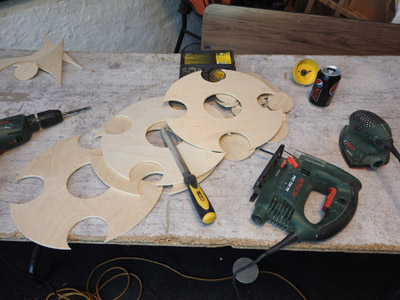 |
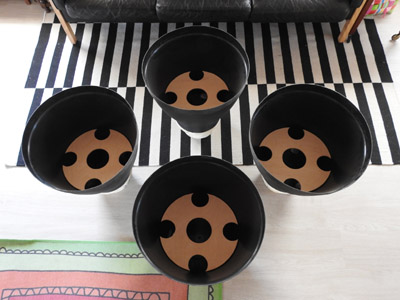 |
|
Jigsaw ready, steady...
|
Some time and concentration later. The 16 edge holes.
|
And the center holes also done.
|
The final fit will be a little higher in the booster
bells.
|
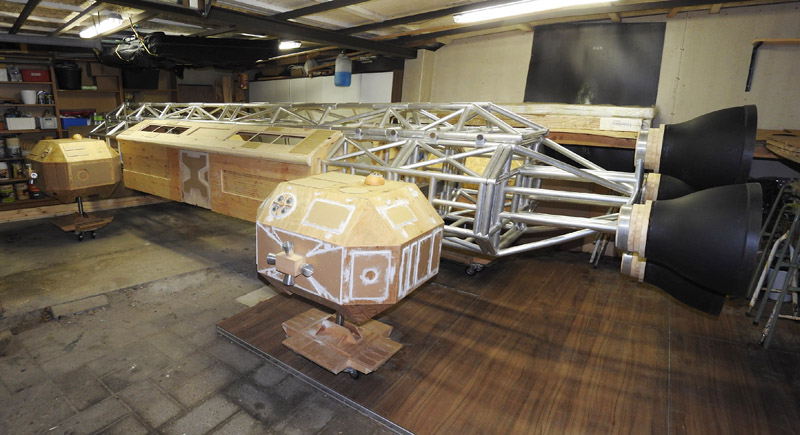 |
|
Weekend February 19th + 20th 2022 - a status assemble,
without the Command Module,
for television (DRTV) that came visiting (see below). |
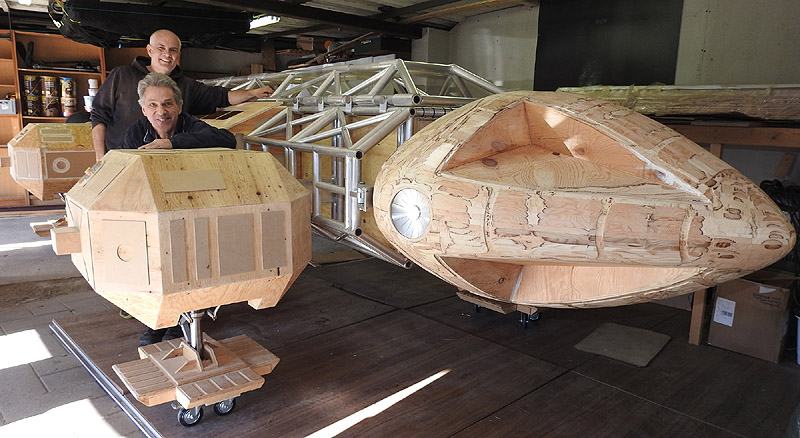 |
|||||
|
April 23rd 2022 - Second assemble once again for television
(TV2) that came visiting.
Now with the Command Module attached. |
IF PLAYER DOESN'T WORK - CLICK HERE
|
|
|
|
|
|
I found this roll of old cable warning band.
|
Along with the pvc tube from an old outdoor lamp...
|
...it made the perfect fit for a distance part.
|
Test.
|
|
|
|
|
|
|
Then I could go on with the next three.
|
Which made four in total.
|
But they needed to be gripped inside the bells.
|
So I made these sockets.
|
|
|
|
|
|
|
Mounted in the center of the bottom of the pot.
|
It gripped perfectly.
|
Now the four booster bells are almost done.
|
|
|
|
|
|
|
|
The oblong engine pods in the engine section.
|
I also made from the wide warning band.
|
Gaffa tape and filler glue hold it all together.
|
Now I just need something 'spherish' for the ends.
|
|
|
|
|
|
|
Used globes!!!
|
Cut in two halves...
|
...and narrow bands added...
|
...they made a perfect job.
|
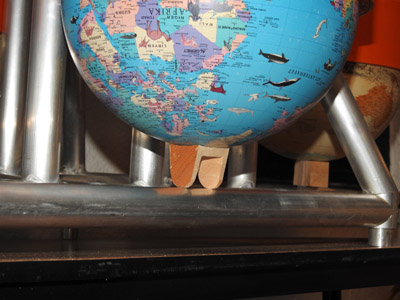 |
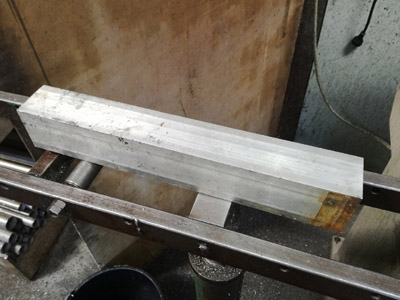 |
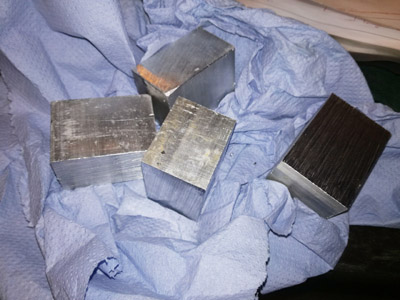 |
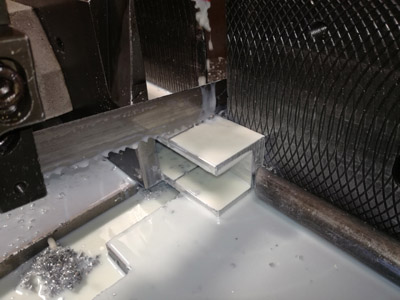 |
|
I made this bracket template of wood (as usual).
|
But at Kurt's shop I got some aluminum.
|
Cut i smaller blocks.
|
...and shapes.
|
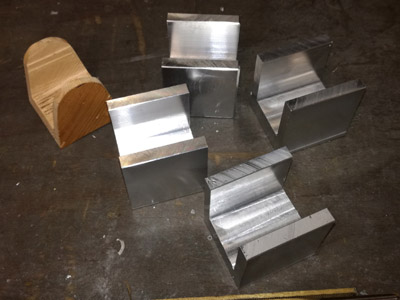 |
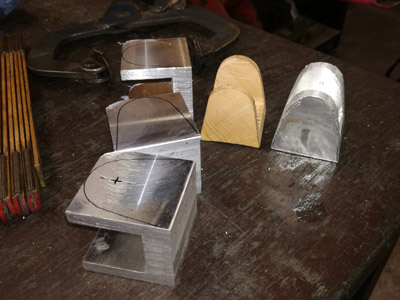 |
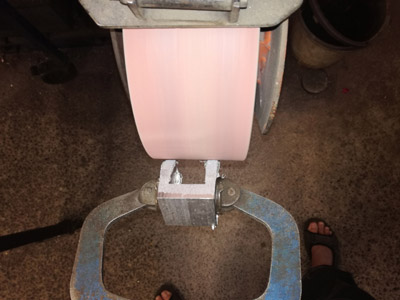 |
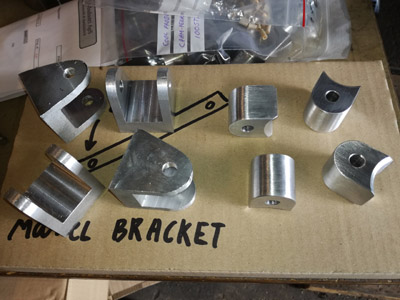 |
|
They began to look like something
|
The curves...
|
...I made on a large band grinder, which made the
item extremely HOT.
|
Meanwhile Kurt made the other parts for me.
|
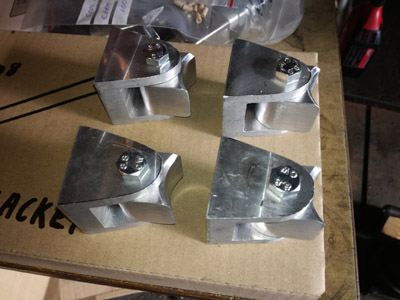 |
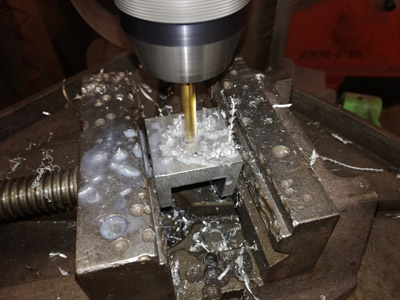 |
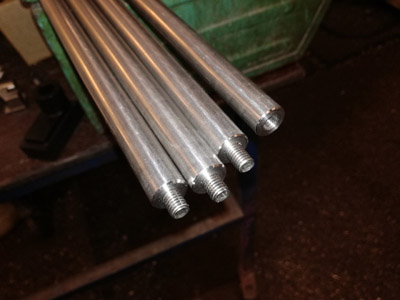 |
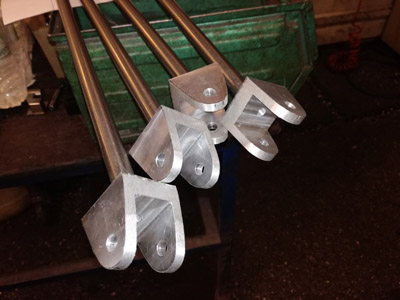 |
|
Bolts added.
|
And thread cut.
|
For these sticks.
|
Now they are almost ready to fit the pods.
|
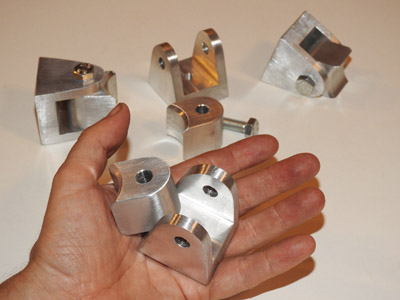 |
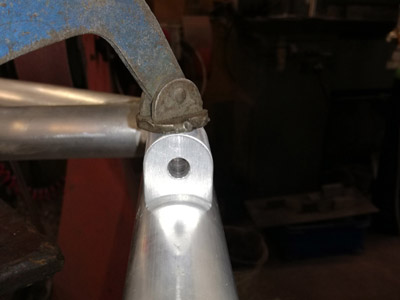 |
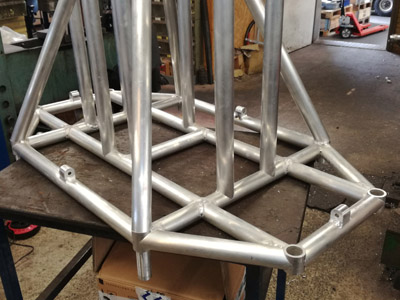 |
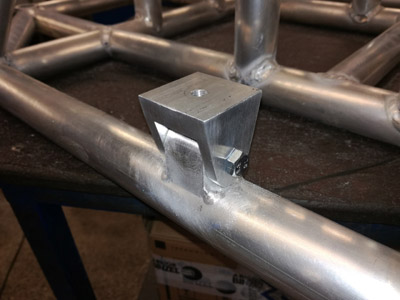 |
|
But one of the parts...
|
...shall be welded onto the engine frame.
|
Perfect!
|
Some of the weldings had to be grinded off,
to make room for the bracket part. |
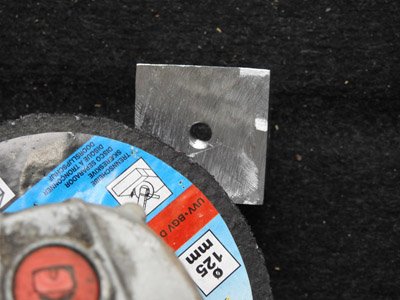 |
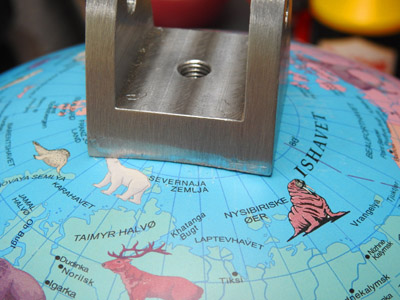 |
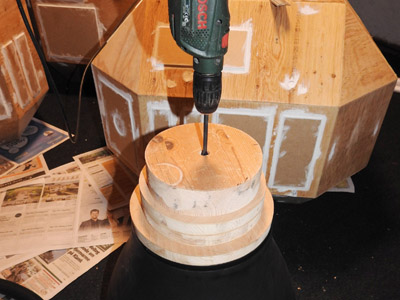 |
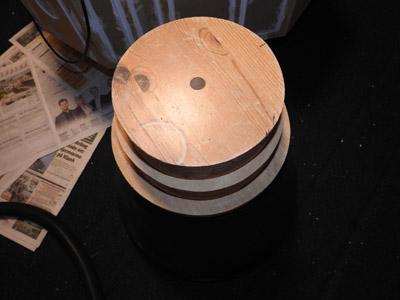 |
|
The brackets needed to be curved - with the grinder.
|
To fit the globes curve. Perfect.
|
And then...
simple holes drilled in the sockets of the engine bells |
Ready to try on...
|
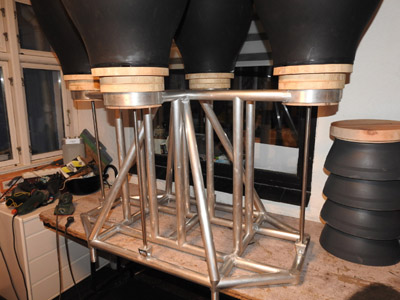 |
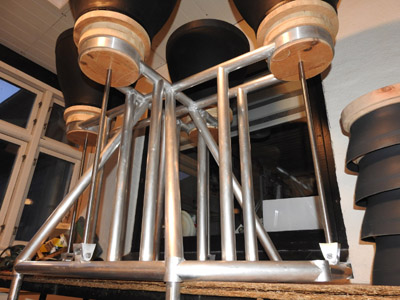 |
|
|
|
Along with the rods and brackets on the frame.
|
Looks great.
|
Last I needed to adjust the holes
in the ends of the globes to fit the rods. |
Each disc are different shaped.
|
|
|
|
|
|
|
Glue added.
|
Some has to be fitted vise versa.
|
Test.
|
Test... all good.
|
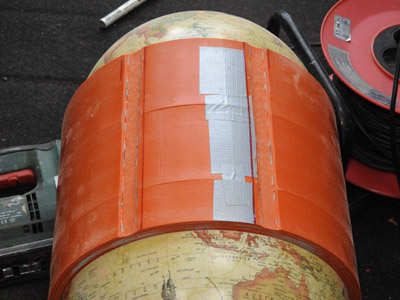 |
|
|
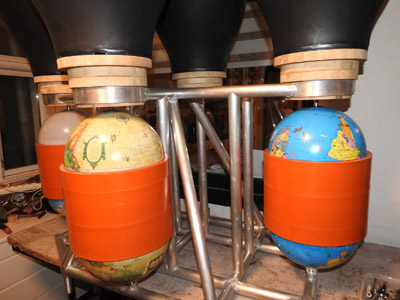 |
|
Two of the pods (top and bottom) needed to have two
grooves cut to be able to fit correctly.
|
That did the trick.
|
Some extra filler-glue added
to hold the globe ends to the middle band. |
Alle four engine pods now in place!
|
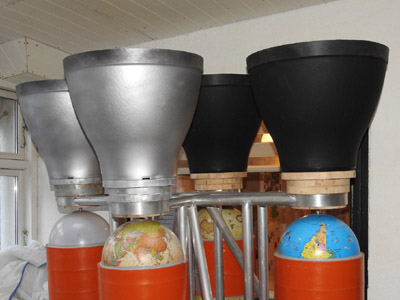 |
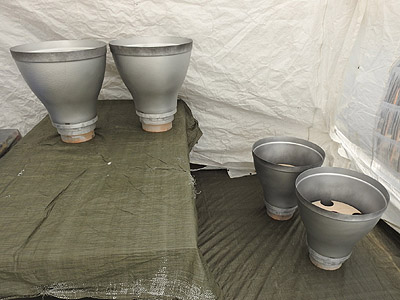 |
|
|
|
The very first try with Edding silver paint spray
cans.
|
Second layer outside and first layer inside
on the four main booster bells. |
Now to some smaller plant pots.
These shall be used for four of the vertical boosters. |
Along with some cuts from my second hand tabletop.
|
|
|
|
|
|
|
Four blocks.
|
Used as base for the bells.
|
Cutting then from square to octagonal.
|
And further more to nearly round.
|
|
|
|
|
|
|
The band grinder takes the last edges.
|
I had to mill tracks in the blocks
to match the bottom of the pots. |
Several cuts around the top edge.
|
Ends up in this edge form.
|
|
|
|
|
|
|
Fits great.
|
Now the pot has to be cut down in size.
|
The shape begins to take shape.
|
The pots gets mounted to the base with screws.
|
|
|
|
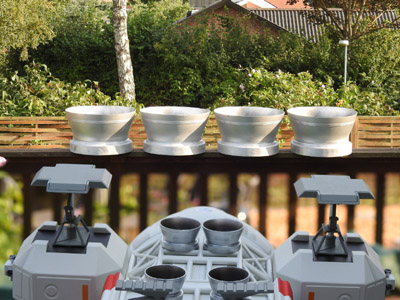 |
|
|
Last the crack gets some filler.
|
And smoothening.
|
Here are the four vertical bells all painted.
|
A closer look inside.
|
|
|
|
|
|
|
Three years ago I made the feet.
|
Time to take them apart for some maintenance.
|
See how dark sun makes the wood.
|
Now some glue on.
|
|
|
|
|
|
|
And then srew back on, but not the 'horse'.
|
It also has to be taken apart and glued well together.
|
Some gently strokes.
|
Brings it nicely together again.
|
|
|
|
|
|
|
No time to smoothening roughnesses away.
|
The underside...
|
...also get the treatment.
|
Same goes for the side corners.
|
|
|
|
|
|
|
Sanding tools.
|
Now filling up some cracks here and there.
|
Also more glue needed.
|
The screws also get filled.
|
|
|
|
|
|
|
all filled up.
|
And sanded.... finally ready for some paint.
|
I went straight ahead with my plan using Hammerite
both as primer and as finish. |
Not used to paint I was surprised to see how much
the wood sucked the paint in.
|
|
|
|
|
|
|
Took several coats.
|
Here are seen areas with two and only one coat.
|
Two coats all over.
|
After a third layer of thick Hammerite it looked quite
black.
|
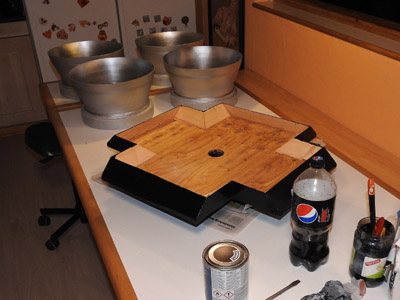 |
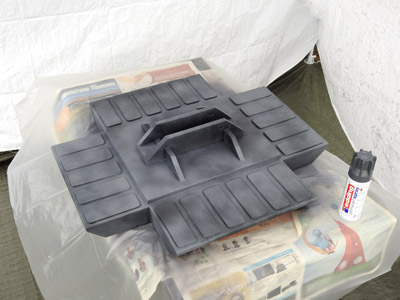 |
 |
|
|
After giving the sides the same treatment...
|
...I just wanted to see how the Hammerite would act
when having grey Edding sprayed on t it.
The plan was to give it just a thin coat for a starter. But when I saw the result... how it popped up. I took a break considering if I will go with this non-original look. I haven't settled for anything yet. |
Step 1,2,3
|
and four feet done.
|
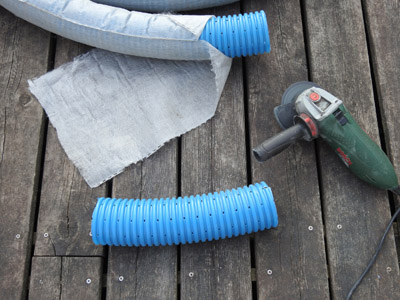 |
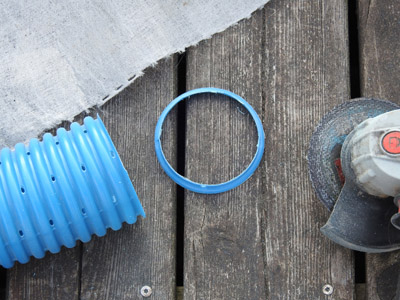 |
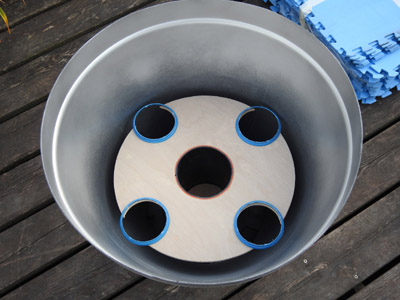 |
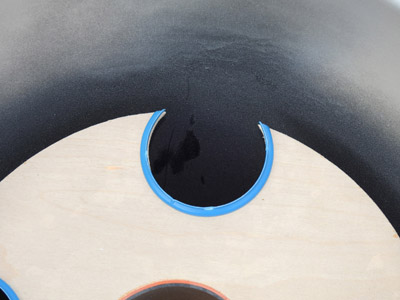 |
|
A piece of drain tube. I only needed 16 wrinkles.
|
Each cut seperately.
|
Think they might fit in here...
|
...when trimmed. Now I'm looking for a
slightly larger diameter of drain tube. |
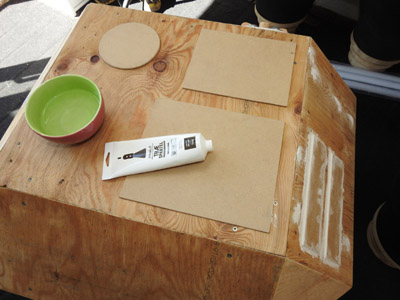 |
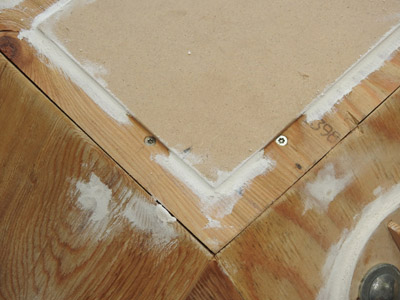 |
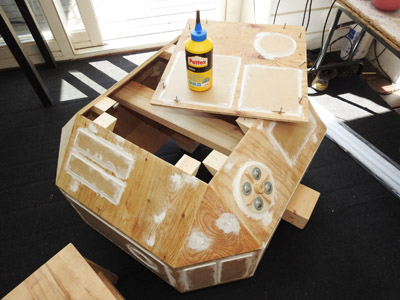 |
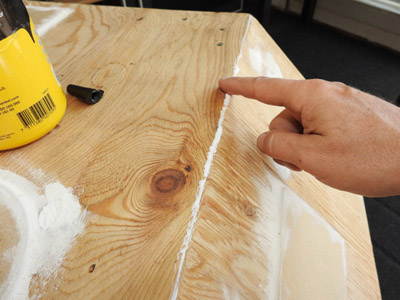 |
|
Preparation before painting.
|
Gotta seal all cracks and fill all holes and grooves.
|
Oh the top is still loose. Gotta glued it on final.
|
And seal it.
|
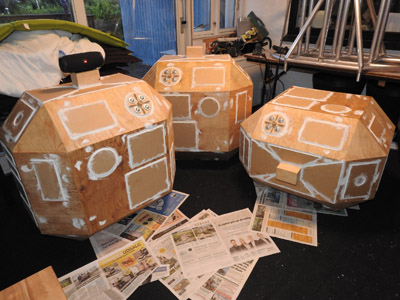 |
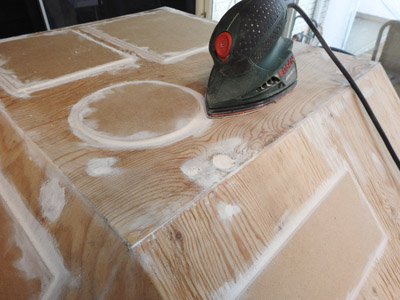 |
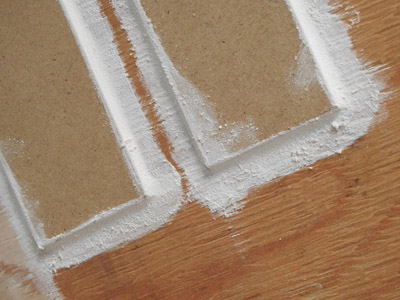 |
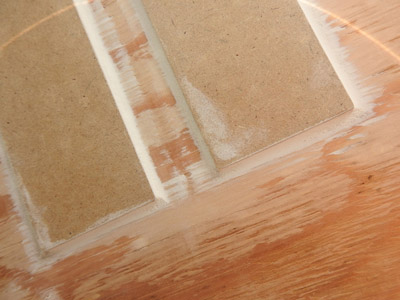 |
|
Three leg pods filled.
|
Ready for some sanding.
|
Because all edges look rough.
|
Much better after.
|
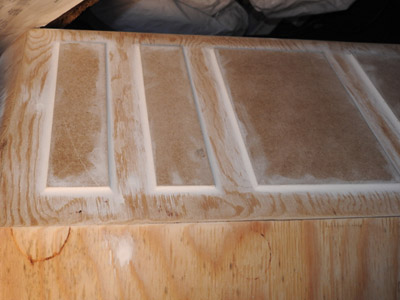 |
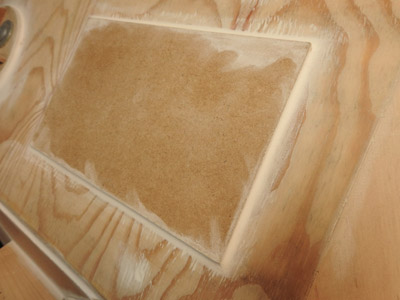 |
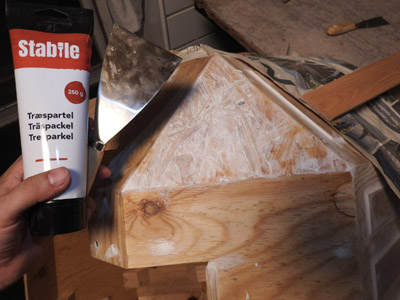 |
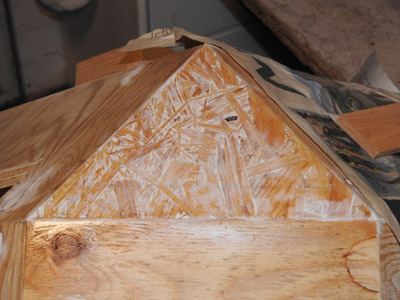 |
|
Getting there...
|
...and there.
|
Where I have used OSB board needed a lot more filler.
|
And sanding.
|
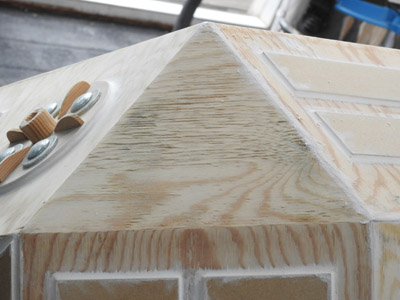 |
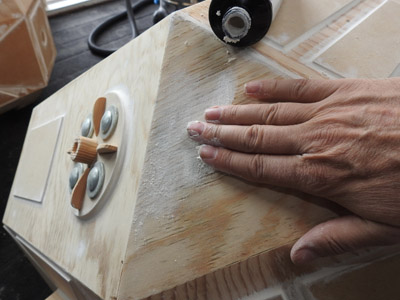 |
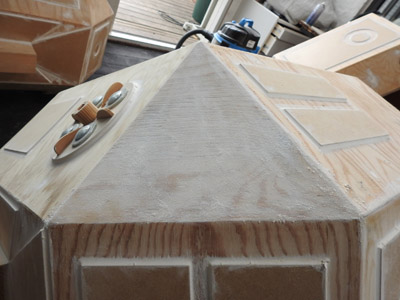 |
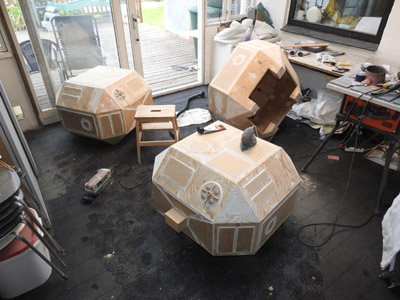 |
|
Grooved plywood also ned extra attention.
|
Rub it on...
|
...like that.
|
Work area.
|
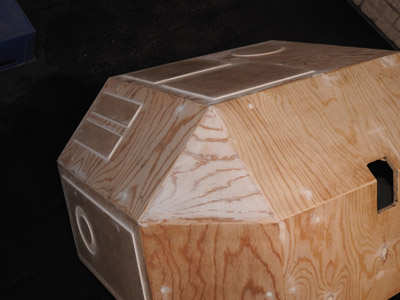 |
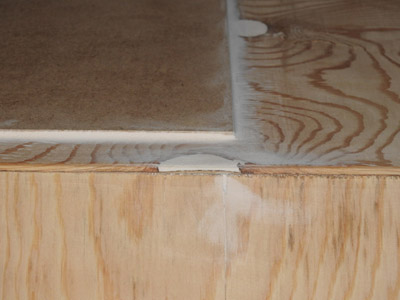 |
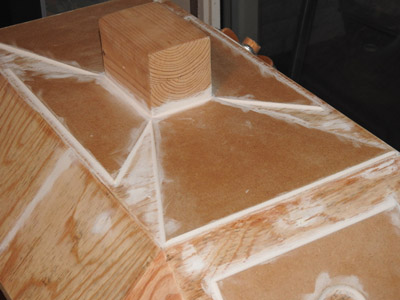 |
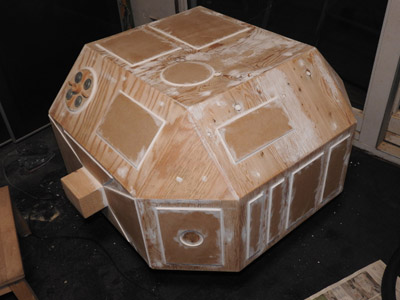 |
|
A corner done.
|
Holes after cams also need extra filling.
|
Alle around the trapez formed details.
|
Almost done... now to the Saturn V part.
|
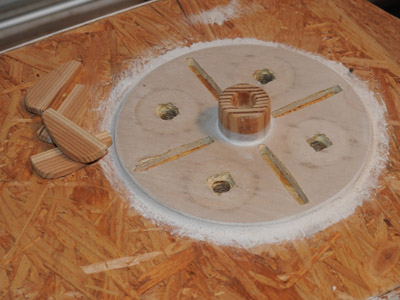 |
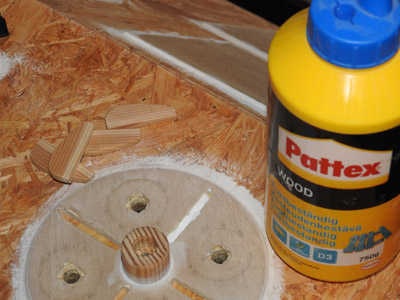 |
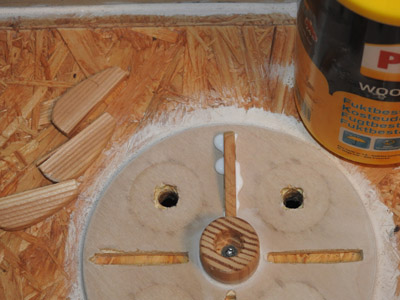 |
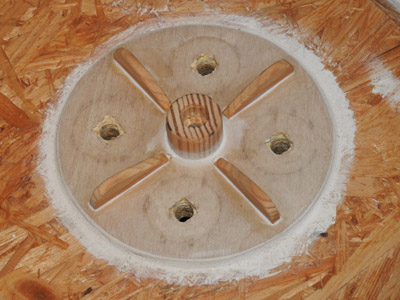 |
|
Metal bolts removed.
|
Also the four small wings hasn't got glue on yet.
|
Well amount of glue.
|
Excess glue used to make smooth edges.
|
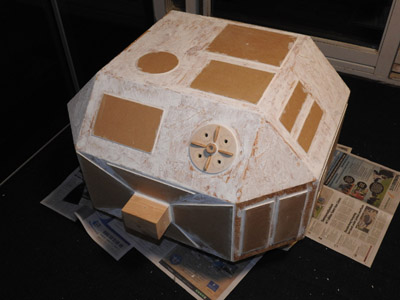 |
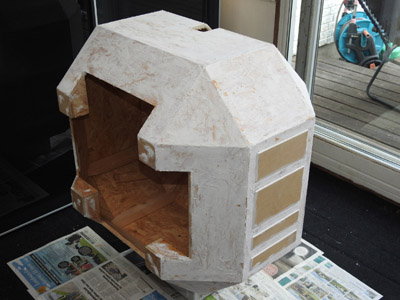 |
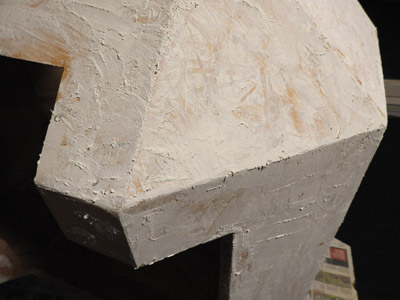 |
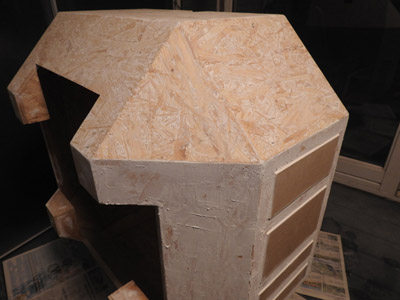 |
|
The fourth pod (which is truly the first proto type
pod)...
|
...needed a kilo of filler becaused it is
made of all OSB board. |
A lot filler to sand down.
|
Time...
|
|
|
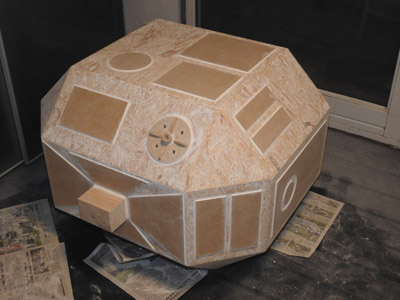 |
|
|
|
...passes...
|
...and finally all four pods are ready for primer
paint.
|
First coat of primer. First pod.
|
Second pod.
|
|
|
|
|
|
|
Third pod first coat.
|
Third pod second coat.
|
Fourth pod.
|
Eagle parts scenery on the terrace.
|
|
|
|
|
|
|
Pods primer paint drying on the terrace.
|
The pods also need protection from the inside.
|
First coat of special anti mould paint.
|
Cracks filled and second coat.
|
|
|
|
|
|
|
Bottom plate for the leg pods.
|
All four cut customized to each own pod.
|
For perfect fit.
|
Primer paint will come later.
|
|
|
|
|
|
|
Making a upside down test setup...
|
... on the terrace.
|
Fitting the heavy stainless legs.
|
Now ready to see how centered the legs are.
|
|
|
|
|
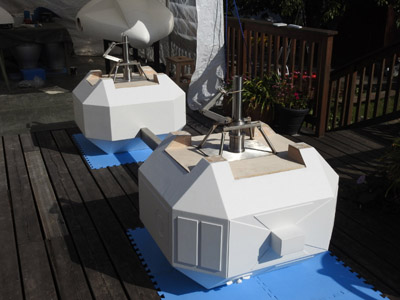 |
|
They are pretty good centered.
|
Only had to cuat a slightly larger whole.
|
The landing gear plate will cover any uncenterness.
|
Looking promissing.
|
|
|
|
|
|
|
A third and final coat added.
|
Making an rubber-like surface.
|
Once again drying on the terrace.
|
Line-up.
|
|
|
|
|
|
|
After closing up the back of the Command Module, there
still remained to be routed some tracks.
|
Let's see if I can remember how to...
|
...use this in free hand.
|
Some correction made in hand afterwards.
|
|
|
|
|
|
|
Cam holes and other holes...
|
...and cracks needed to be filled. Just like the leg
pods.
|
So a couple of days later I was finally ready
to add some primer paint. |
I just rolled on... back...
|
|
|
|
|
|
|
...and front. This is the lower half of the CM.
|
A fine coat. Almost transparent.
|
Unseen unevenness showed up and needed filler.
|
The tracks also primed.
|
|
|
|
|
|
|
Side view (just to write something).
|
Now for the upper half of the CM.
|
Same procedure.
|
Exciting.
|
|
|
|
|
|
|
I used the end of a roller to get down into the tracks.
|
Various views after first coat of filler.
|
||
|
|
|
|
|
|
After second coat I began to see areas that I wanted
to correct. Here a tile that reached a bit too high.
|
And some unevenness in the curved surface
sanded down. |
||
|
|
|
|
|
|
We can't having rain water running into the CM.
So better close the top hole for the top disc. |
Back to cutting a lot of short sticks.
|
A pile of them.
|
Each one gets its own customized shape.
|
|
|
|
|
|
|
Like this one.
|
One by one...
|
...around...
|
...the circular hole.
|
|
|
|
|
|
|
Doesn't look waterproof yet.
|
Sanding and filler.
|
Getting closer. Done for now.
|
This track is where the bolt from one of the
side brackets goes into the CM. |
|
|
|
|
|
|
The other enteres right below the mid-board.
|
Gotta make a setup to be sure where to fit the two
nuts.
|
Here...
|
...and there.
|
|
|
|
|
|
|
Tools for the job.
|
Hammer and wood chisel
|
To make room for the nut.
|
It doesn't need to be bearing,
so the nut shall just be in place. |
|
|
|
|
|
|
Ready for some protecting paint inside the CM.
|
Just like the leg pods. I tell you....
|
A LOT of panel to paint in here...!!!!
|
|
|
|
|
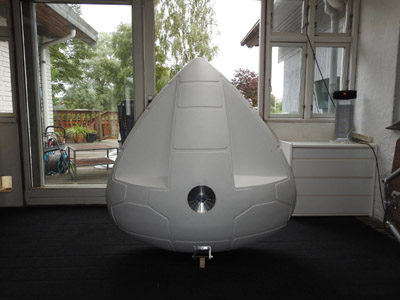 |
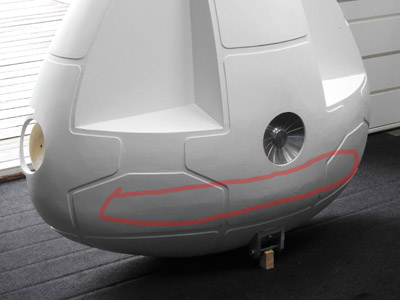 |
|
I'm not sure why I made this setup.
|
Maybe just because it looked good.
|
Until I noticed this fold in the curved surface.
|
|
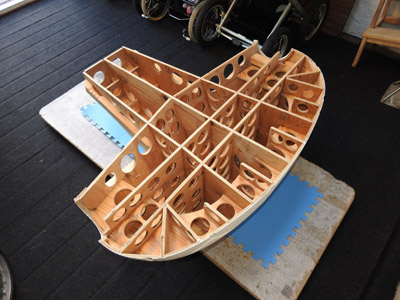 |
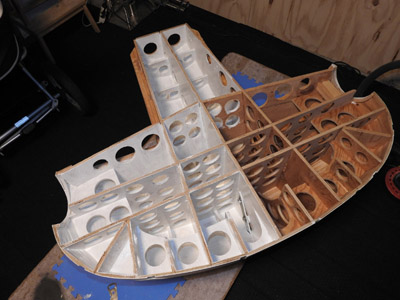 |
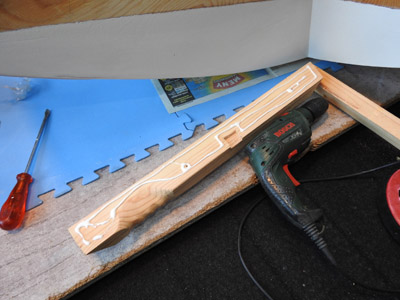 |
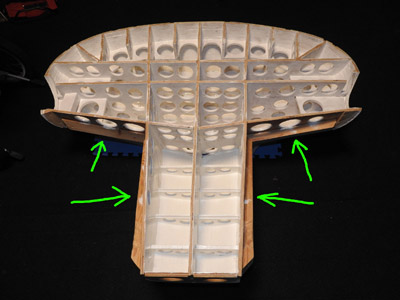 |
|
The lower half of the CM needed the same treatment.
|
Halfway through.
|
Better glue the supporting bars firmly on.
|
Seen here. For the lower (removable) triangular panels.
|
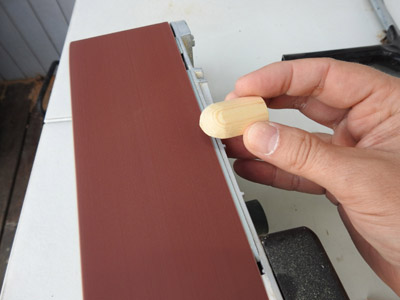 |
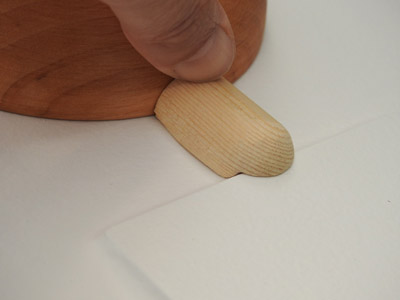 |
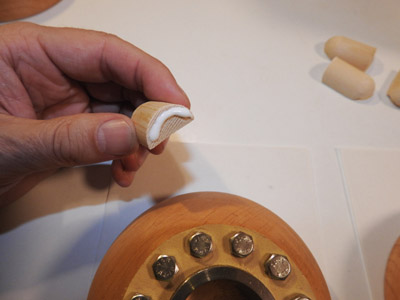 |
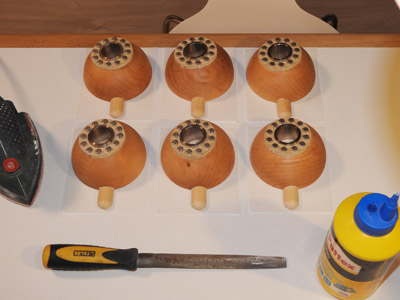 |
|
A little adjustment to the Gemini part #25
|
I want the tip to reach just a bit onto the tile next
to it.
|
Glue added in top for a start.
|
Glued on... and wait until dry.
|
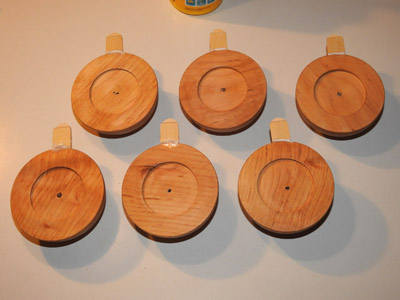 |
|
|
|
|
Then filled up with several layers of glue form beneath.
|
The mailman cam with some Plexiglas.
|
Tinted plexiglas.
|
I think it will look good.
|
|
|
|
|
|
|
But before... I needed to add a
thin batten to the windows section. |
Measured and cut in 22.5 degree.
|
I only need two, but they weren't just long enough.
|
Here loosely in place.
|
|
|
|
|
|
|
The bearing strong rounded batten
needed to be glued on. |
A lot of glue and a lot of pressure.
|
Ready for the Plexiglas that needed to be cut.
|
It reach a bit too high.
|
|
|
|
|
|
|
But now it fits.
|
The thin list also glued on.
|
Supporting screws. While the glue dried...
|
...I decided to prime the Gemini parts meanwhile.
|
|
|
|
|
|
|
Gemini parts #28 and #29.
|
#25
|
First coat... drying in the open.
|
Second coat.
|
|
|
|
|
|
|
When dried...
|
...the under side got a coat also.
|
Even though these will be glued onto the windows section.
|
The end gables needed the details glued on too.
|
|
|
|
|
|
|
I use the indispensable drawings of Chris Trice and
Daniel Prud'Homme for perfect placement.
|
Glue...
|
...and pressure.
|
The tile details in place all glued on.
|
|
|
|
|
|
|
The doors got a back board.
|
Screwed and glued in place.
|
Glue also used in edges as filler.
|
Time to deal with the ugly fold on the top of the
CM.
|
|
|
|
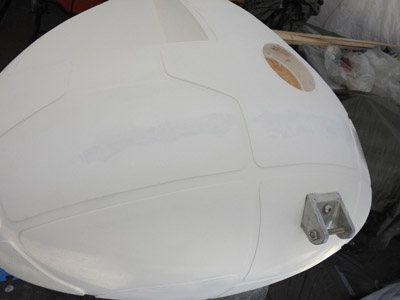 |
|
|
Sanded down and add primer once again.
|
First coat.
|
Second coat.
|
A third coat is needed... but will have to wait.
|
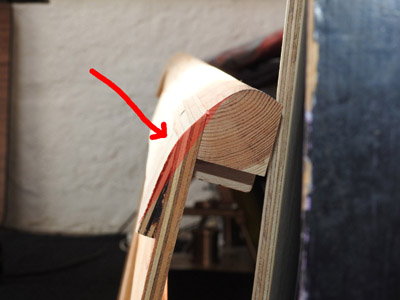 |
|
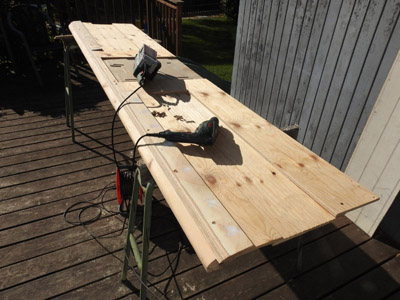 |
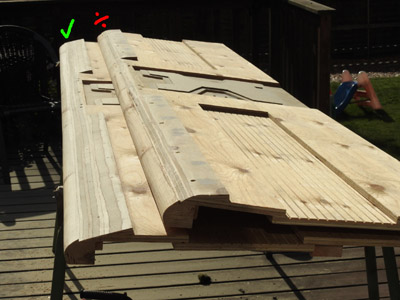 |
|
Another pain in my eyes were
the lower panels of the passenger pod. |
But first it too they had to be glued firmly onto
the sides of the passenger pod. |
And then some serious sanding.
|
First panel done... clearly shows the difference
between right and wrong. |
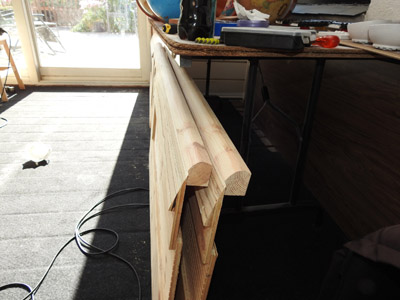 |
|
|
|
|
Both panels made.
|
The grooved panles of the sides also needed
to be glued on. |
To stabilize it all.
|
One side.
|
|
|
|
|
|
|
Second side...
|
...glue...
|
...also works as a seal.
|
Both sides done.
|
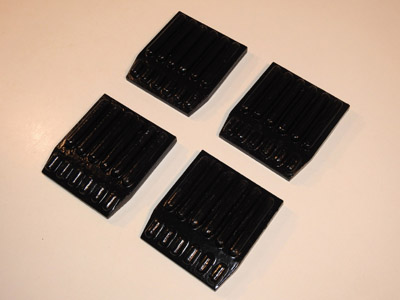 |
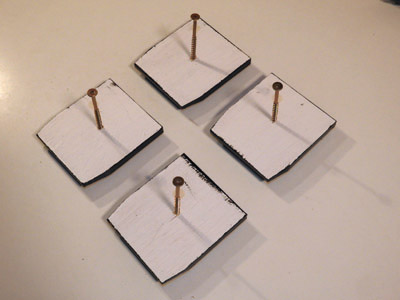 |
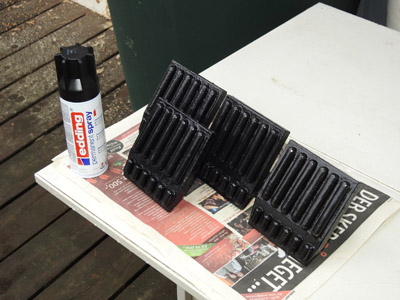 |
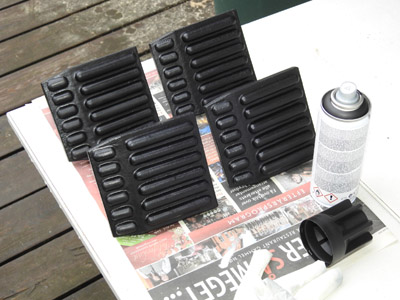 |
|
I painted the Gemini #29 part with semi mat Hammerite,
but it was way too shiny.
|
Preparing spraypaint stands.... screws.
|
Then I add some Edding mat black spray.
|
Which looked much better.
|
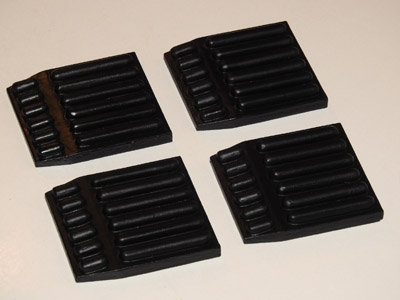 |
|
|
|
|
All done.
|
Back to the sides of the passenger pod.
|
I got an (old) idea, which needed a top batten.
|
Sawn lengthwise in 22.5 degrees.
|
|
|
|
|
|
|
Sawn in length.
|
Marking where to trim the door panel in the heigth.
|
Off came the door panel and on came the top batten.
|
Might as well glue it on right away.
|
|
|
|
|
|
|
Lots of glue.
|
And submerged screws that were filled afterwards.
|
Gluing the details onto the doors panels.
|
Second tile added to the first tile panel.
|
|
|
|
|
|
|
And temporarely lots of small screws
to keep it all in place. |
The other door had a large cam hole to be filled.
|
Once the cam hole were dry and sanded...
|
...same glue treatment.
|
|
|
|
|
|
|
The two sides with now free doors panels.
|
Back to the top list of the windows sections.
|
I had been speculated how to make the list curved.
|
Forth with the belt sander.
|
|
|
|
|
|
|
And then again... in free hand... holding my breath.
|
The result became satisfying.
|
Maybe not 100% partial circular...
|
...but since it wont even be seen, it will do fine......
|
|
|
|
|
|
|
On the lower side of the section the stiffening lath...
|
... gets some glue and then back on with the screws.
|
Something have moved though.
|
So some sanding were needed.
|
|
|
|
|
|
|
Some spackle here and there.
|
The other top side curved.
|
And both top curved sides alligned with the roof board.
|
Here's one inside corner joint assemble.
|
|
|
|
|
|
|
The door panels gets some attention.
|
The passenger pod assembled with the door.
|
On the inside of the door I prepare...
|
...to make room for the door to be able to open.
|
|
|
|
|
|
|
A guide at the bottom.
|
And one at the top.
|
When all is checked to be working fine.
|
The guides get some final glue.
|
|
|
|
|
|
|
Back to the top windows section.
|
The middle lowered board.
|
Also get som final glue.
|
Now the tiles gets glue.
|
|
|
|
|
|
|
Distance cardboard strips in place.
|
To make equal distance between the tiles.
|
Pressure to ensure a tight mount.
|
All tiles in place and glued and also spackle added.
|
|
|
|
|
|
|
It is time for some primer paint.
|
Voila.
|
The doors.
|
Done... drying on our kitchen table.
|
|
|
|
|
|
|
Gables.
|
One coat of primer.
|
Two coats - both gables.
|
Windows sections.
|
|
|
|
|
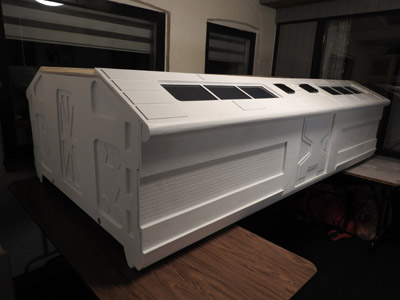 |
|
I have bought four pieces of tinted plexi glas.
|
After the thinner window frams got primed.
|
I assembled it all to see how it looked.
|
The assembled passenger pod primed on the outside.
|
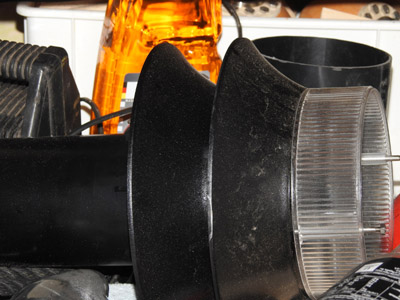 |
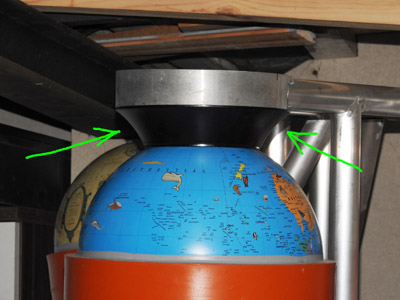 |
|
|
|
Change of scene.
I found new use of the old outdoor lamp. |
These parts will fit almost perfect here on the rear
end of the engine chambers.
|
Here's how it will fit stacked on top of the engine
bells.
|
A slice of flat inbetween are also found on the lamp.
|
|
|
|
|
|
|
It just need to be reduced a bit.
|
I forgot how I cut them this thin, but the endning...
|
...needed to be sanded oblique to fit the curved globe.
|
All four done.
|
|
|
|
|
|
|
Now for the next four globes.
|
Which doesn't need to be taken apart.
|
But the endings need bigger holes.
|
For that I need a 32mm cup drill to matche the pvc
tube.
|
|
|
|
|
|
|
One end was very easy.
|
The other ends varies a bit.
|
And will need different attention.
|
Four globes on a pvc pipe.
|
|
|
|
|
|
|
But also in the side of the globe...
|
...there shall be holes for piping.
|
All four done.
|
A look inside a globe where pipe goes in.
|
|
|
|
|
|
|
A template made of paper to slide onto a pipe end.
|
Then cutting away to make the fish mouth shape.
|
Back into the globe to meet the through pipe.
|
Like this it will support much better.
|
|
|
|
|
|
|
Finding the correct location for this pipe.
|
Two globes mounted at each end.
|
And a simple strip to keep the globe from sliding.
|
Just about there. They shall be place a little behind
the center of the oblong chambers.
|
|
|
|
|
|
|
Another template made.
|
To ensure 100% correct placement of the holes.
|
Tools... drill and thread cutter.
|
Fairly simple but I didn't want any bias.
|
|
|
|
|
|
|
I realised that I first found the wrong thread handle.
|
Here we go...
|
Bolts fits.
|
Small hole for the tread end of the bolt.
|
|
|
|
|
|
|
To have the bolt heads hidden.
|
Larger hole have to be drilled on the opposite side.
|
I grind the sides of the washers.
|
|
|
|
|
|
|
|
Like this.
|
So that they will follow the inside curve of the pipe.
|
To avoid deformity.
|
In place. The holes I can cover up with some white
tape.
|
|
|
|
|
|
|
All eighte globes in place.
|
I noticed that the edges of the ornage bands have
raised.
|
Tools needed.
|
Some orange dusty time later.
|
|
|
|
|
|
|
Looking good again.
|
The end of the belts also have grooves.
|
They will get a load of tec7.
|
Smoothened with my finger.
|
|
|
|
|
|
|
All done ready for some primer paint.
|
I have set up an old party tent on our terrazze.
|
With some handy light for the night.
|
One done.
|
|
|
|
|
|
|
All four oblong globes done.
|
Now for these birds nests...
|
...or Death Stars.
|
All eight back in place. Paint makes a differnce.
|
|
|
|
|
|
|
Instead of looking at the paint dry, I went to paint...
|
...the two boxes for the inside of the cages.
|
The holes in the sides are for
the two transverse bearing beams. |
Back to the engine section. A lot of pipe work ahead.
|
|
|
|
|
|
|
I made my own fish mouth tool.
|
Combined with the 32mm cup drill.
|
Almost perfect.
|
Perfect enough.
|
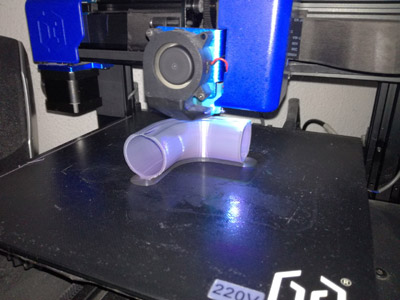 |
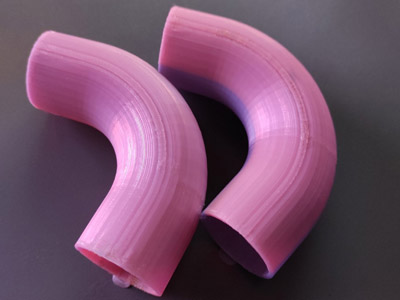 |
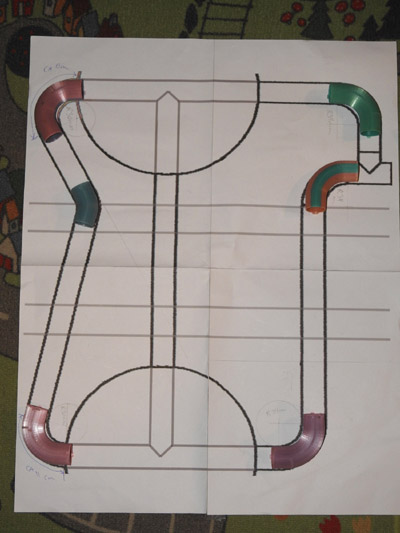 |
|
|
My good friend Mikael Merlit 3D printed a LOT of bends
|
Like these
|
For the piping system in the enigne section.
|
Combine with all the fish mouth pipes.
|
|
|
|
|
|
|
It turned out to be quite accurate to the drawing.
|
The pipes and bends connects via short wooden sticks.
|
Left side of the engine section complete.
|
The right hand side is a bit more complicated.
|
|
|
|
|
|
|
Some sticks needs special endings.
|
To fit places like shown here.
|
And this one goes...
|
...here.
|
|
|
|
|
|
|
Hole drilled for e screw.
|
To keep the roundstick in place from the inside.
|
Two sticks in place.
|
Pipe and bend shaped as the sticks to fit.
|
|
|
|
|
|
|
More piping
|
and more...
|
Two short pipes.
|
To keep this pipe in place.
|
|
|
|
|
|
|
Howeve the bend doesn't look 100% correct.
|
A little bit of adjustment on the stick and straight
pipe.
|
Did the trick.
|
|
|
|
|
|
|
|
Another pipe likewise.
|
Beginning to look pipe busy.
|
Marking for another special wooden stick.
|
|
|
|
|
|
|
|
Here it is.
|
But I can't get on the inside of the oblong globes.
|
Si I have to rely on a screw and glue from the outside.
|
Trying to make a pipe connect.
|
|
|
|
|
|
|
Another bend to make a better match.
|
More pipes.......
|
||
|
|
|
|
|
|
I felt a sudden urge.
|
I made to quick sticks.
|
||
|
|
|
|
|
|
To mount the vertical boosters.
|
To see the 'towering' rear end of the Eagle.
|
Change of scene...: FEET
|
Feet for beneath the passenger pod.
|
|
|
|
|
|
|
Sticks, boards and odd shapes.
|
Makes nice feet.
|
Screws inserted from below.
|
To catch the overside piece.
|
|
|
|
|
|
|
Upper side done.
|
Better add some glue before I occupy the underside.
|
And some more glue to seal the edge.
|
Then the 'toes'
|
|
|
|
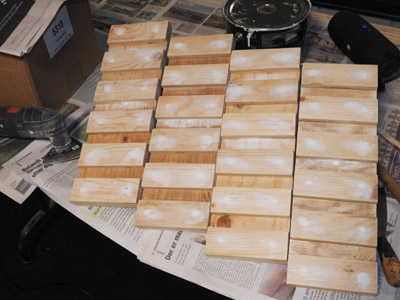 |
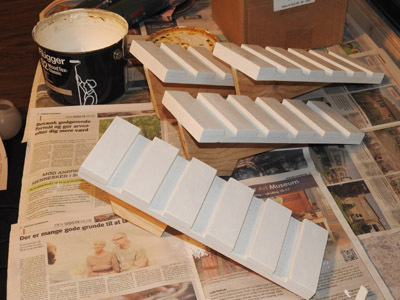 |
|
All roughly done.
|
Some sanding on the edge all over.
|
And finally spackle away the screw heads.
|
Primer paint.
|
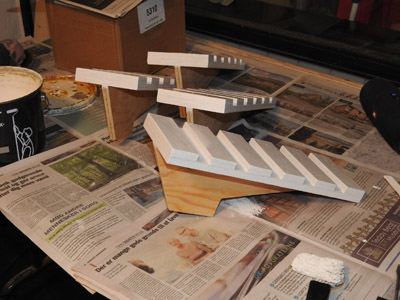 |
|
|
|
|
Bottom side set to dry...
|
...before I did the upper side.
|
Various painted parts - and an old trailer bottom
board.
|
I wanted some tiles from the trailer board.
It was so worn that it better be useful on the Eagle. |
|
|
|
|
|
|
Four tiles cut and smoothened.
|
Now a large hole in the middle.
|
Made with a large cup drill.
|
Like that.
|
|
|
|
|
|
|
It will fit as a 'spacer' for the landing gear,
which I found a bit too far up and hidden a little away. |
Here placed on top of the lower cross board
for the bottom of theleg pod. |
And the landig gear on top. Upside down of course.
|
Now the time had come to open up the remaining
three arms / elbow joints for the landing gear. |
|
|
|
|
|
|
To allow the landing foot to be lifted up higher.
|
Now I suddenly jump to make some more arms.
|
This time for the feet below the passenger pod.
|
Marking up for round ending.
|
|
|
|
|
|
|
Slicing up the ends on my table saw.
|
Roughly like this.
|
I missed some photos, but here are they done.
|
And this is where they go.
The metal tube is from an old table. |
|
|
|
|
|
|
Now it is time for putting on some primer paint
for the landing gear. |
Outside in the sun.
|
Sunset...
|
I took it inside to dry.
|
|
|
|
|
|
|
While the sun had set I went ahead masking up...
|
These triangular faces shall be matte black.
|
While the 'windows' shall be painted smooth black.
|
The below side.
|
|
|
|
|
|
|
While I am at it, I mask up some more...
|
...here on the leg pods.
|
Also matte black here.
|
It took some time to mask out these faces.
|
|
|
|
|
|
|
Three...
|
...and the fourth. Now for theis white bottom cross
plate.
|
Also matte black... one coat,
|
The second coat did the trick.
|
|
|
|
|
|
|
The removable triangular boards for the CM...
|
...had taking som moisture.
|
I had to sand it all down and repaint it.
|
Several coats. to secure the surface.
|
|
|
|
|
|
|
Bottom vertical thrusters for the passenger pod.
|
Same recipe as before.....
|
||
|
|
|
|
|
|
Trailer tiles also cut into round shape bit by bit.
|
Rough
|
Smoothened a bit.
|
|
|
|
|
|
|
|
|
|
|
|
|
All parts screwed together and sealed with filler
glue.
|
They are a bit too small, because I made a
calculation mistake. |
This sliding board have waited a long time to be mounted.
The shall make it easier to slide the leg pod onto the transverse bearing beams. |
Pressure on as usual.
|
|
|
|
|
|
|
I have a closer look at the window faces of the CM.
|
I try to put on some glue to make the surface smooth.
|
It looks smooth... lets see when it dries up.
|
I made a custom sticker on paper.
|
|
|
|
|
|
|
A closer look at the CM
|
Maybe the black is too close to the edge!?
I can correct that later when the finish paint will be added. |
I did only cut a few rings of the drain tubes.
|
Now I have to cut the rest.
|
|
|
|
|
|
|
Cut and adjust them to the insert of the main engine
bells.
|
Filler glue.
|
On the inside and outside.
|
|
|
|
|
|
|
|
The rings are a bit too thin overall.
|
These are the board-bolts of the Saturn V parts
from the leg pods. |
Some years ago... really!
I made additional thread on the bolts, but it wasn't good. |
Instead I now cut them short...
|
|
|
|
|
|
|
...and glue washers...
|
...and bolts in place instead of nuts on the inside.
|
The Gemini parts will be mounted from the inside.
|
They have to be removable. Otherwise I cannot get
the
leg pods through the door openings of our house. |
|
|
|
|
|
|
FRONT LEFT
|
REAR LEFT
|
FRONT RIGHT
|
REAR RIGHT
|
|
|
|
|
|
|
The black thing is the end plug of the metal tubes
used for the leg for the passenger pod. I missed one for a reason, but found it. Here I have mounted the plugs to the connector joint for the feet. |
Here it is all assembled.
|
This is the very heavy main legs for the Eagle.
The whole weight of the Eagle are resting on the four of those. It is stainless steel and I could't drill a simple hole in them. So I had to pay a visit to Kurt's machinery. |
The landing gear are not hanging in the leg pods.
They are simply too heavy. So instead they are fixed to the heavy duty legs, with split through the both of them. |
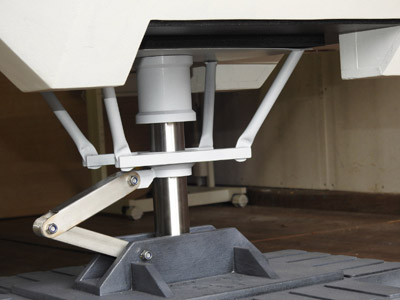 |
|
|
|
|
This will be the main standing height.
If you want it lowered, you lift the wooden foot up from the solid foot beneath it, making it look lowered. |
A couple of days later Kurt made these fancy splits.
|
Comparede to the temporarely simple ones.
|
Here it is fitted nicely.
|
|
|
|
|
|
|
Getting ready for painting the vertical booster bells
on the passenger pod. |
Primer and silver spray.
|
A black coat on the inside.
Looks shiny, but it is because it hasn't dried up. |
Final result... for now.
|
|
|
|
|
|
|
Preparing two shelves for the legs on the passenger
pod.
|
Small hole drilled.
|
Then the larger hole.
|
Inserted a pvc tube for the steel leg to glide in.
|
|
|
|
|
|
|
Screews...
|
...to keep the foot and leg in place.
|
They are made to be workable.
|
Here placed under the passenger pod.
|
|
|
|
|
|
|
The upper joints of the main leg arms looks just a
bit off.
A bit too thin. |
To adjust the look I try to add a simple piece of
board.
|
Making it look like this.
|
All parts ready for some paint.
|
|
|
|
|
|
|
Primer.
|
Hanging to dry.
|
It turned out that the 3D filament isn't for outside
use.
|
But thanks to Eagle specialist Chris Trice I got the
advise to add metal paint on the parts to protect it from the UV light
from the sun.
|
|
|
|
|
|
|
Passenger pod feet painted.
|
Arms for the legs and feet ready for paint.
|
Painted.
|
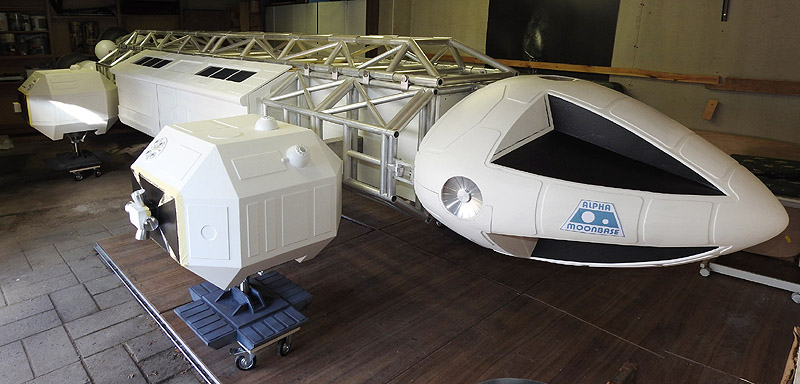 |
|
This is the third assemble of the Eagle, now with
a lot of (primer) painted parts.
|
|
|
|
|
|
|
I've bought matte and shiny vinyl sticker sheets.
|
The shiny ones of course for the windows.
|
Template production.
|
Final size.
|
|
|
|
|
|
|
Here both the main body vertical thruster bells and
the passenger pod vertical bells are in place.
|
The landing gear dismantled for sealing and final
paint.
|
The very handy filler pistol.
The manual filler pistol were killing my arm. |
All cracks sealed.
|
|
|
|
|
|
|
And this circular crack too...
|
...done.
|
Placing some news paper to avoid paint on the inside.
|
Finish coat of paint.
|
|
|
|
|
|
|
The small wooden inclined discs.
|
So far only four had center holes, but now the rest.
|
There.
|
And all sixteen on a tent peg ready for some silver
spray.
|
|
|
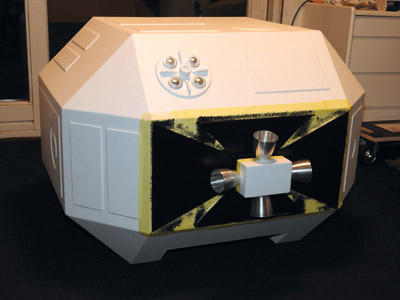 |
|
|
|
Done.
|
These discs gives the small direction thrusters
their 78 degree angle. |
Arm joints for the landing gear final painted.
|
Here it can be seen the upper arm is now a bit thicker.
|
|
|
|
|
|
|
Now for the final assemble of the piping
for the engine section. |
Lots of bits and pieces.
|
careful assemble. Pvc pipe, 3D printed bends,
wooden connector sticks and some glue filler. |
Plastic coated and spray painted.
|
|
|
|
|
|
|
The simple left hand side (top)
|
Left hand side (bottom)
|
The pieces for the right side gets equal attention.
|
Mounted. Right side (top)
|
|
|
|
|
|
|
Right side (bottom).
|
Top front.
|
I considered to cheat from adding the second, more
inner batten of the bottom of the passenger pod. But only for a short moment. |
After making some drawings, I began sawing.
|
|
|
|
|
|
|
First a thin 'list' forming the last part of the outer
batten.
|
The inner batten will have to made out of two parts.
|
My table saw isn't too happy about deep cuts.
|
So I have to do it from two sides.
|
|
|
|
|
|
|
Here the two parts held together.
|
One batten sanded fairly smooth.
|
Second batten... rough.
|
All four parts sanded smooth.
|
|
|
|
|
|
|
Glued and screewed together...
|
Wooden filler - and they look almost like one piece.
|
Test fitting.
|
Seen from the outside.
|
|
|
|
|
|
|
From the inside.
These battens also works as a wider shelve for the transverse leg and vertical booster shelves. |
Off again with the battens - for some primer painting.
|
Now the inserts of the main engine bells
shall have some paint. |
First some primer paint...
|
|
|
|
|
|
|
...then a anthracite gray.
|
And inserted.
|
Battens got a second coat of primer paint.
|
And then mounted with large long screws.
|
|
|
|
|
|
|
The screws are placed so that they can be hid later.
|
Seen from the outside.
(How could I even consider not adding this?) |
The passenger pods vertical blasters mounted with
a distances block.
|
The distance block has the same thickness
as the 32 mm pvc pipe. |
|
|
|
|
|
|
Here in place under the passenger pod.
|
Now for some more pvc piping.
A lot of marking... |
...for drilling holes...
|
...for screws.
|
|
|
|
|
|
|
Wooden round sticks are used to prolonge
two of the pipes. |
Here's the prolonging.
|
The pvc pipe now hides the screws on the inner battens.
And the screws in the pvc pipe are also placed strategic. |
|
|
|
|
|
|
|
Namely to be hidden by the transverse pvc pipes.
|
No screws seen here.
|
Because of lack of time I did not manage to make more
piping before the big display at Randers Sci-Fi Con.
|
Suddenly there were more important things to finish.
The Gemini #28 and #29 parts finally mounted. |
|
|
|
|
|
|
The feet of the passenger pod finish gray.
|
Time to assemble it all.
|
Painted and assembled.
|
I had to redo the shelf for the legs and feet.
|
|
|
|
|
|
|
They were too wobbly and fell apart too easily.
|
Now... a new plan!
|
I couldn't rely on the glue alone either,
so I add a strip to hold the two parts all together. |
Upside and downside.
|
|
|
|
|
|
|
The some extra enforcement to stabilize.
|
Unfortunately, the new short pvc plumbing pipes
that I bought were just a little too narrow, but I couldn't find the optimal size regardless. |
i spent a considerable amount of time expanding the
plumbing pipes with a cup drill.
|
Still they slided way too tight, so I had to give
up
on making them movable for the display. |
|
|
|
|
|
|
Here both bells and feet shelves are in place.
|
Four more important things that I wanted to have
ready for the display.... four more shelves. |
In a hurry I grabbed all that I could find of use...
the kids drinking bottles, empty glue bottles, tubes, flex-tubes...
|
...bottles, drinking cups... even bottle caps.
Luckily I had bought some large polystyrene foam spheres and also some smaller plastic spheres. |
|
|
|
|
|
|
All hastily put together to simulate the four
side shelves inside the aluminum cages. |
Since the polystyrene spheres are difficult to paint
and were already white, I chose to cover them up instead of painting
them.
|
Here the four are lined up.
|
I had to disasseble the passenger pod to
test fit them in the cages. |
|
|
|
|
|
|
REAR LEFT
|
REAR RIGHT
|
FRONT RIGHT
|
REAR LEFT ...ehm again
Somehow I failed to take a photo of the front left shelf. |
|
|
|
|
|
|
Door handle details painted by hand.
|
Cutting vinyl stickers for the CM windows.
|
The black triangular panels of the lower side of the
Command Module were all black, meaning they were black to close to the
edge of the face.
|
Masking tape and some white paint to correct.
|
|
|
|
|
|
|
The time had come. Starting to pack up Kurts van
with all the wooden parts. Unfortunately it was rainy weather. |
It was night before we were finally done... the van
was stuffed. We even had to pack up the long sides and roof of the passenger
pod on the small truck.
|
Late night... time to get some sleep.
|
Early morning... ready to go!
|
|
|
|
|
|
|
We landed problem free at Randers Arena.
|
The assembled Command Module is a heavy baby
to give birth to from the van. |
All the parts unloaded and ready to be assembled.
|
Spine mounted on the cages.
|
|
|
|
|
|
|
Lifted onto the saw horses.
Inside box added and the the transverse beams. |
Leg pods slided onto the beams.
|
Legs and landing gear added.
|
Engine frame.
|
|
|
|
|
|
|
Engine frame parts.
|
Commenad Module.
|
Passenger Pod... no doors.
|
|
|
|
|
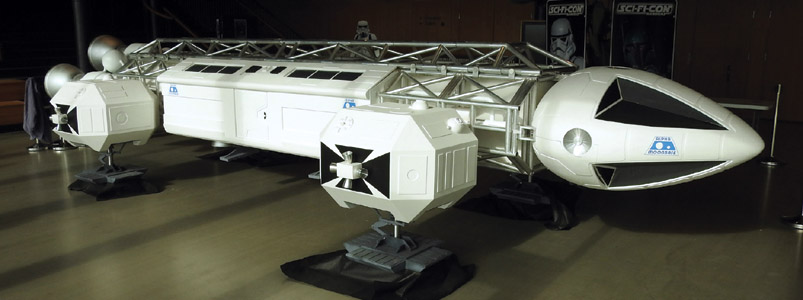 |
|
|
Passenger Pod... now with doors.
|
Finally the windows stickers.
|
Almost there! The main vertical thruster bells still
missing.
|
|
|
|
|
|
|
|
A hasty solution to add the mainly tank parts to the
body boxes were simply to print them (with the permission of Chris Trice) FRONT RIGHT |
REAR RIGHT
|
REAR LEFT
|
FRONT LEFT
|
|
|
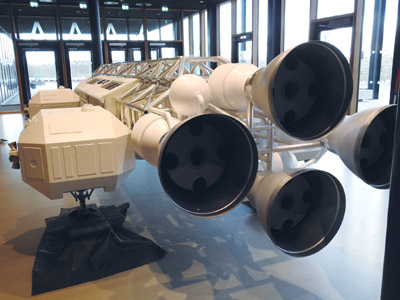 |
|
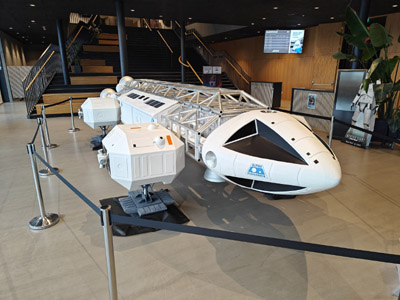 |
|
Complete without stickers.
|
Rear end view.
|
Moonbase Alpha stickers on passenger pod.
|
And additional stickers.
|
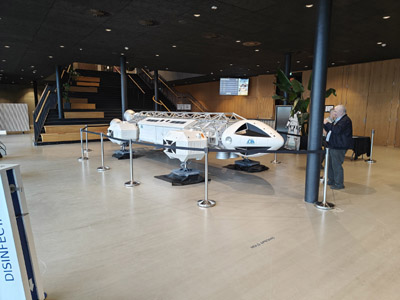 |
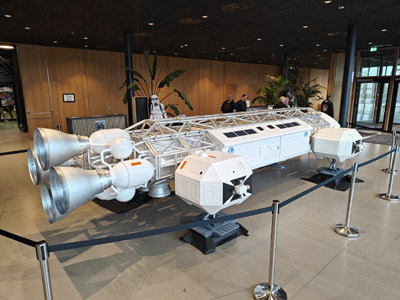 |
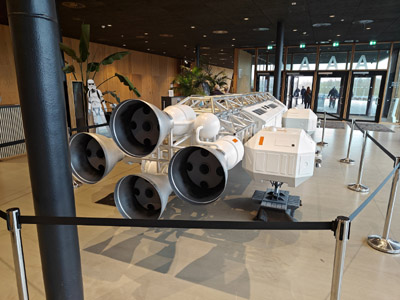 |
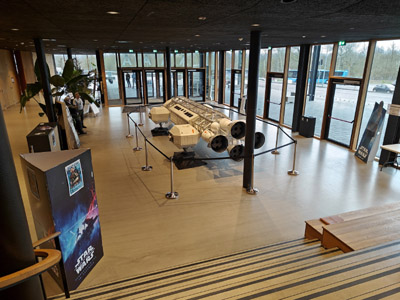 |
|
The display room... the entry hall... the perfect
spot.
|
|||
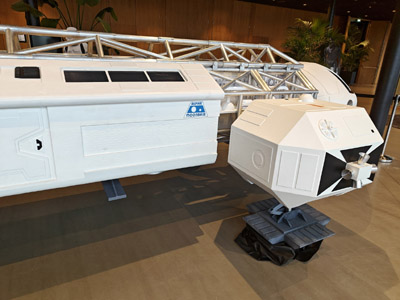 |
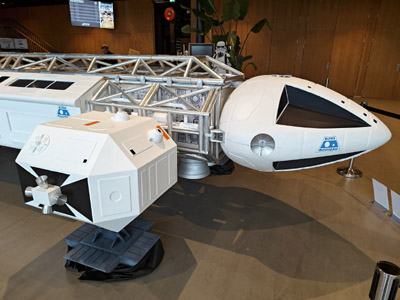 |
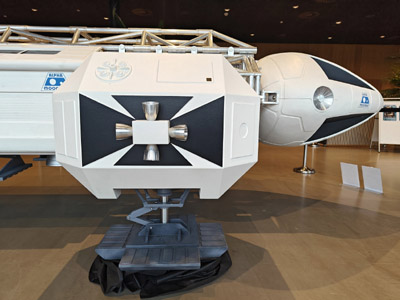 |
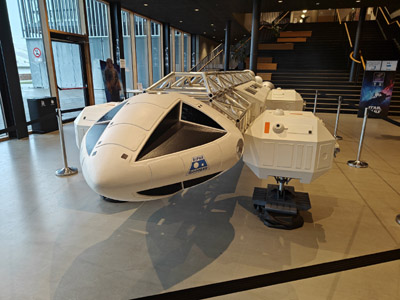 |
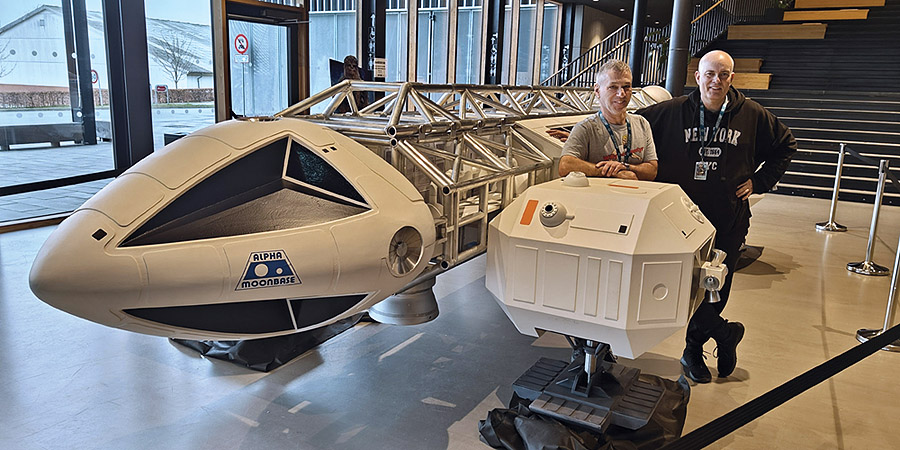 |
|
Lars Skovmand my regular helper and I
|
In April 2023 the Eagle was displayed at the Sci-Fi-Con Randers convention.
It had only got simple primer paint at that time. The aluminium tubes were still unpainted.
In June 2024 I was finally finished with all the paintwork.
Here it is at display on a stage at Invero Light and Sound.
On April 12+13 2025 it will once again be at display at the Sci-Fi-Con Randers.

Contact
To all my other stuff